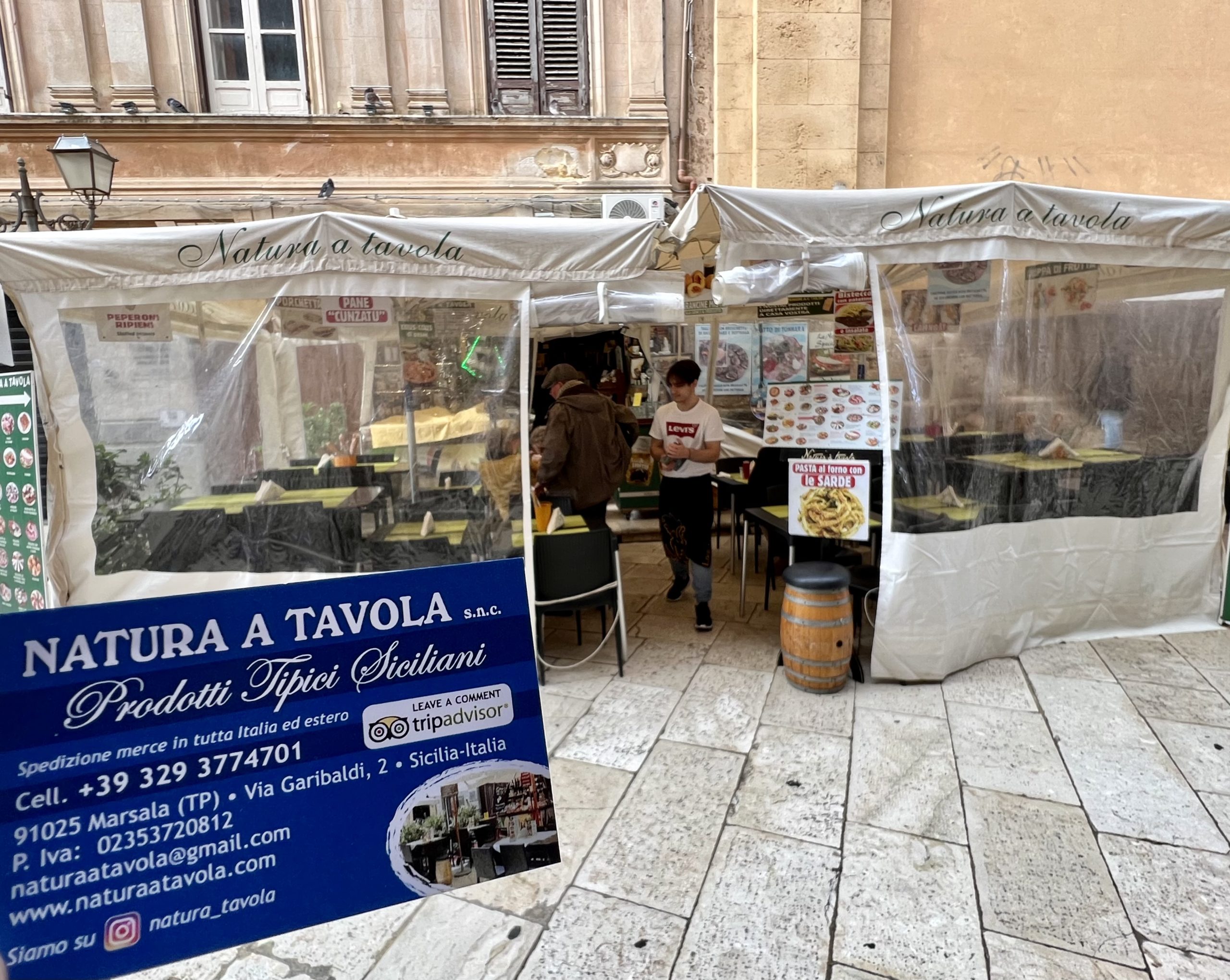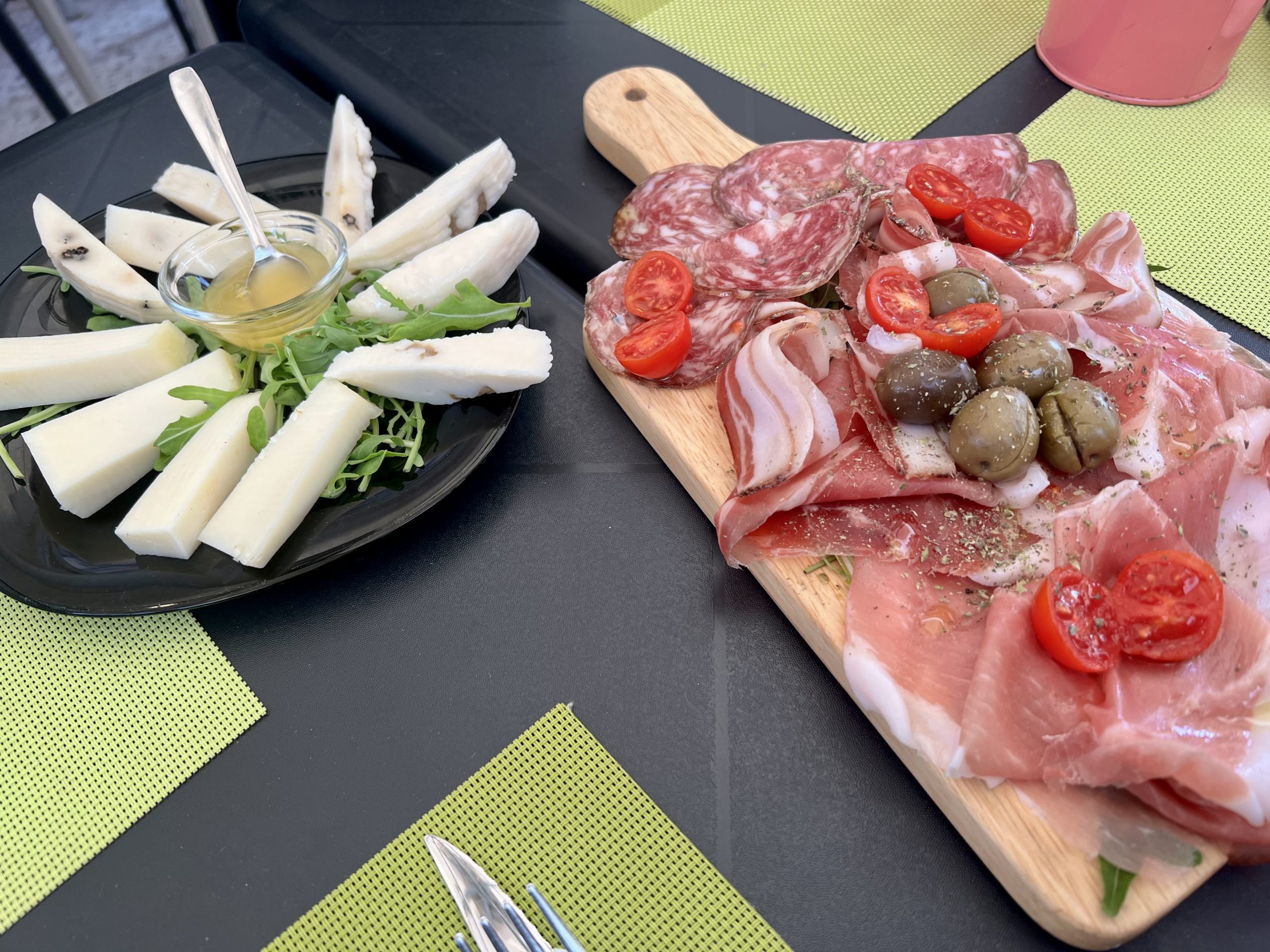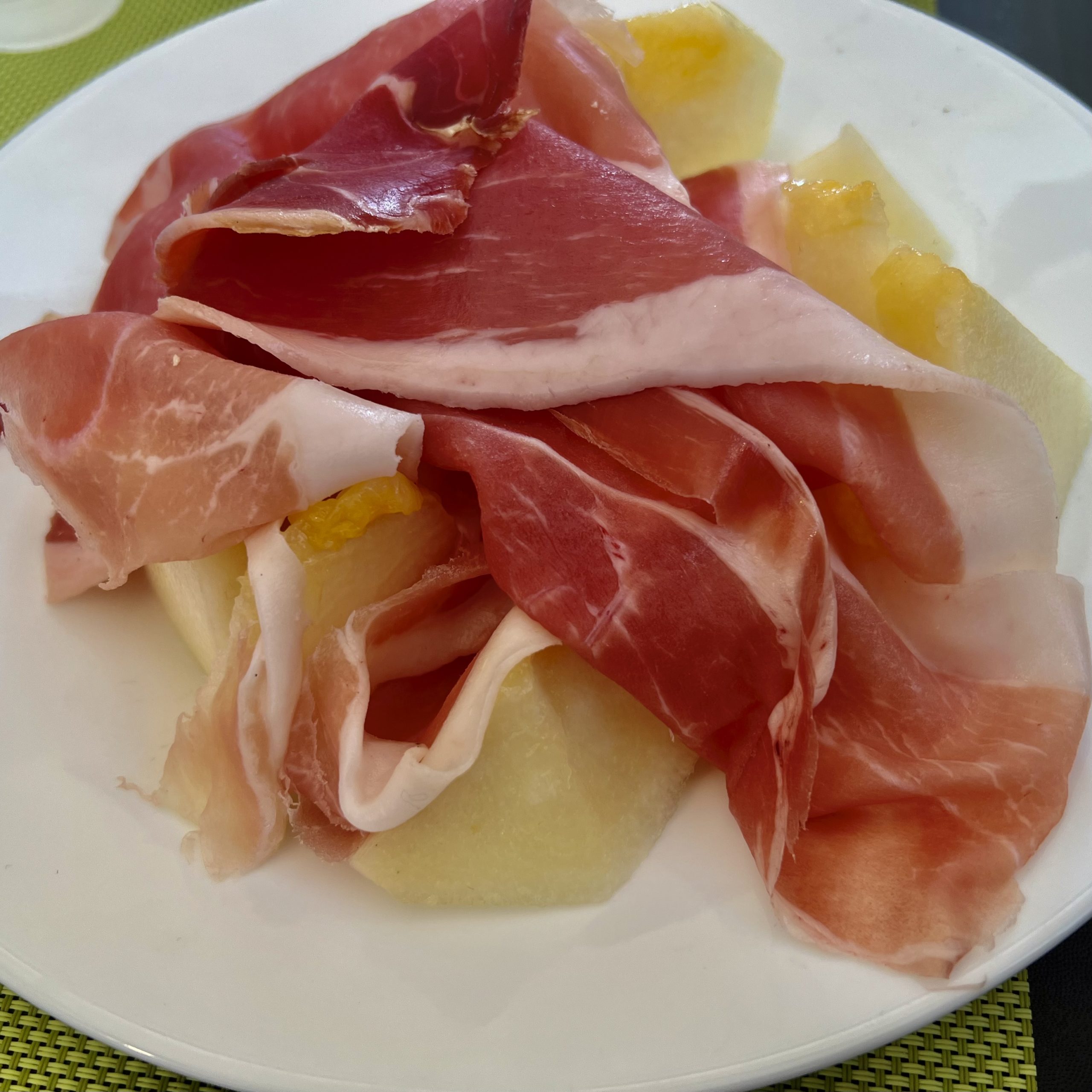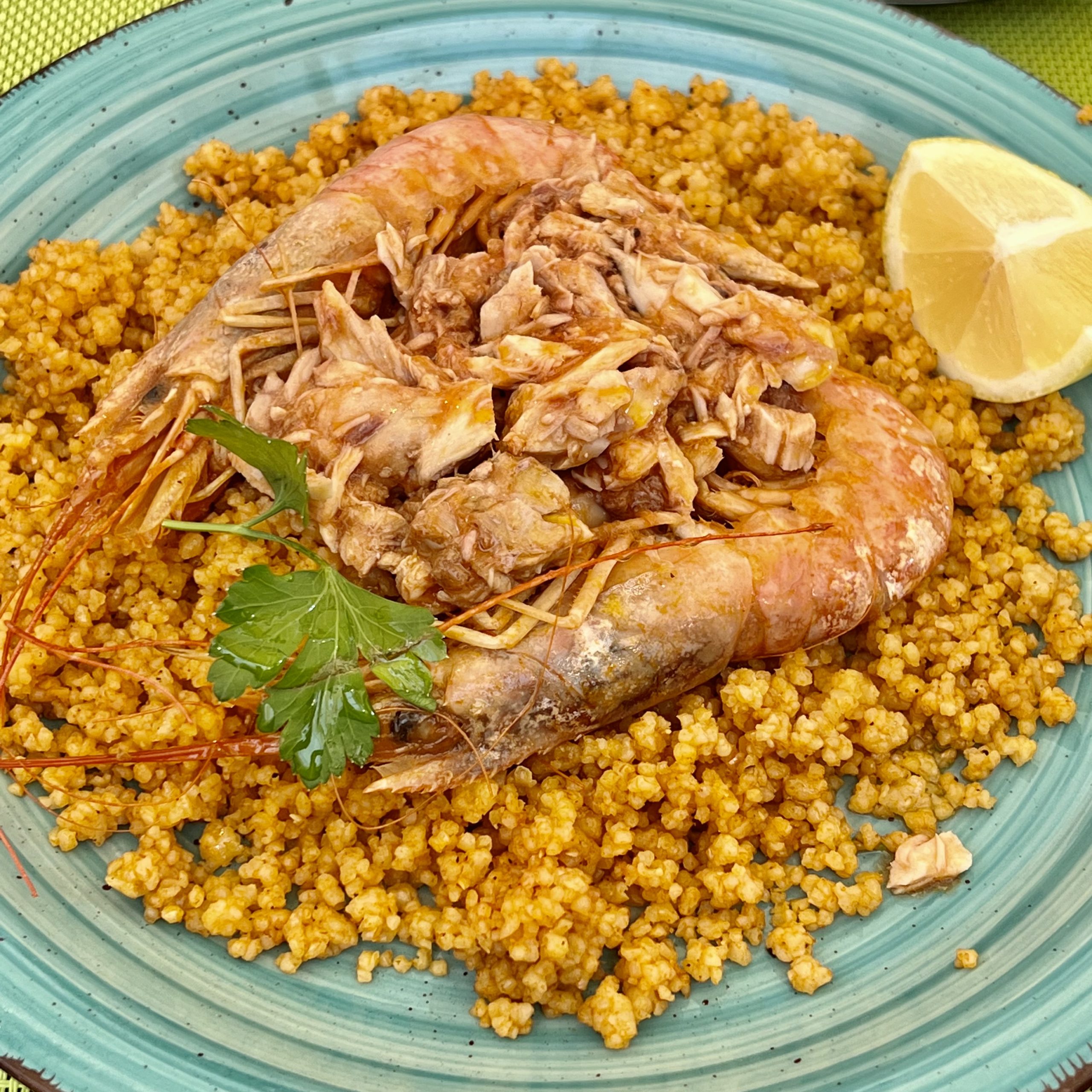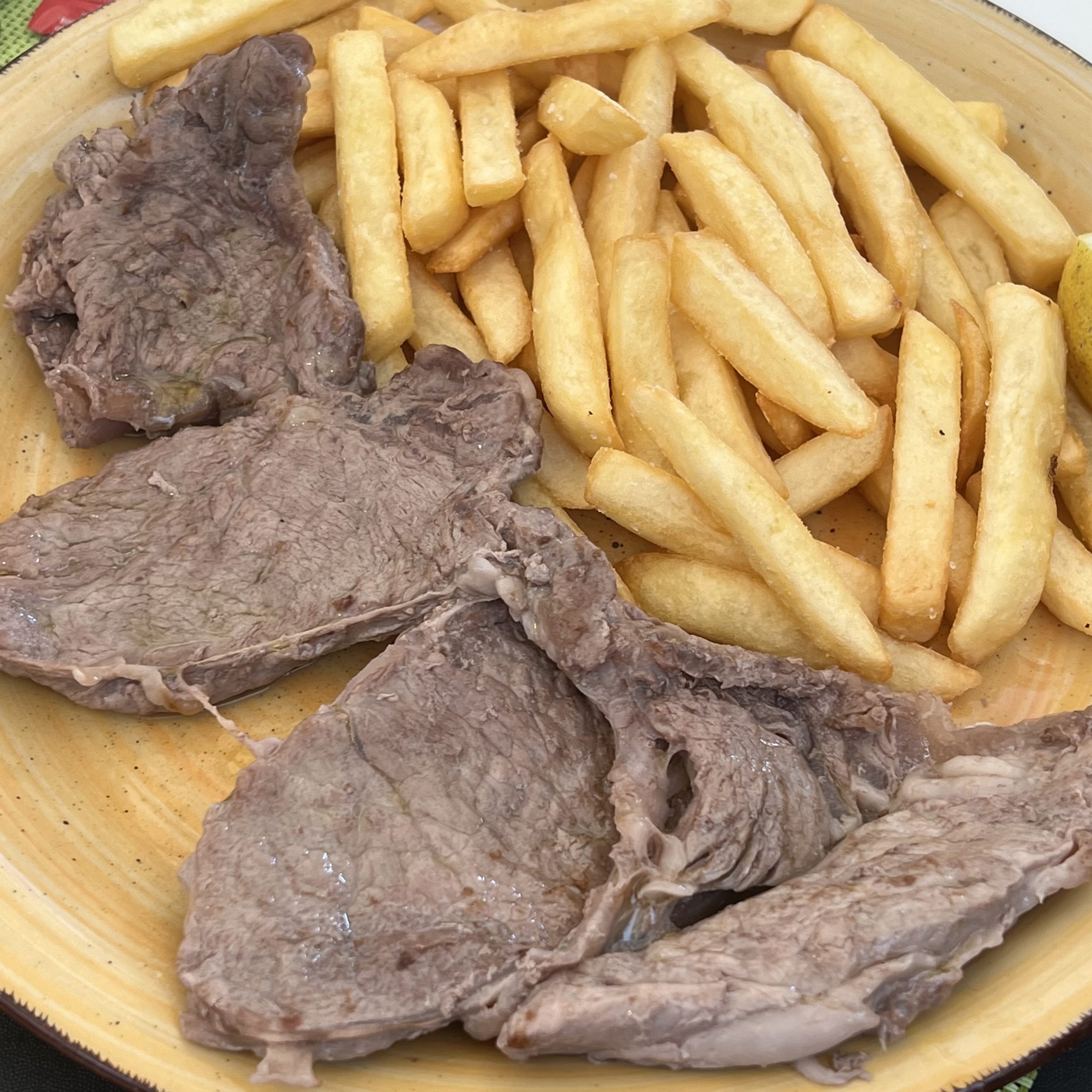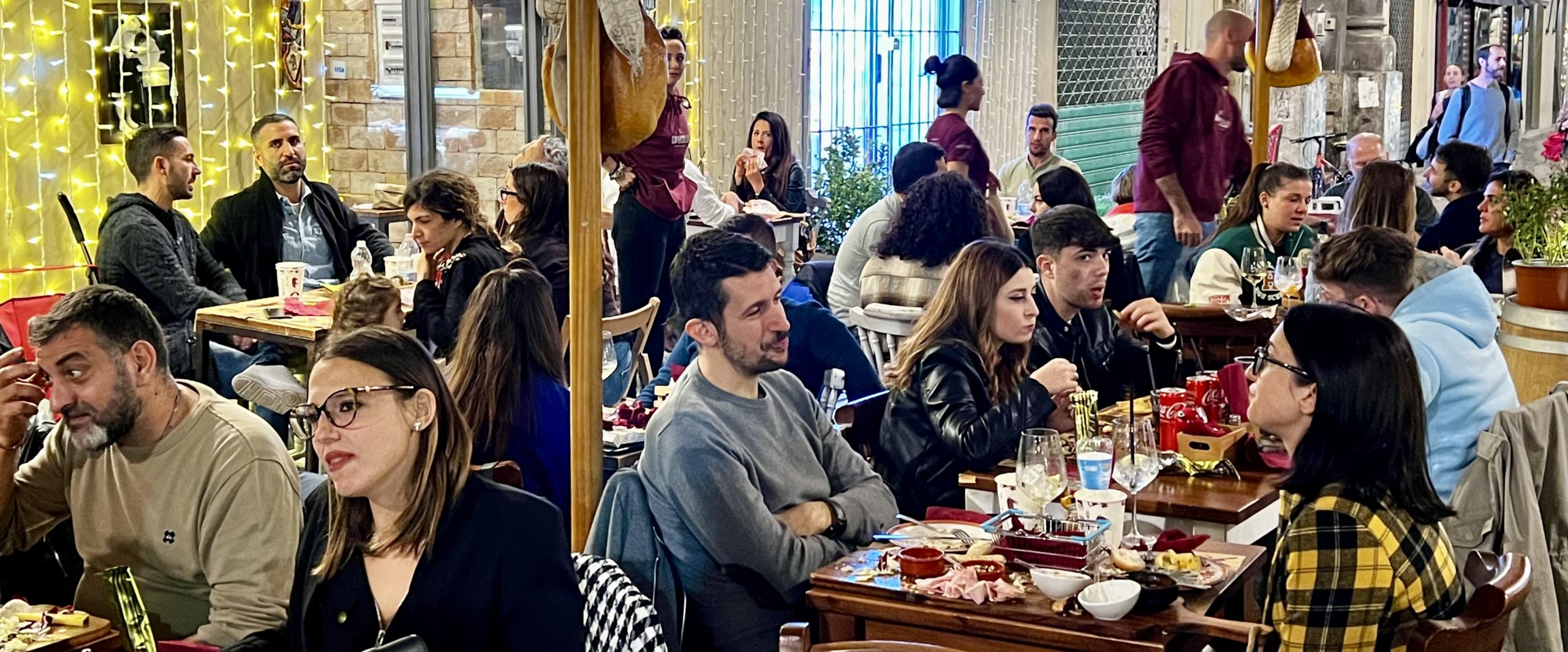18-23 November 2022
Since we were here in 2019, we are amazed to see how much the pedestrian zones have taken off. They are more extensive and still full of people in mid November, tourists and locals. Others pop up as pedestrian islands, unconnected to the rest. But they are all near the Quattro Canti, the four corners, the historic center of the city. Three years ago, the main pedestrian street that radiated from this intersection was closed to traffic from early evening to the late hours. Now, it is closed 24/7. Three years ago, the street had a smattering of tables, mostly catering to those who wanted a snack and a drink. Now, restaurants line both sides of the street. Barkers wearing brightly colored t-shirts with logos of their eatery beckon us to sit down and eat. Each restaurant or bar blares its own selection of music. Walking down the street is like changing radio stations.
Not much else has been done to the street. Same lights, same curbs. Robert expects that some urban designer is working on a redesign right now. On weekends, the big crowds equate to the record numbers we saw in Barcelona and Madrid. But in Spain, crowds permeate entire downtown neighborhoods. Not here, yet.
Our pal Domenico pointed out that much of Palermo was bombed in WWII, especially near the port. So for nearly eighty years this area in the central city was abandoned. Walking around the city today, we see remnants of buildings that have not been restored since the bombings in the early 1940s. This is partially because the Mafia controlled Palermo for several decades, preventing construction in the historic area and redirecting it to the west, near the area where we had an apartment. A massive number of high-rise apartments were built quickly. Domenico and Laura live in one. The benefit is that the historic area is still intact because it was not bulldozed for new development.
Richard observed the new wave of renovation of historic buildings. Some completed, others in process. Some becoming luxury hotels. Many benefitting from generous federal government subsidies for renovation of old buildings. It seems the tide is turning quickly for historic Palermo. We expect that many shattered buildings in the city center will be reborn in this upswing. The unemployment rate in Palermo is nineteen percent, twice the national average, but all this construction and the increasing tourism should help. But, of course, such benefits have pros and cons.
Strolling
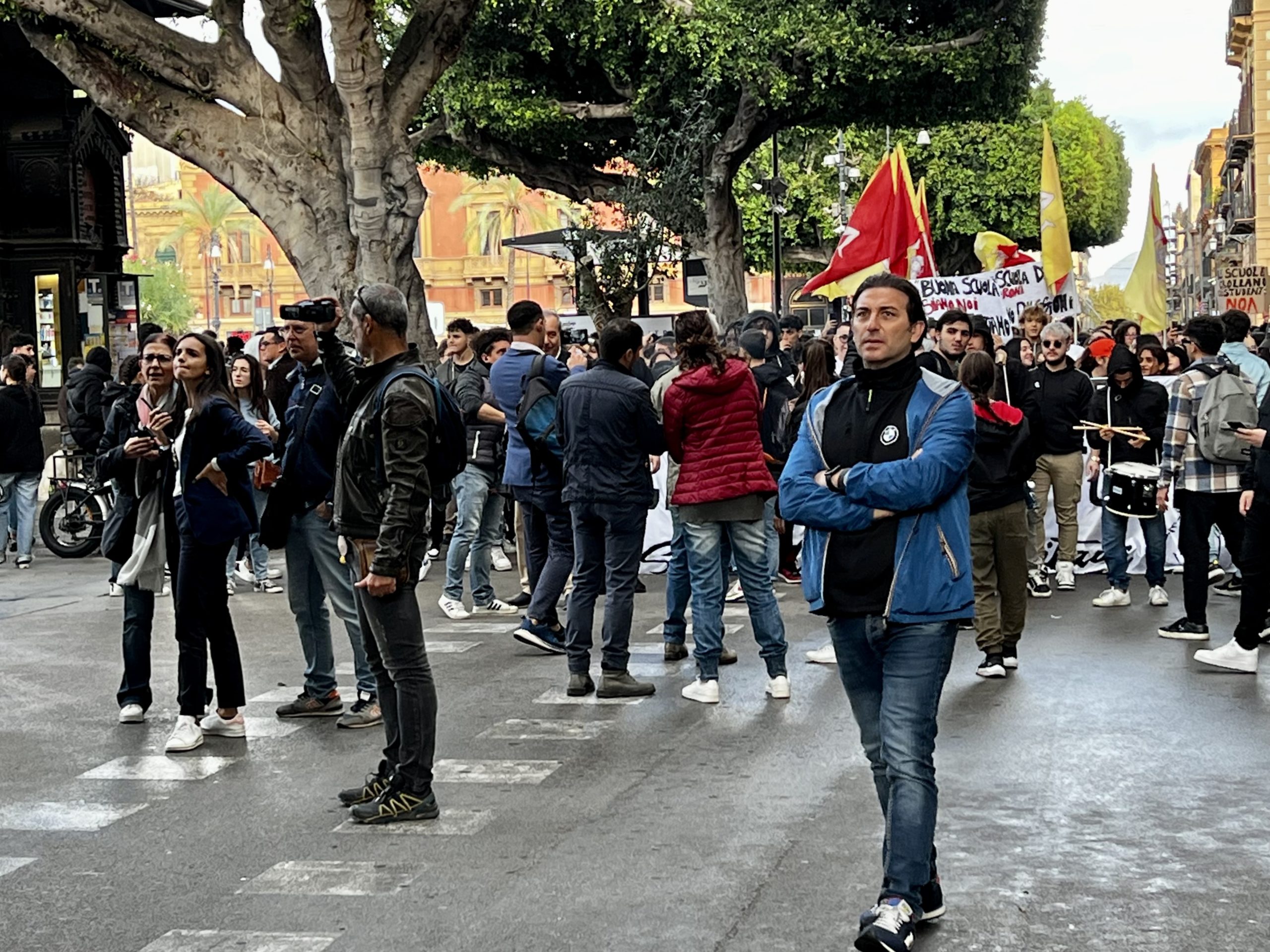
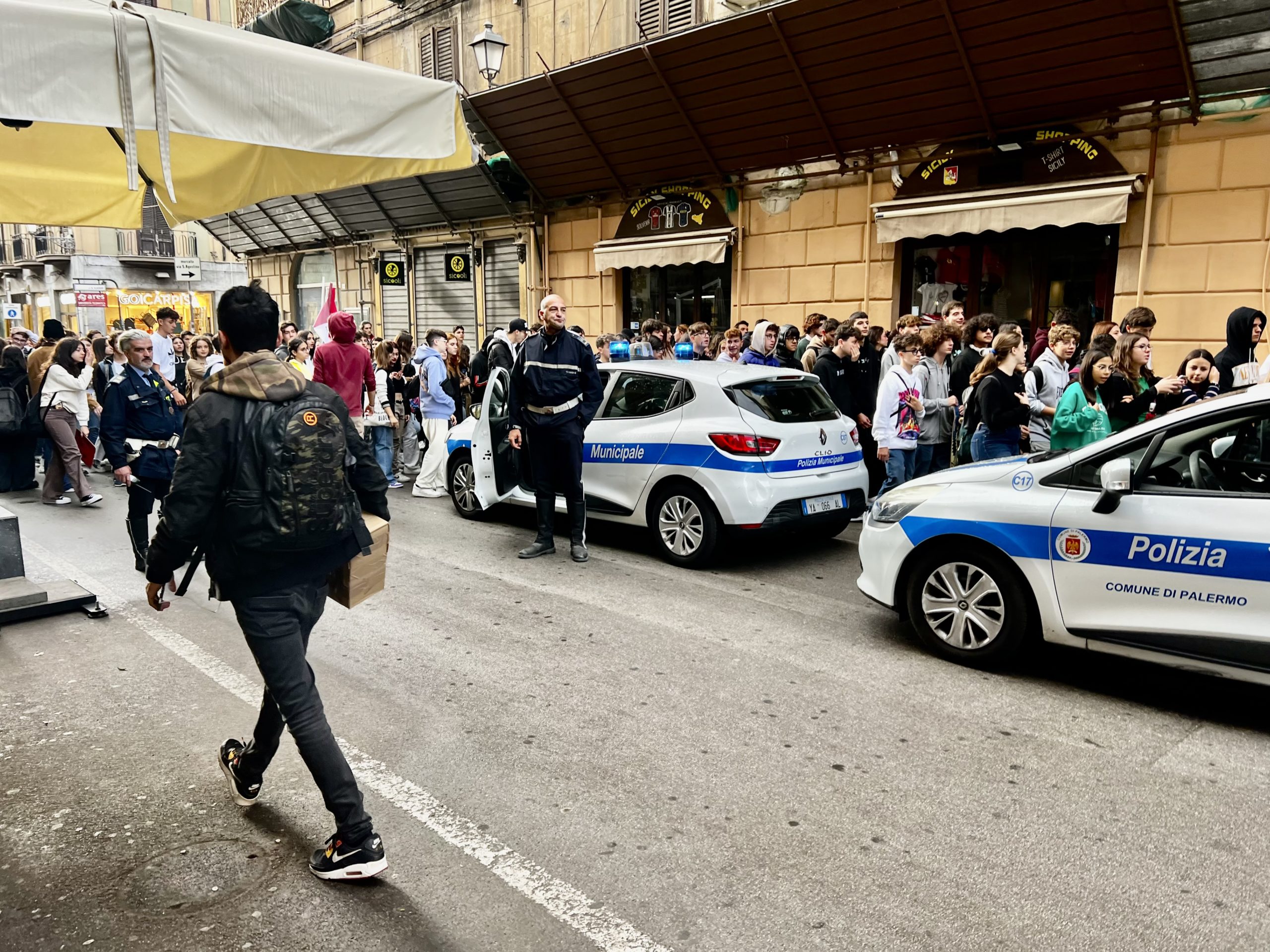

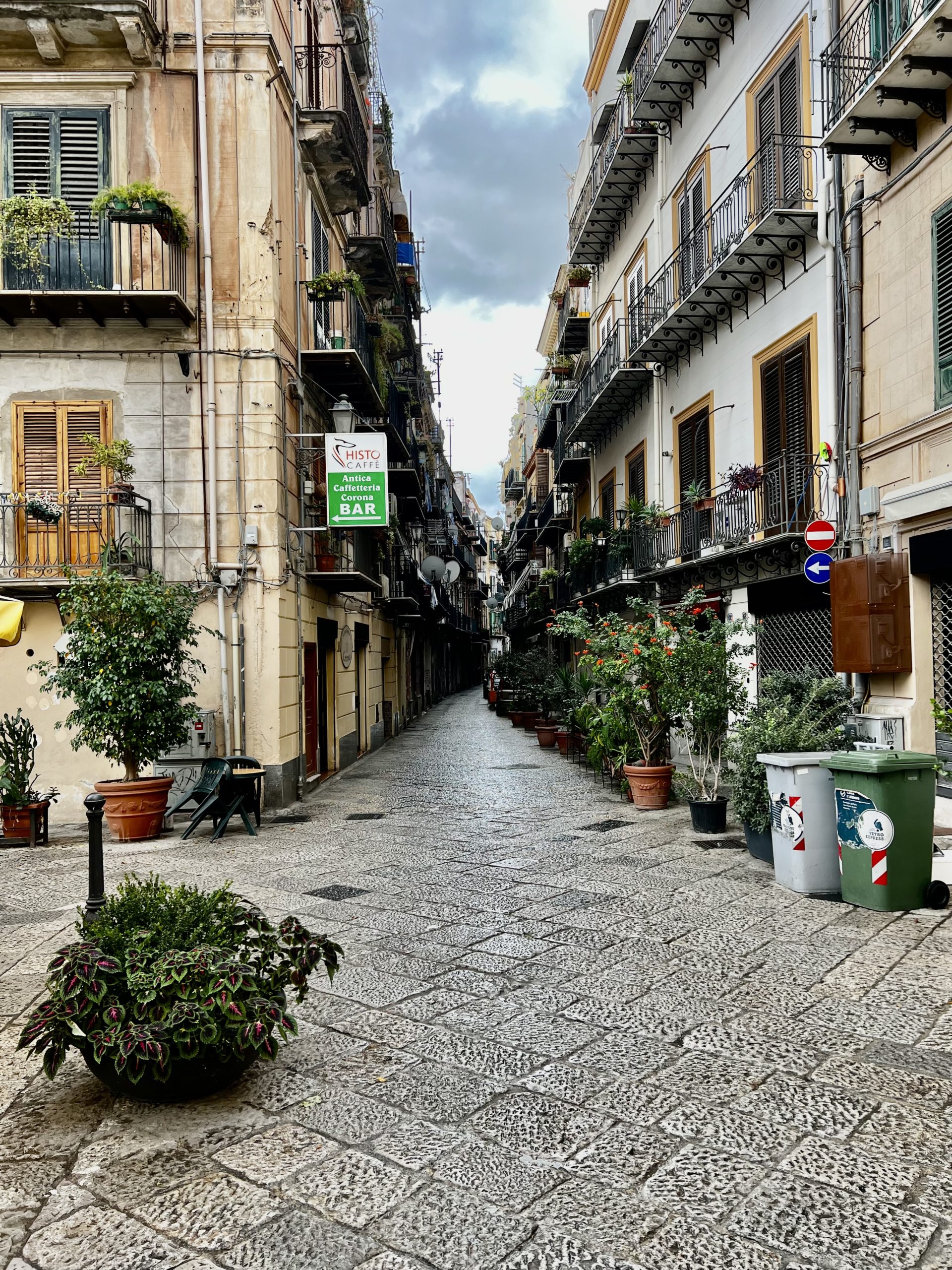
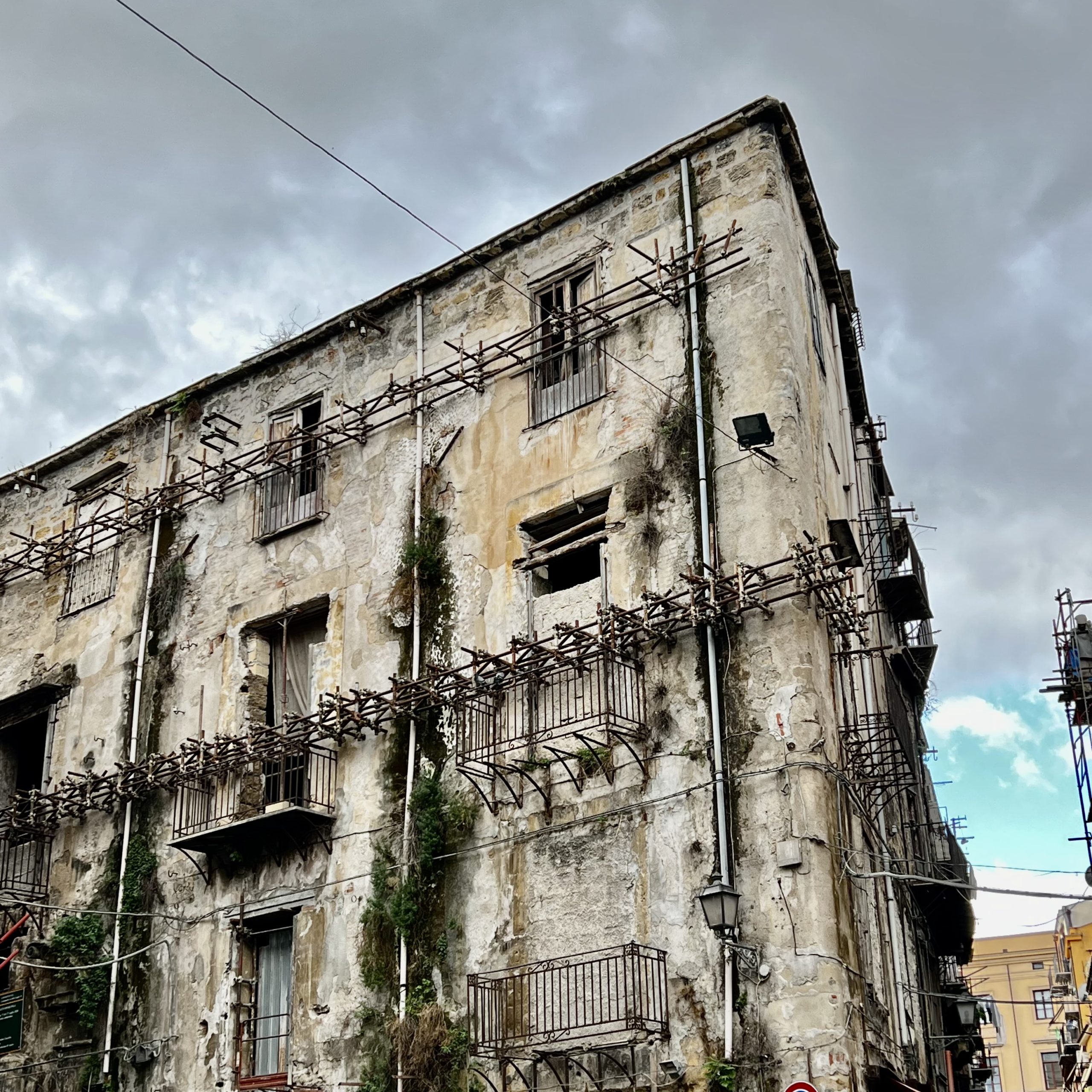
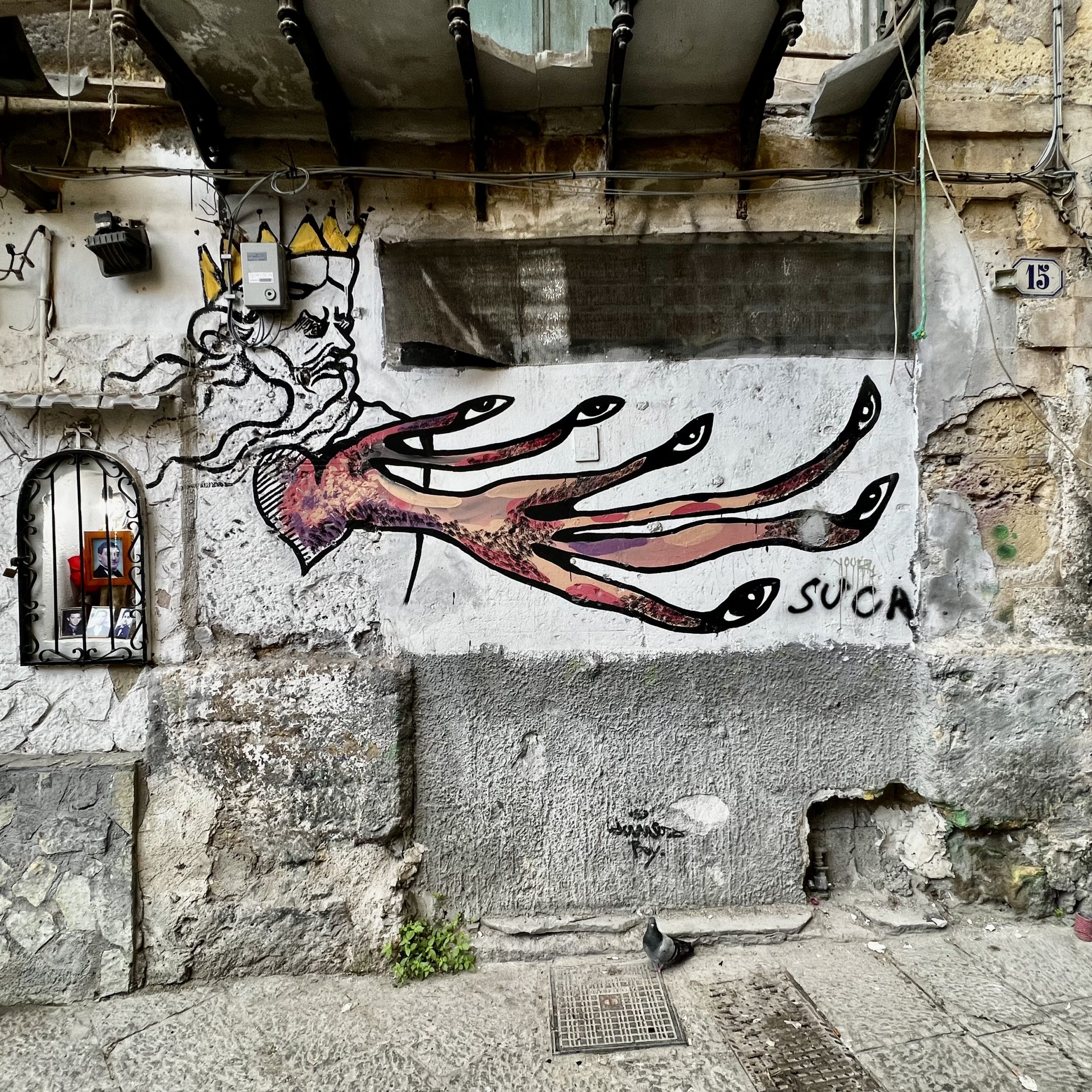
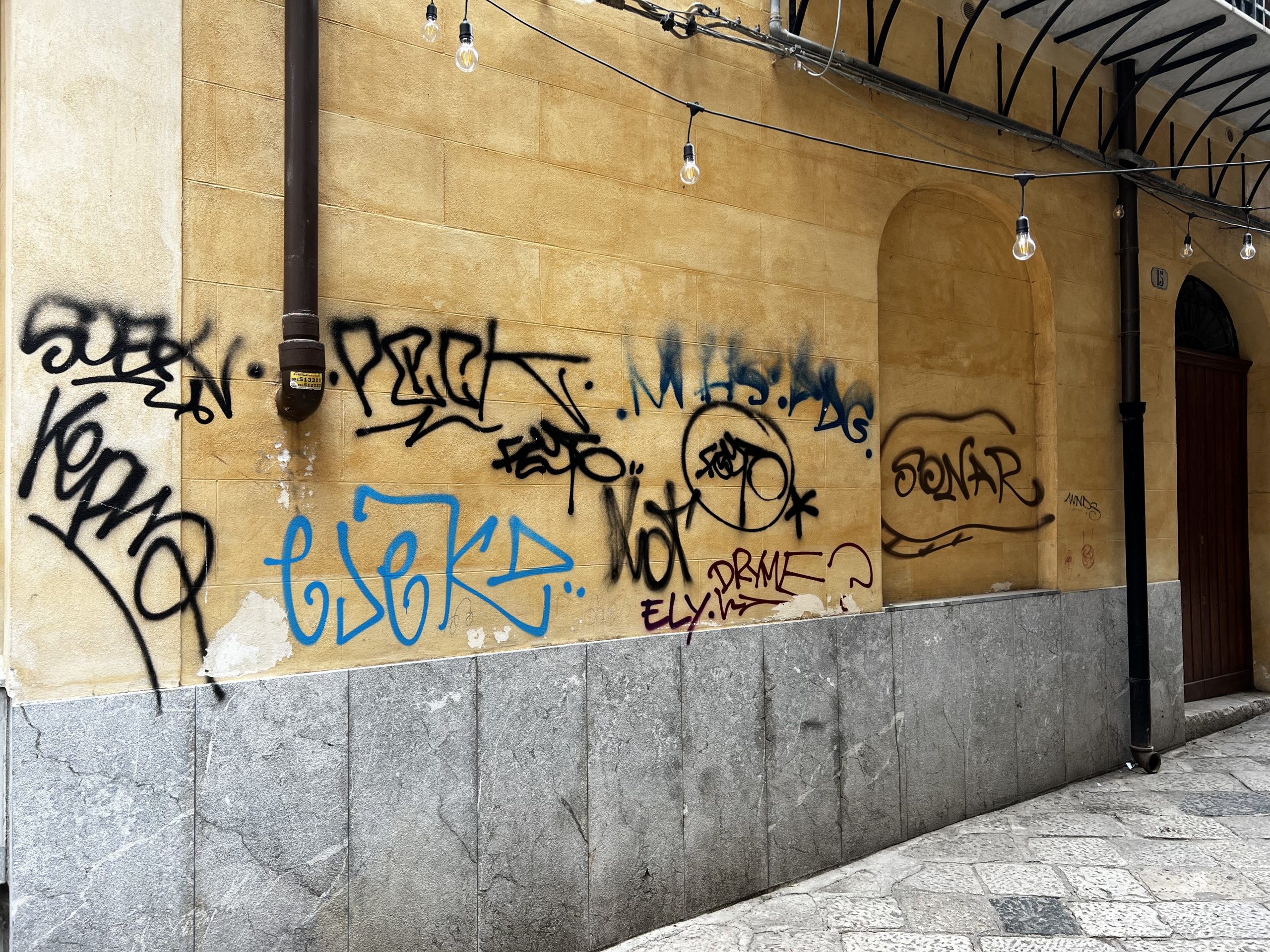
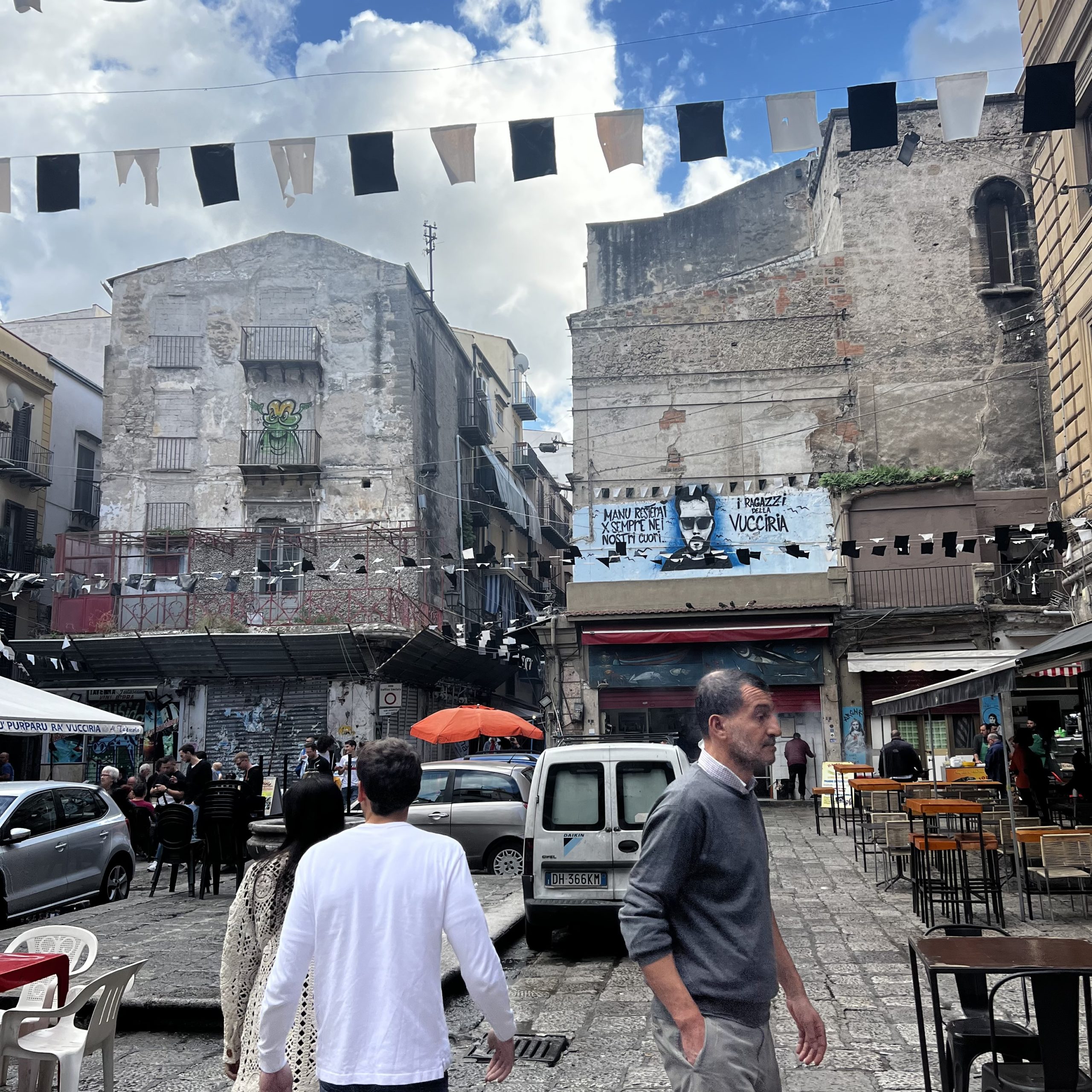
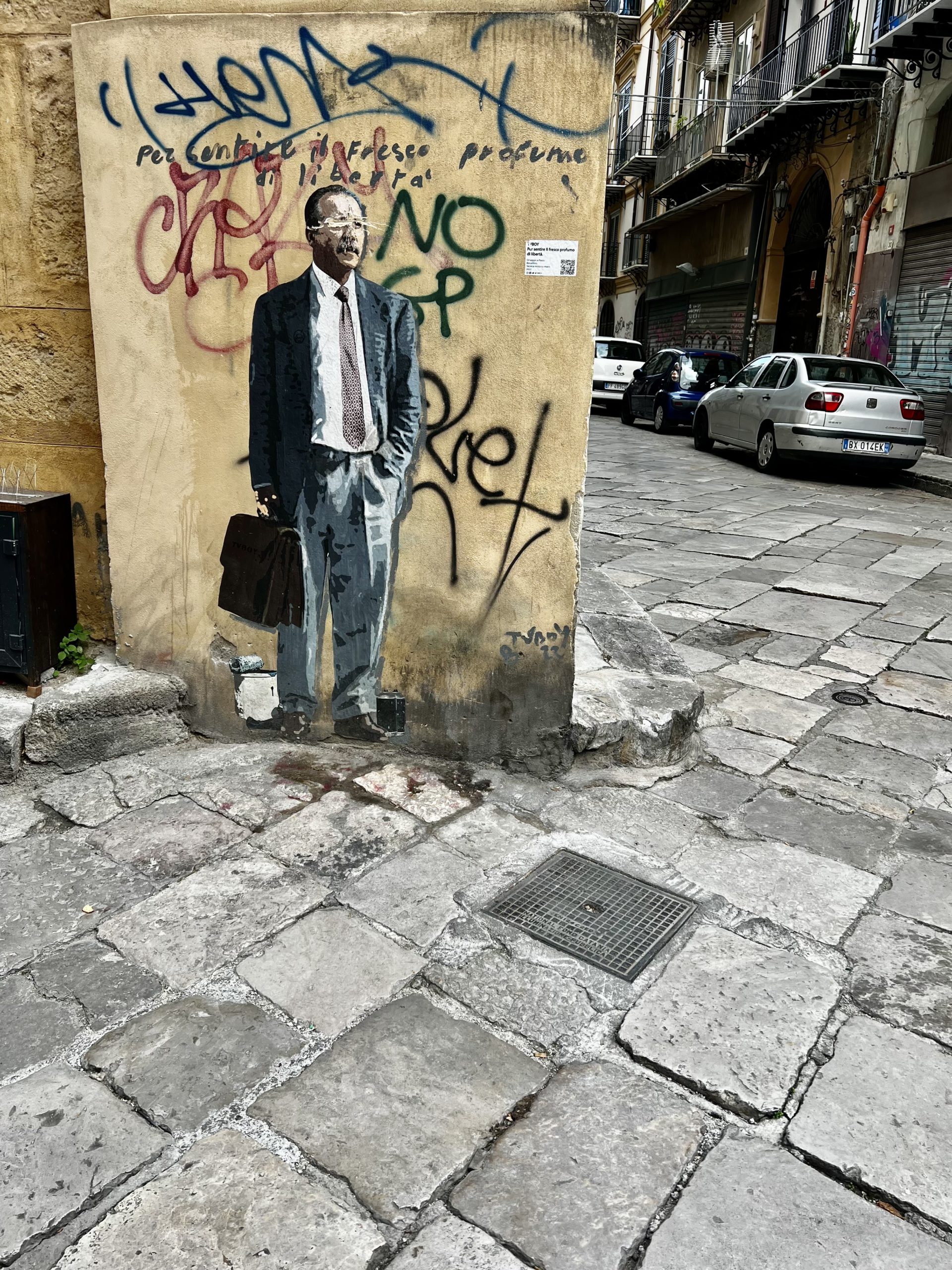
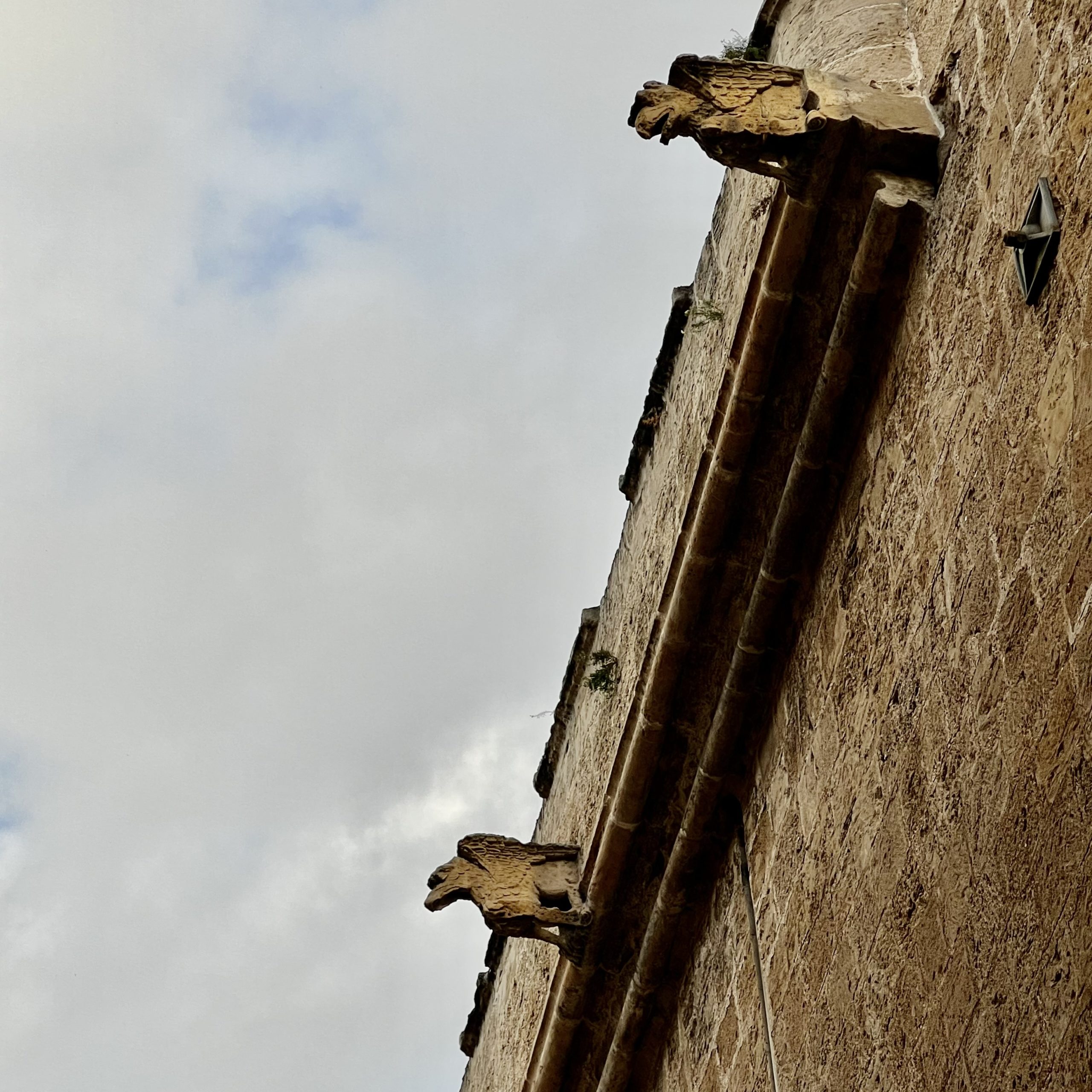


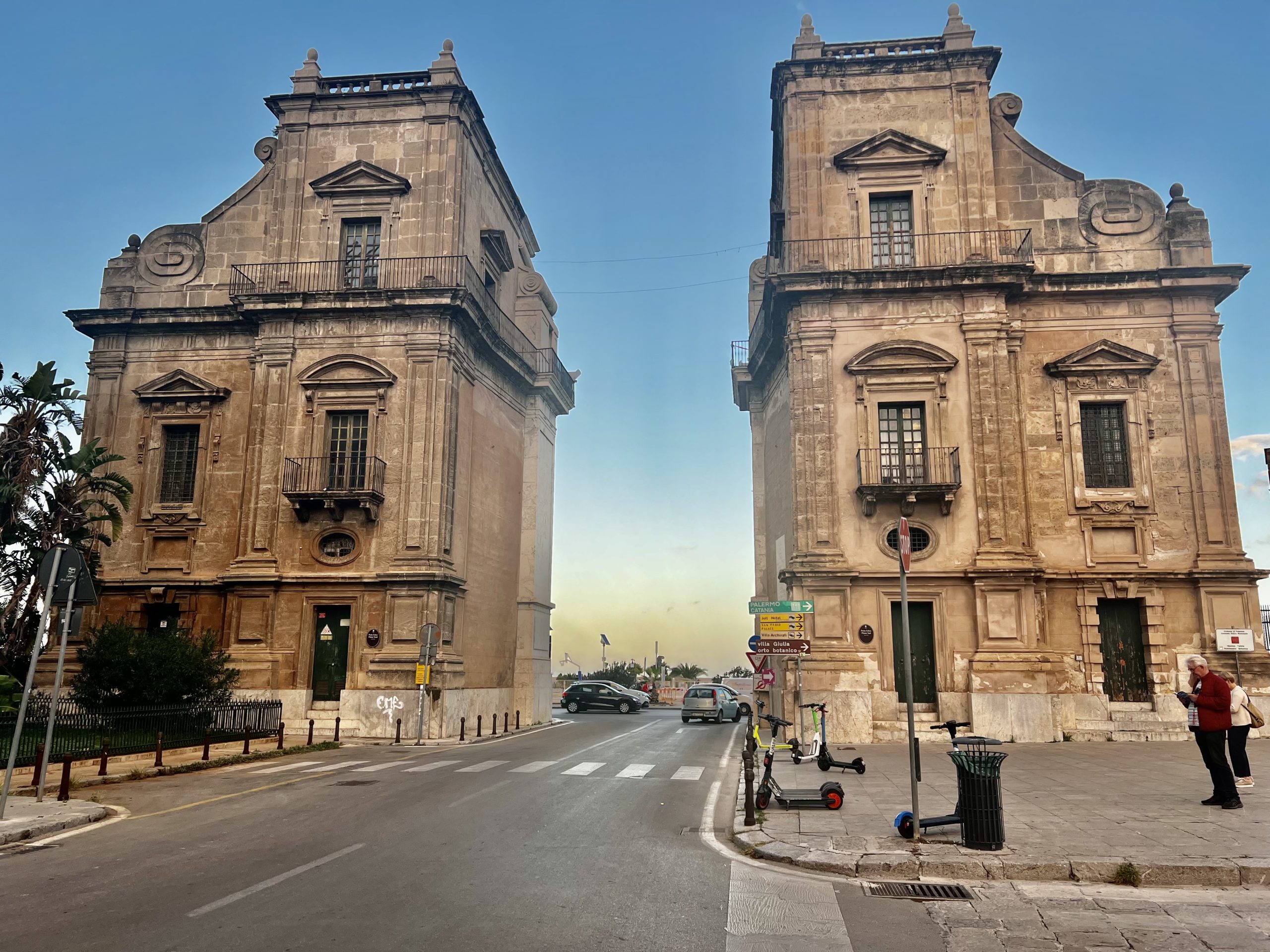
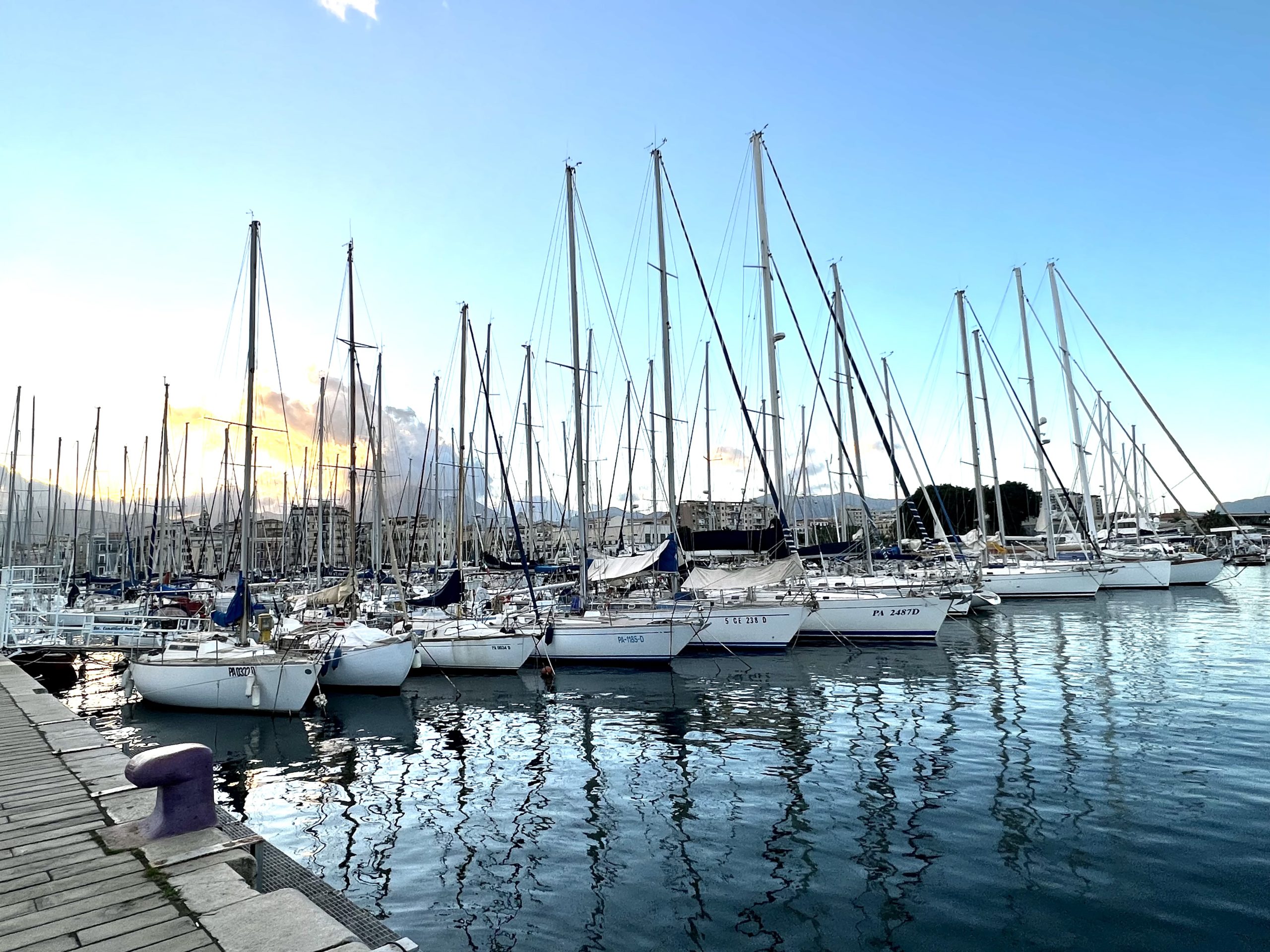
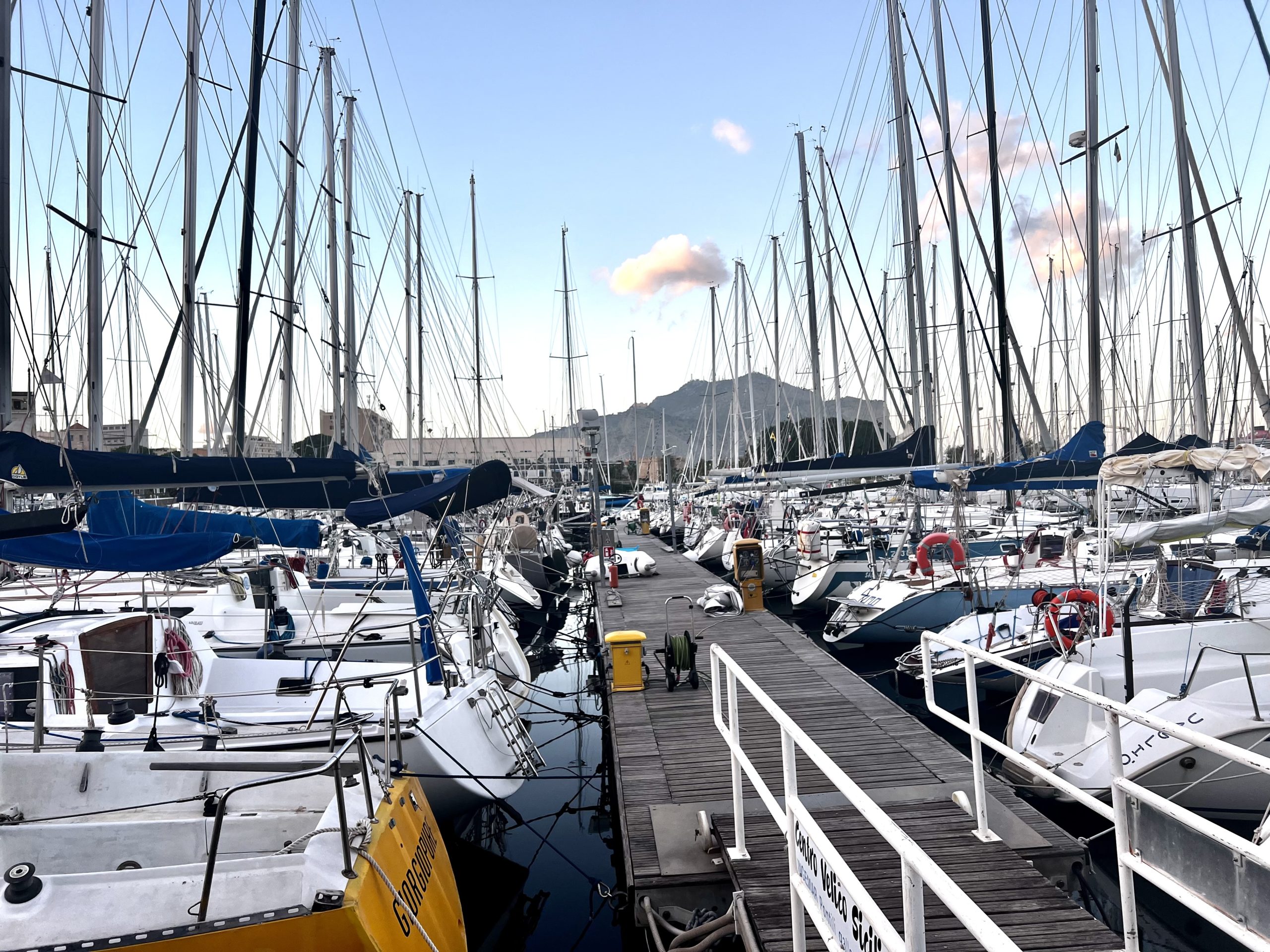
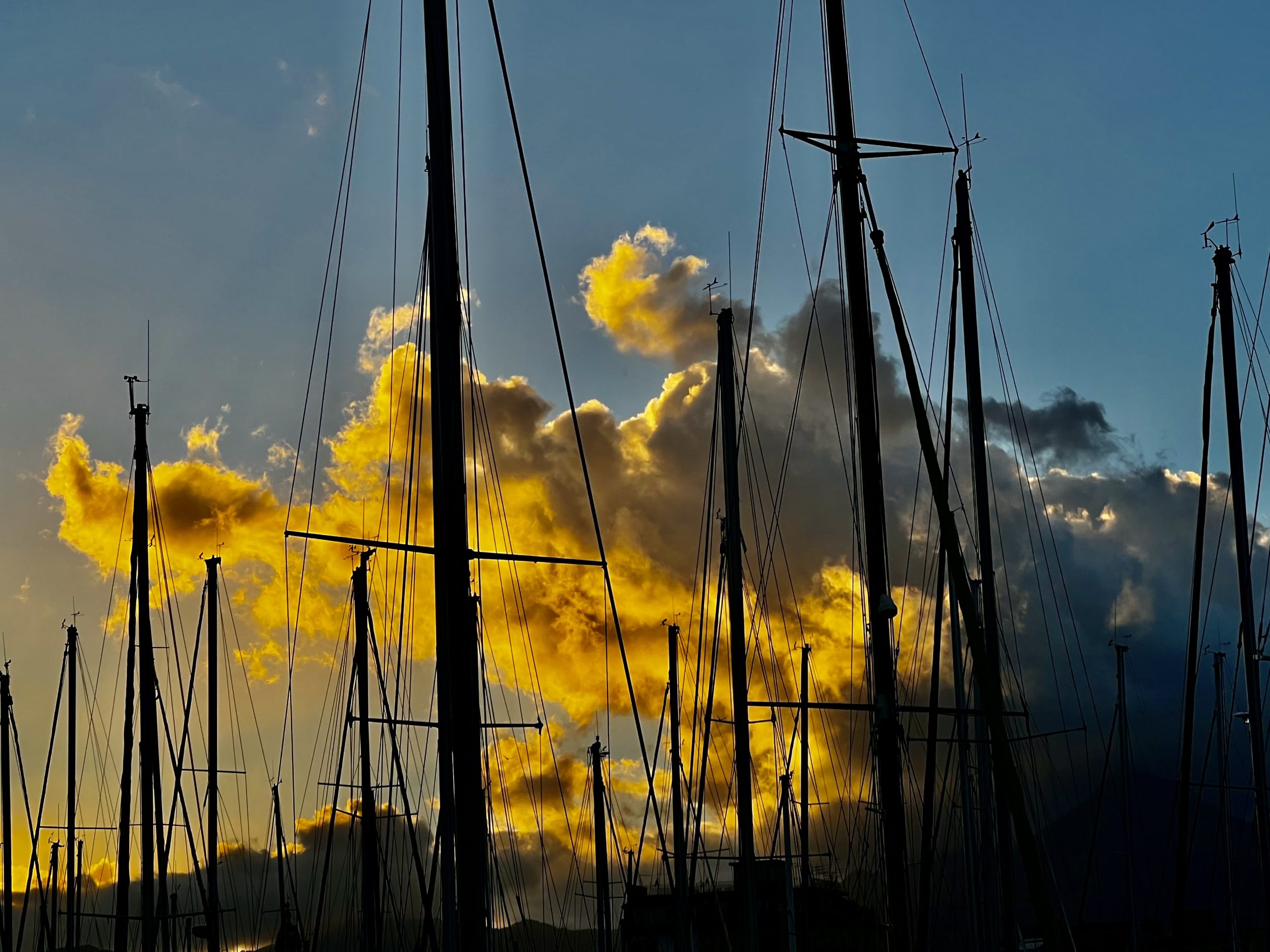
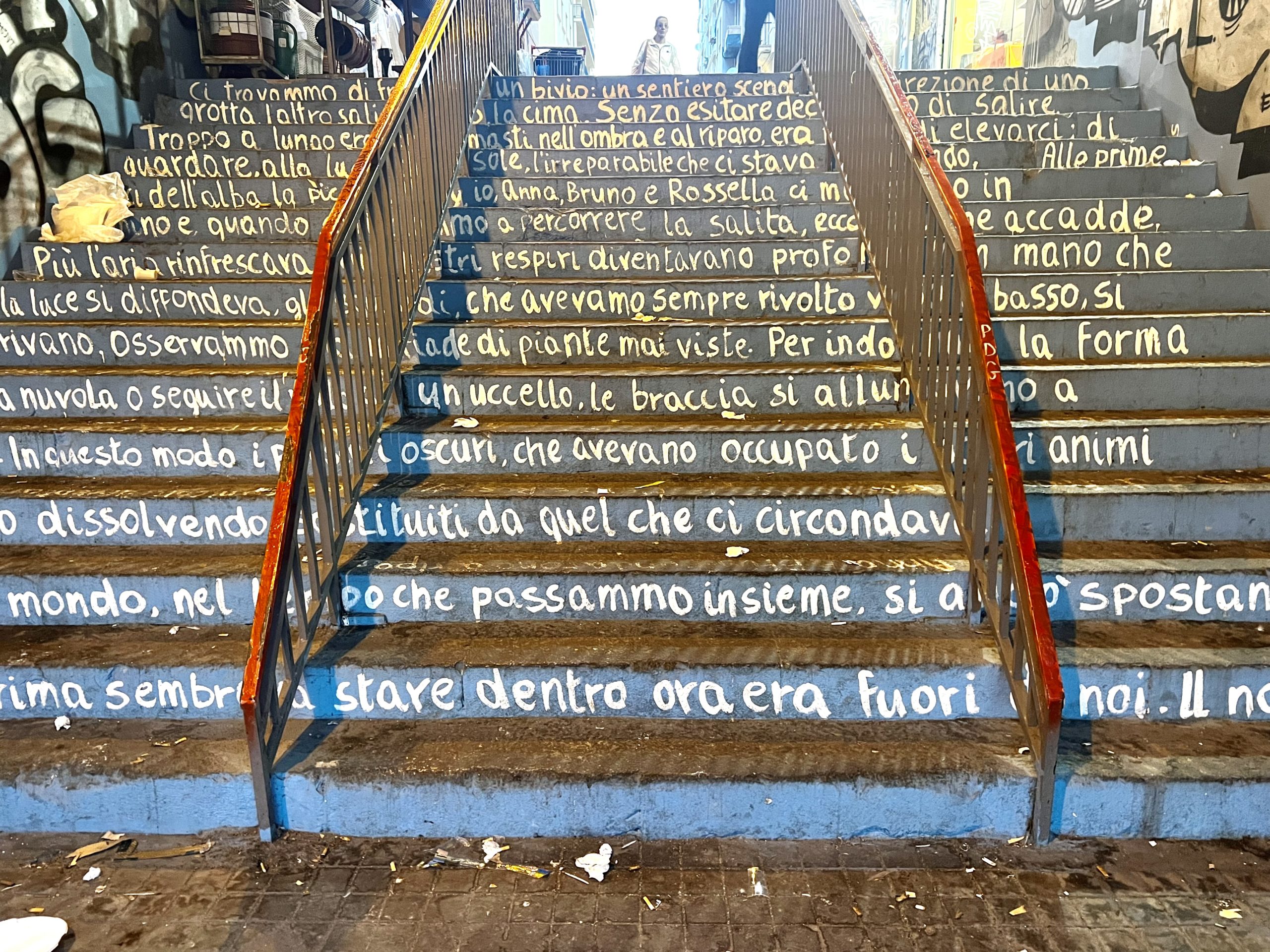

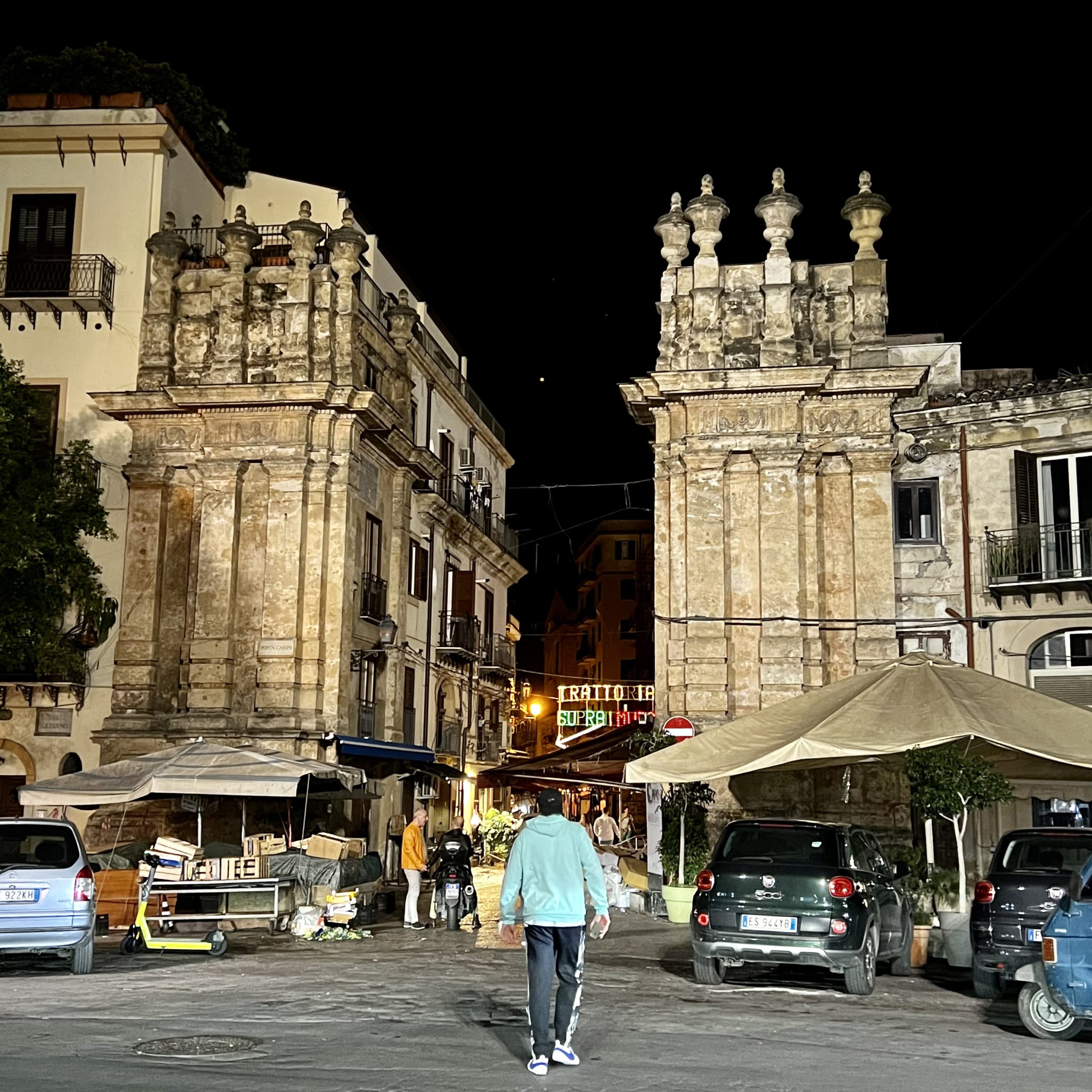
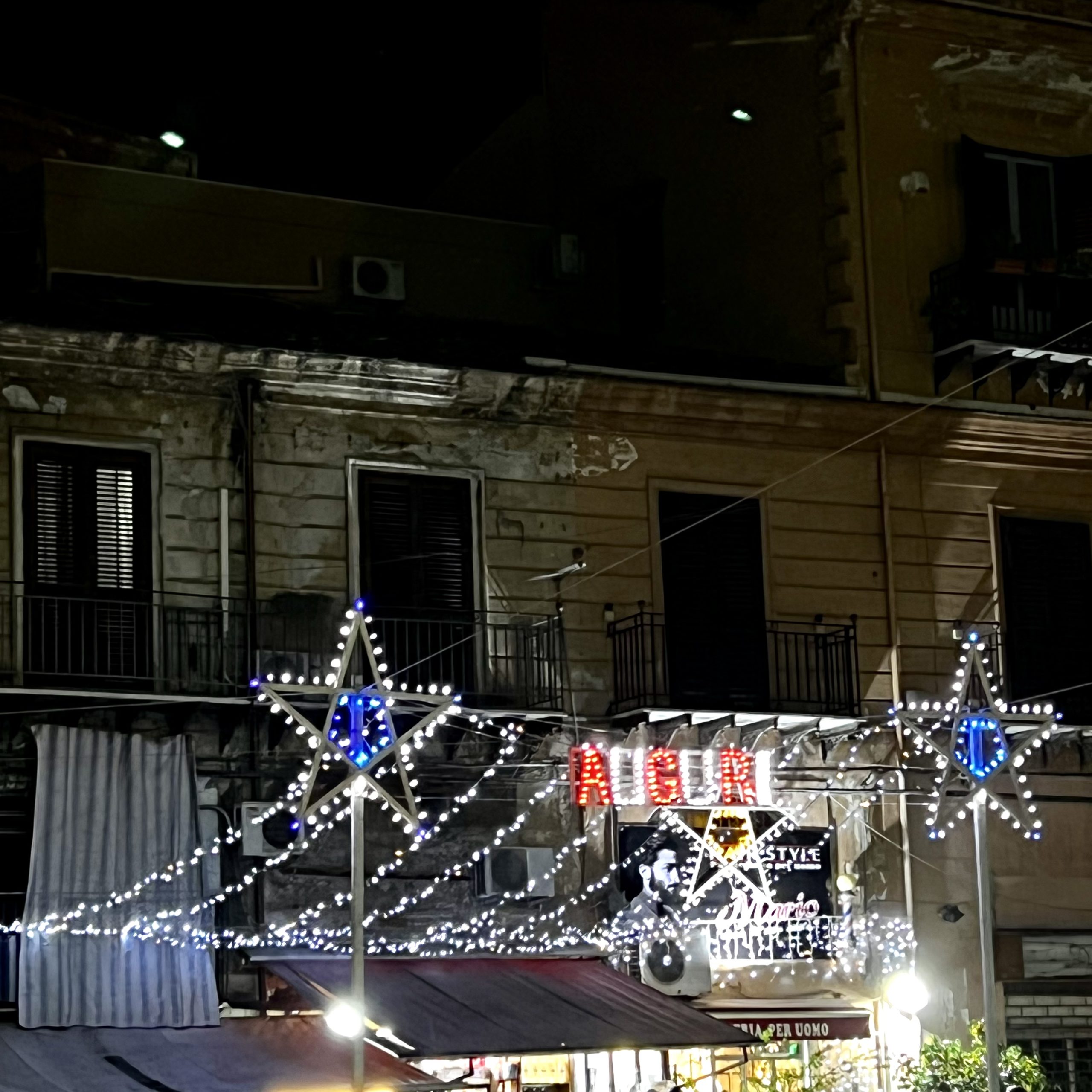
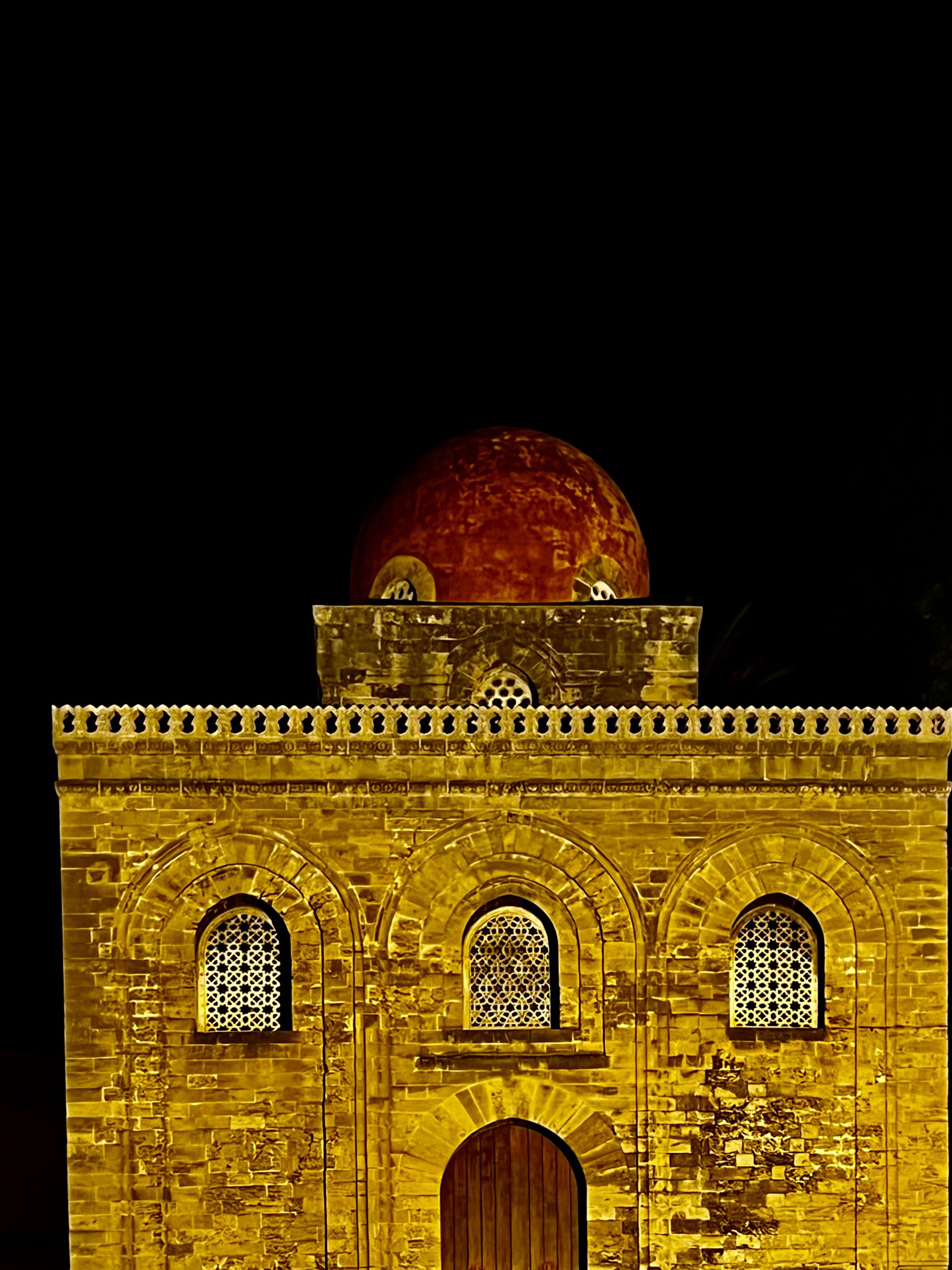
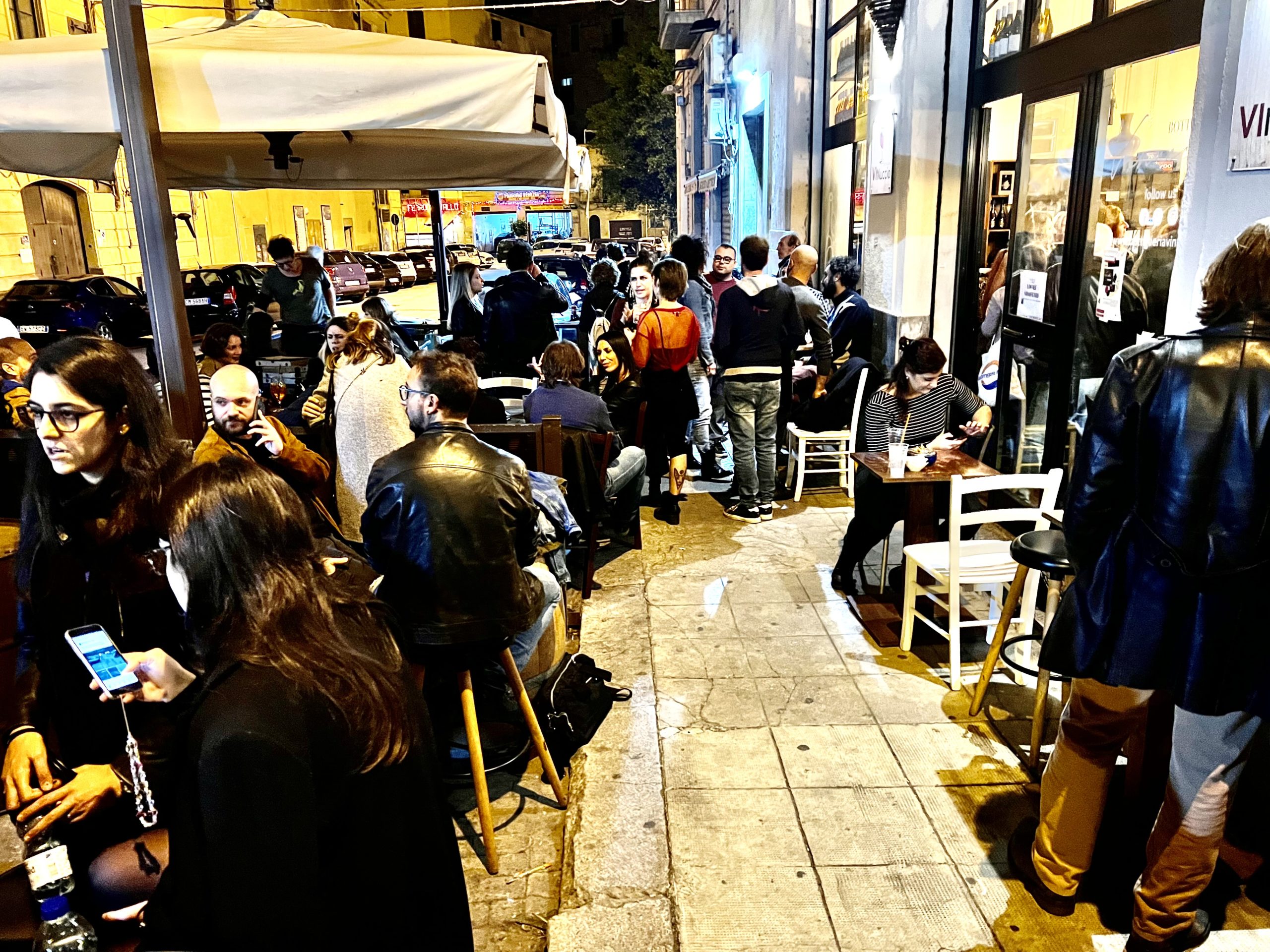
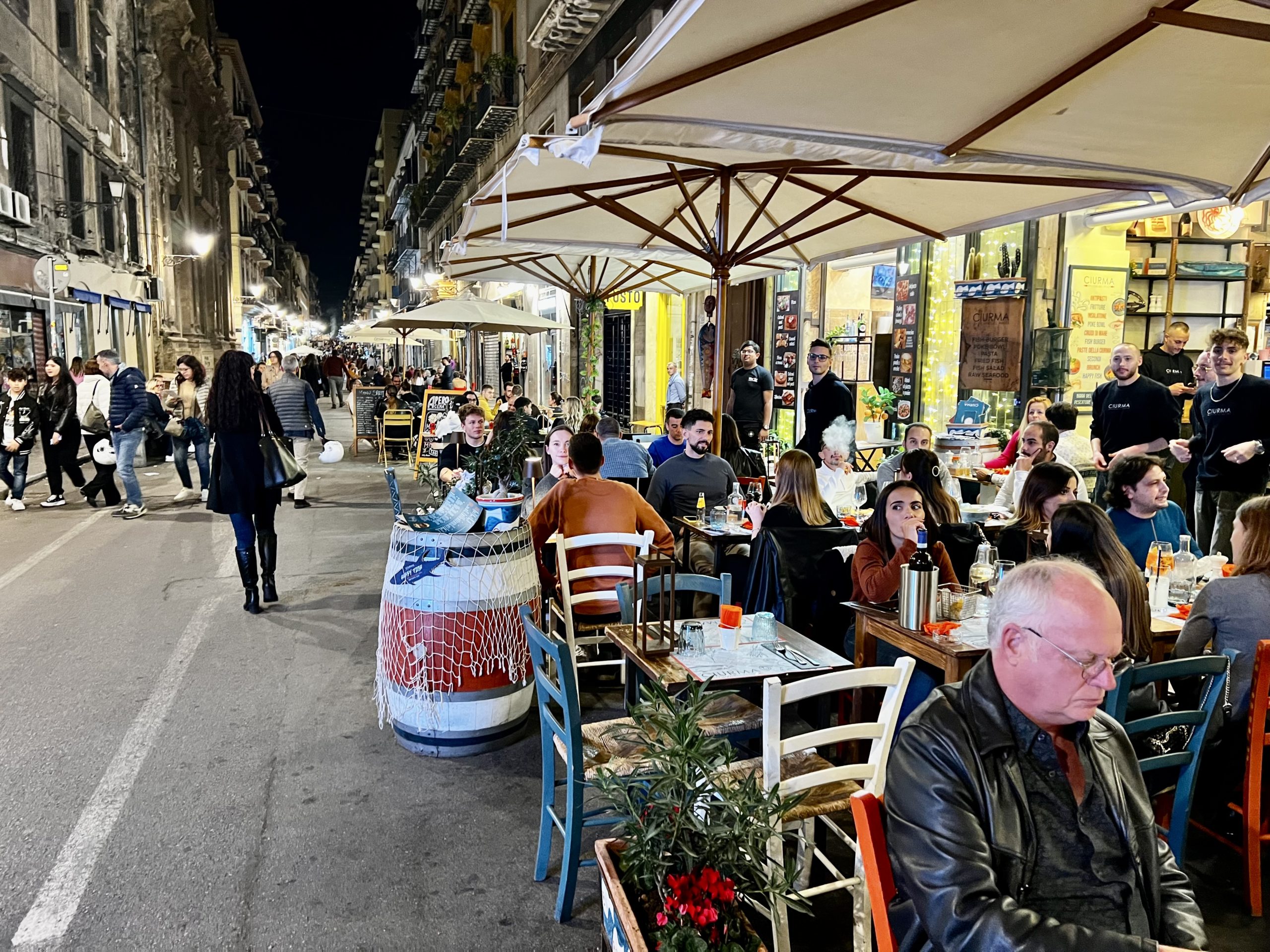
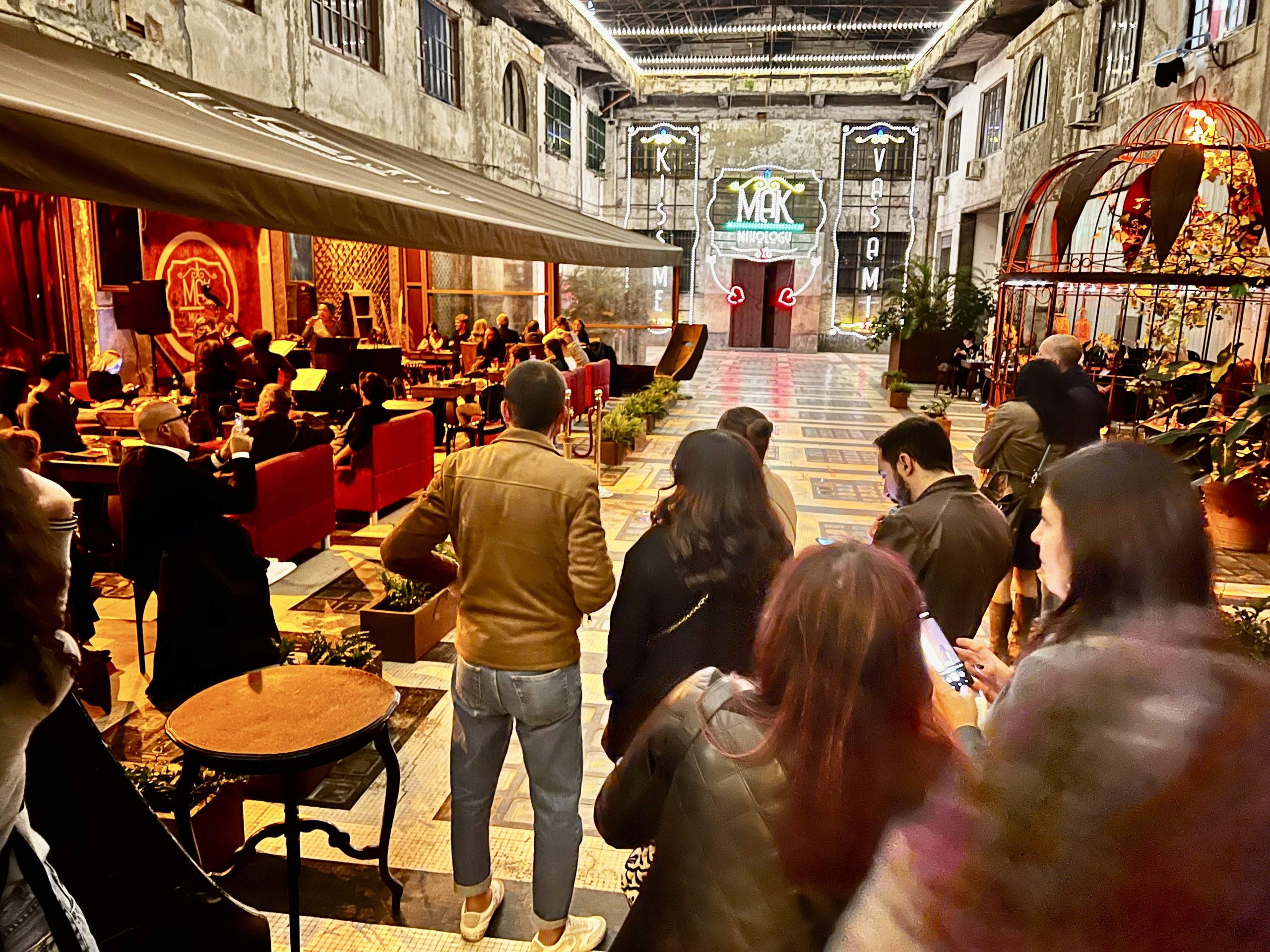
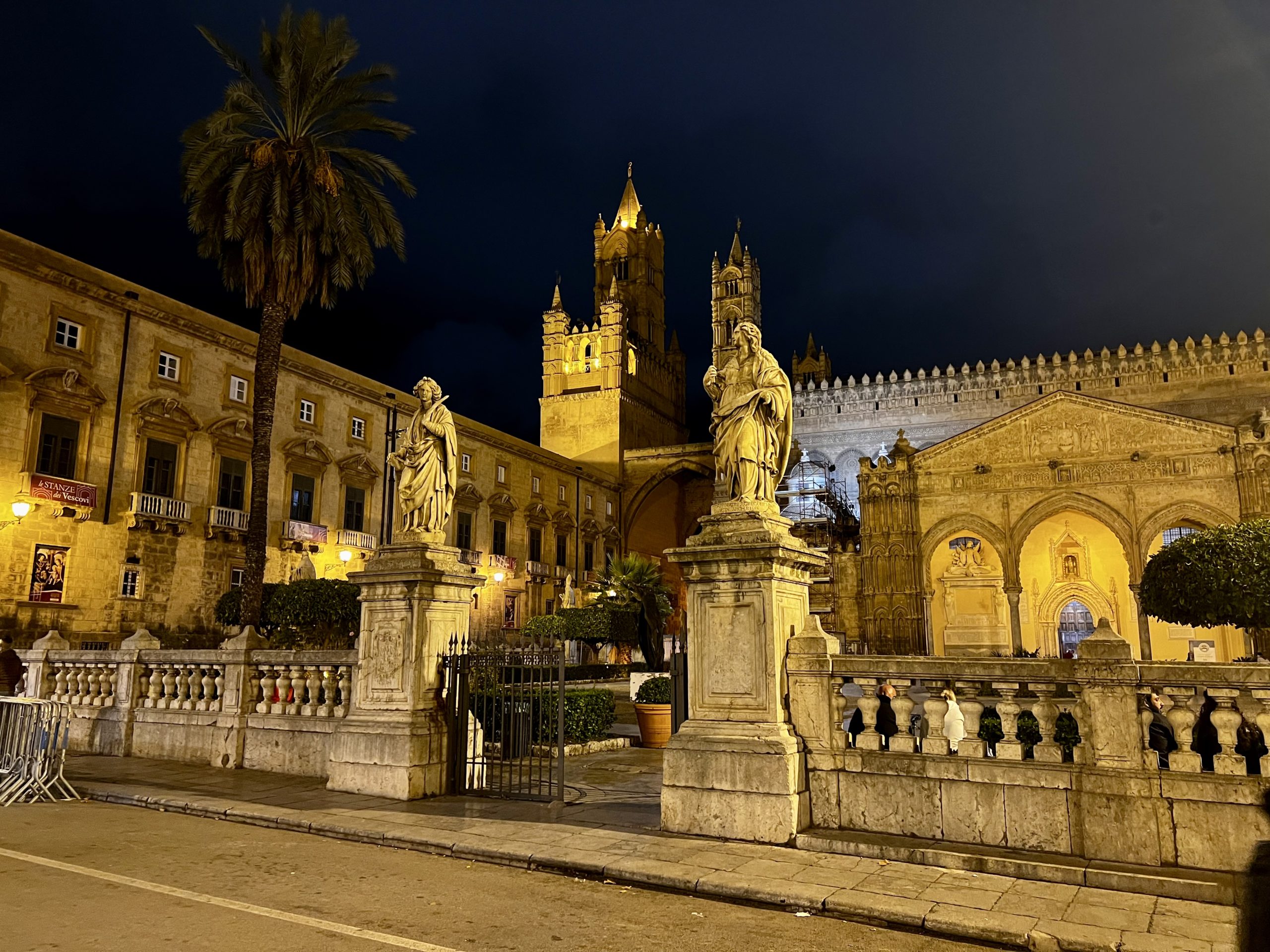
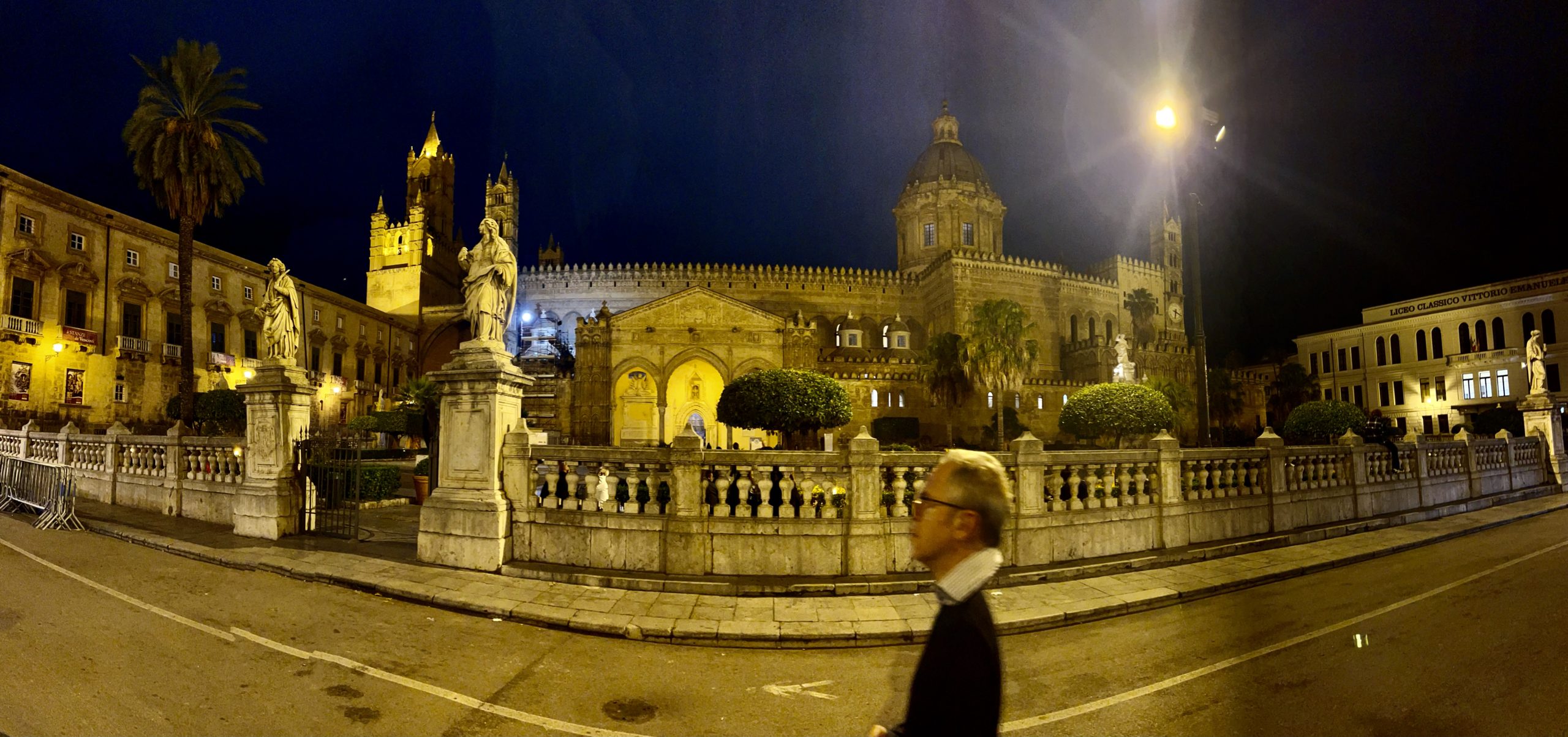
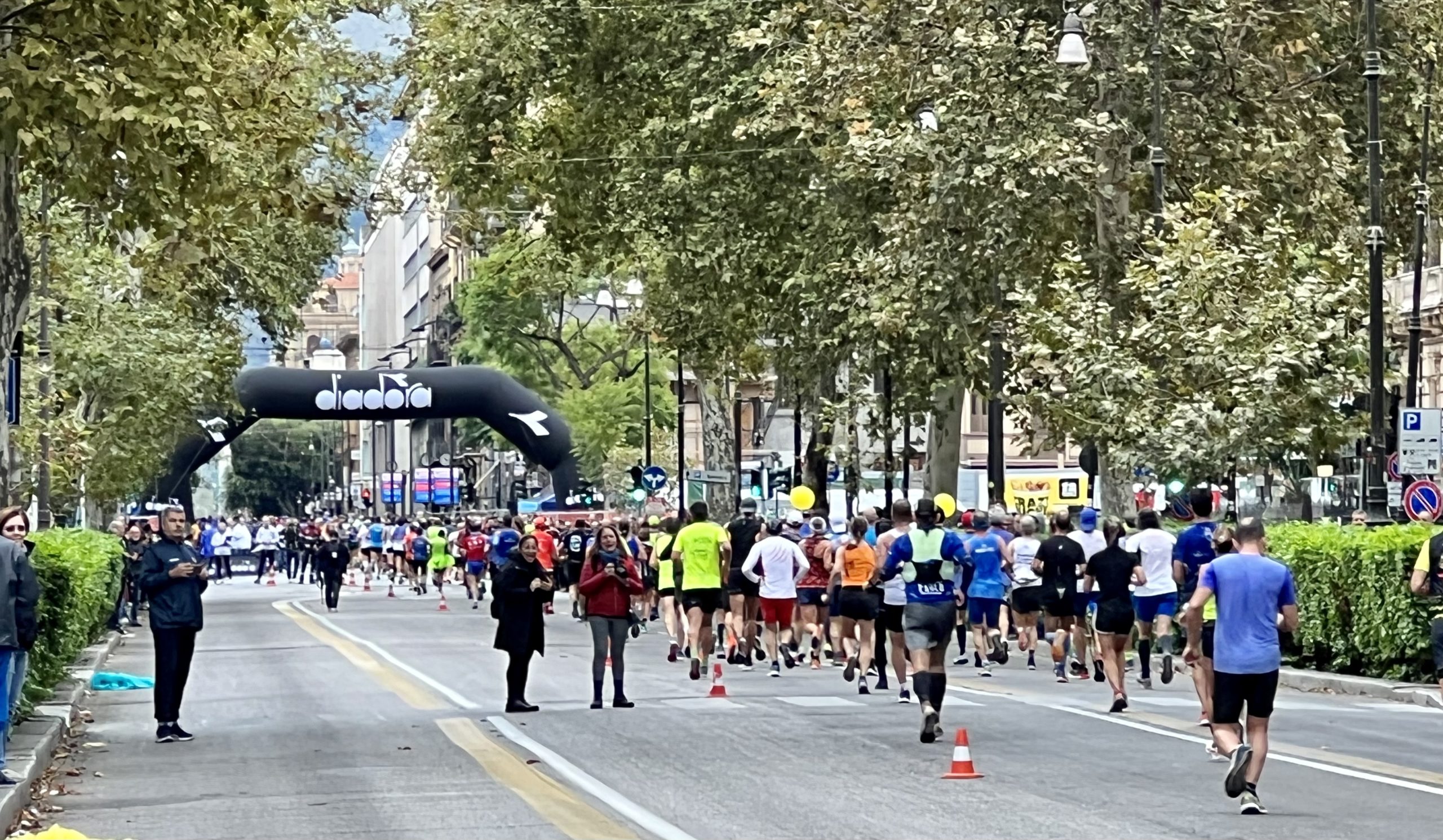
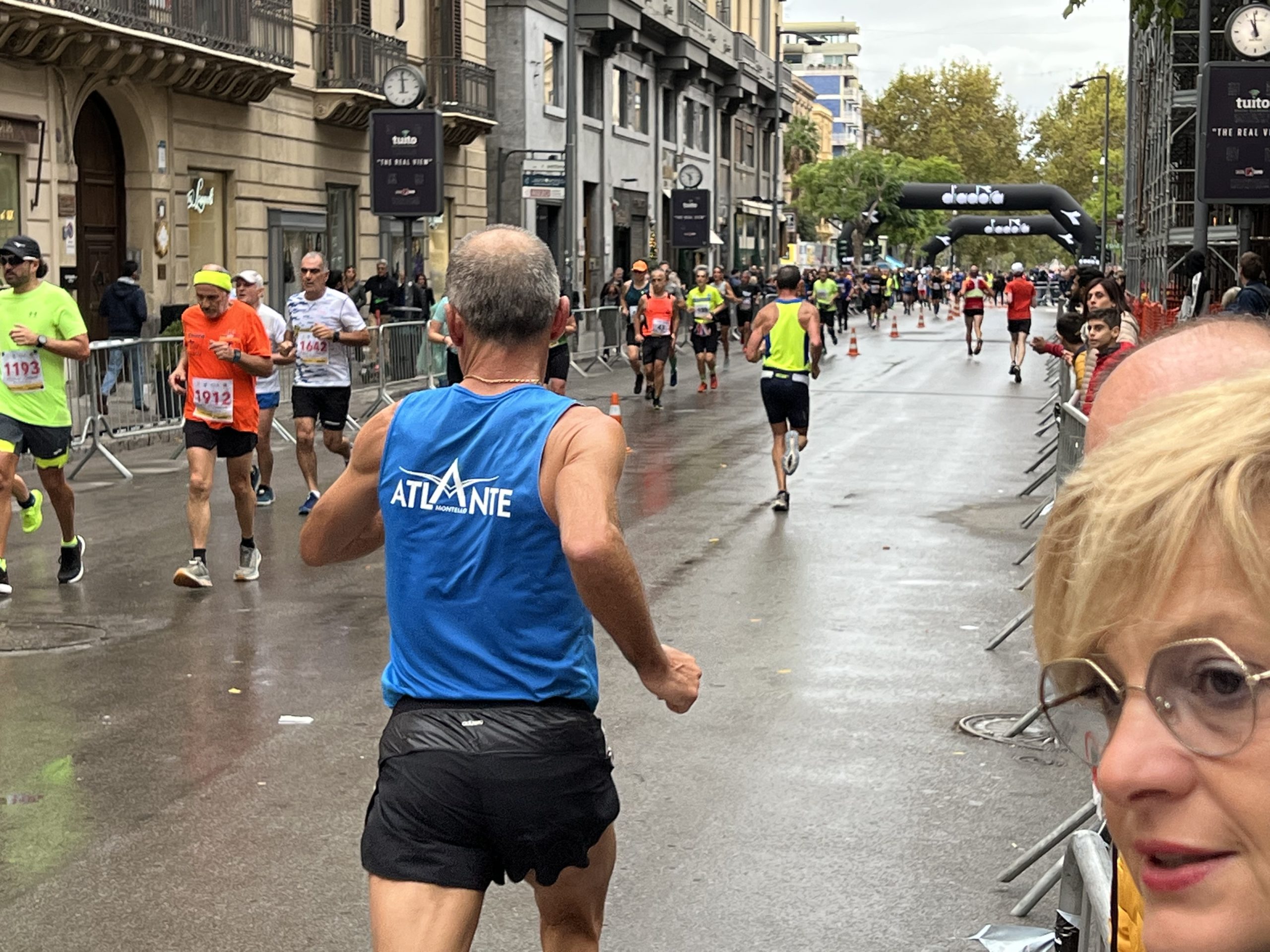
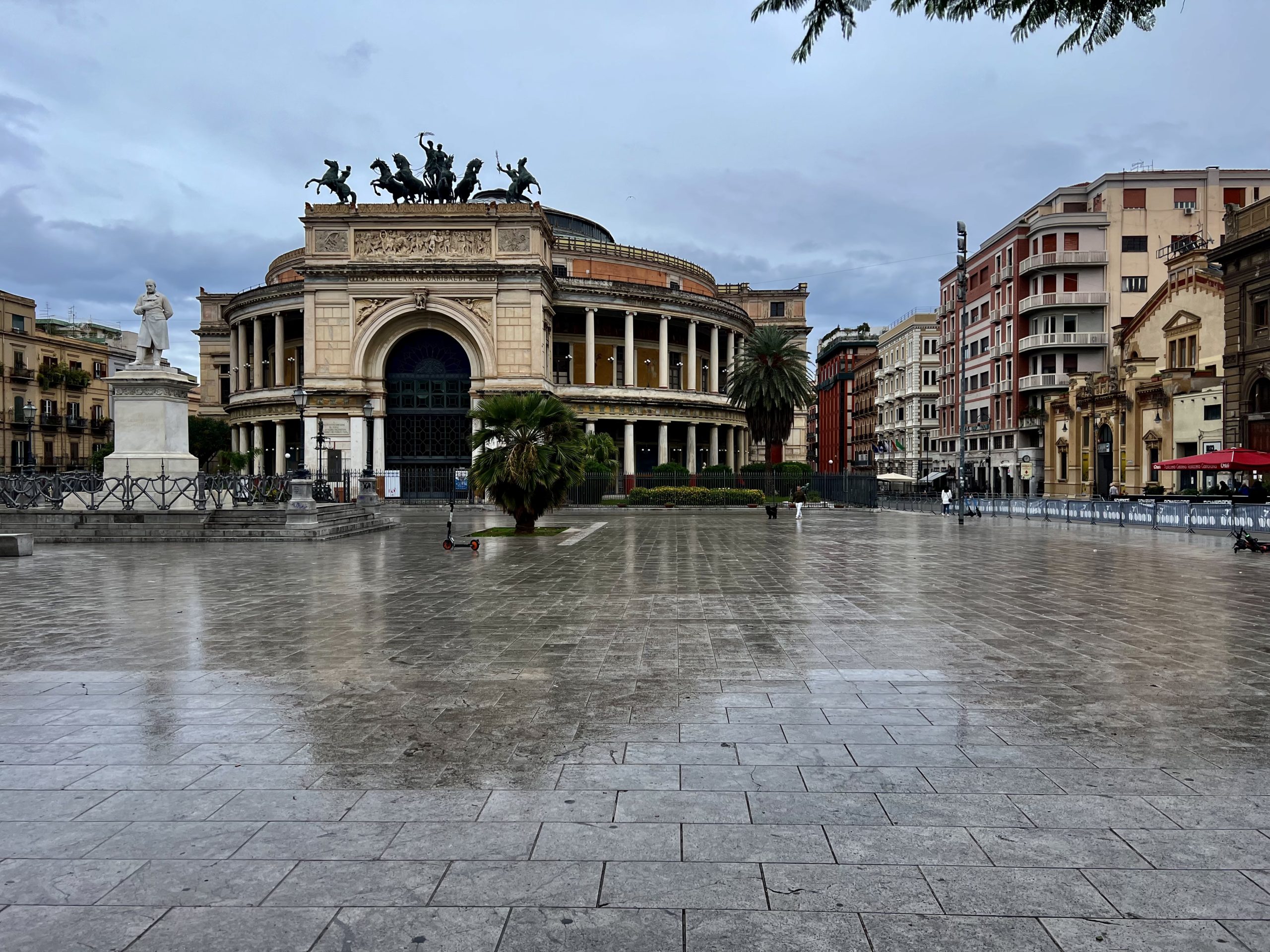
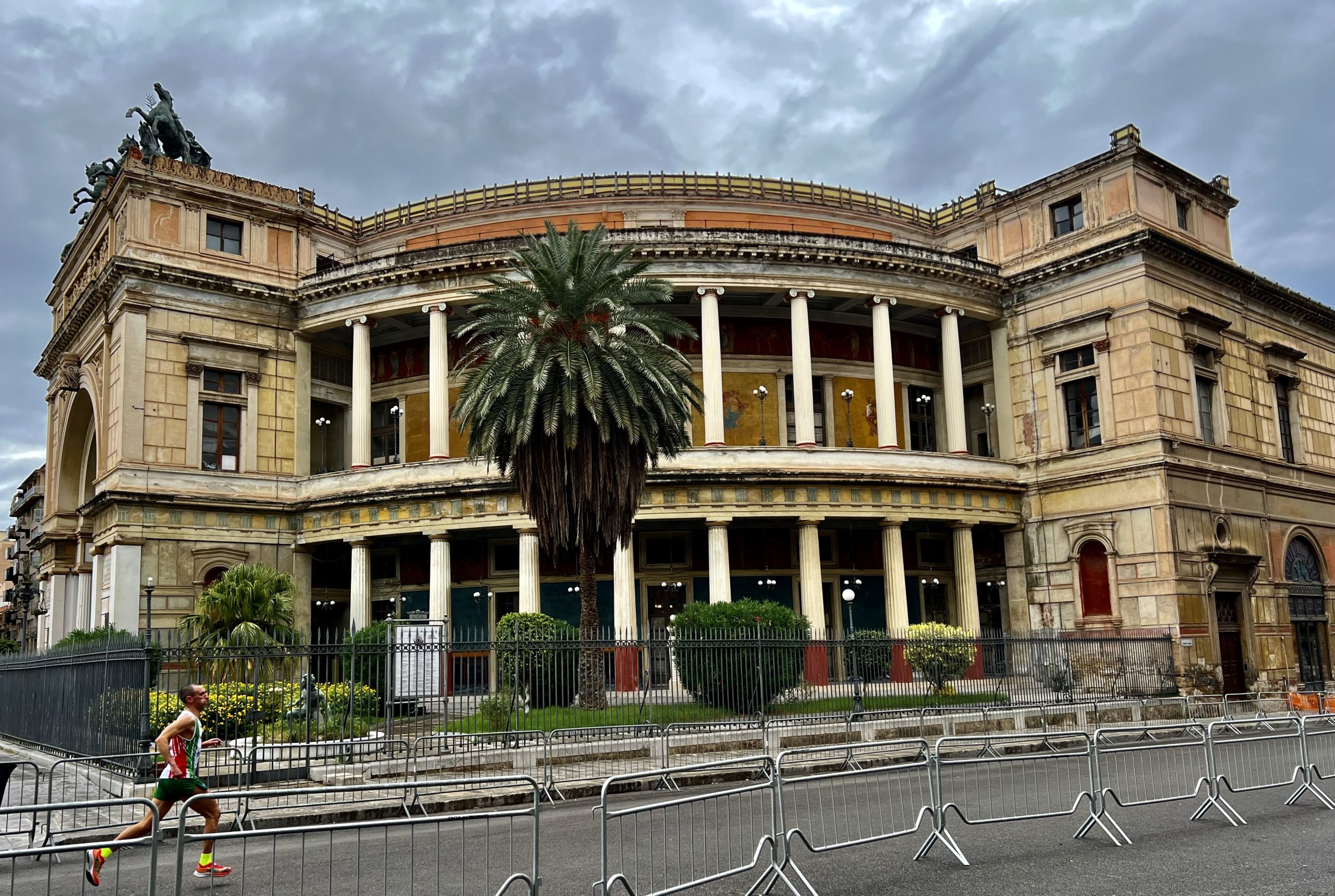
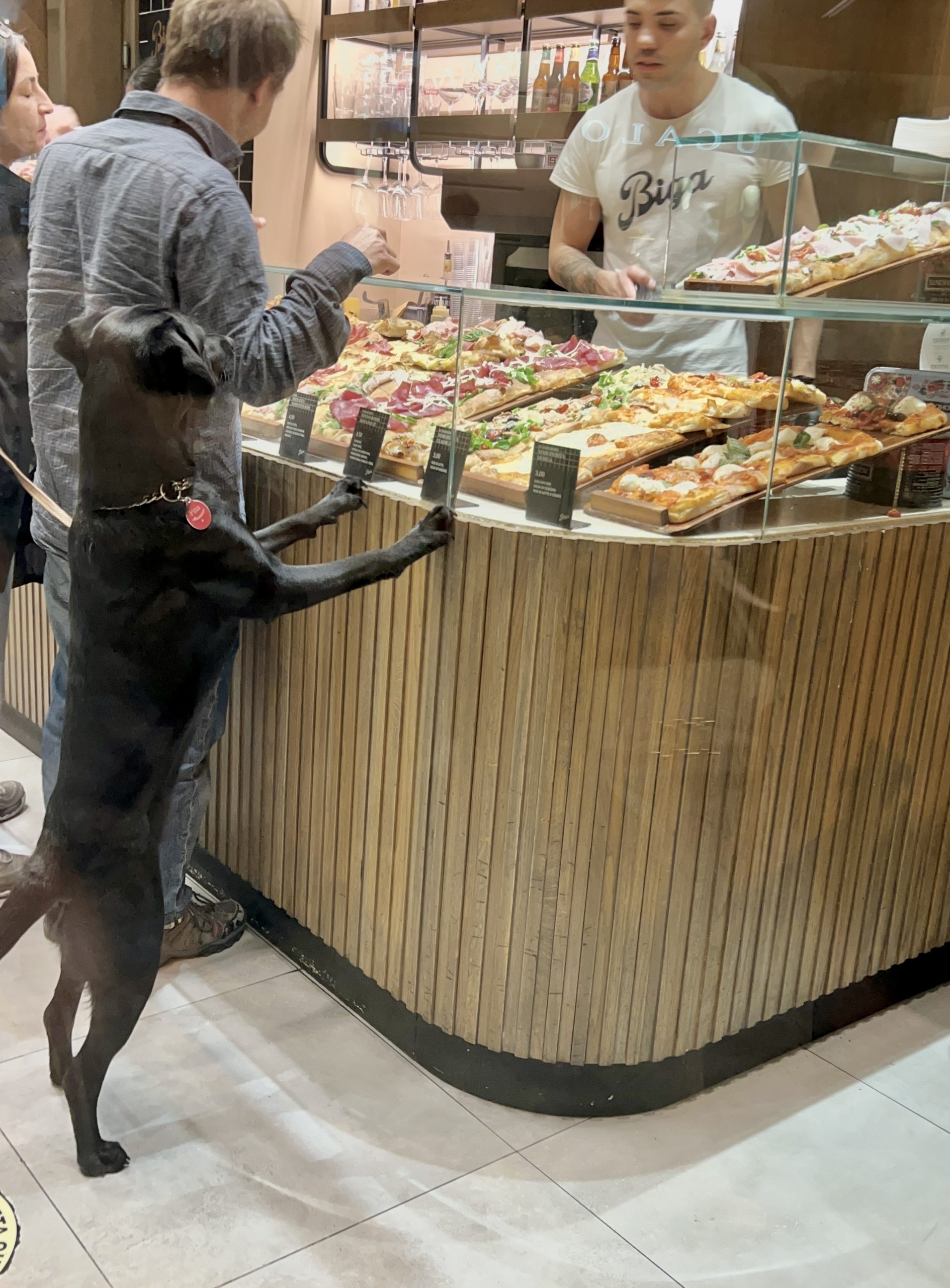
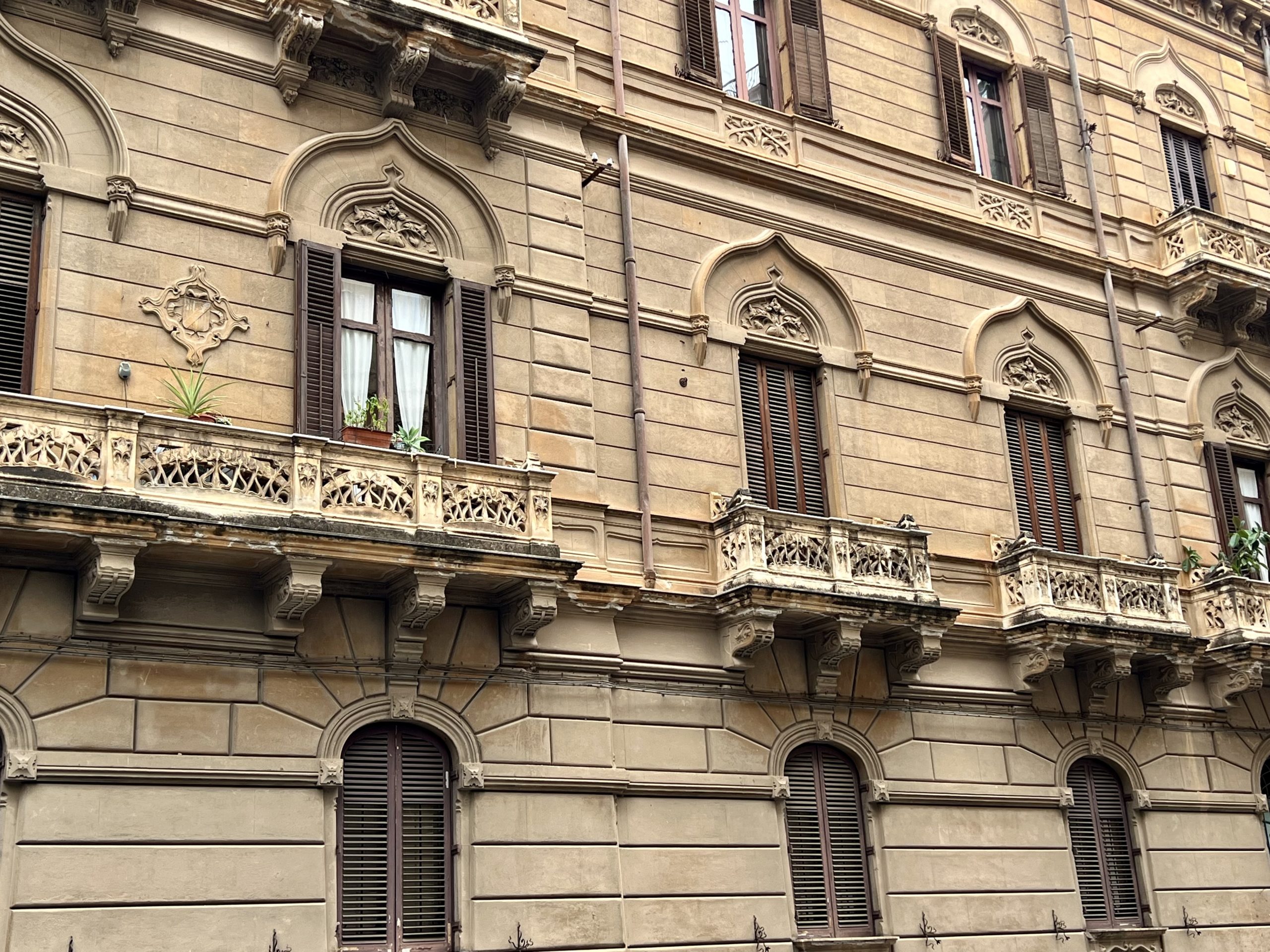
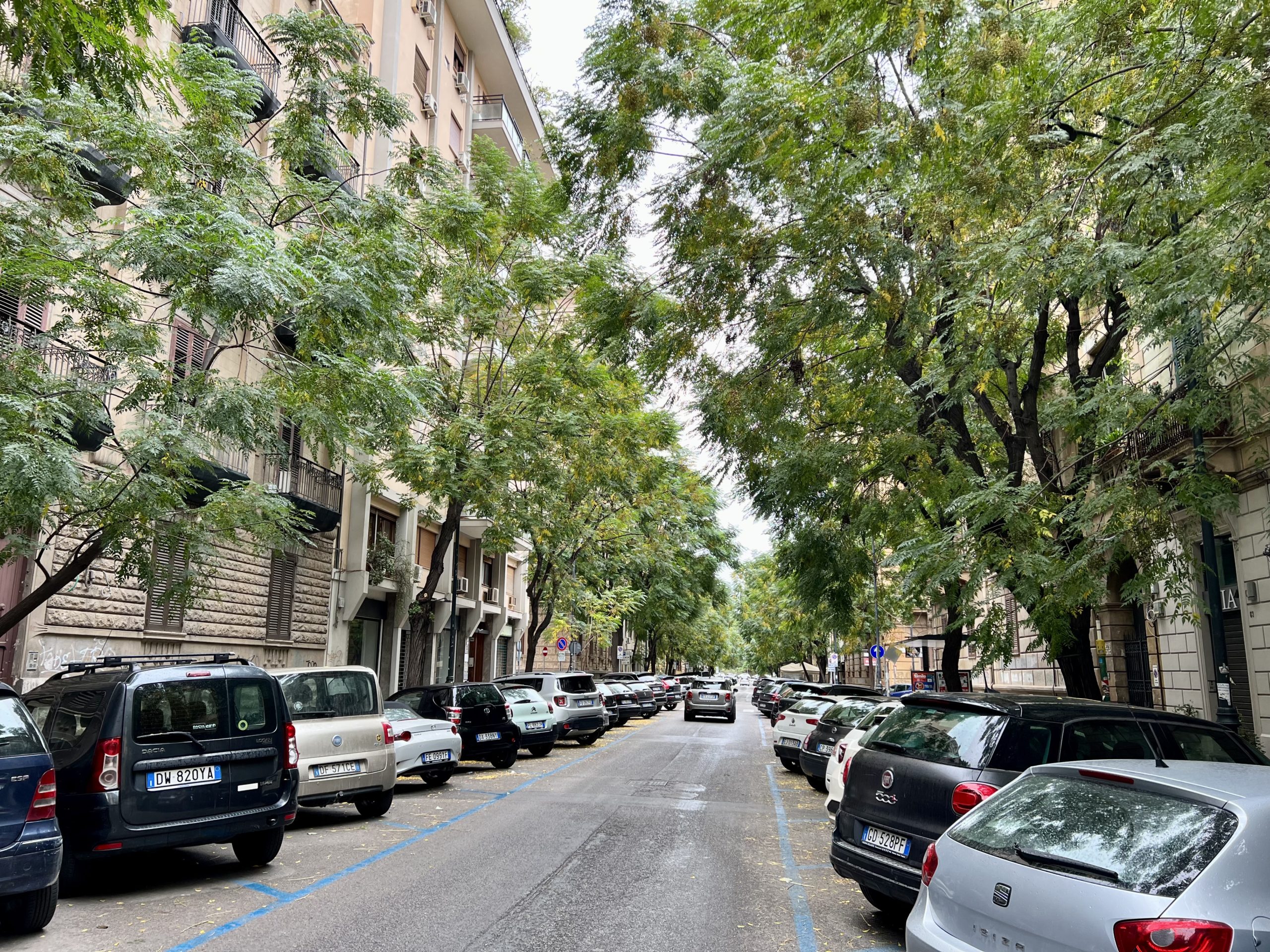
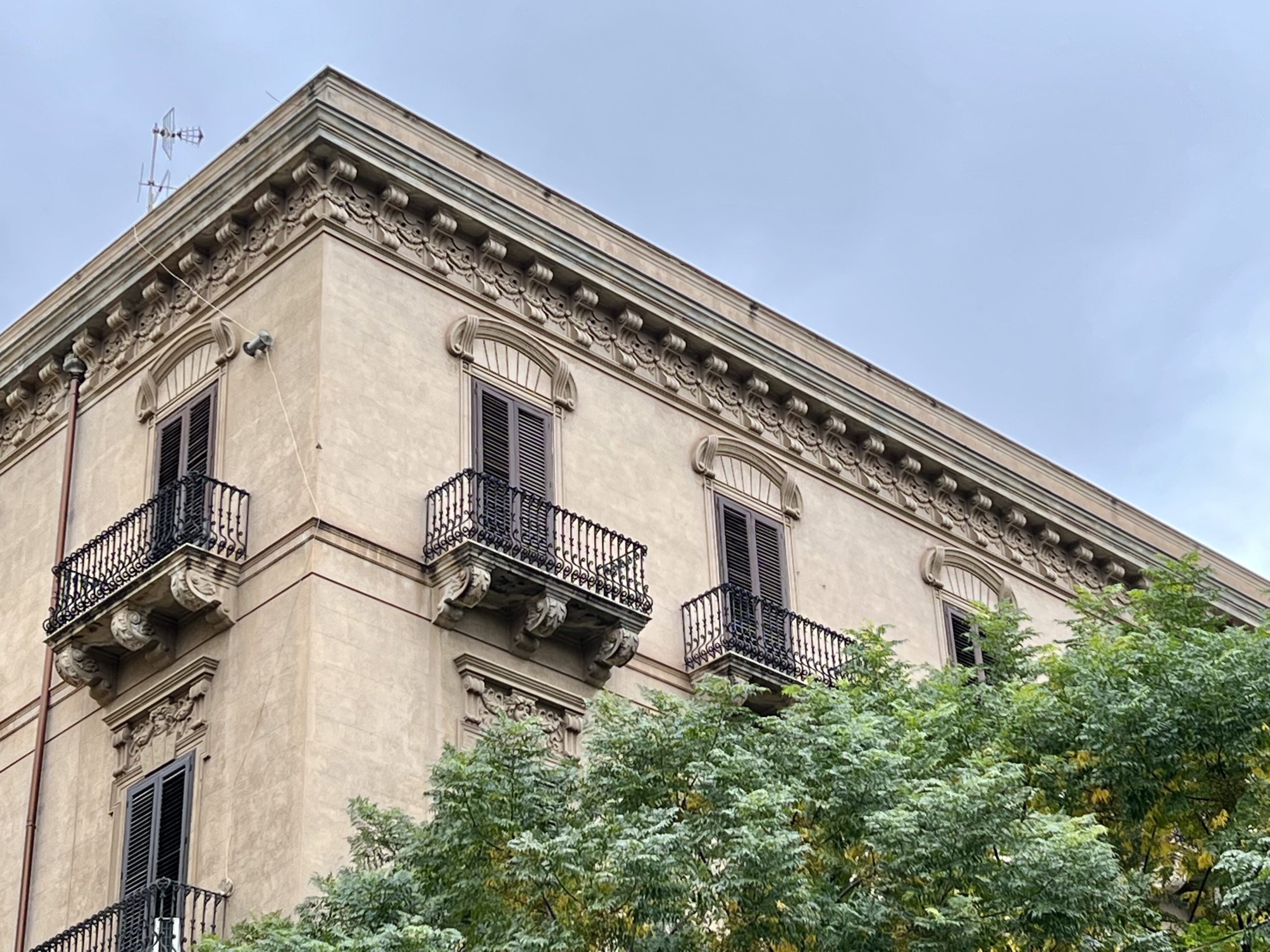
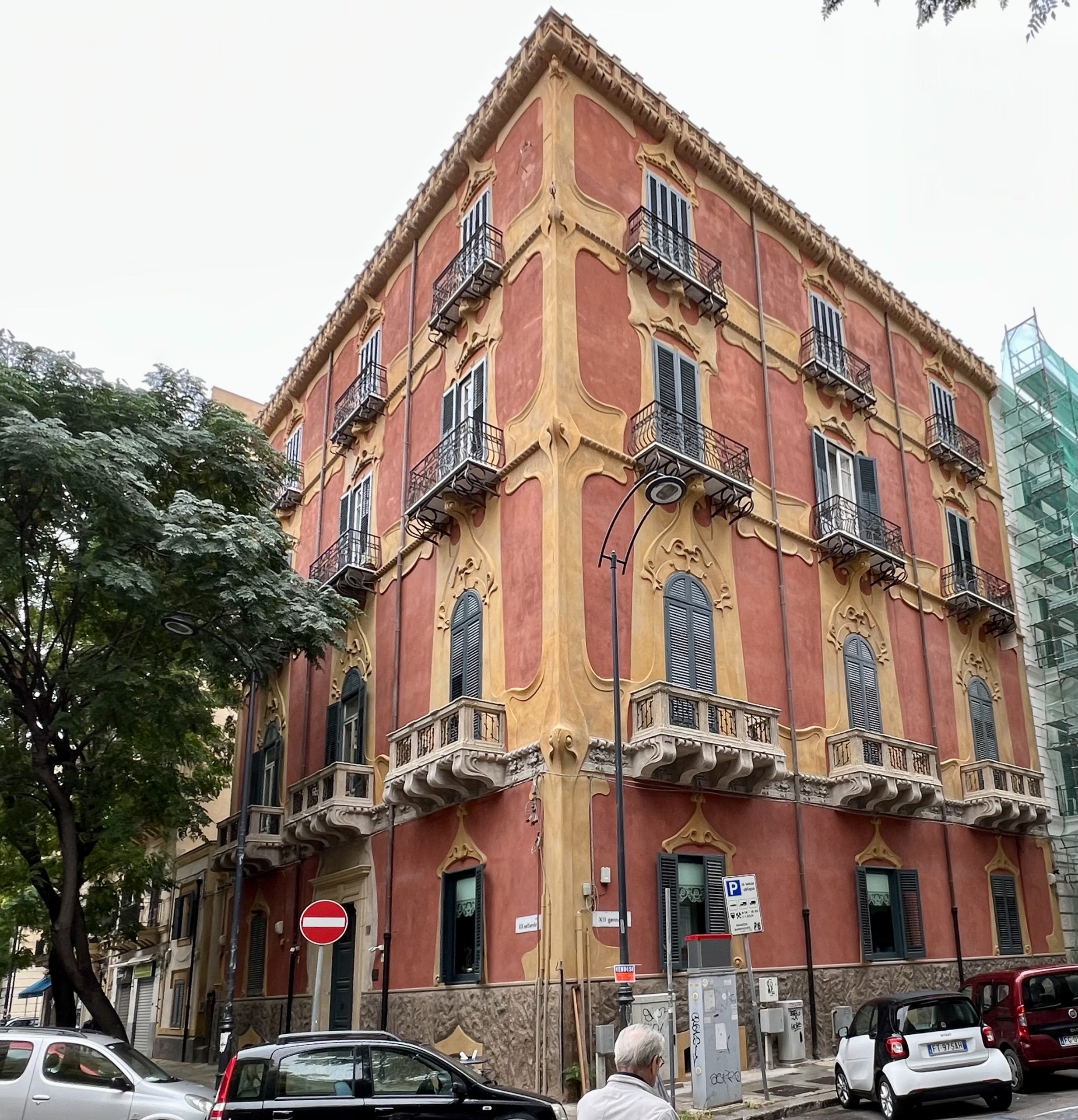
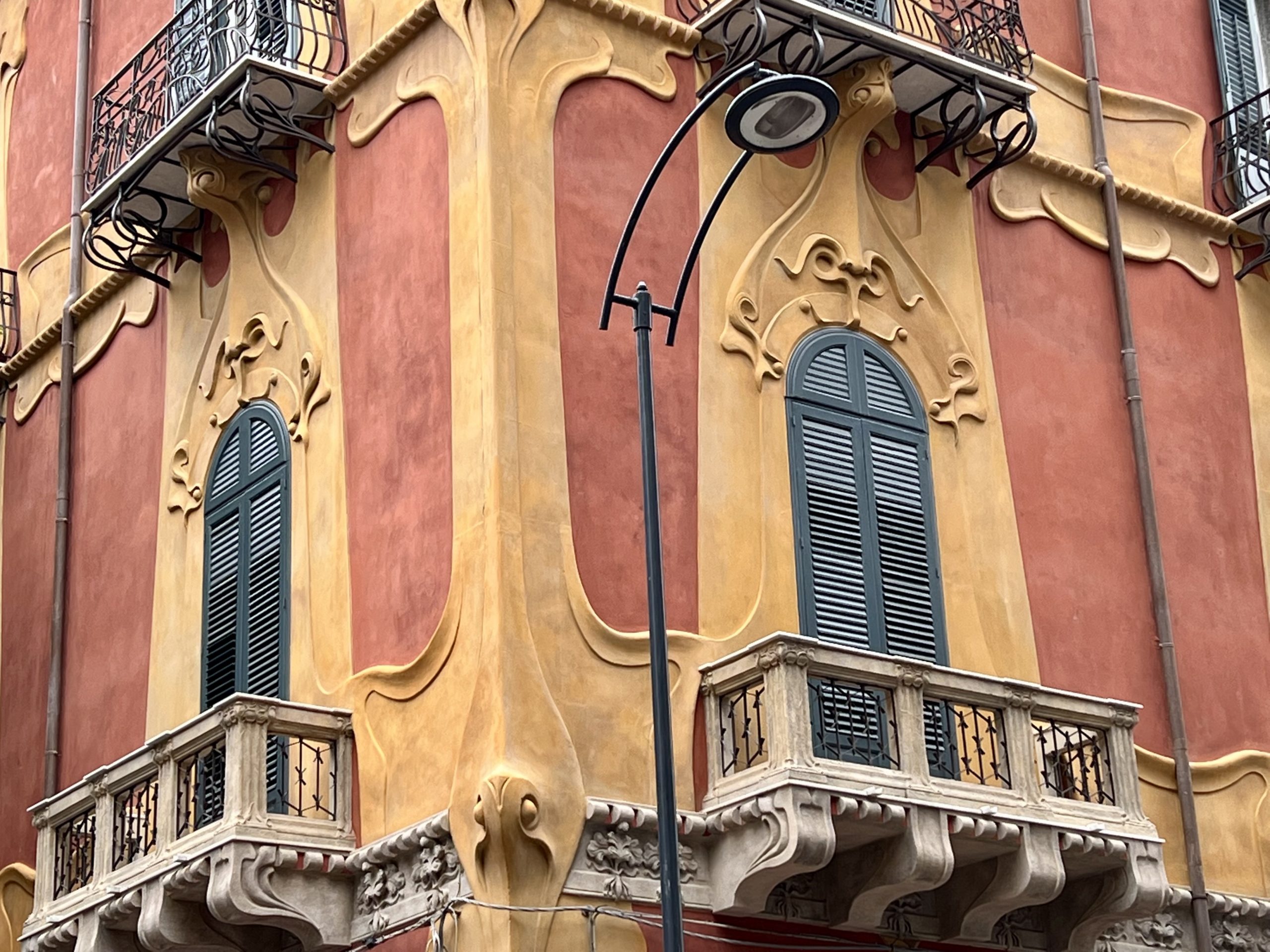
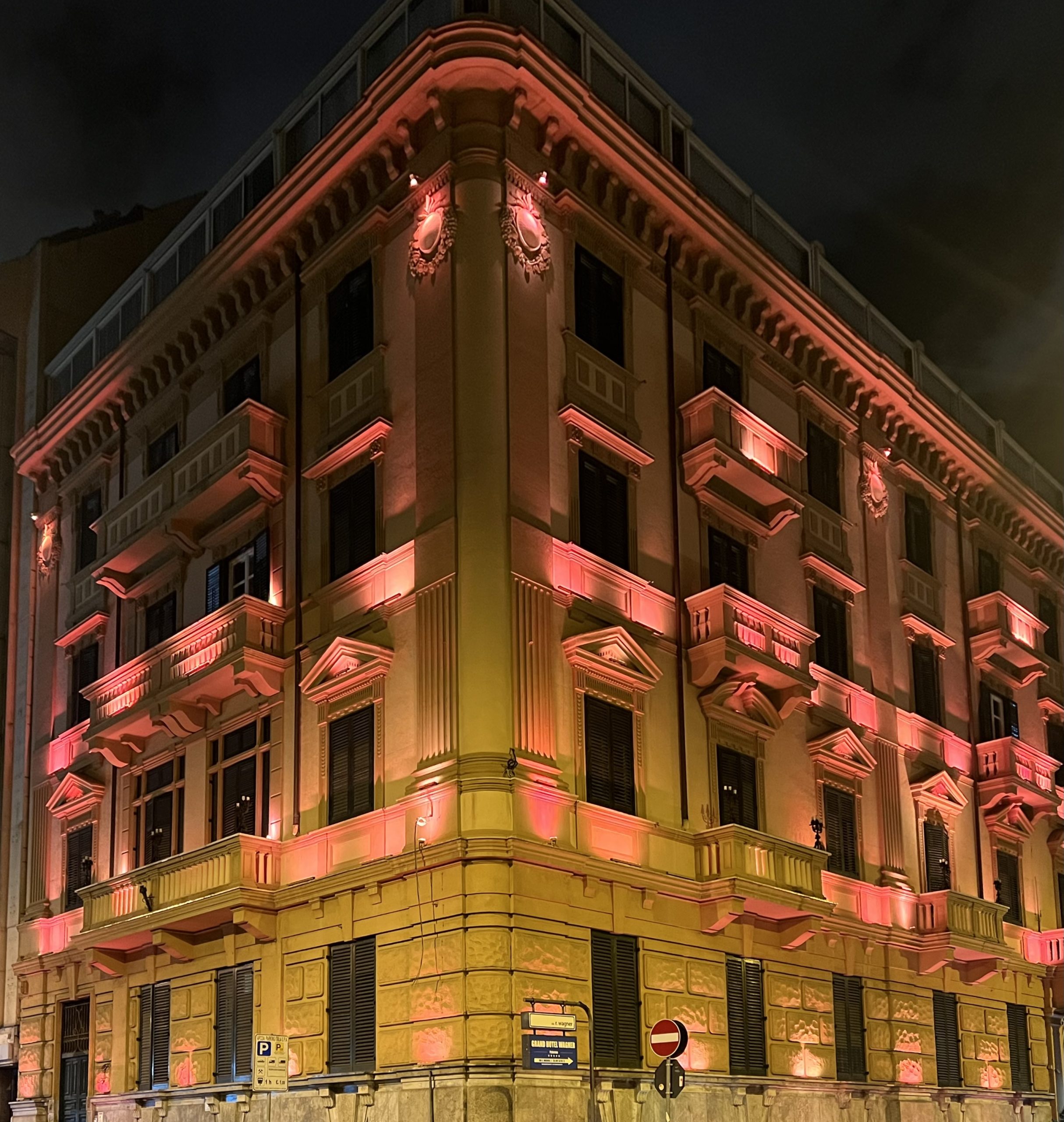
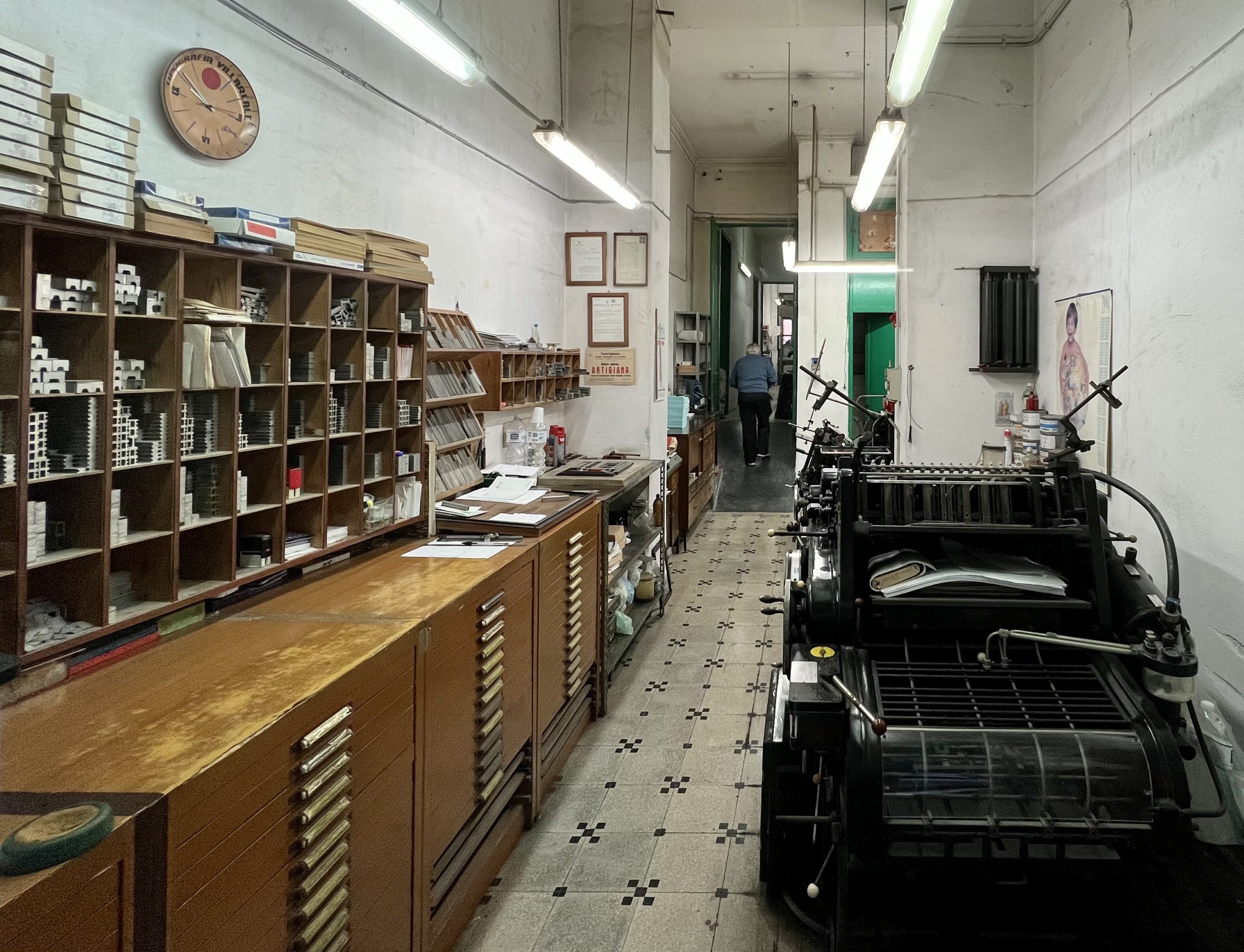
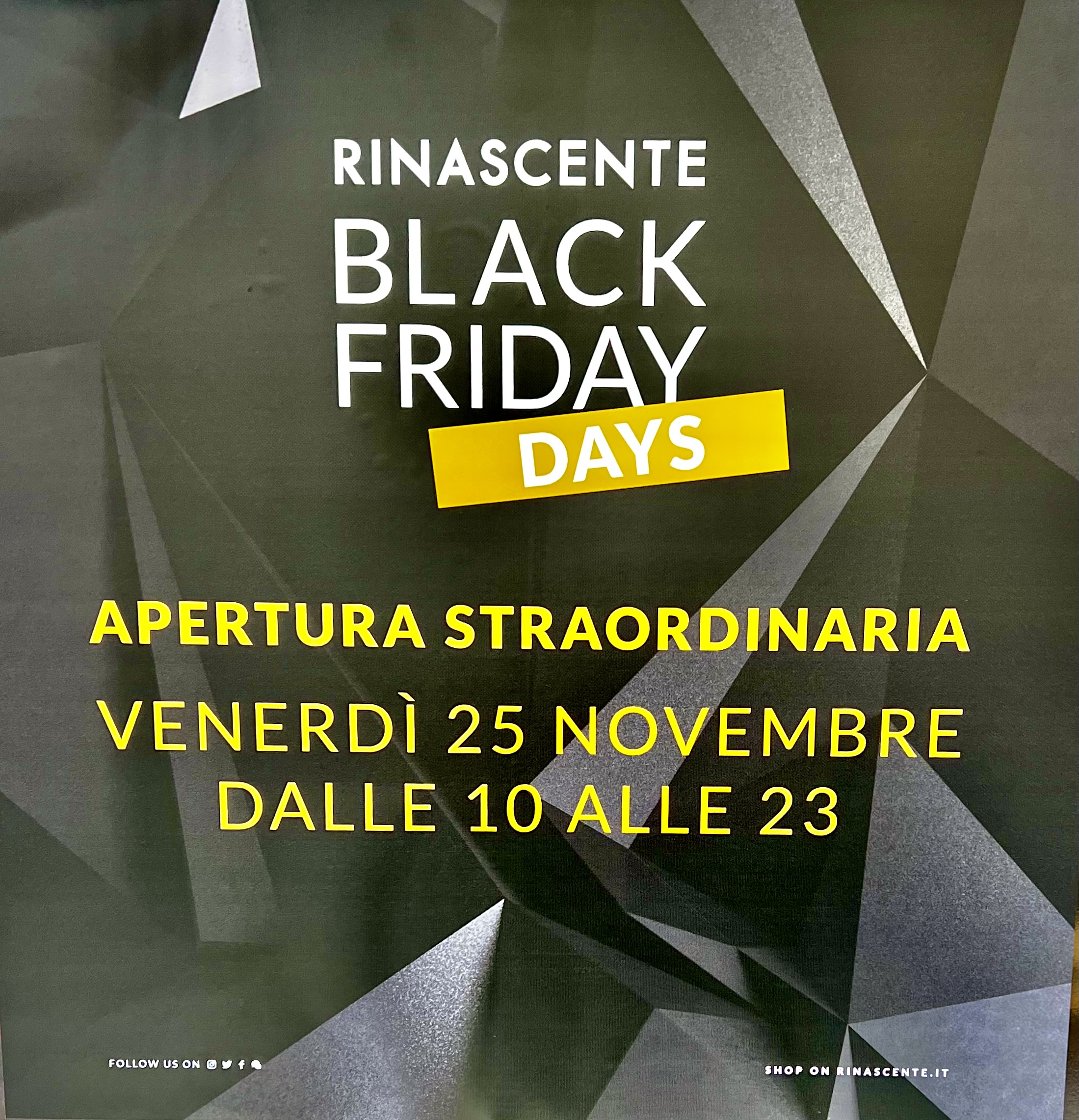
One Big Magnolia
Purported to be the largest tree of its kind—Ficus macrophylla—in Europe, this magnolia tree is in Marina Square. It is said to be more than 150 years old, planted in 1863. It is 32 meters tall.
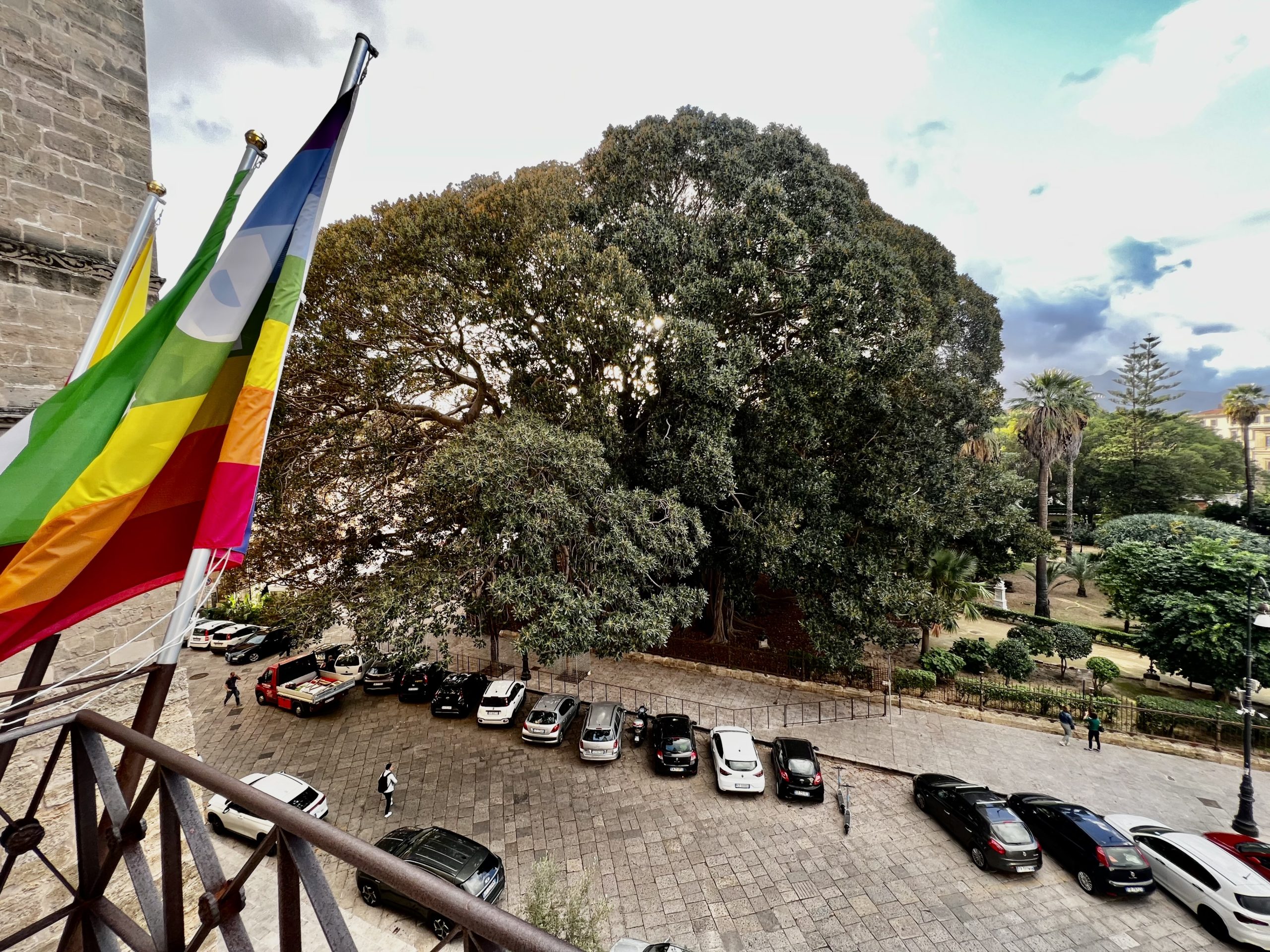
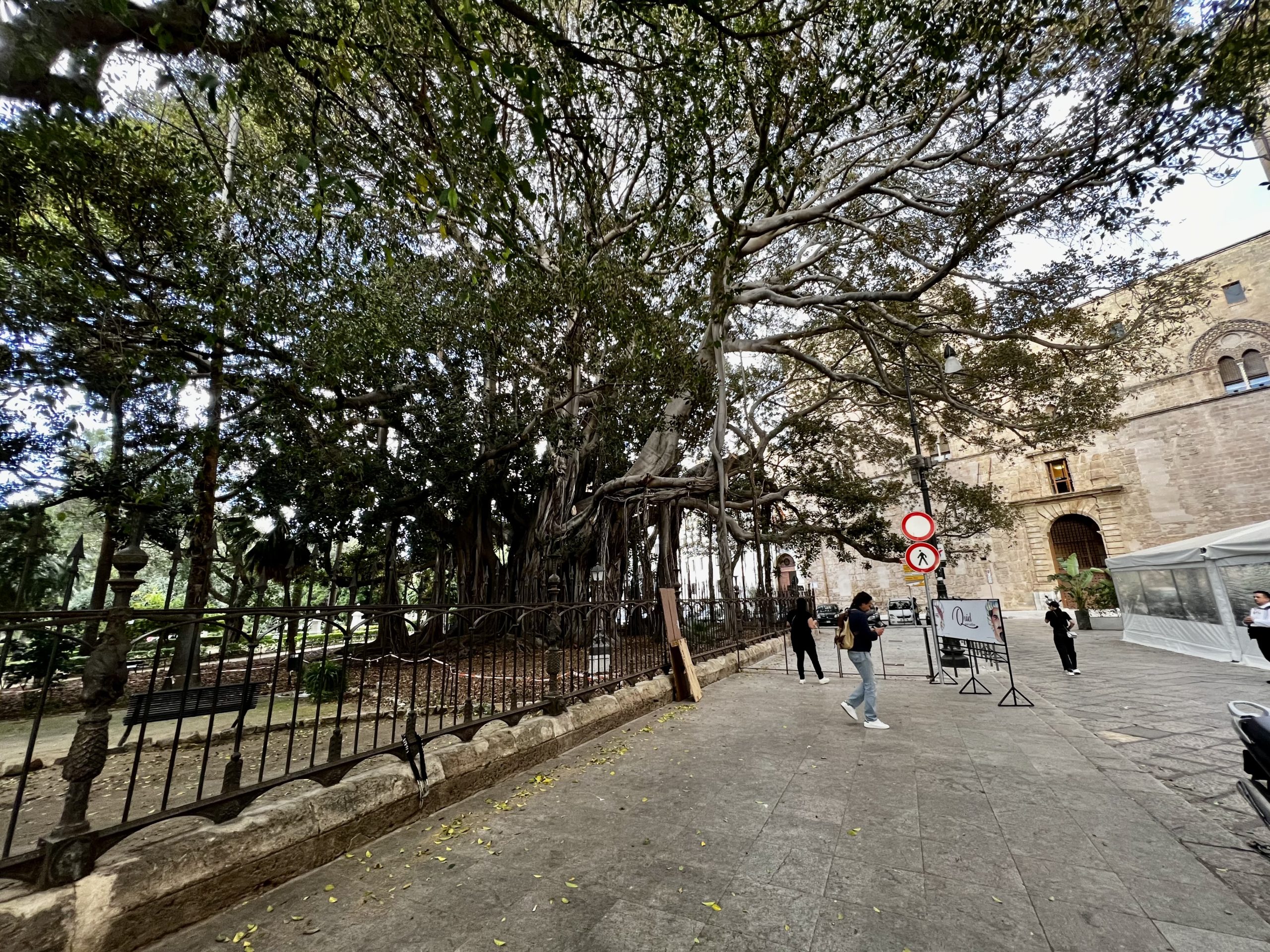
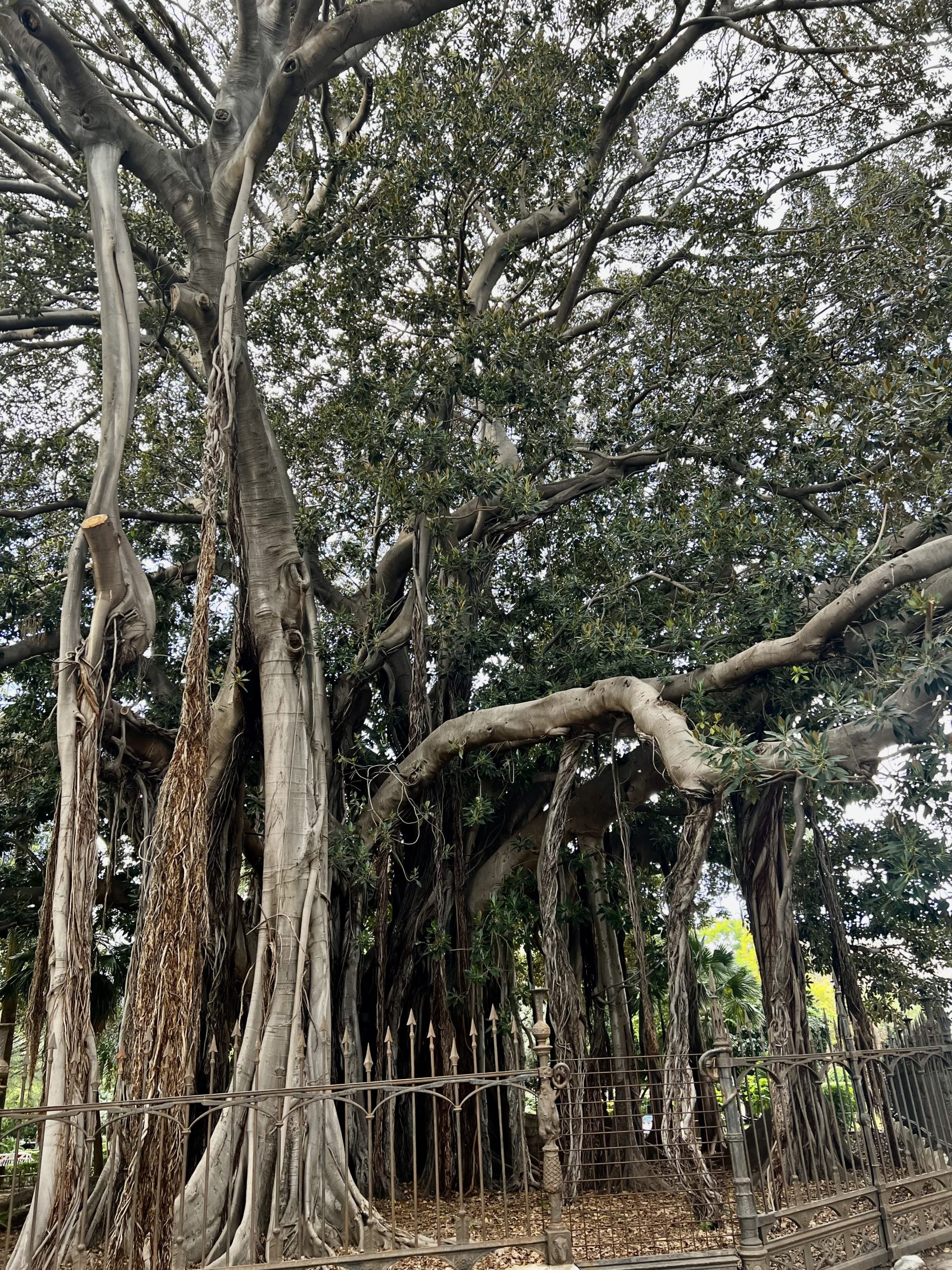
Palazzo Chiaramonte Steri
We saw this remarkable prison of the Inquisition on our last visit and we made sure that Richard saw it on this trip. The walls of the prison cells are covered with drawings, writing, and other graffiti done by prisoners. The palazzo, facing Marina Square, was built in 1320 and in the 15th century it housed Aragonese-Spanish viceroys of Sicily. From 1600 to 1782 it housed the tribunal of the Holy Inquisition. The Inquisition was not only in Sicily. It started in France and spread to Spain, Portugal, and what is now Italy. Its aim was to combat heresy against the Catholic Church. If you were suspected of heresy or reported as such without any proof, you were subject to imprisonment and torture. The inquisitors were generally chosen from the Dominican Order, starting around the 1250s. Terrible times.
The prisoners were kept in cells housing ten to twenty people. The prisoners used either the soil in the cell or carbon from their candles to write on the cell walls. You can see that the prisoners came from many countries, some wrote in English. Each time the cell was turned over, the Dominicans whitewashed the walls for a fresh set of scribing and drawings. What we see is the most recent layer. It is chilling to see the actual graffiti done by these prisoners.
On this visit, the rest of the palazzo was open for viewing. It holds historic and contemporary art.






















Jazz
Jazz is a big deal in Palermo as in many parts of Italy. Domenico invited Richard and Robert (Bonnie slept) to an early hour of jazz. The pianist at the first venue was Domenico’s instructor years ago. The drummer, who appears to be the head of the trio, called for a break after the Italian audience couldn’t stop talking during the performance. He was not a happy camper. On our walk back, we heard two other venues, all very good.
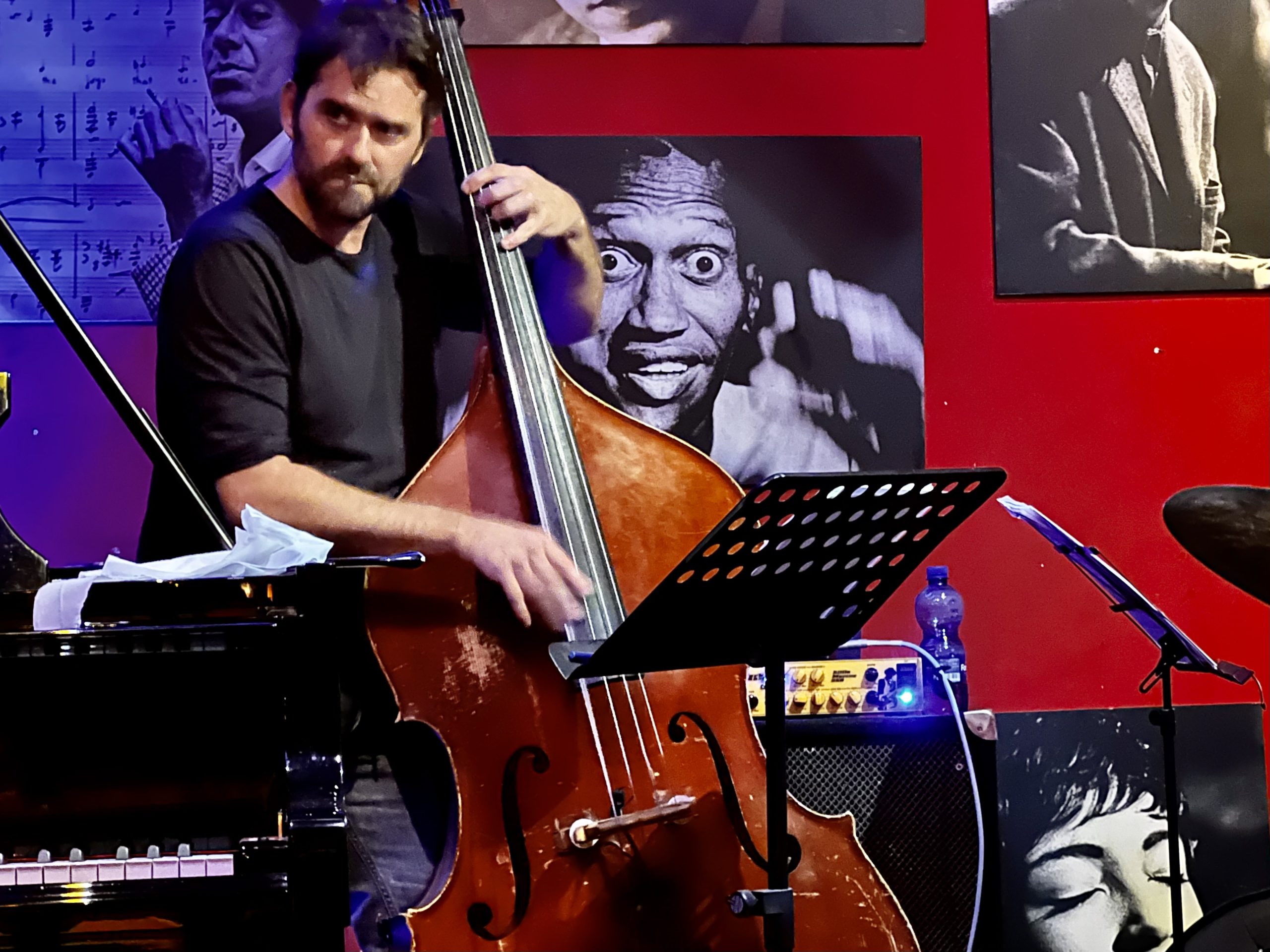
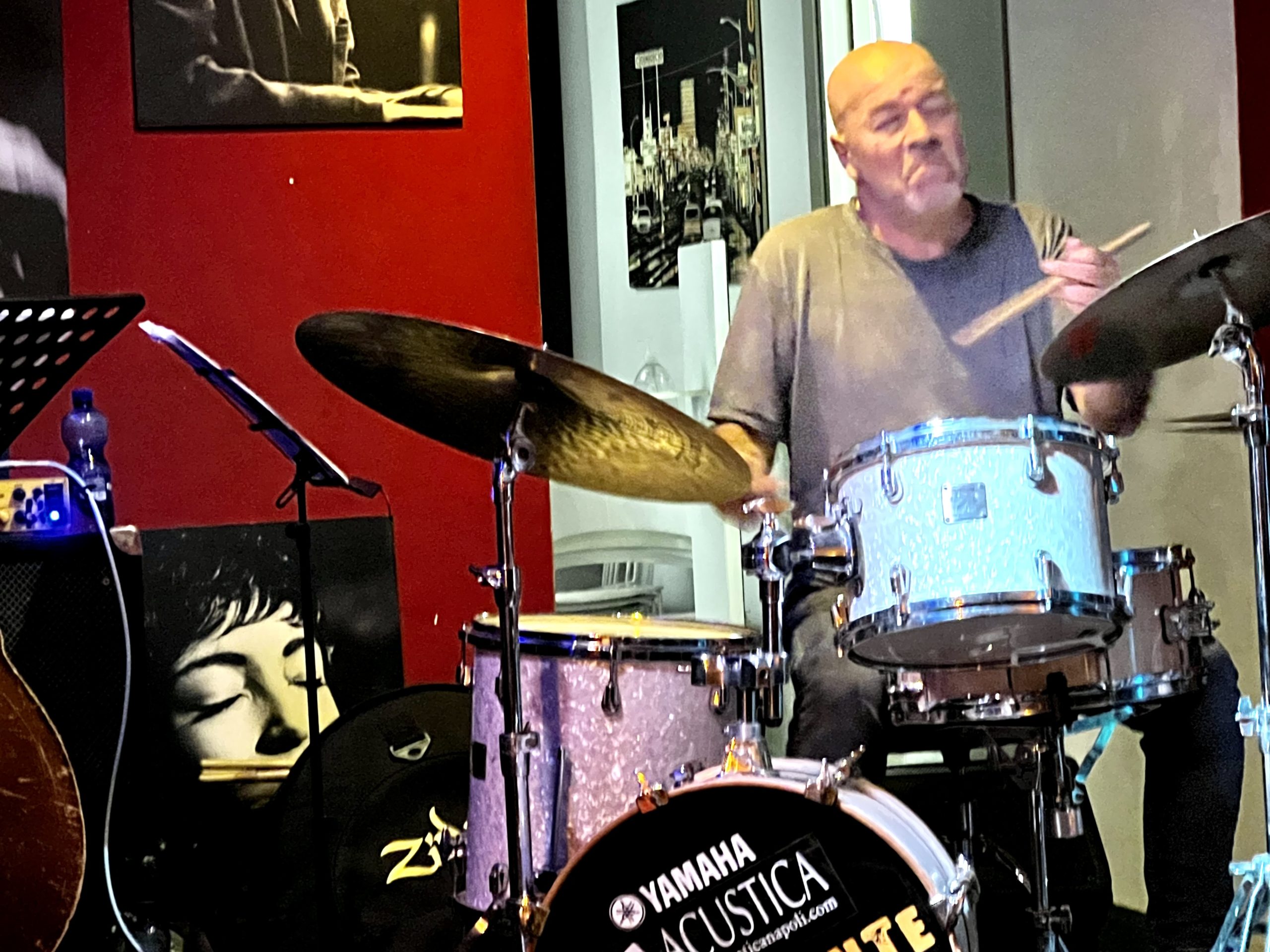
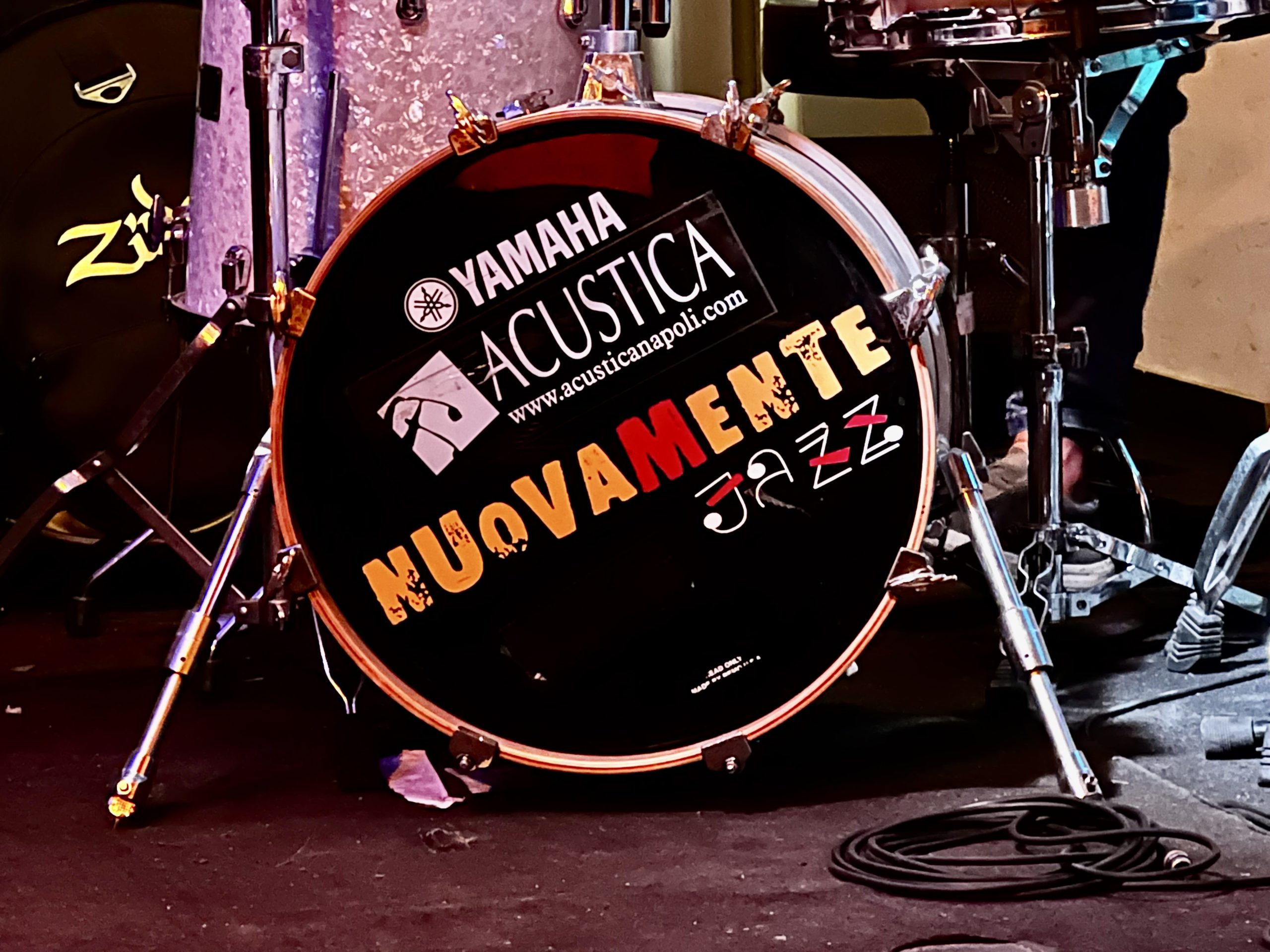
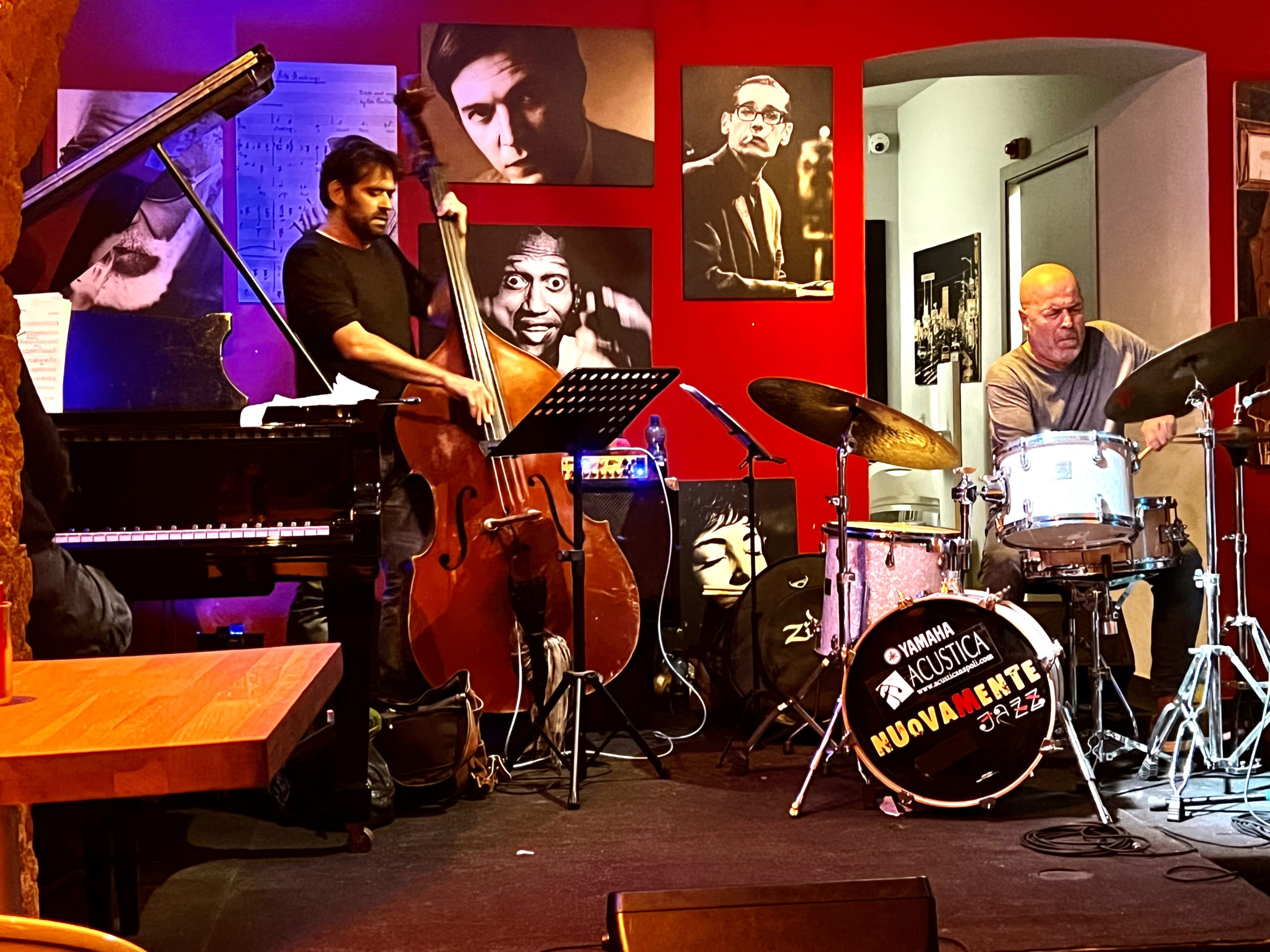

Driving in Palermo is like improvising Jazz
There is always something coming at you that you don’t expect and you have to react with speed and style. Bonnie rode shotgun with Domenico driving and got a real sense of what it takes for an expert to weave smoothly through Palermo traffic.
Imagine this sequence with no more than five seconds between each event.
- Pull out of parking slot
- Dodge random pedestrian
- Swerve around double-parked car
- Slow at uncontrolled intersection
- Avoid car pulling out ahead
- Turn
- Turn again sharply
- Swerve for unexpected pedestrian
- Slow at stop sign (but don’t stop)
- Enter swirl in traffic circle
- Exit quickly
- Another pedestrian
- Another double-parked car
- Another car
- Another sharp turn
Cefalù
Domenico treated us to a day trip to Cefalù. We all got into his father Giuseppe’s Alfa Romeo Giulletta for the hour and a half drive east to this resort beach town. The town has a medieval center, lots of shops, and of course restaurants for a fish lunch. Domenico’s father is a kick. Full of antidotes about Sicily. Interested in movies. Quite animated and lots of fun to be with. Cefalù Is the site of several famous film scenes, the most notably, scenes from Cinema Paradiso (1988). It is also provides the backdrops for the new Harrison Ford movie (the fifth Indiana Jones) we expect to see soon. Although it is at a distance from Palermo, it is still a commune of that city. Small, with a population of just under 14,000, it is a major attraction to millions of tourists each year.
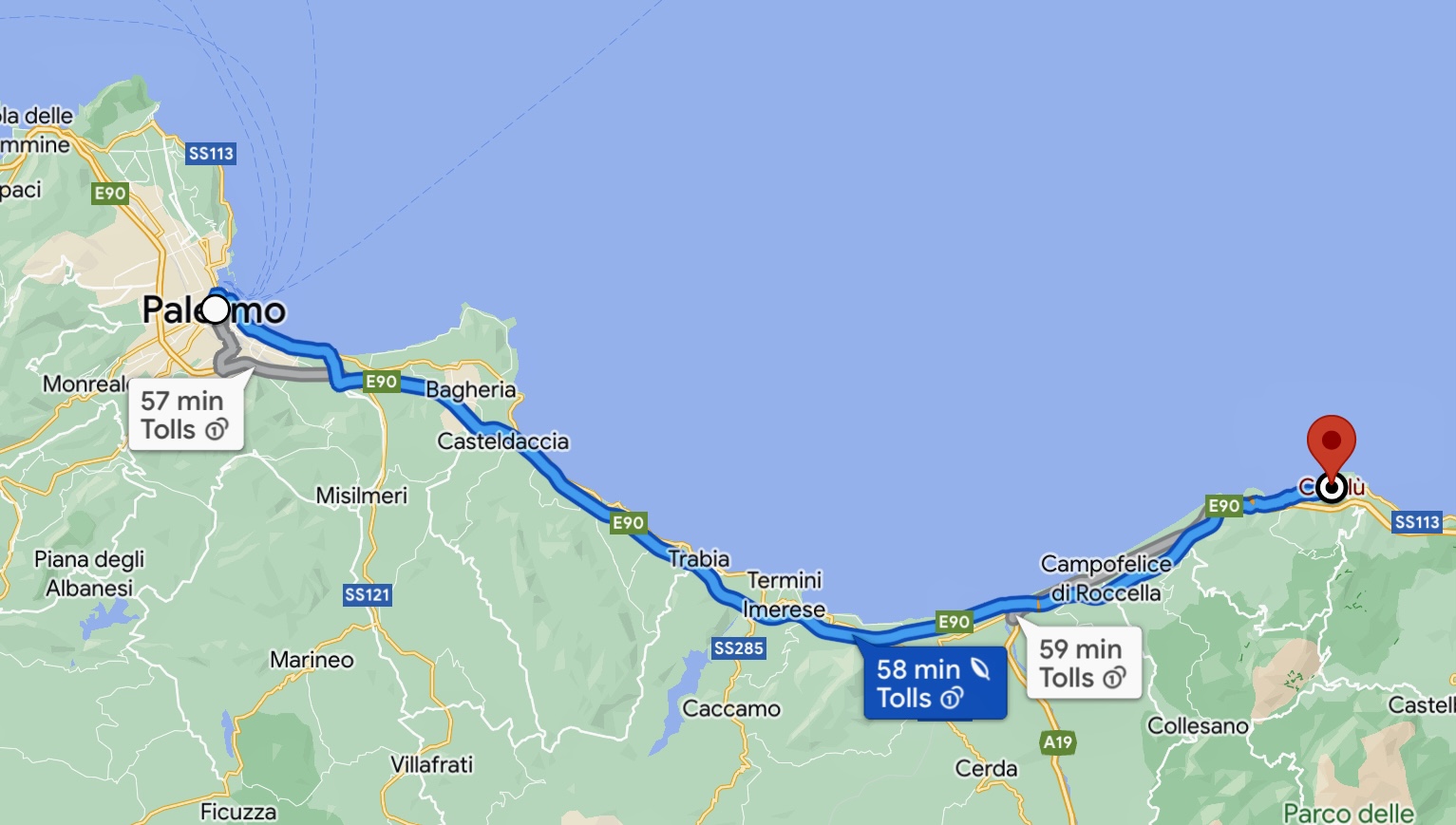

















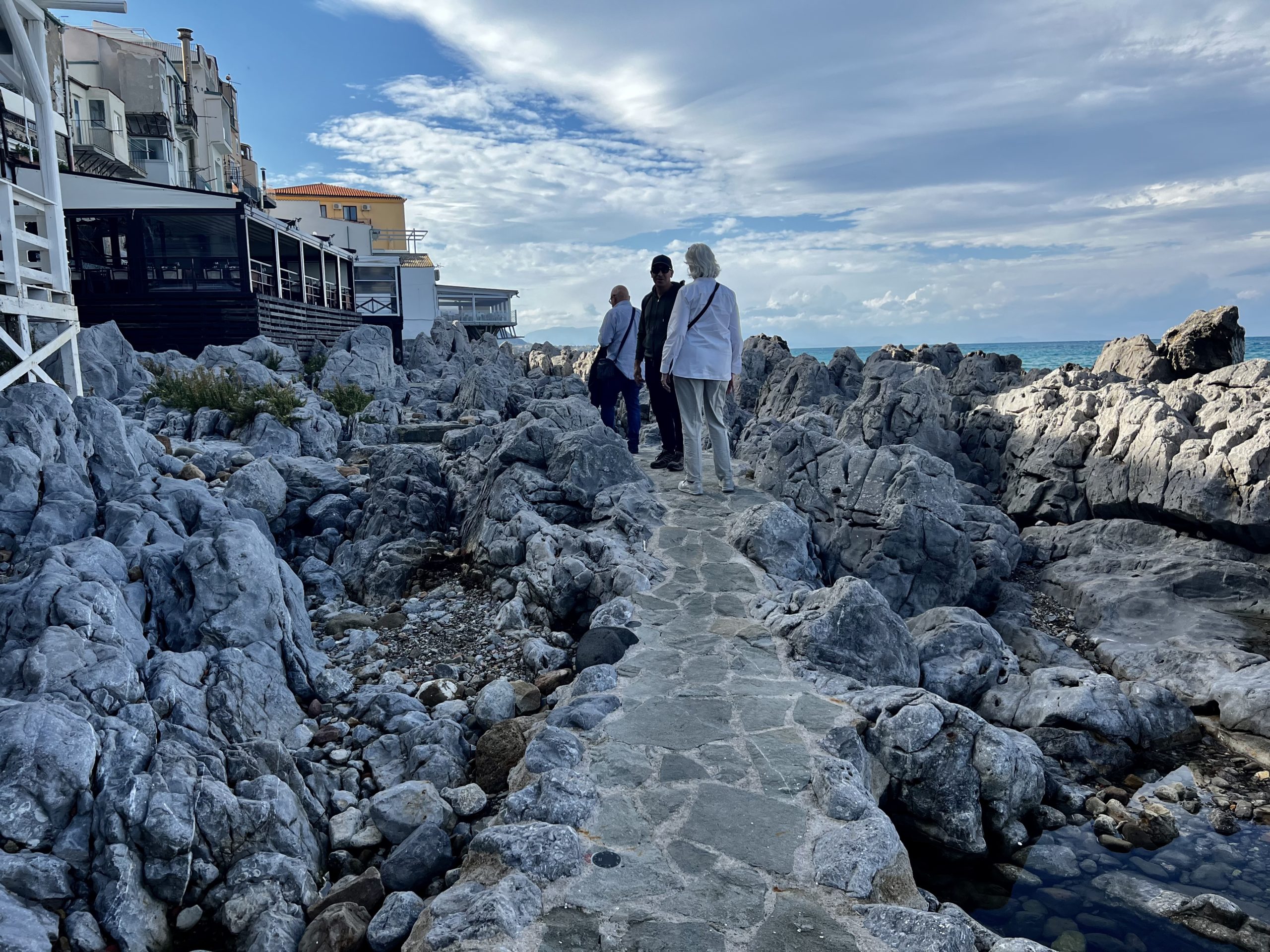



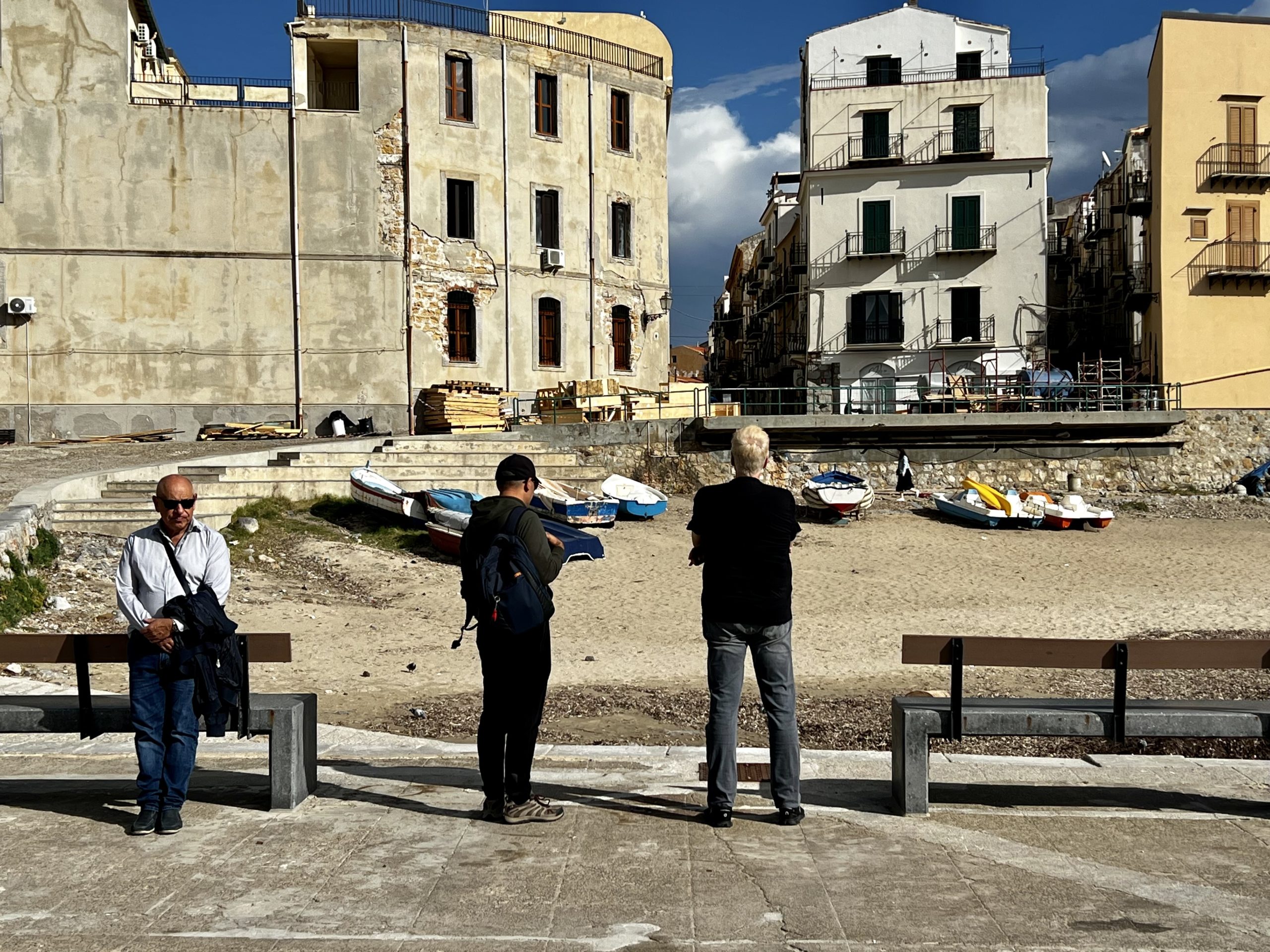





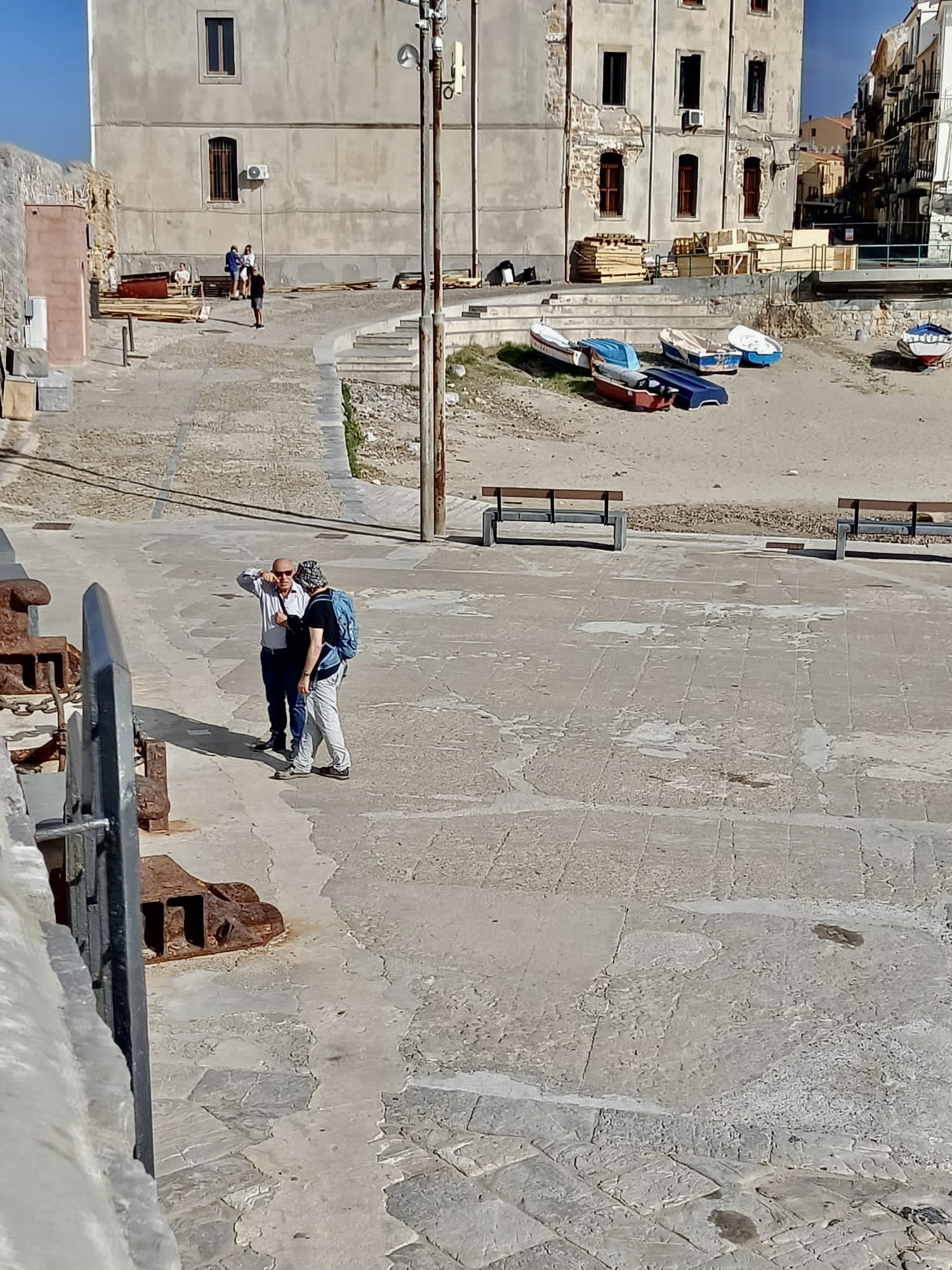
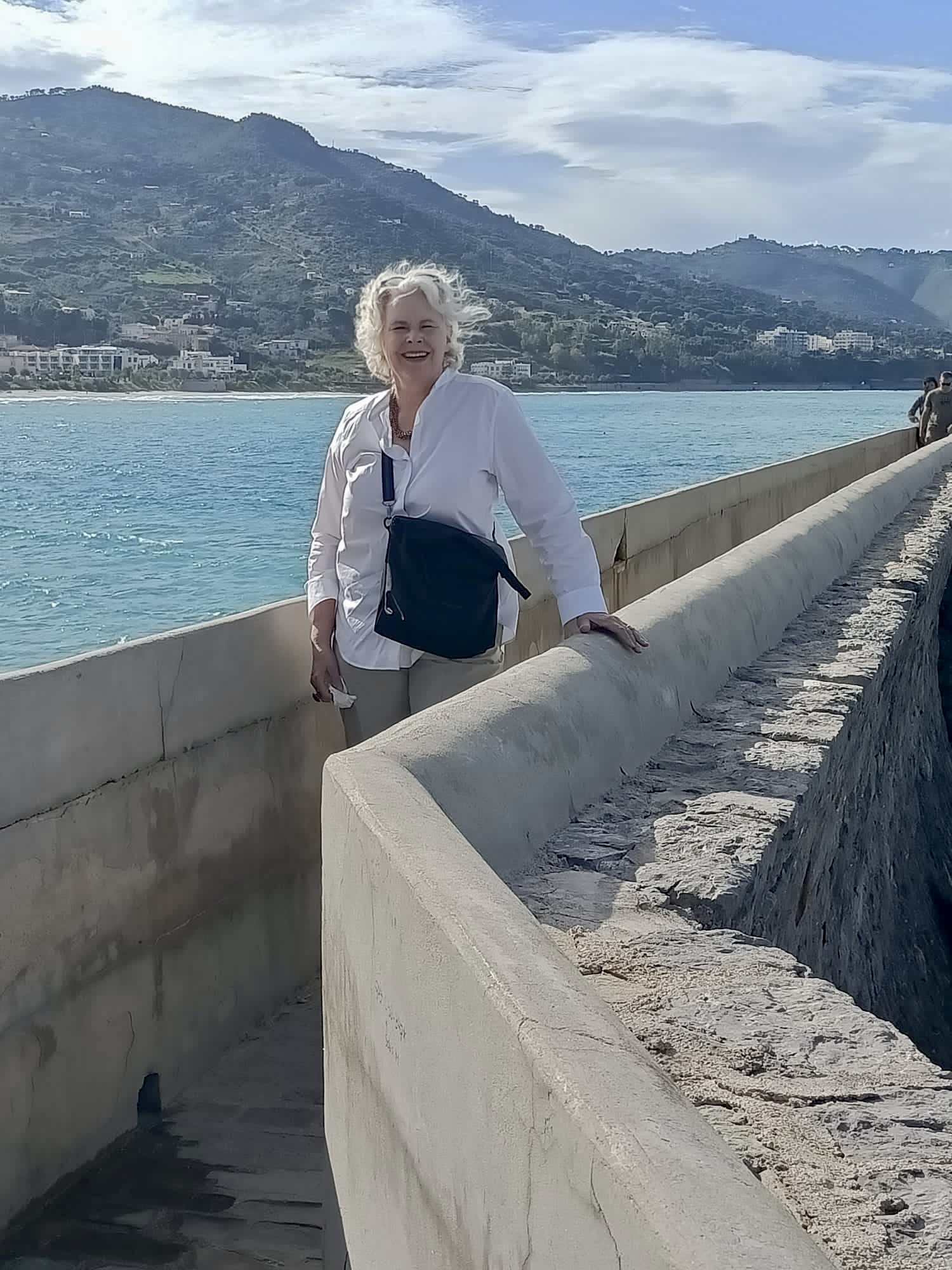
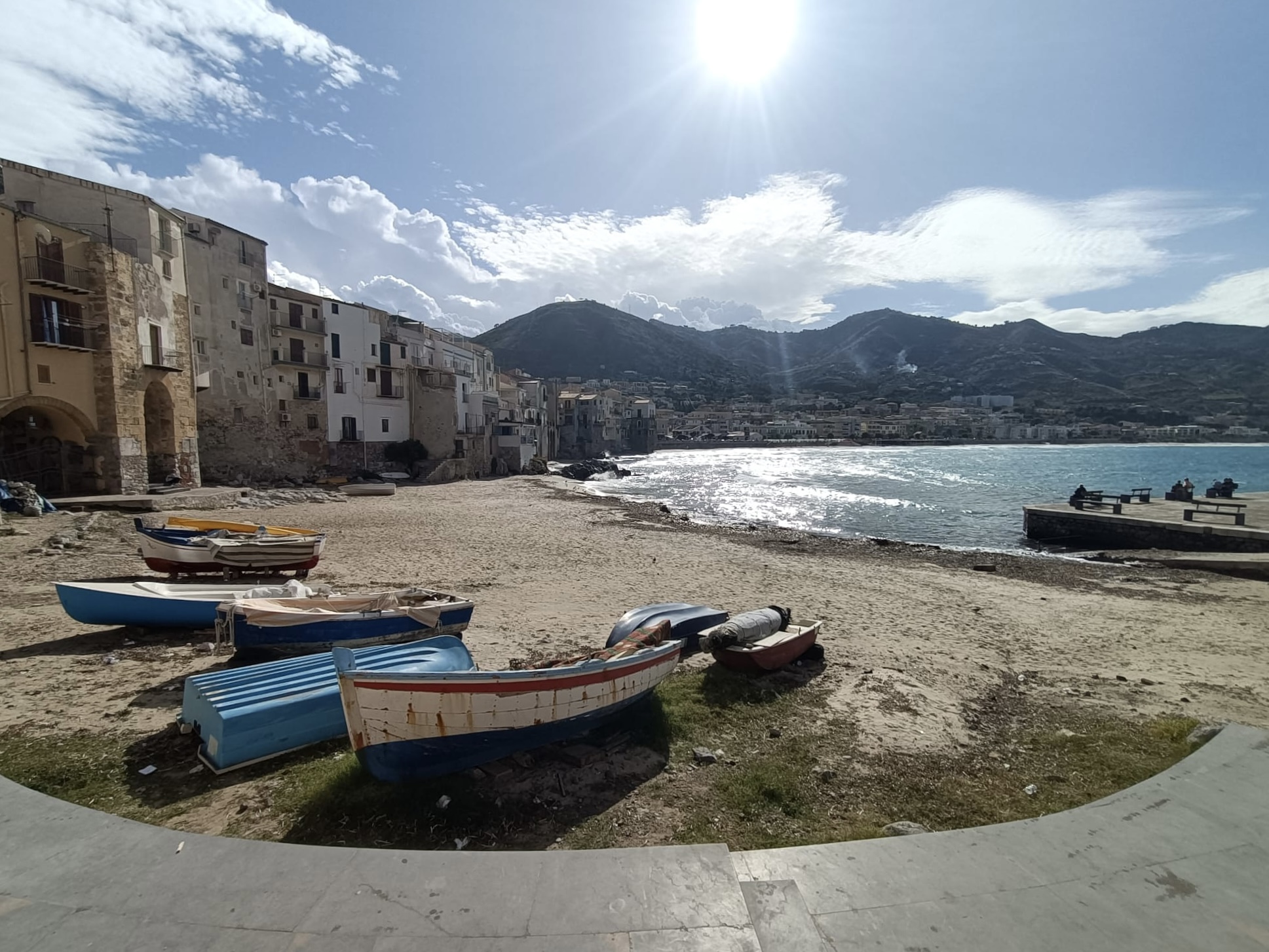


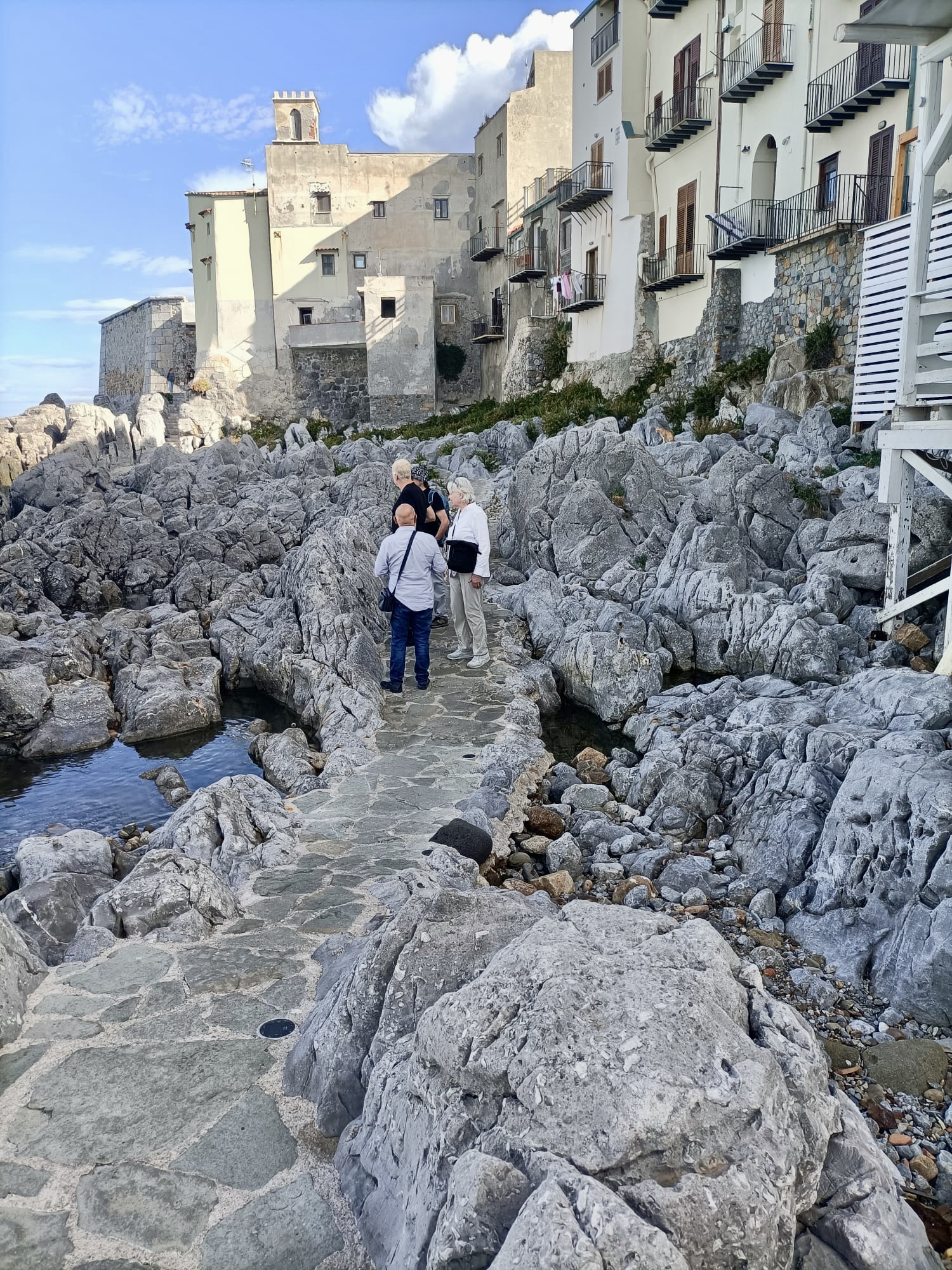



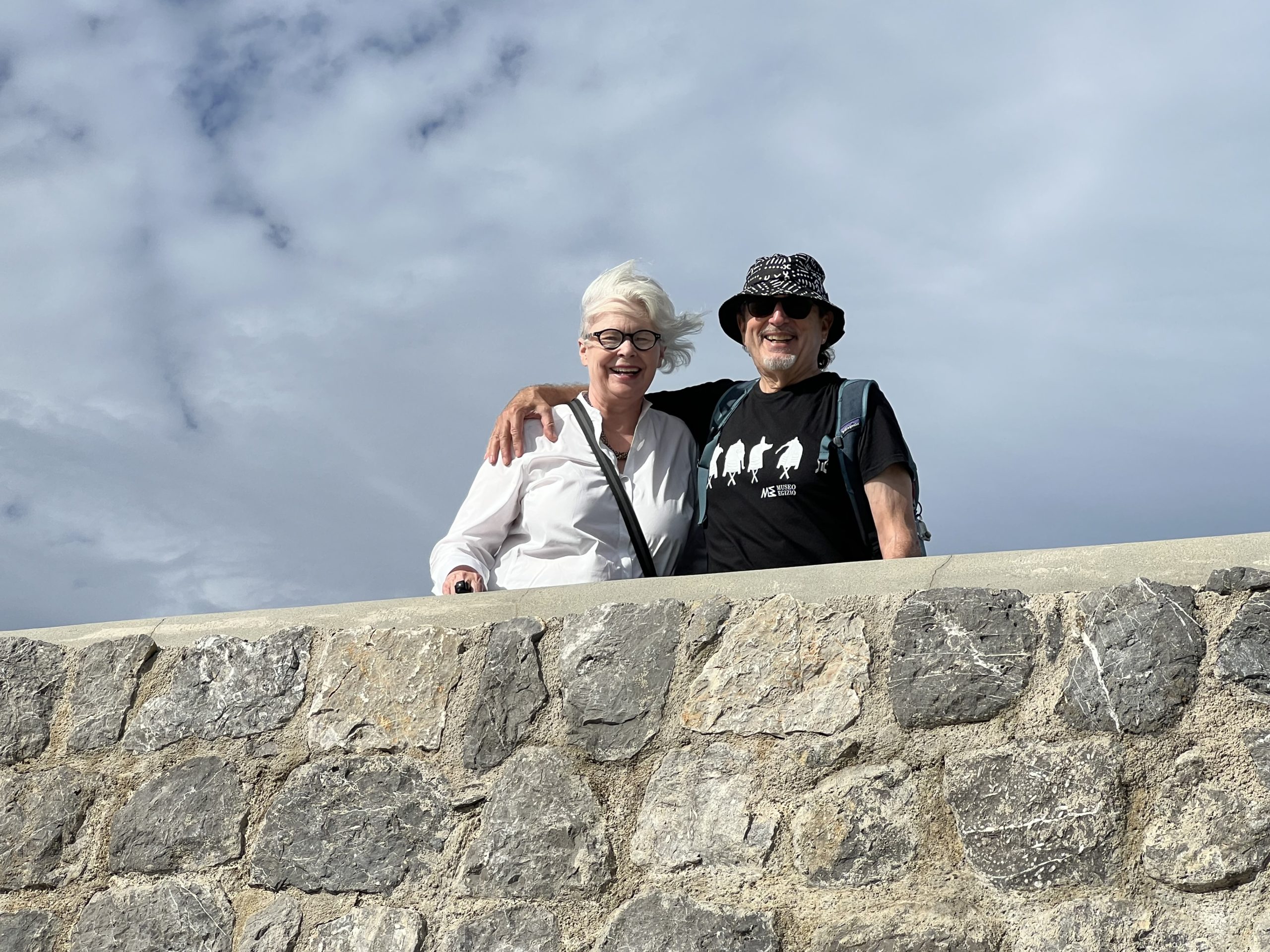

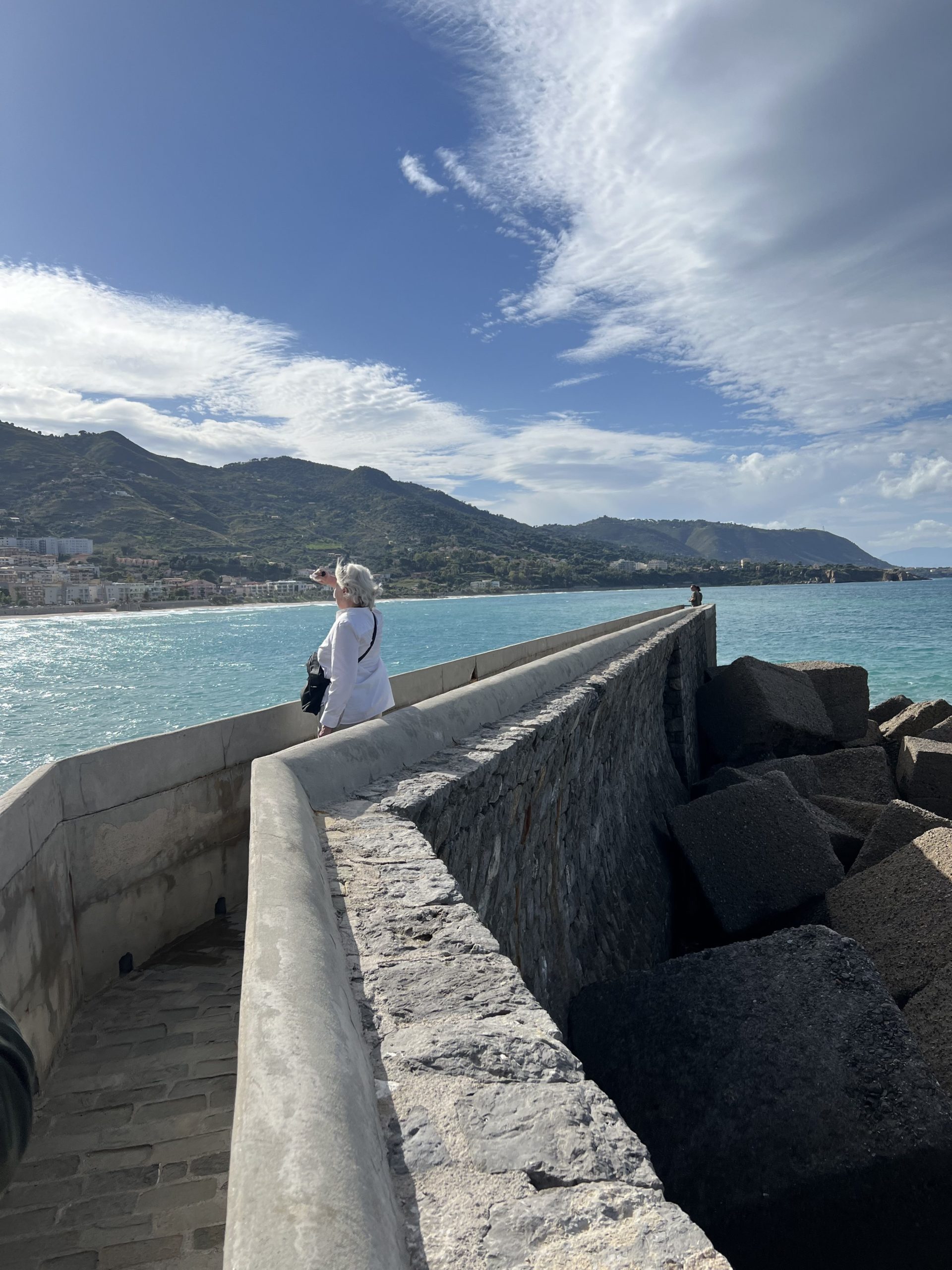
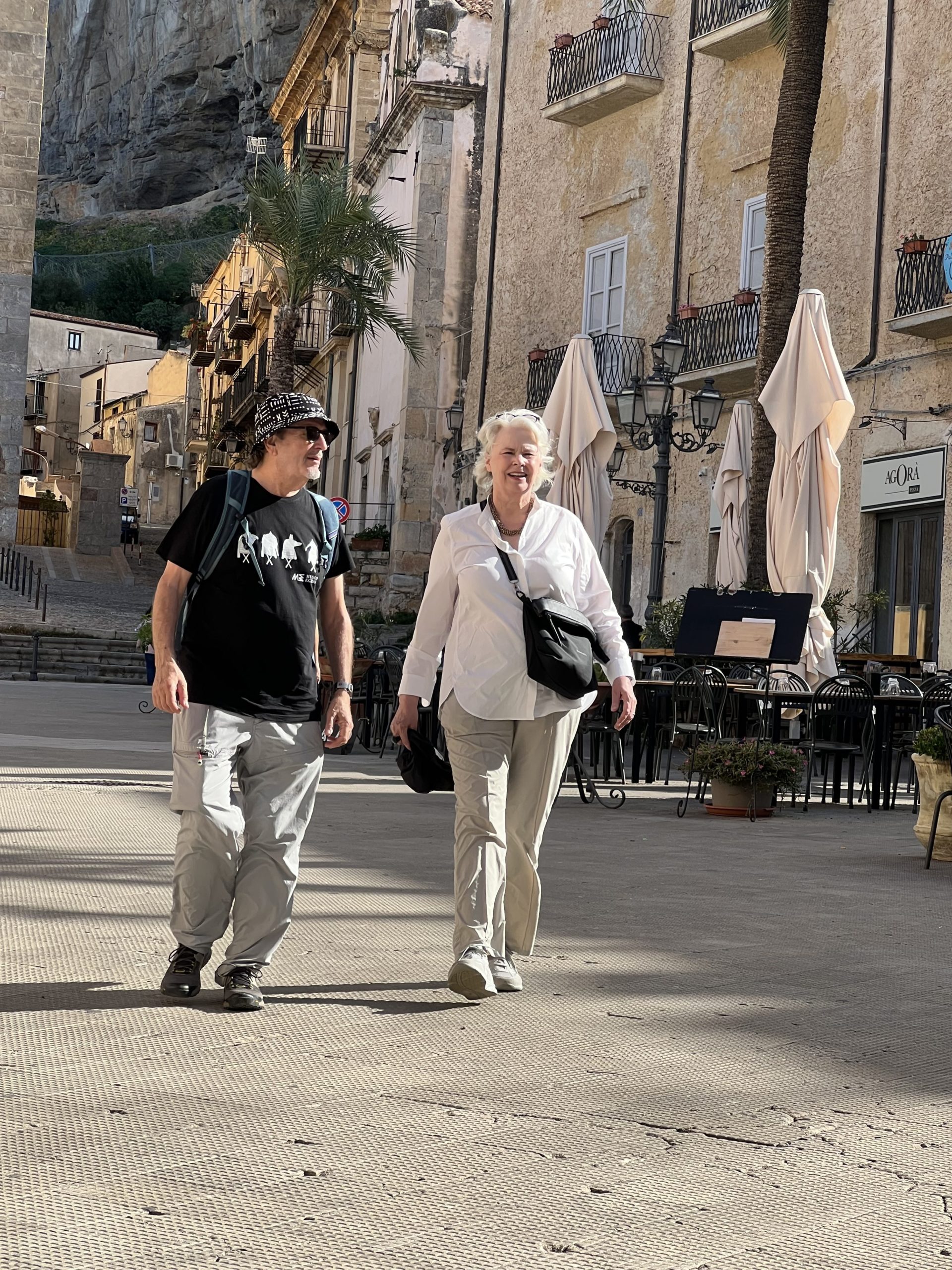
Cattedrale di Cefalù
Begun in 1131. Sicilian Romanesque. Known especially for the mosaics.


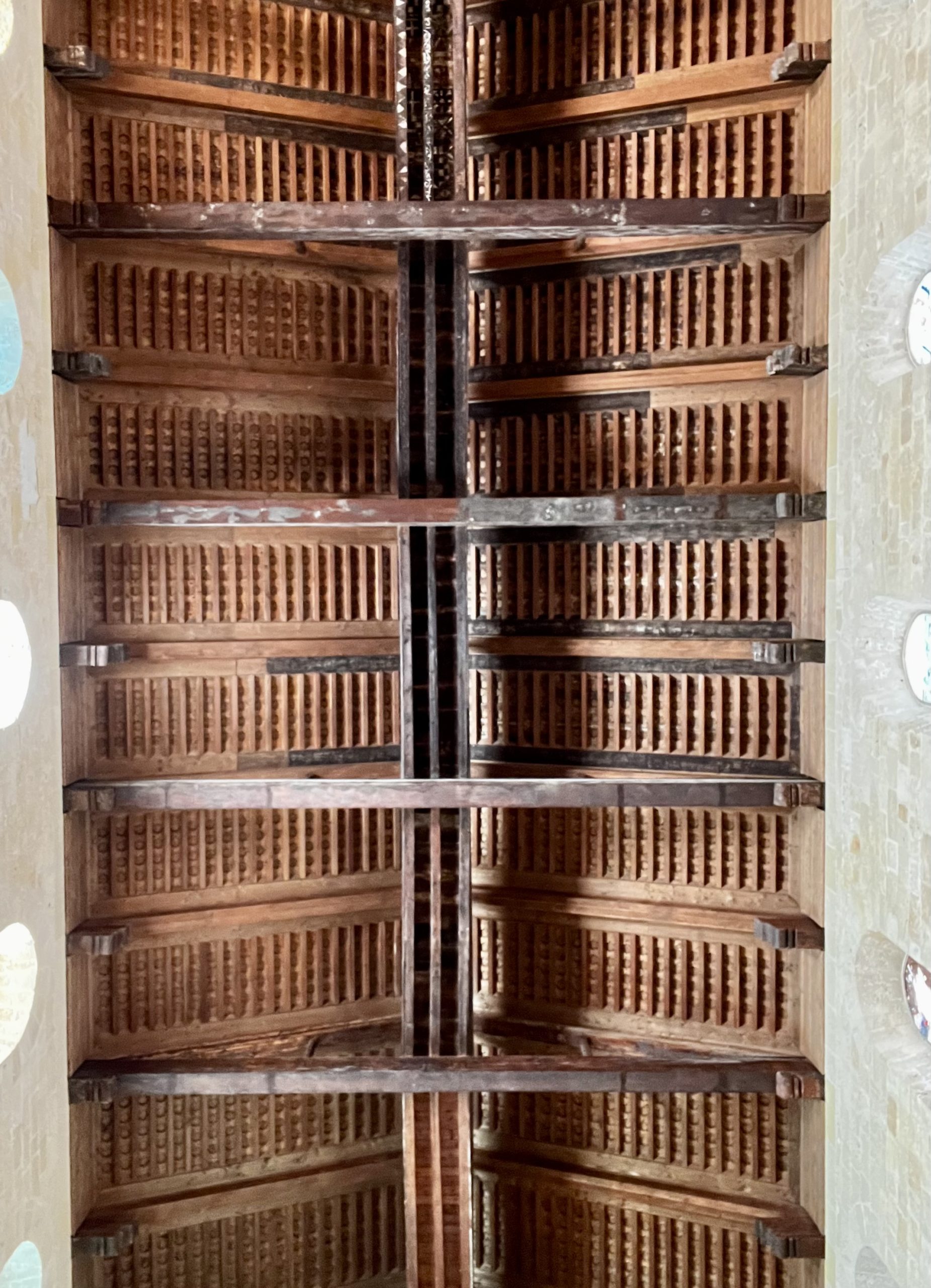
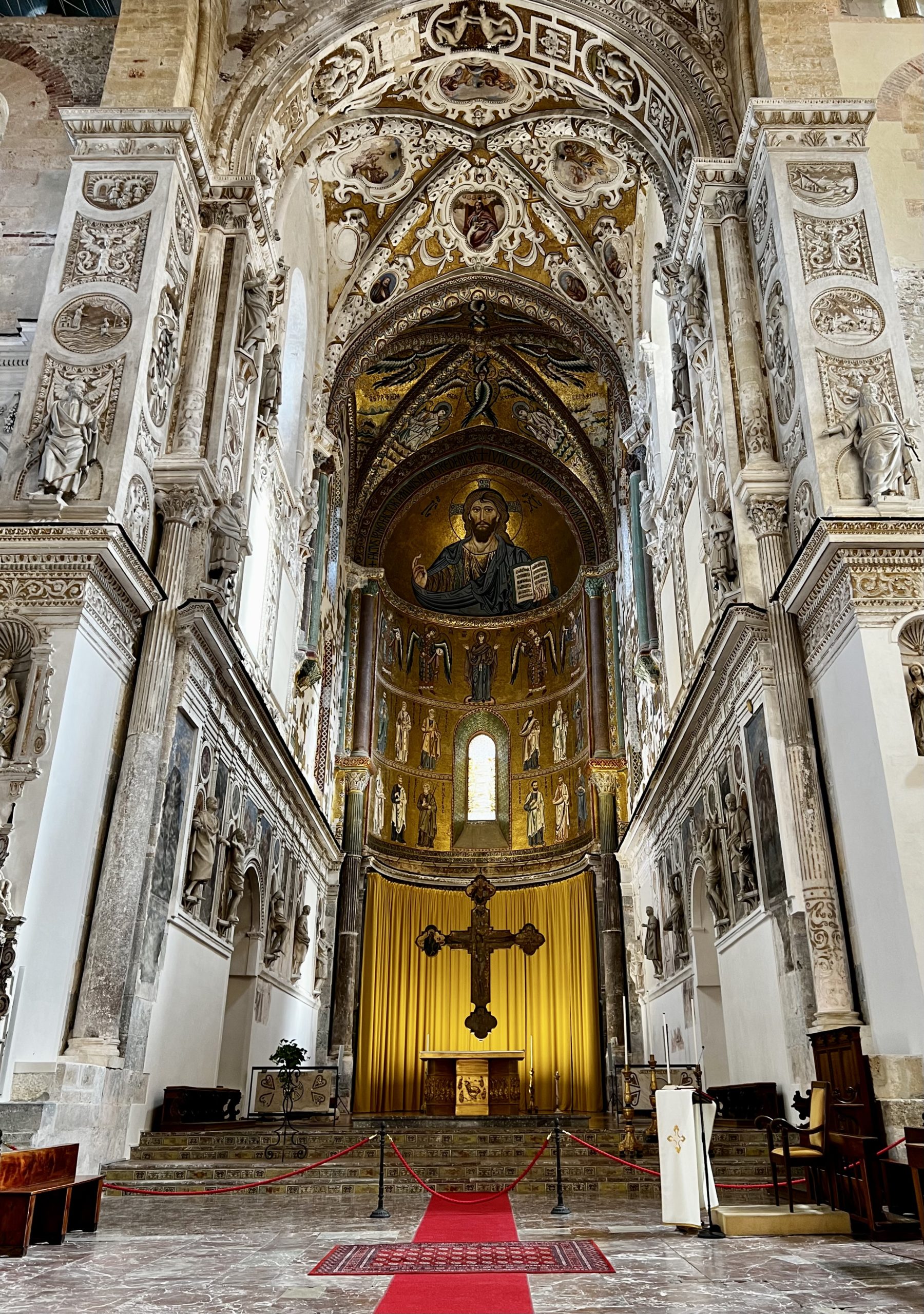
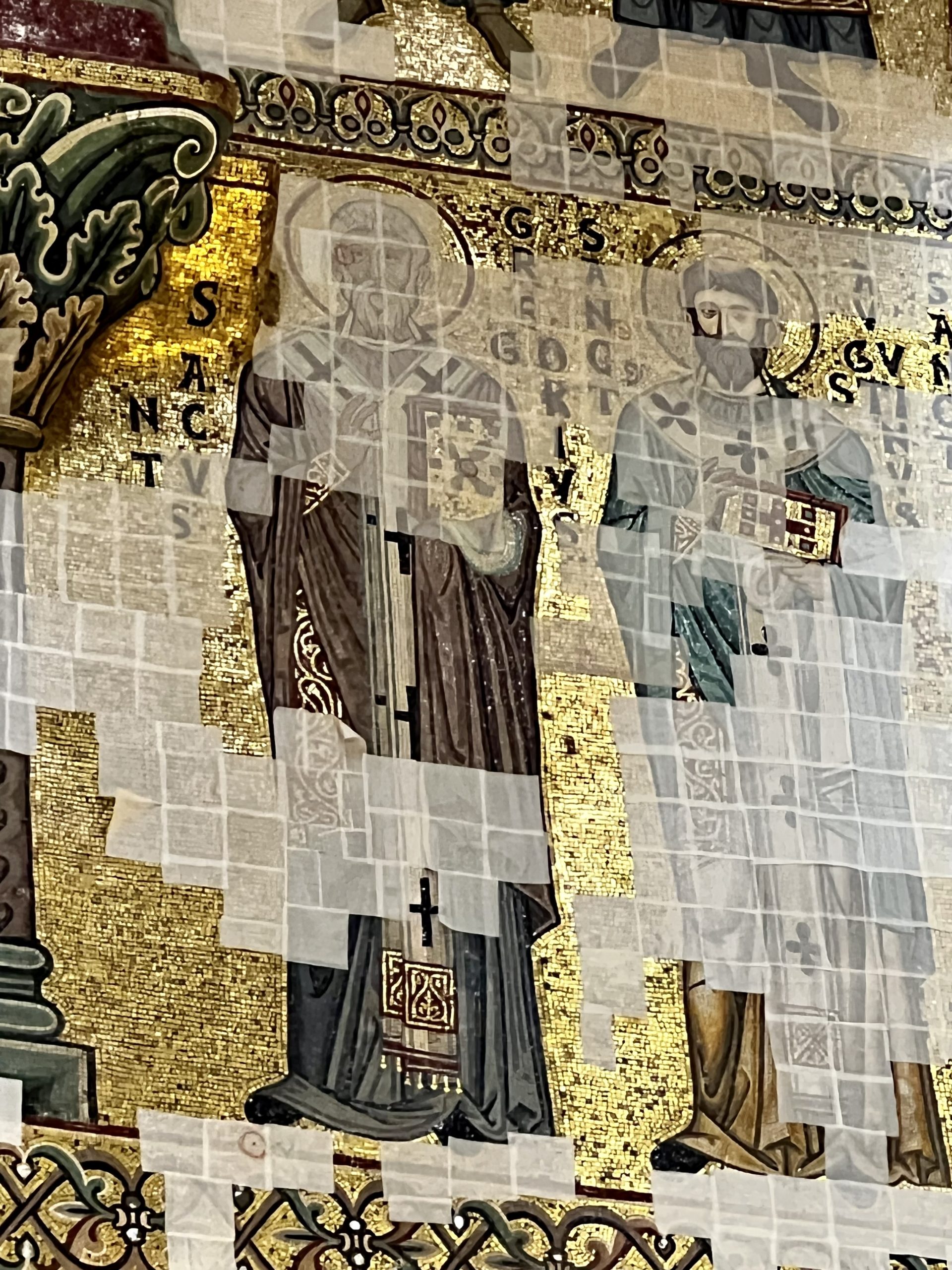

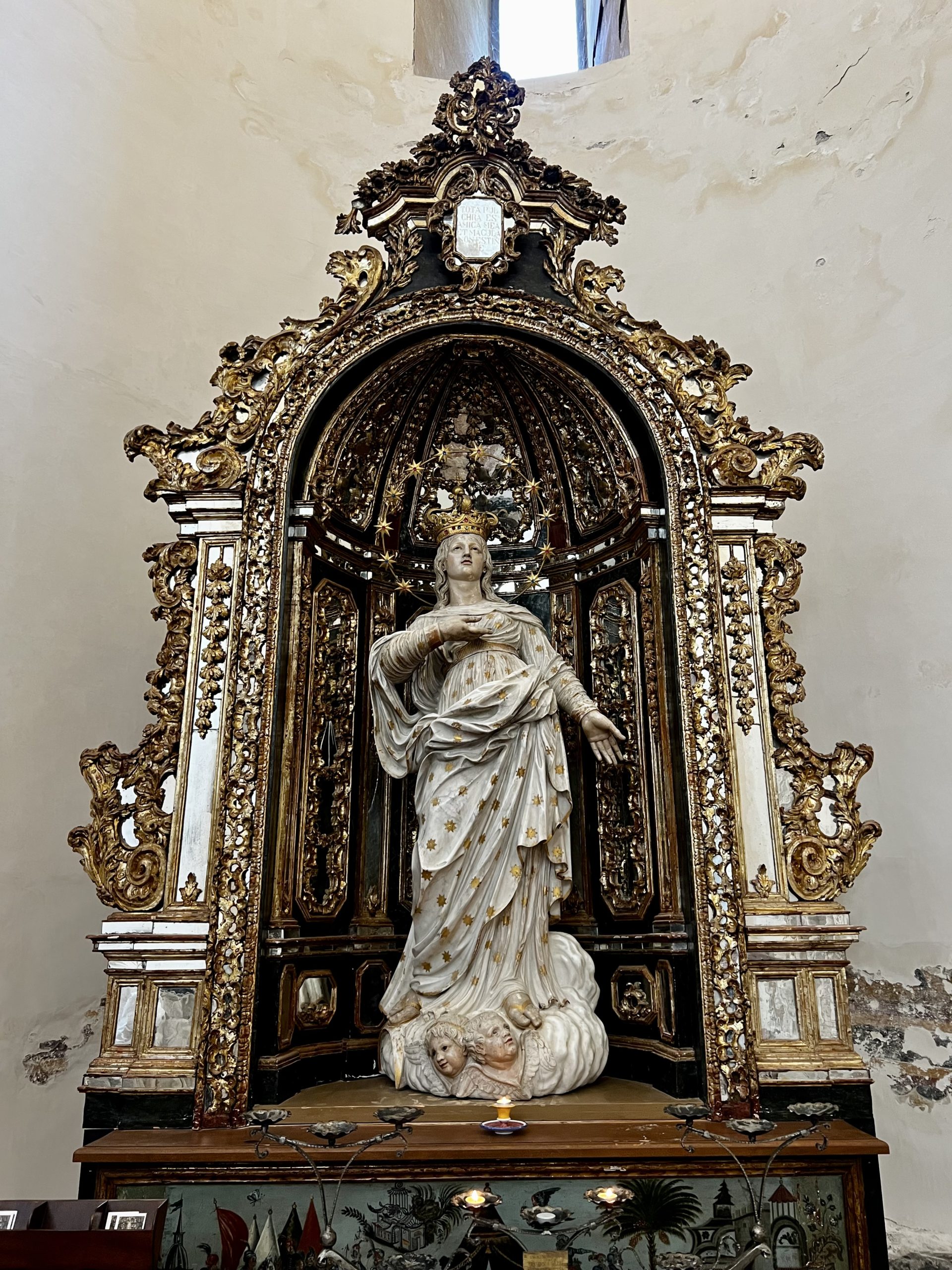






Pranzo a Cefalù
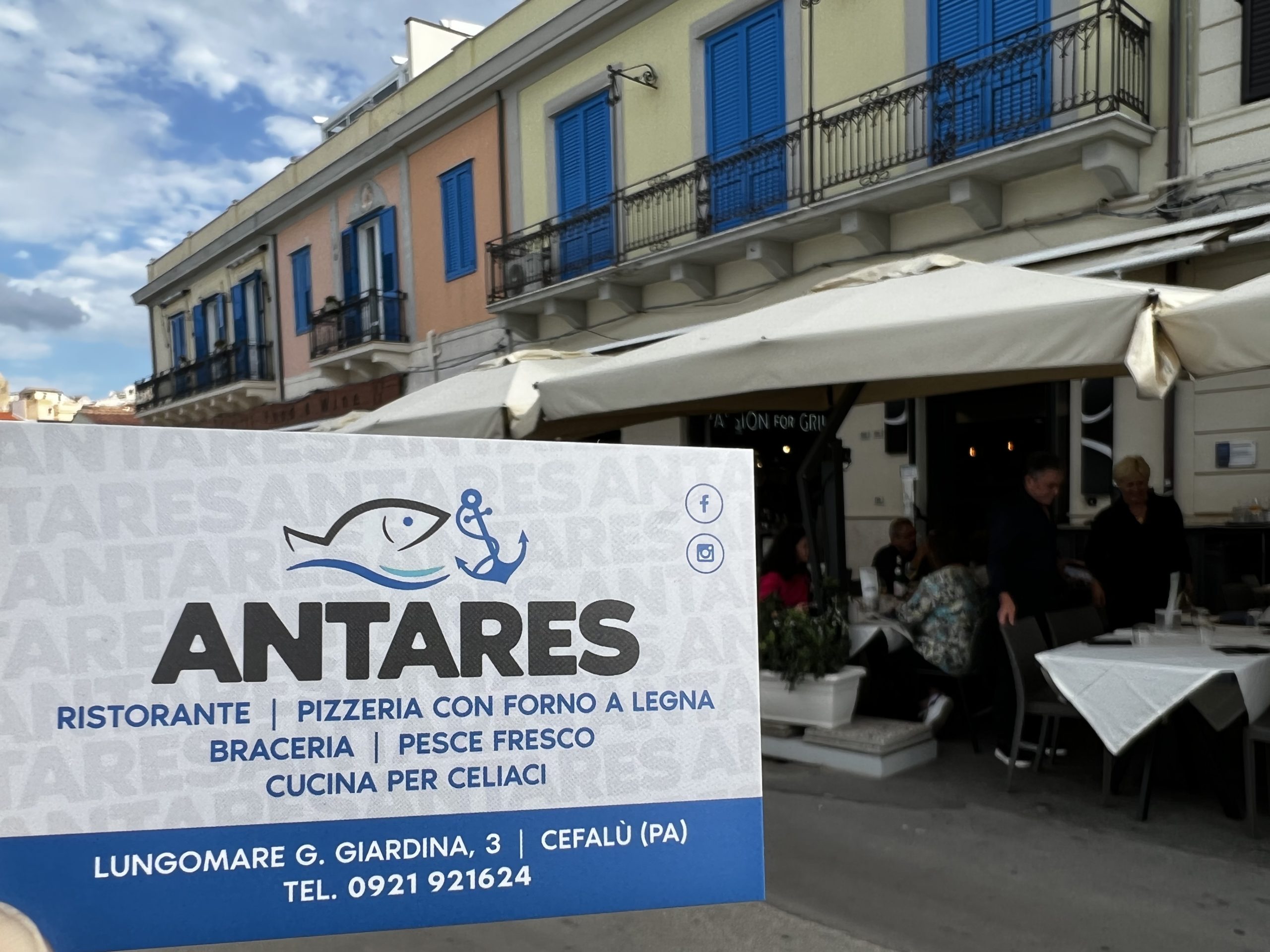
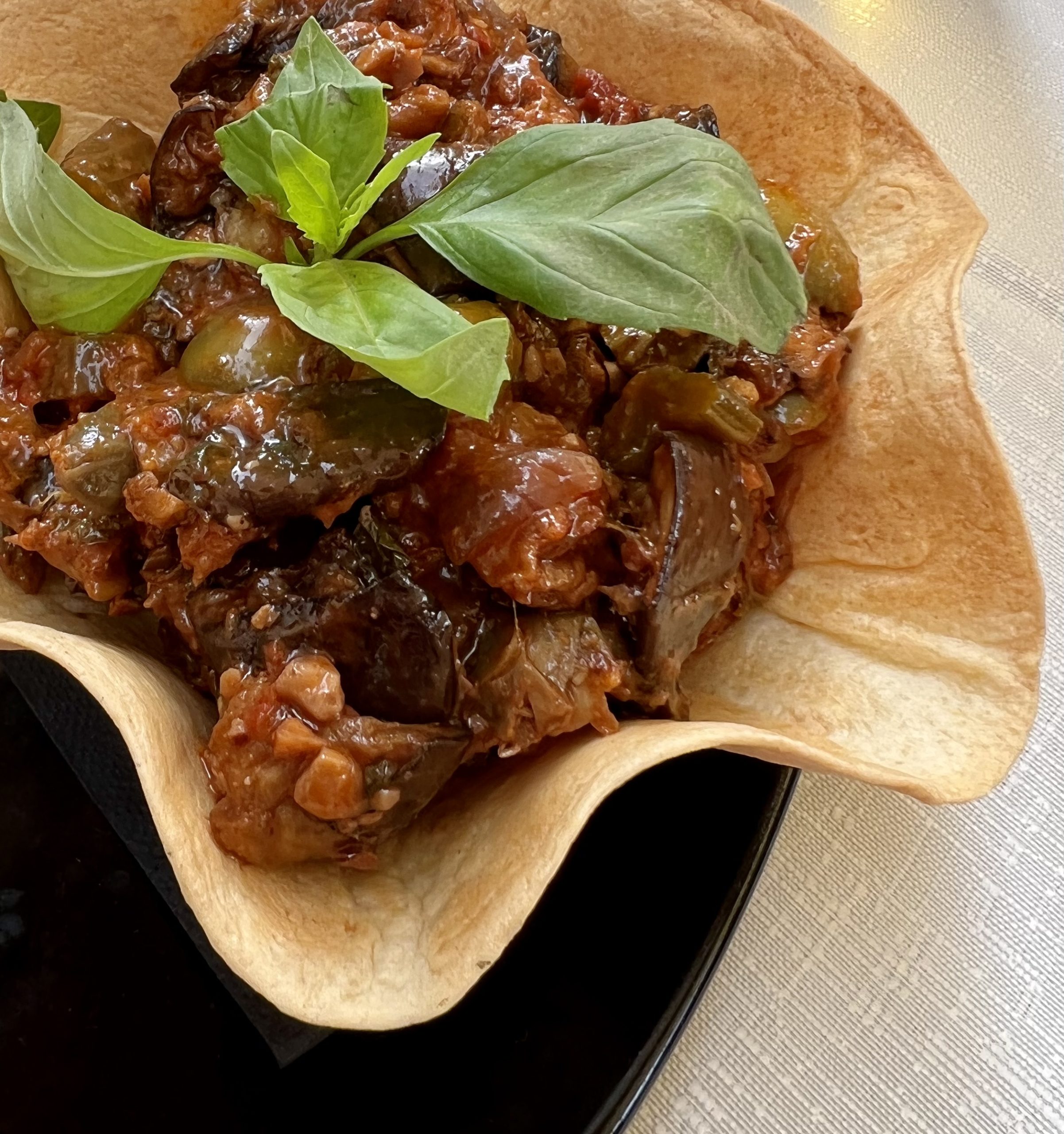
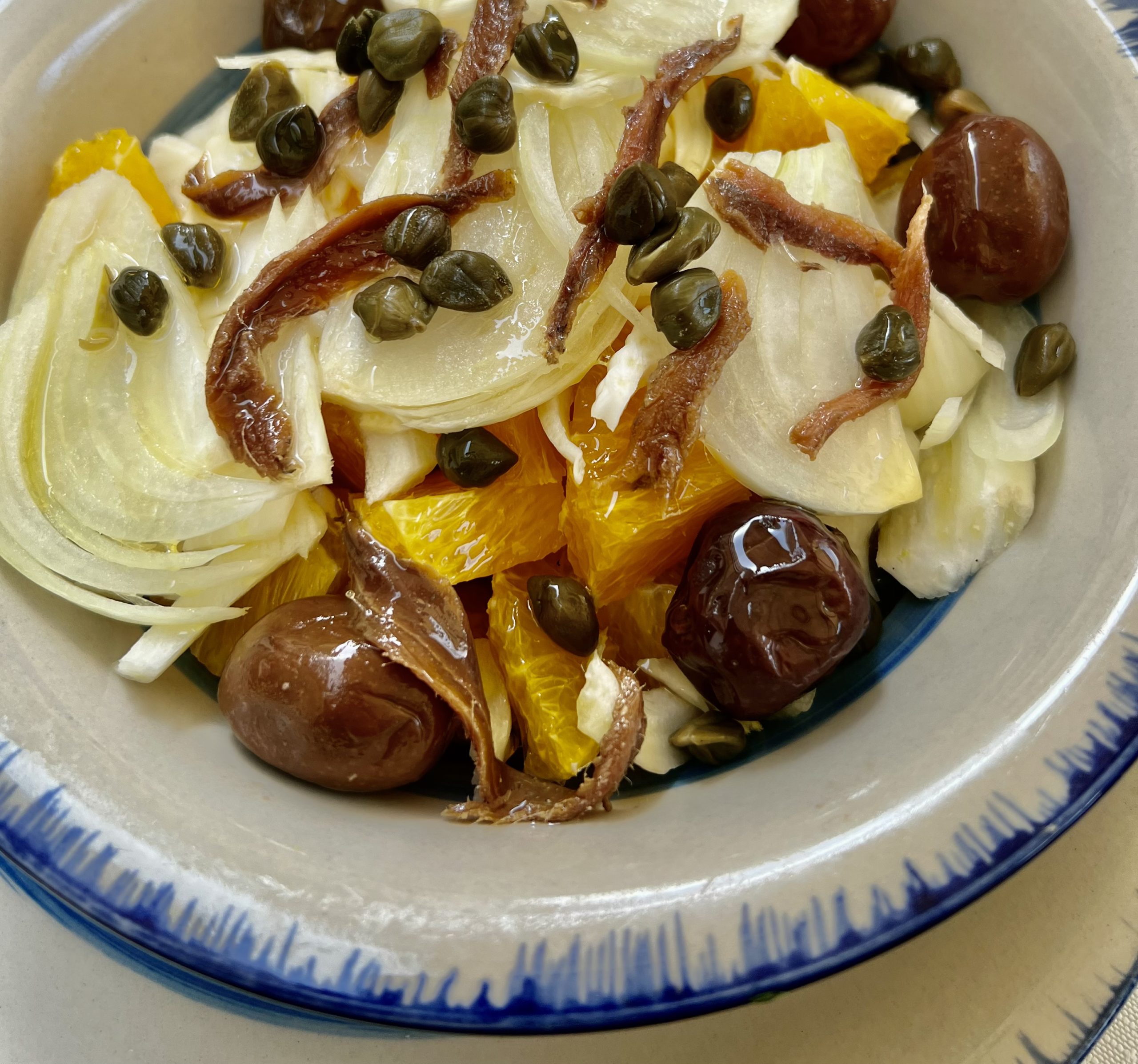
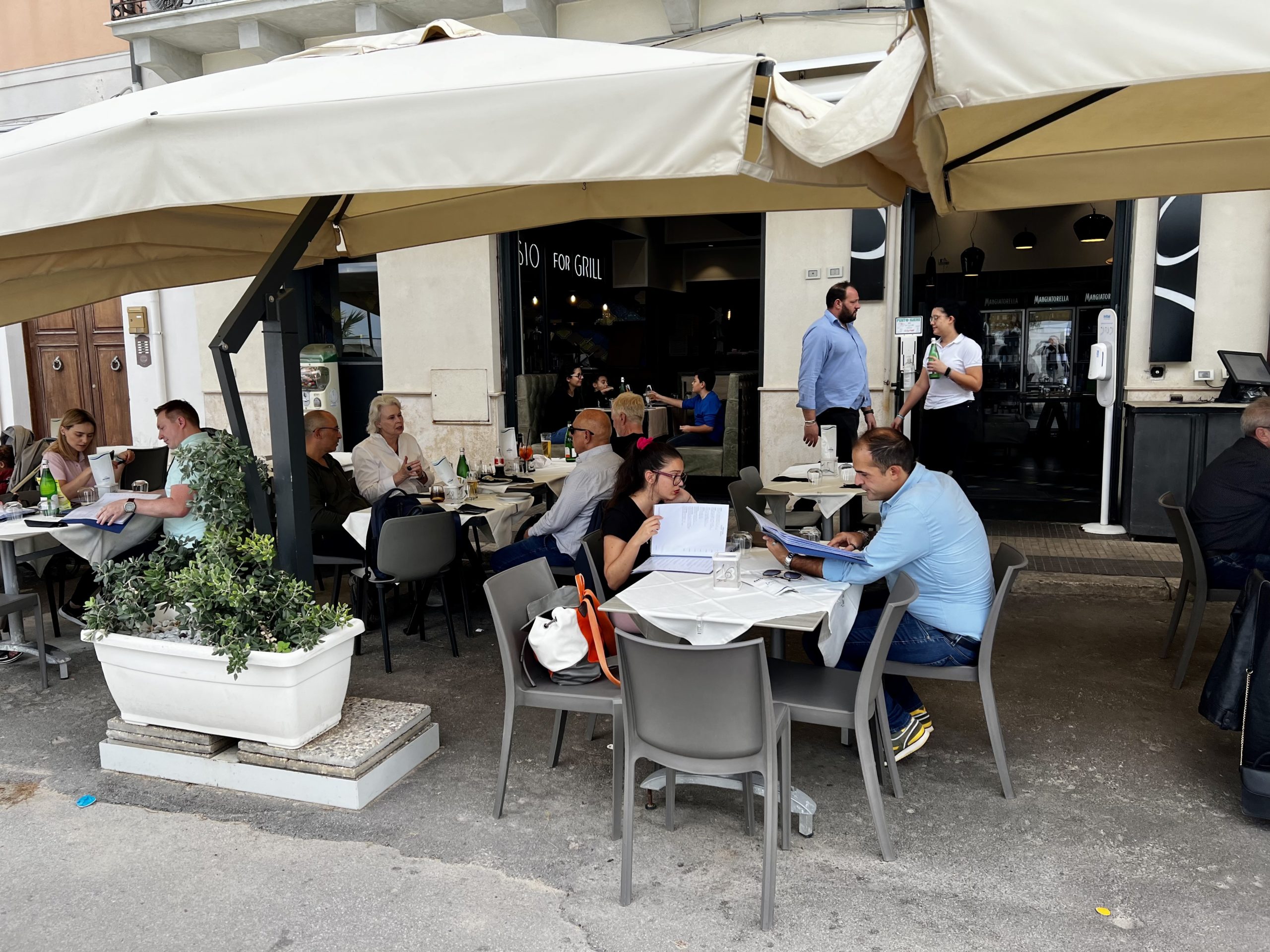
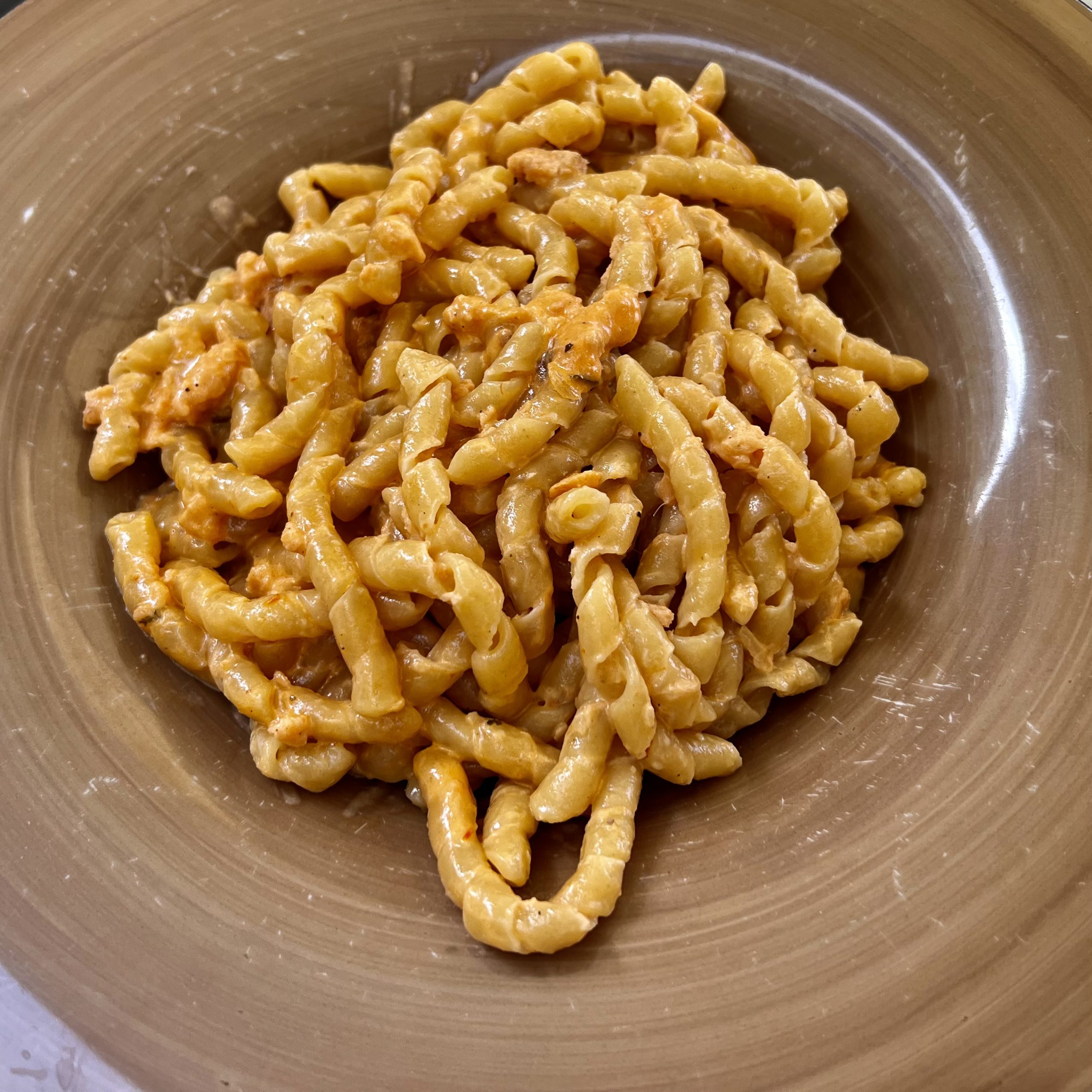
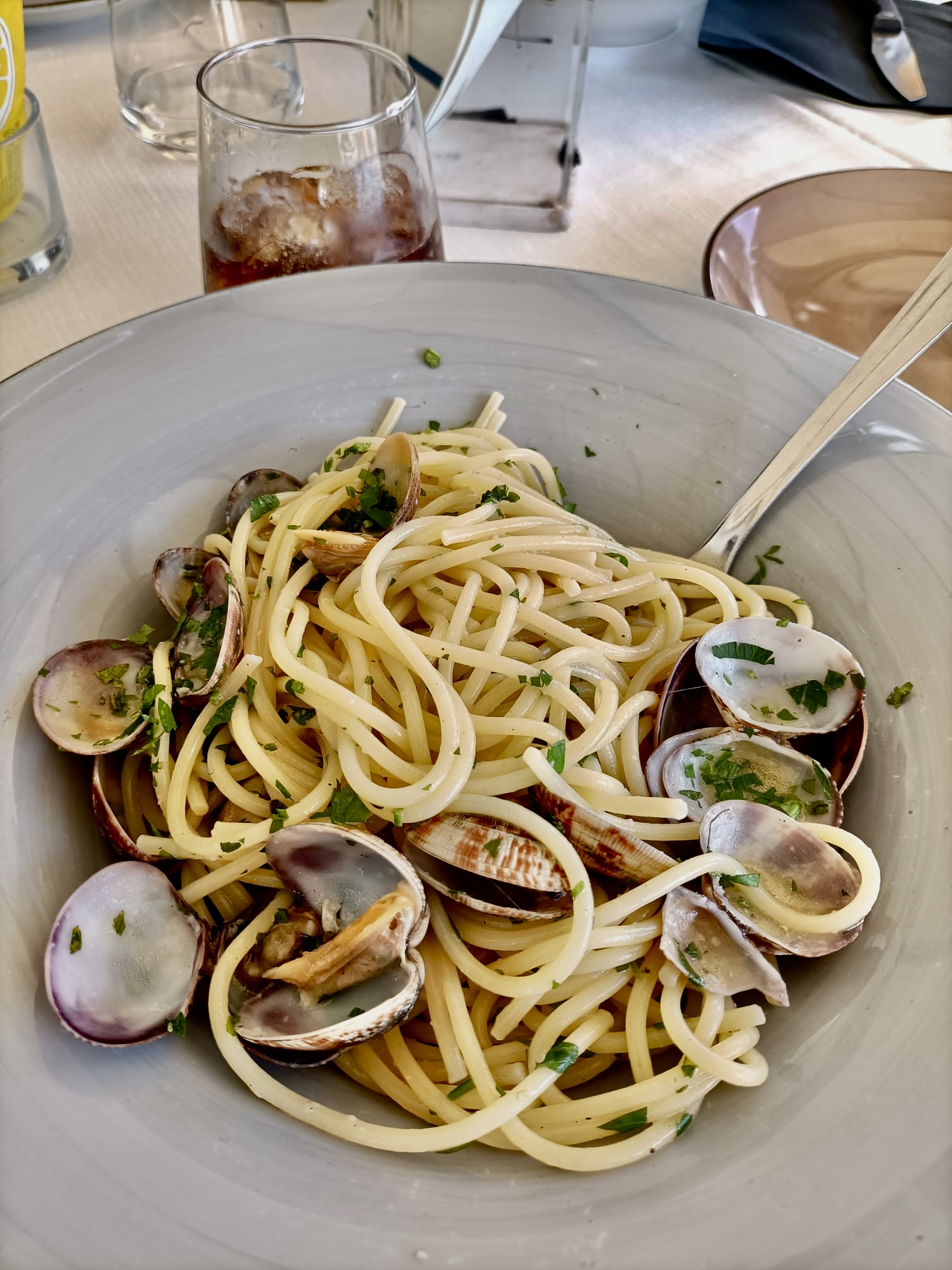
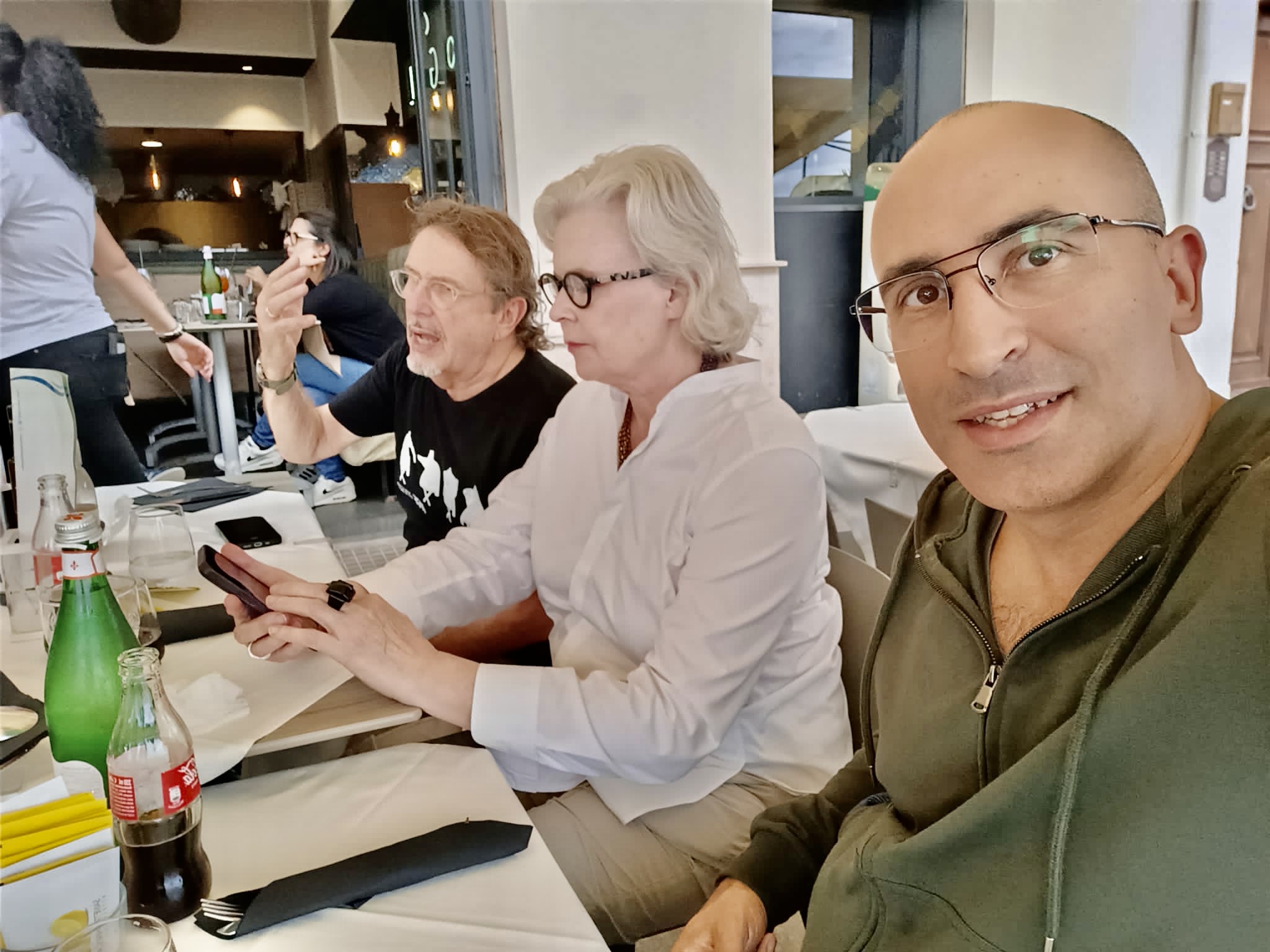
Palazzo Butera Palermo
Richard had read about the Palazzo Butera Palermo in several places, including the Wall Street Journal, and directed us there. The 120,000 square foot palazzo is located along the Kalsa waterfront of central Palermo. It was recently acquired by Francesca Frua de Angeli and Massimo Valsecchi who are personally financing the restoration of the palazzo as an open laboratory that draws together history, art, and culture. Their goal is to foster solutions for social development. They chose Sicily because for over 3,000 years it has been a place melding many cultures.
Open to the public since 2020, the palazzo displays the collection of art that the owners have acquired over more than fifty years and have commissioned specifically for the palazzo. Their collection contains art varied by style, type, and years using contemporary art as a catalyst between the past and present to produce ideas for the future. We thought the renovated space is quite unusual and very effective. And the art collection, although of modest size, is quite appealing. The juxtaposition in many rooms of recent artwork and very old pieces is terrific.
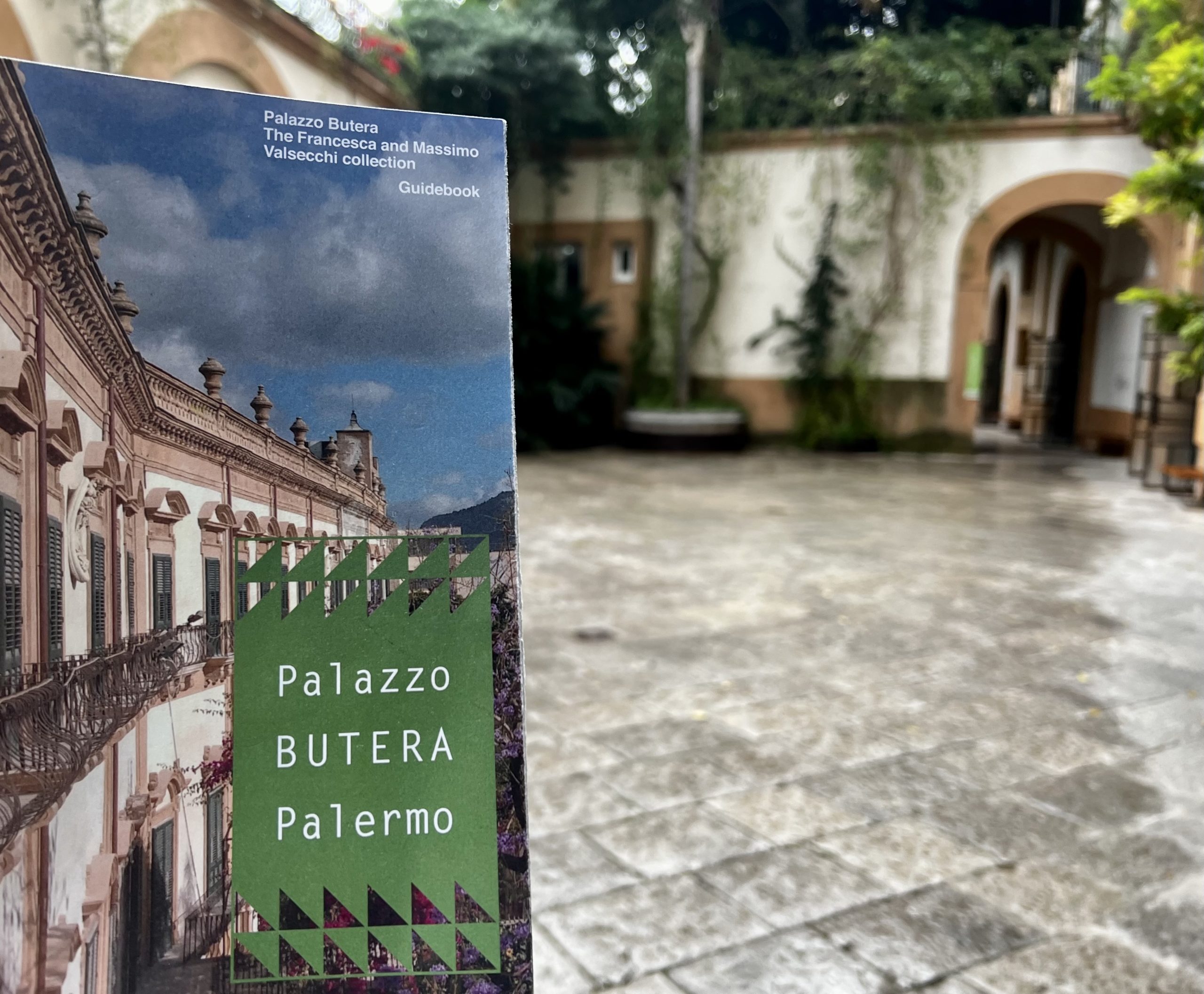
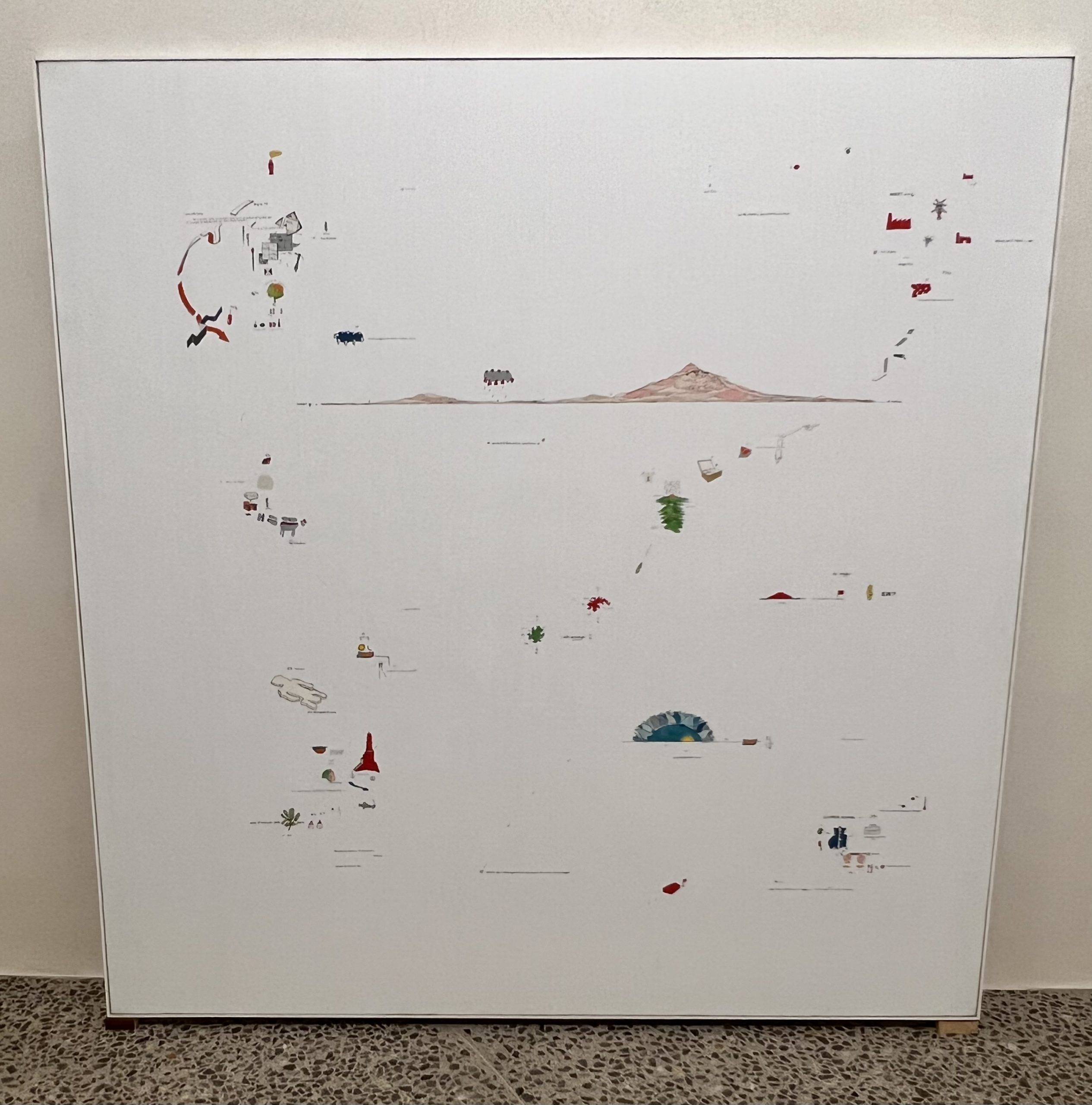
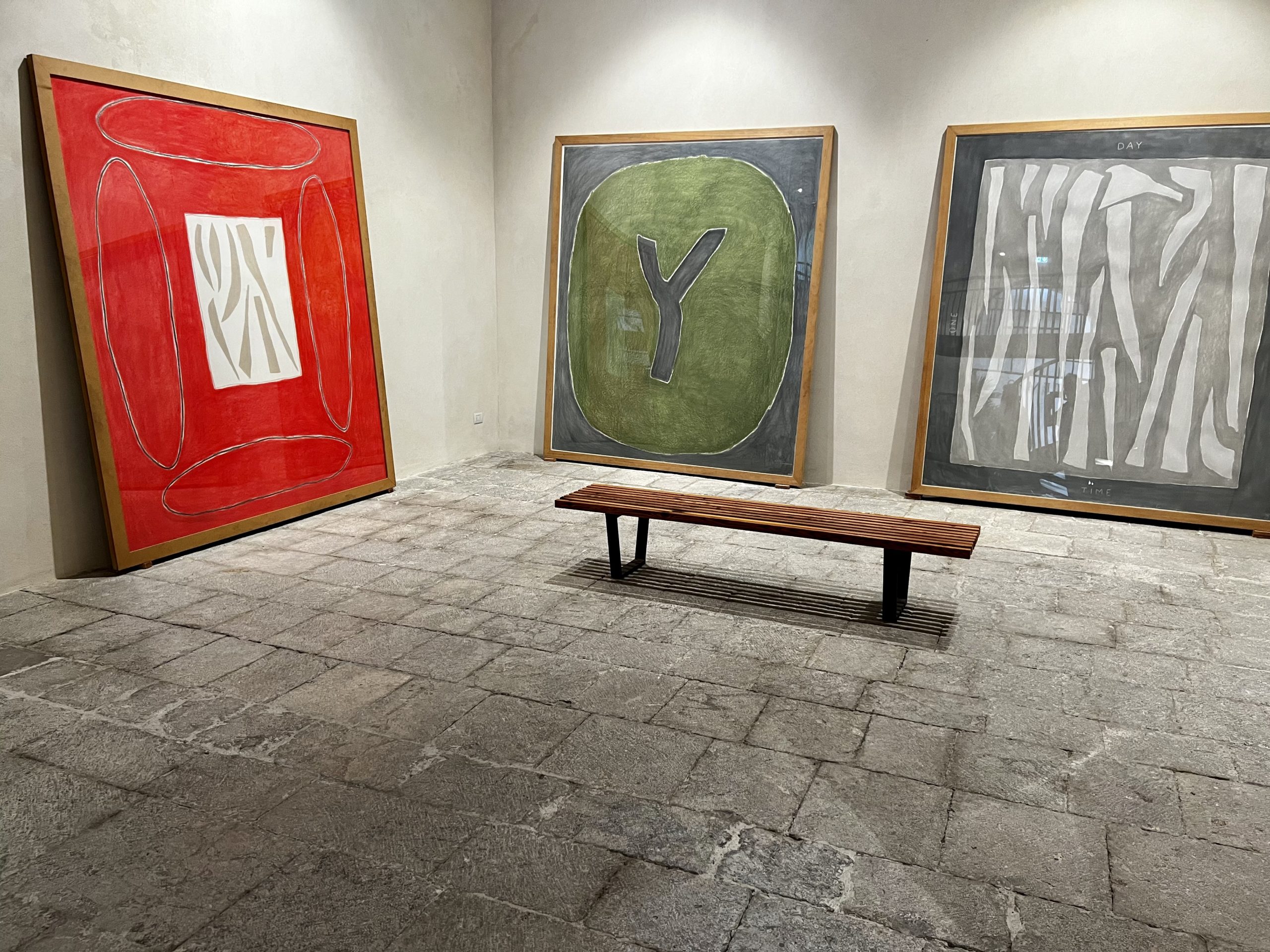
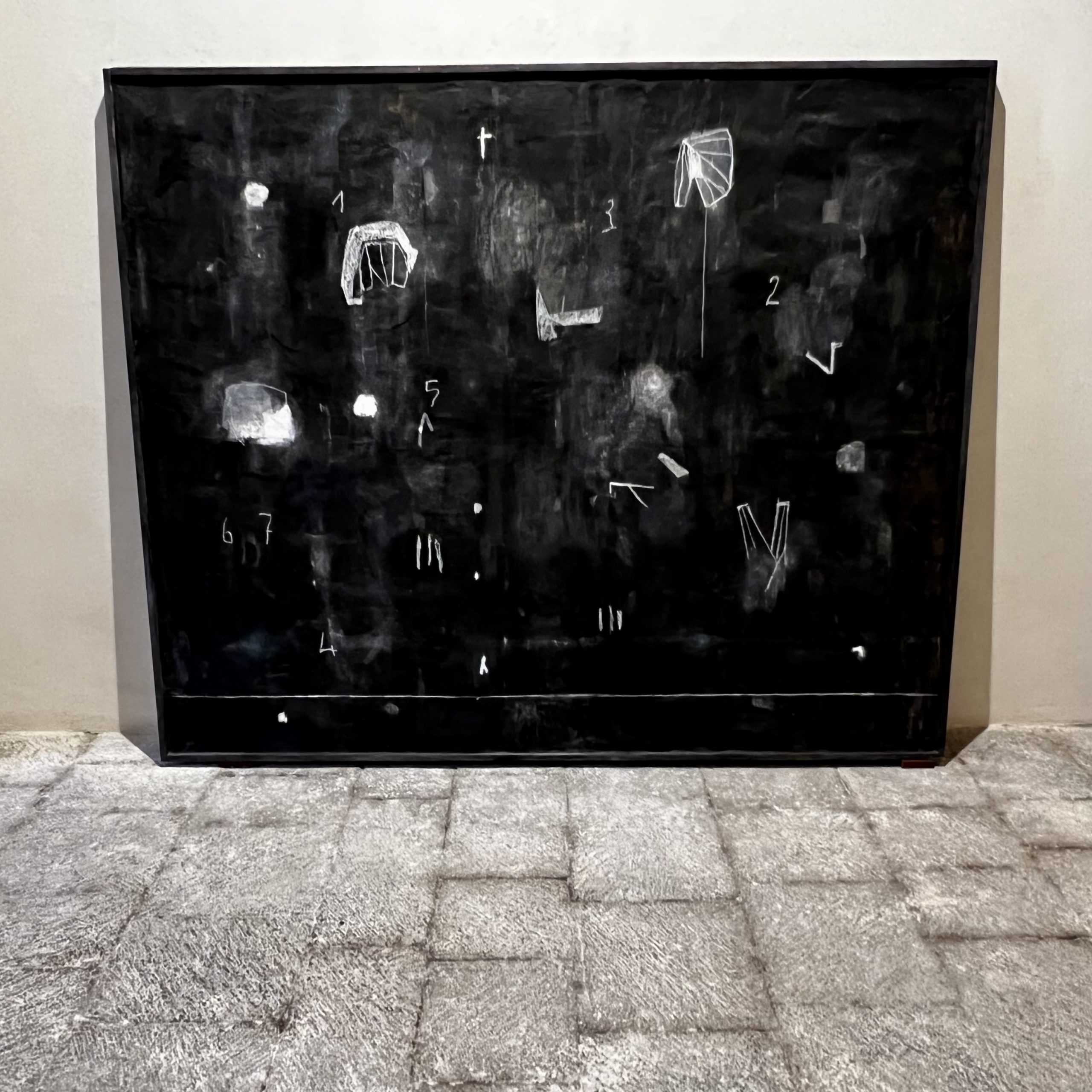
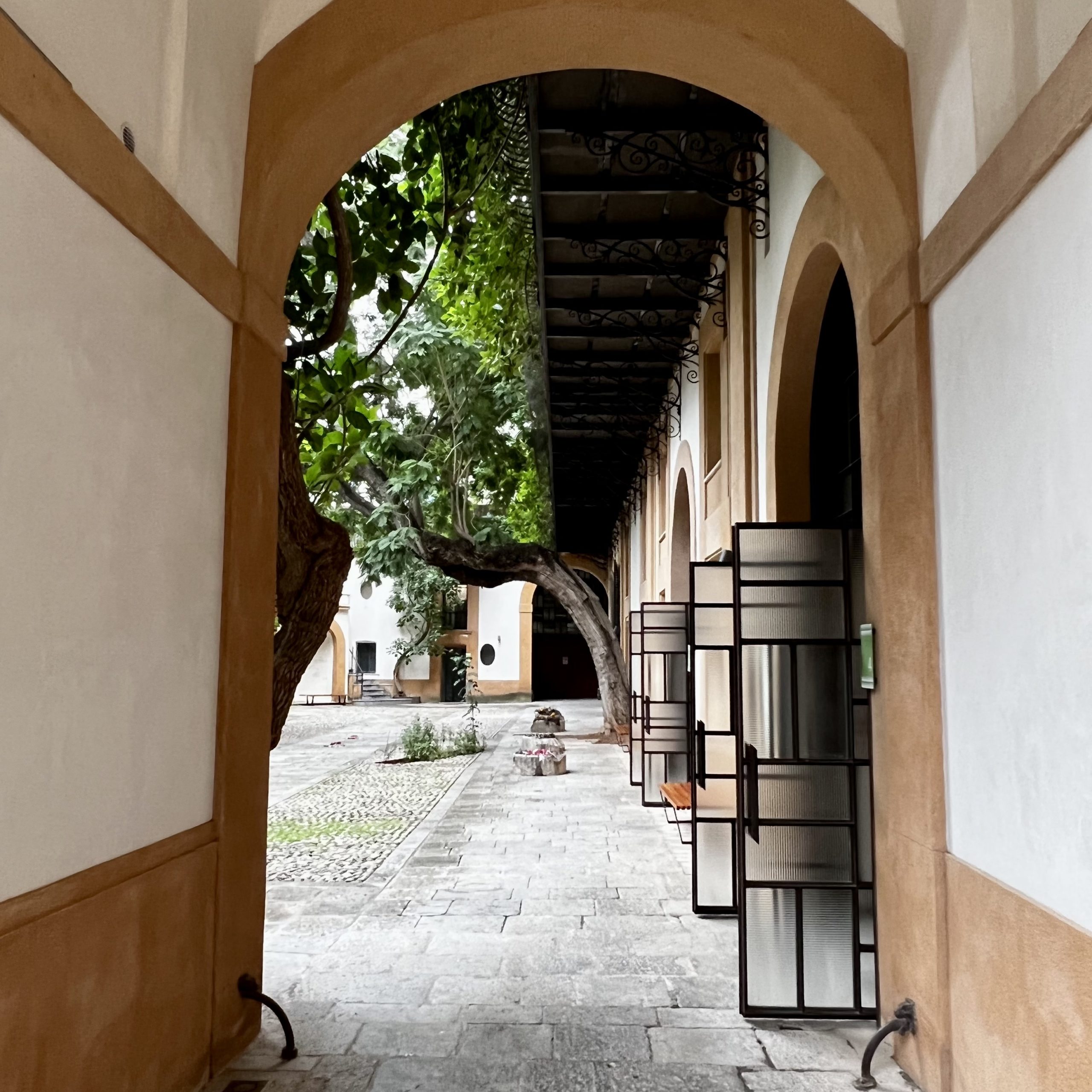
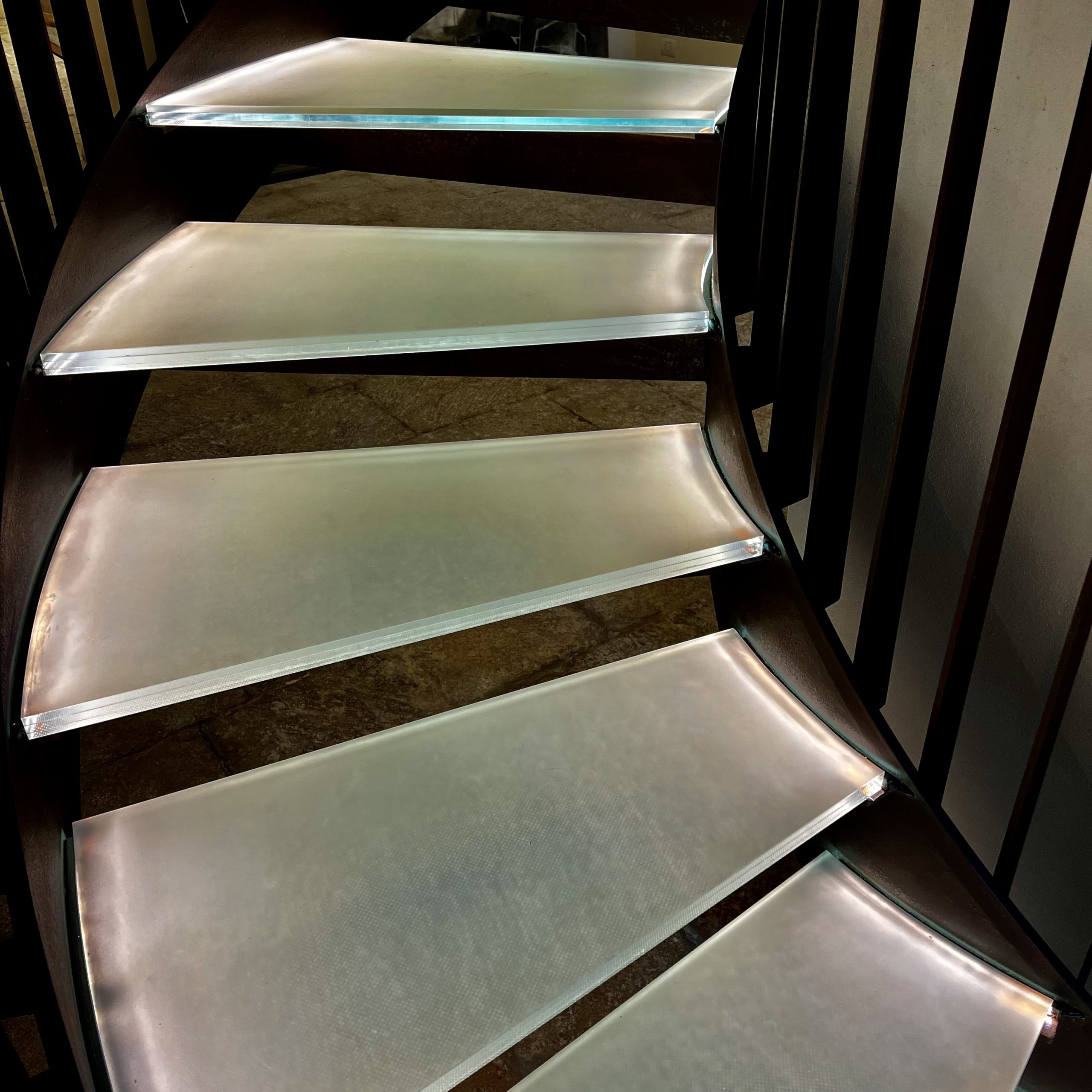
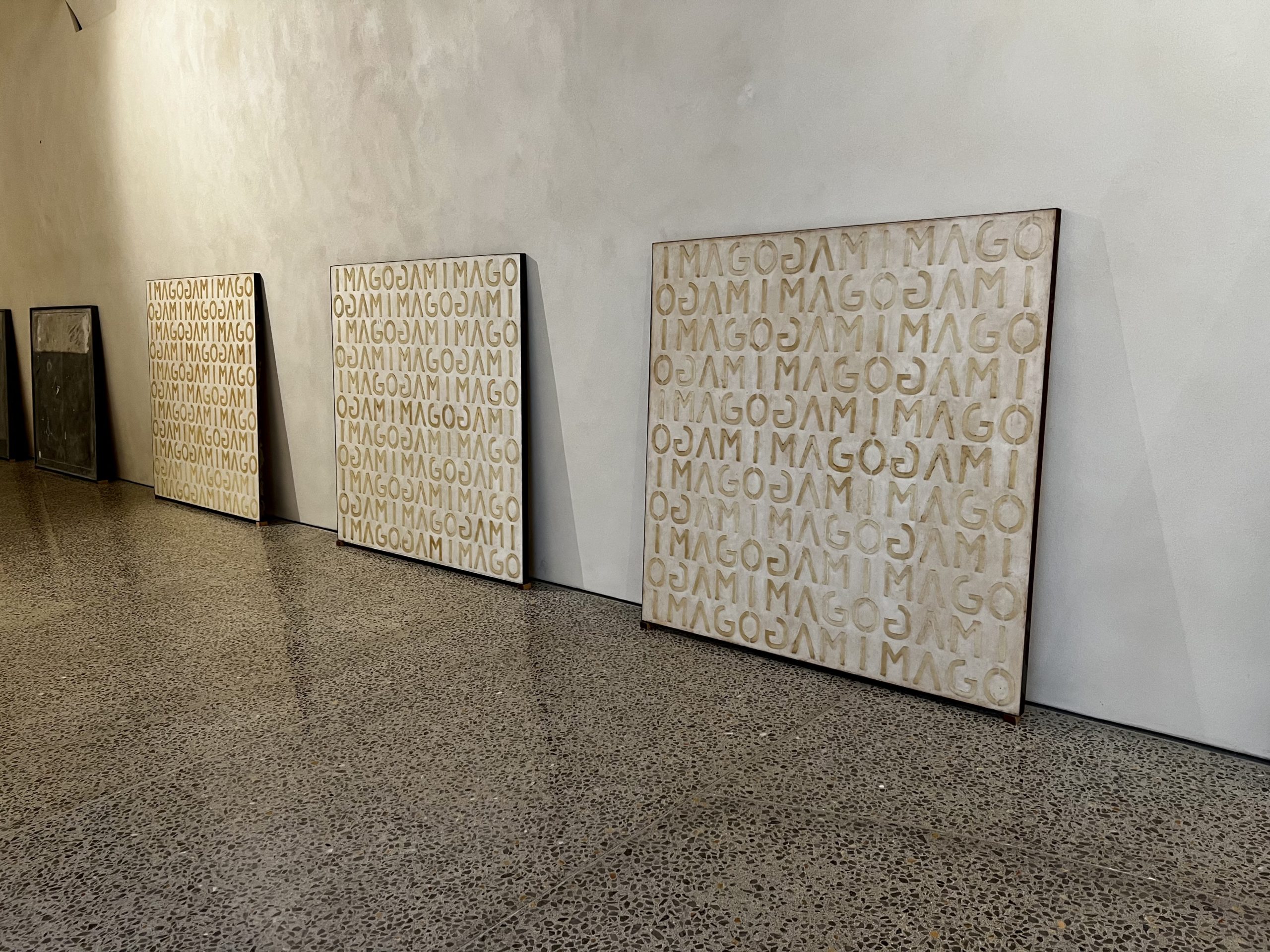

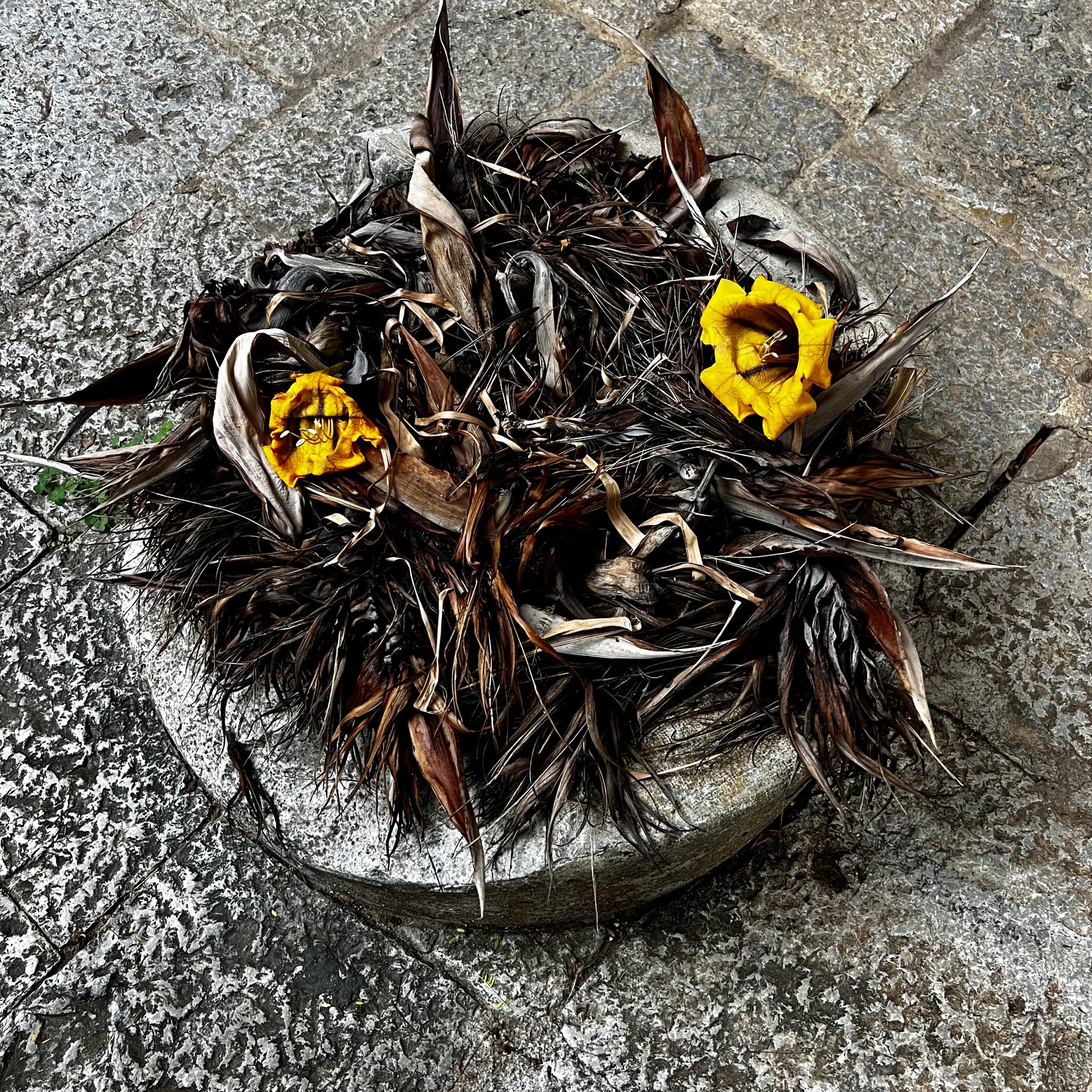
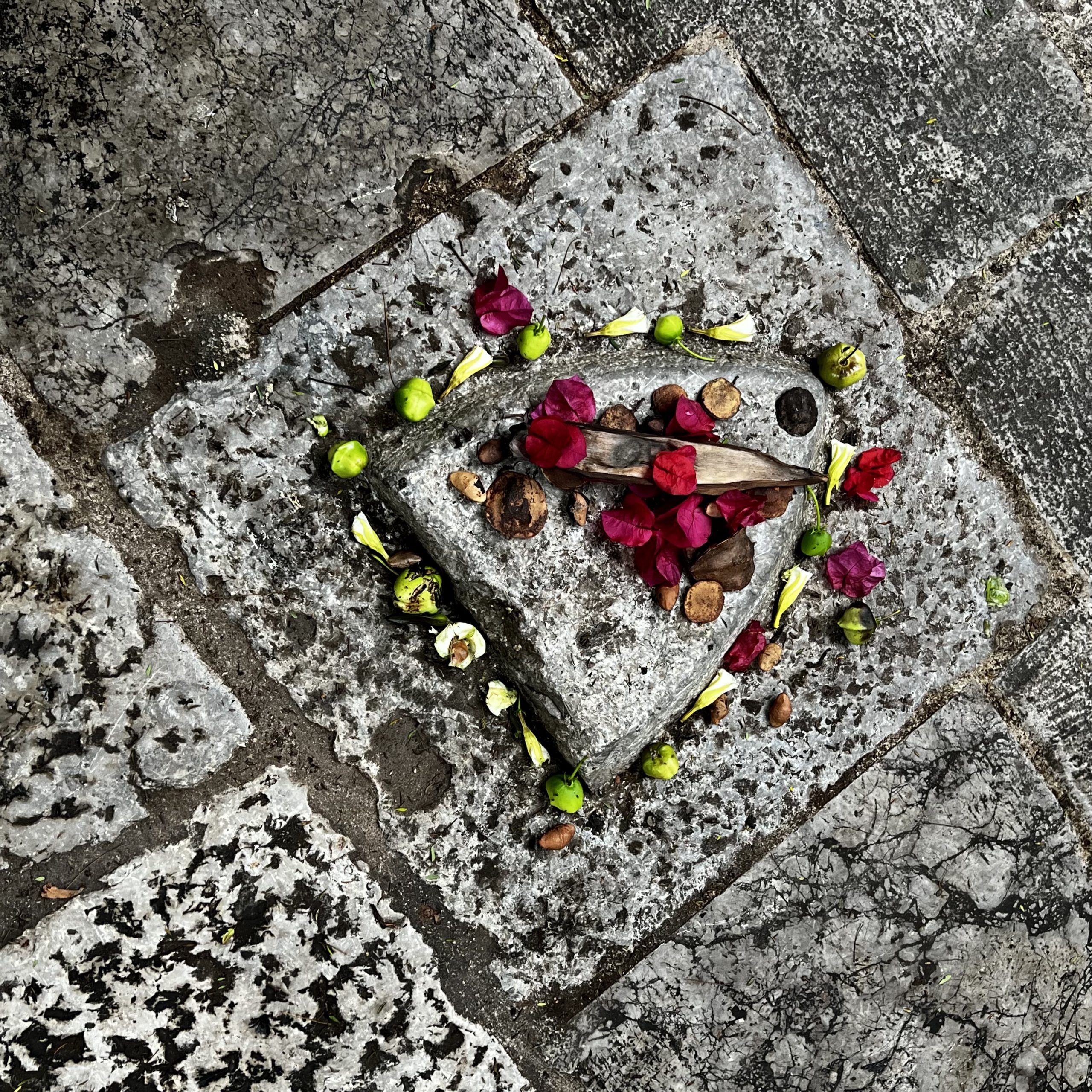
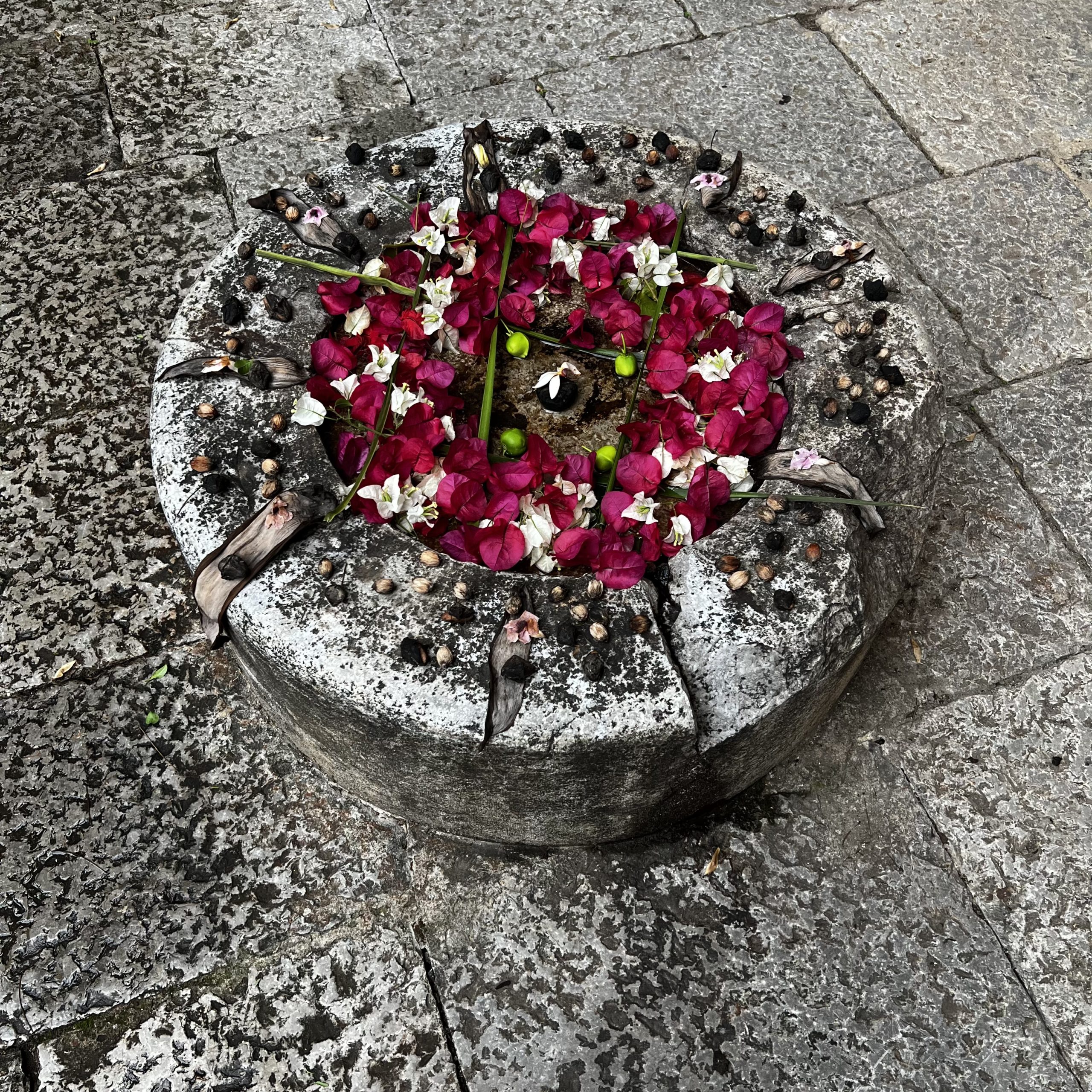
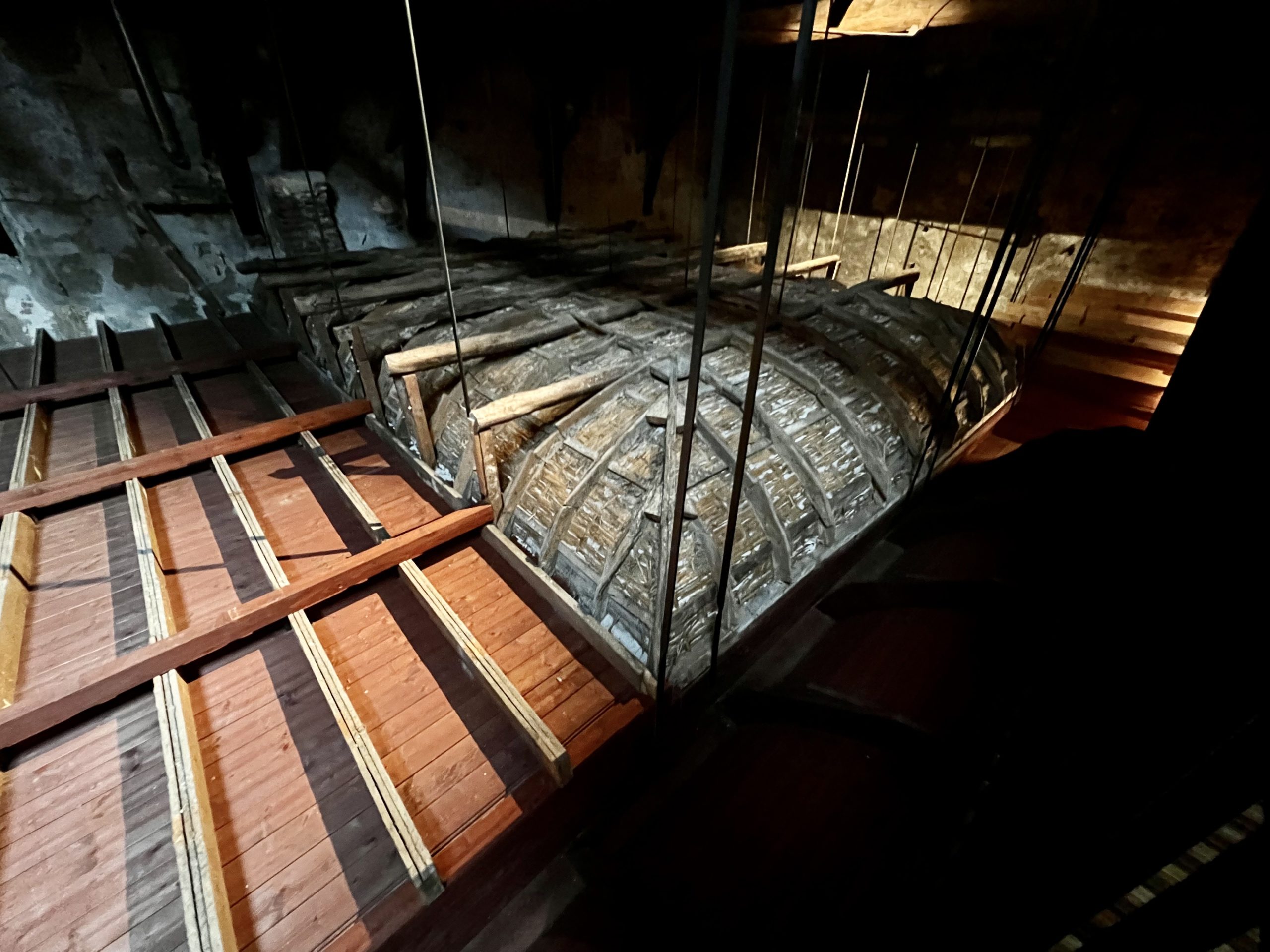
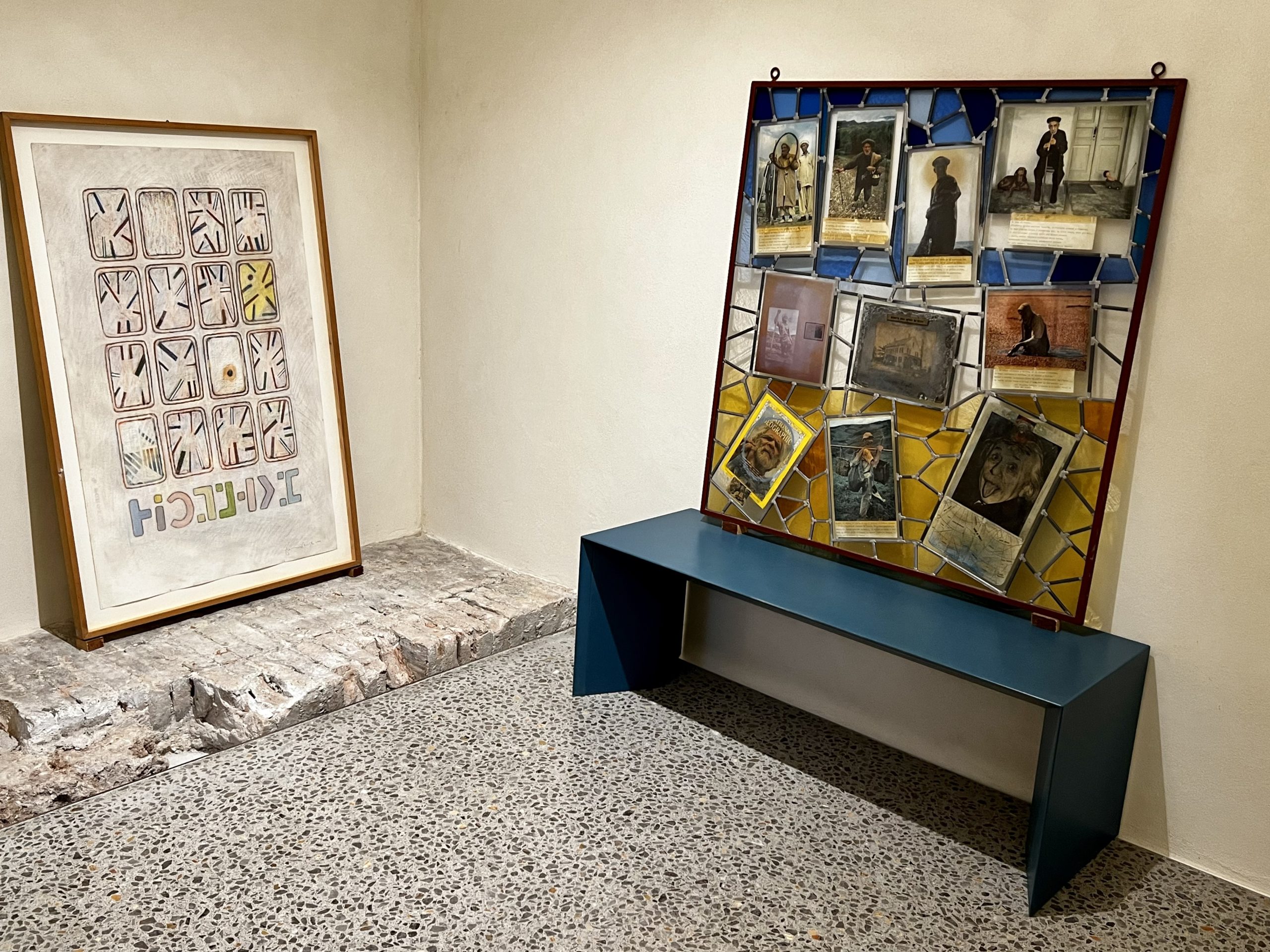

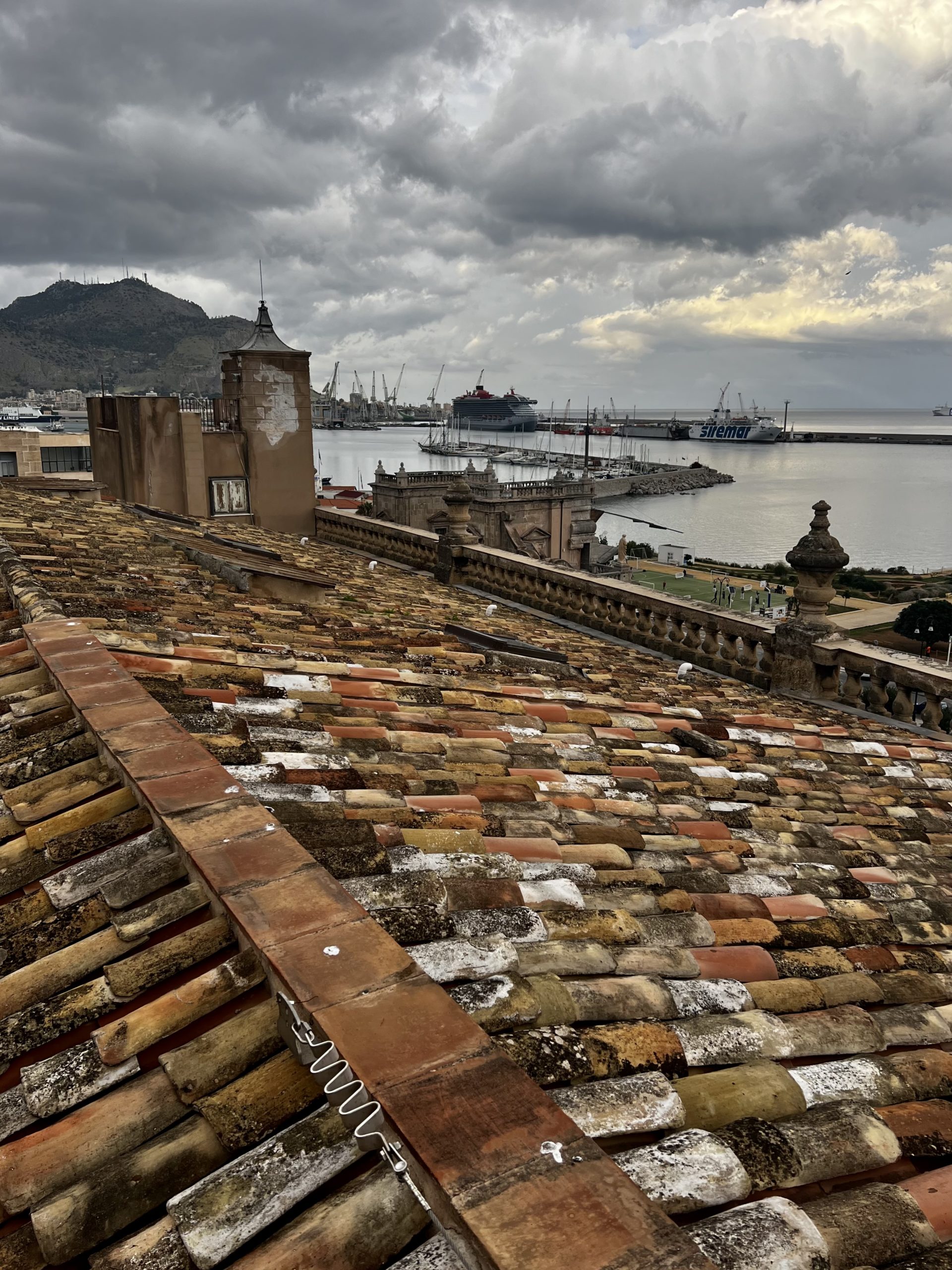
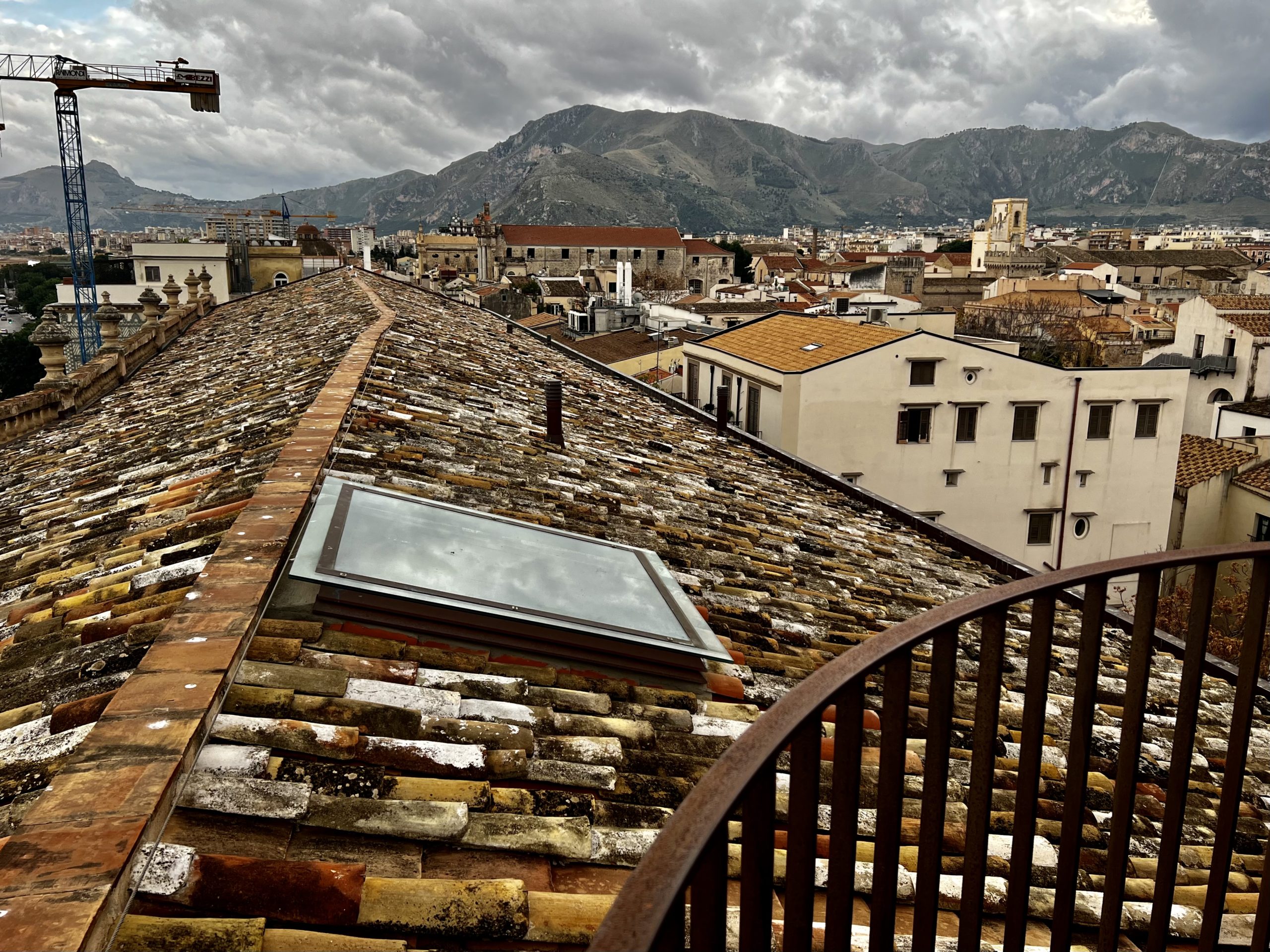
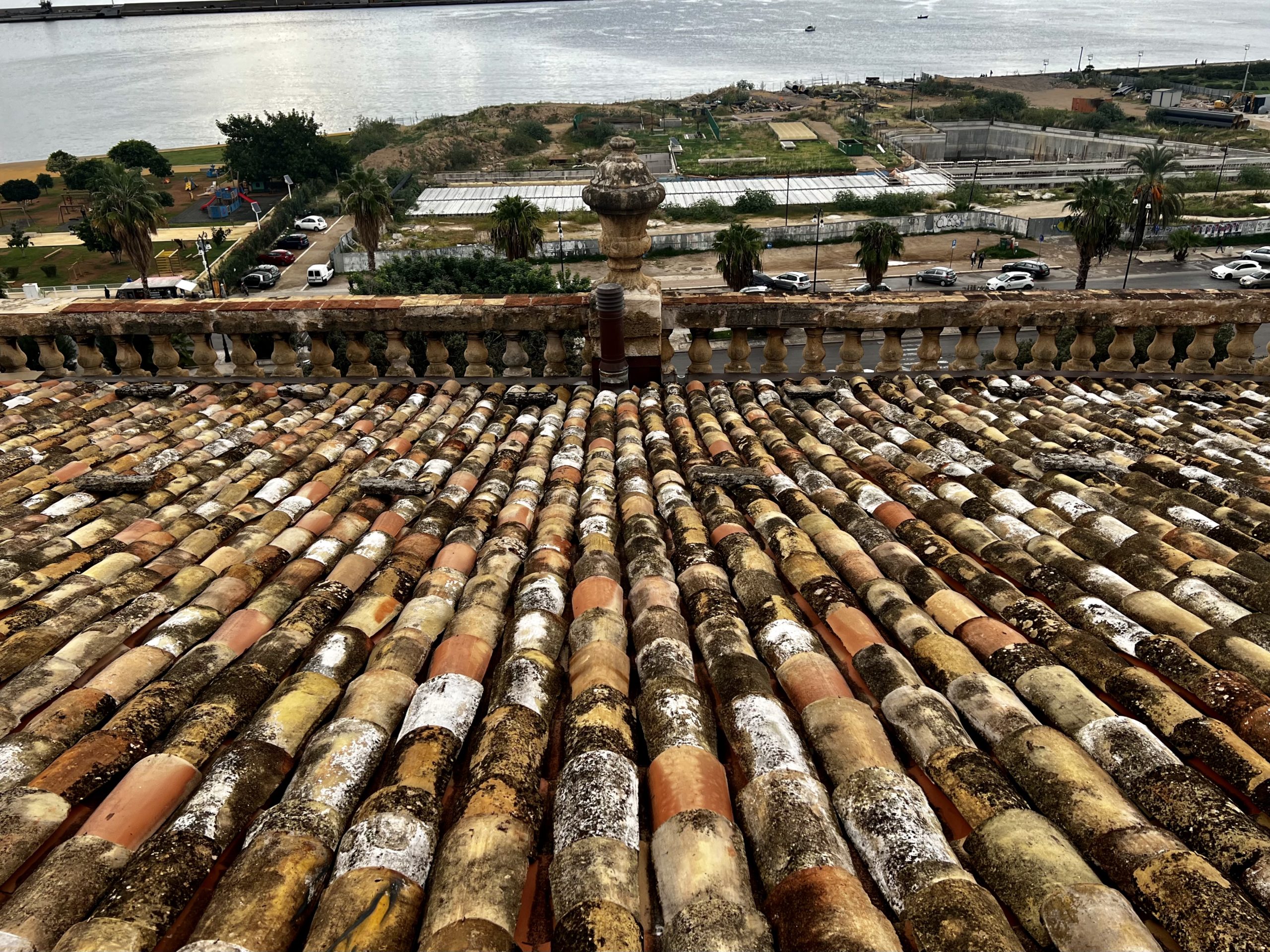




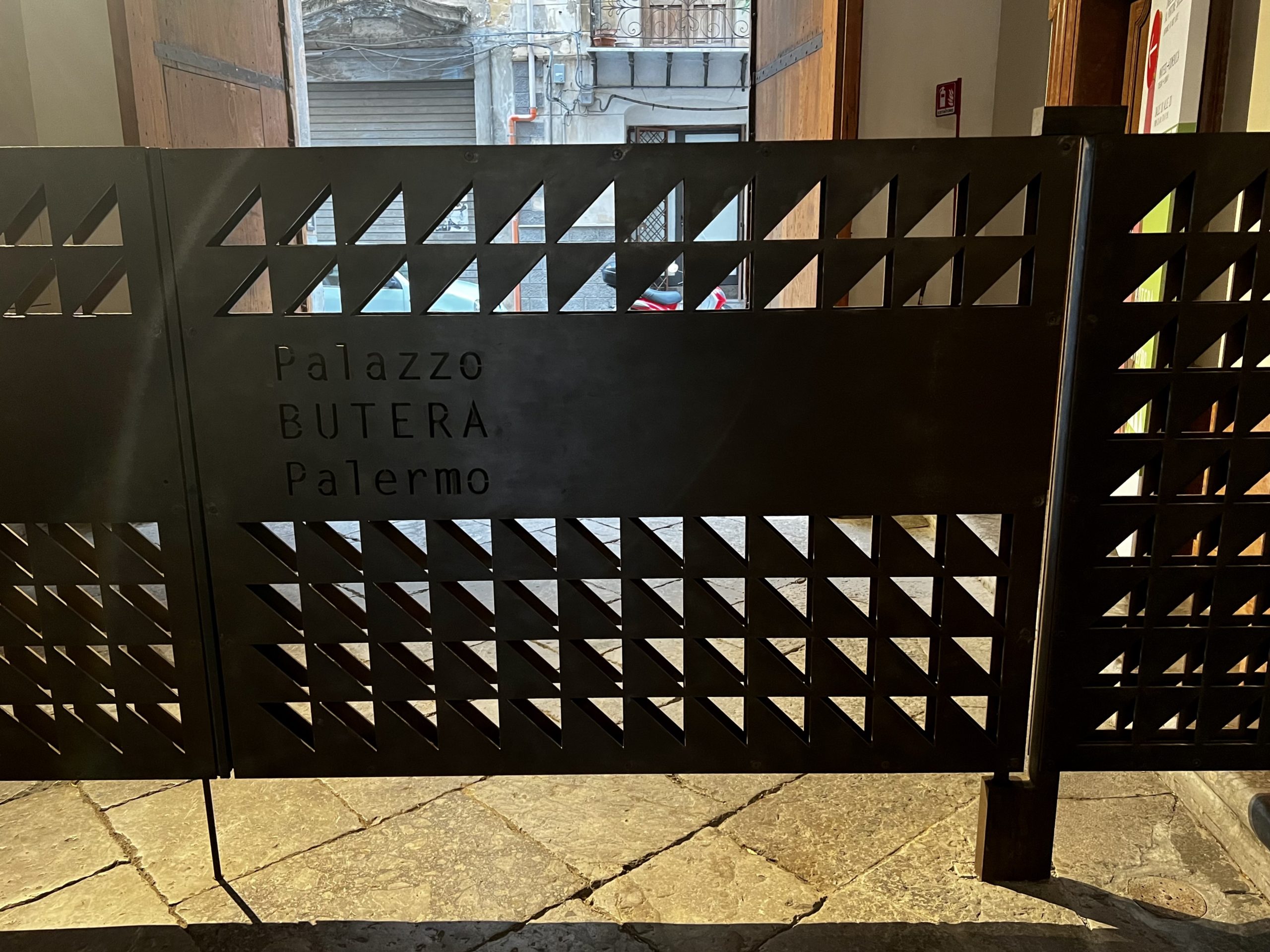
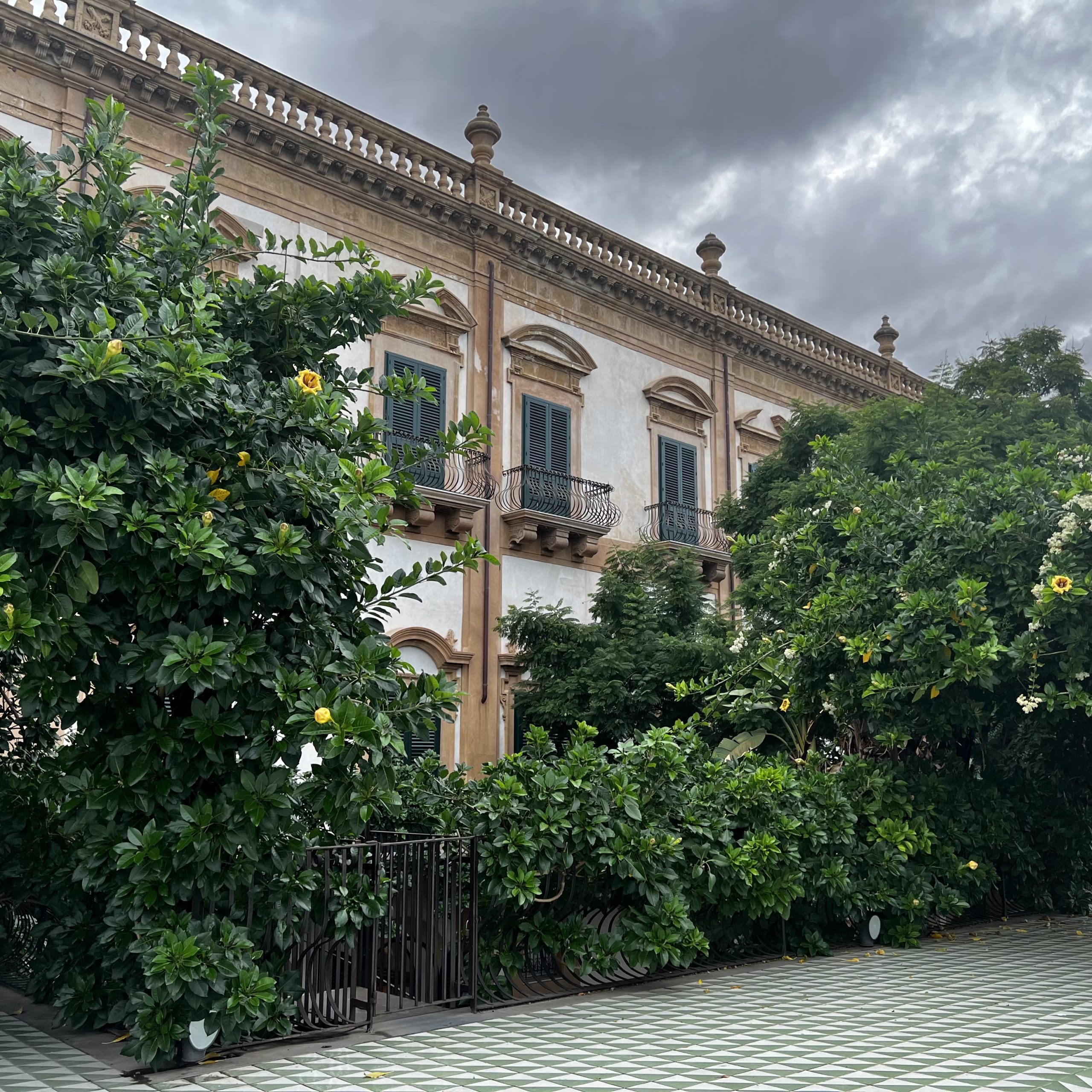
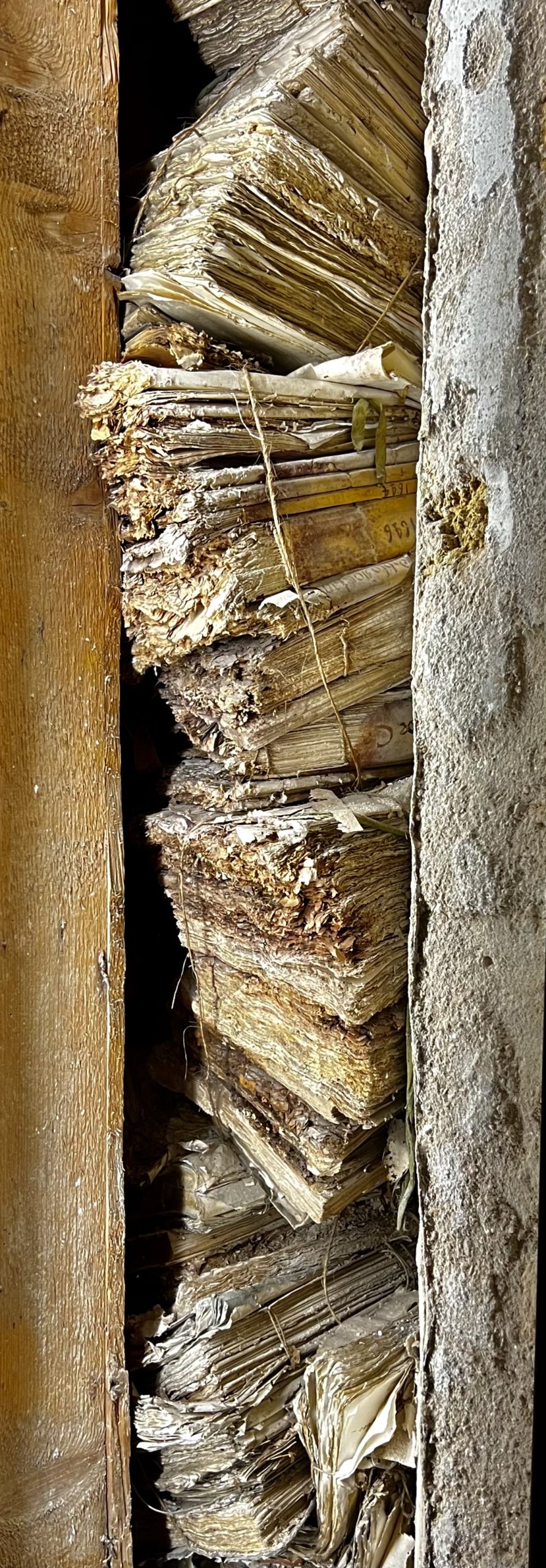
Teatro (Opera) di Pupi
Not many left of these Sicilian puppet theaters that tell the story over many episodes of the two knights (and cousins) Rolando and Orlando and their love of the beautiful Saracen princess Angelica. We tried to see a show at this theater on our trip in 2019, but they did not have enough people for an audience that night because the last episode of Game of Thrones was showing. This time Domenico called ahead and got us reservations for the sold out show. The forty-minute show does not disappoint even if you do not understand Italian. Ask Richard. Princess Angelica is a prisoner of Emperor Charlemagne. (Why? We do not know.) Saracens are dispatched with a knight’s sword—losing their heads or being split in half vertically or horizontally. No blood. Just a heap of dead puppet bodies. The loud clanging of swords and armor, the drumming during the battle scenes, and the constant movement keep everything at a fever pitch. There is even a devil and sea monster who join the act. This theater is family run and in its fourth generation. There were thirty puppet theaters in Palermo before movies and television. Now there are three. Well worth the price of admission which was not much. Ten euros. Oh, and only two children burst into tears during this show. The older ones just laughed.

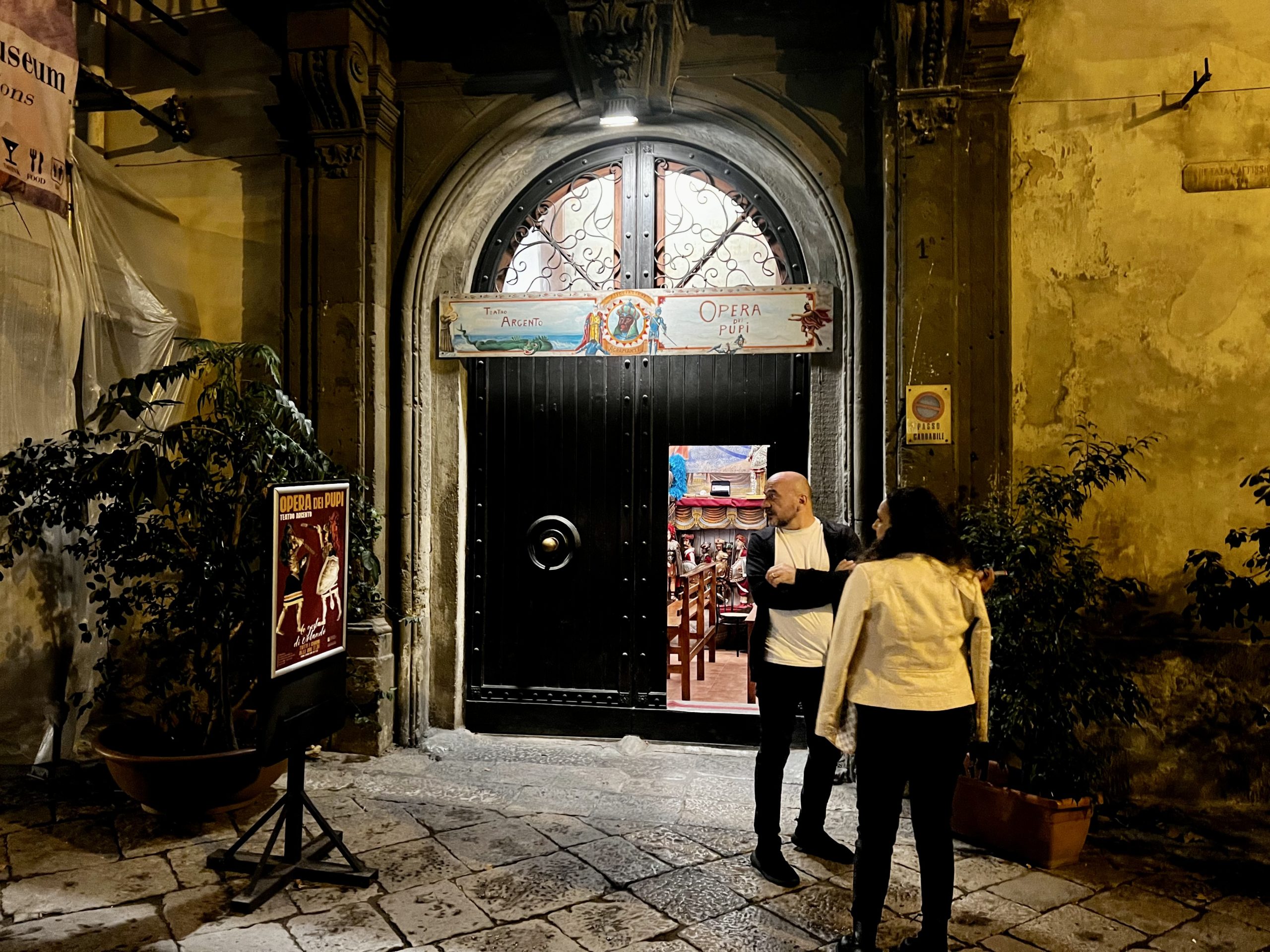
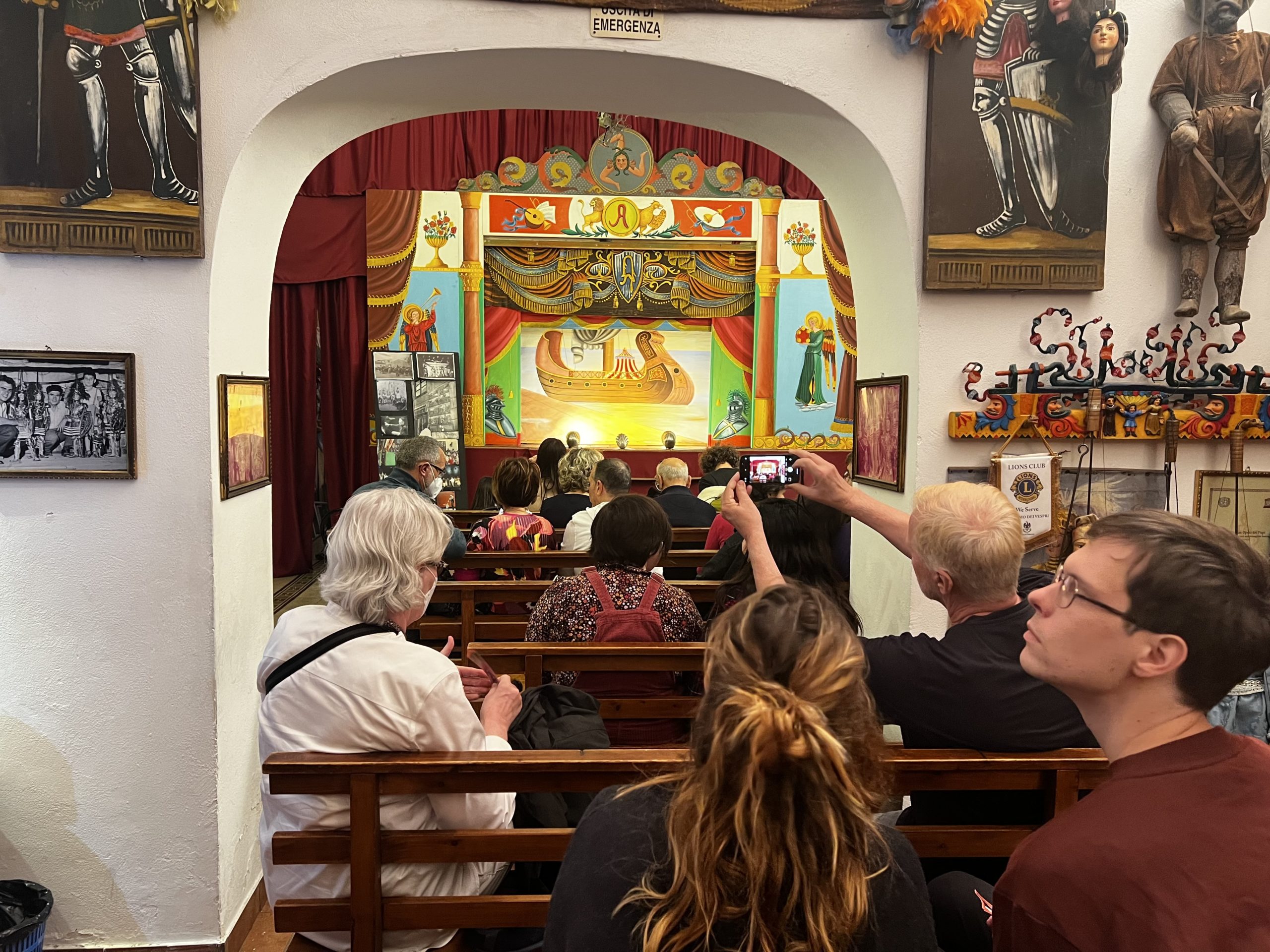
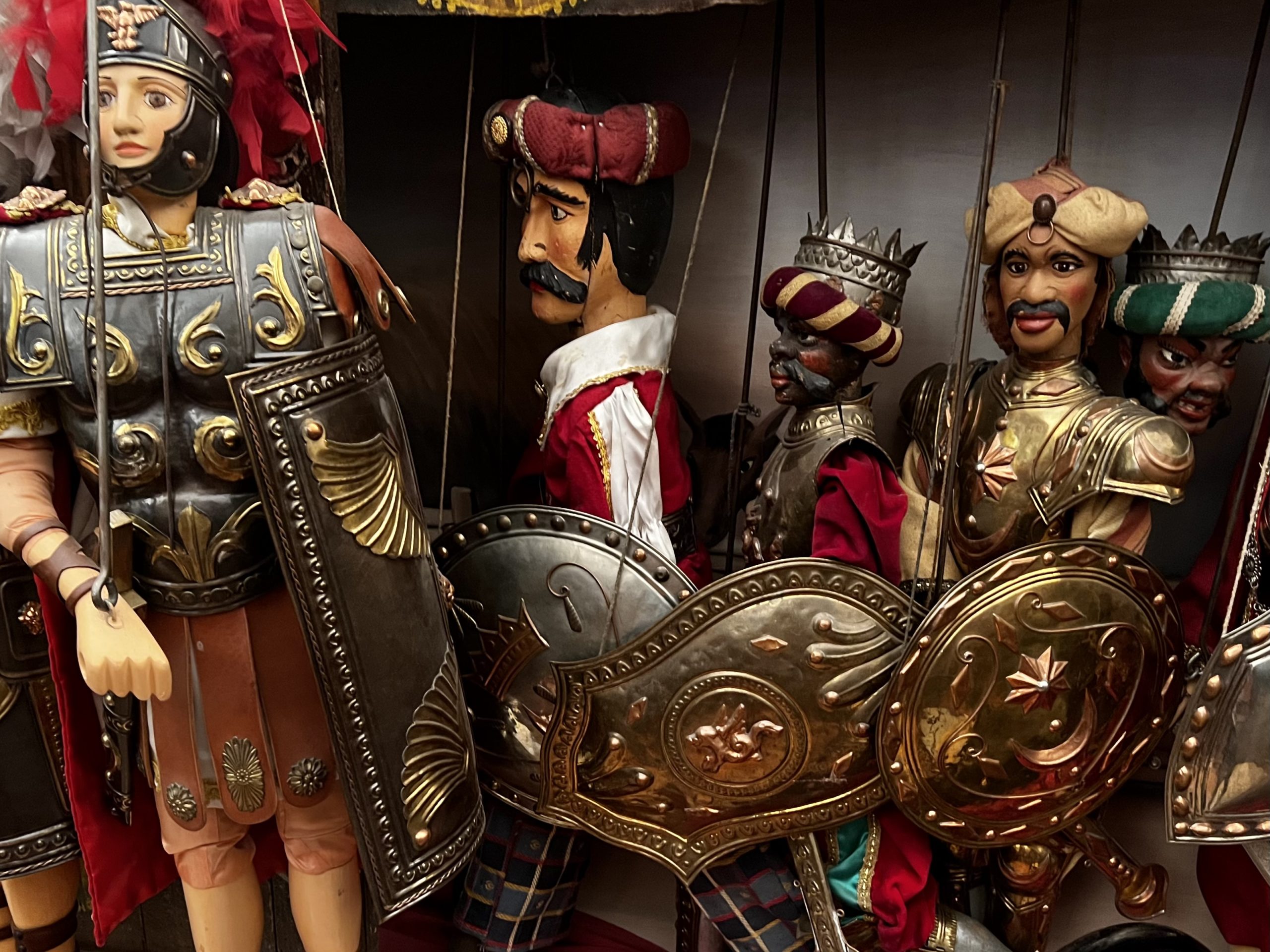
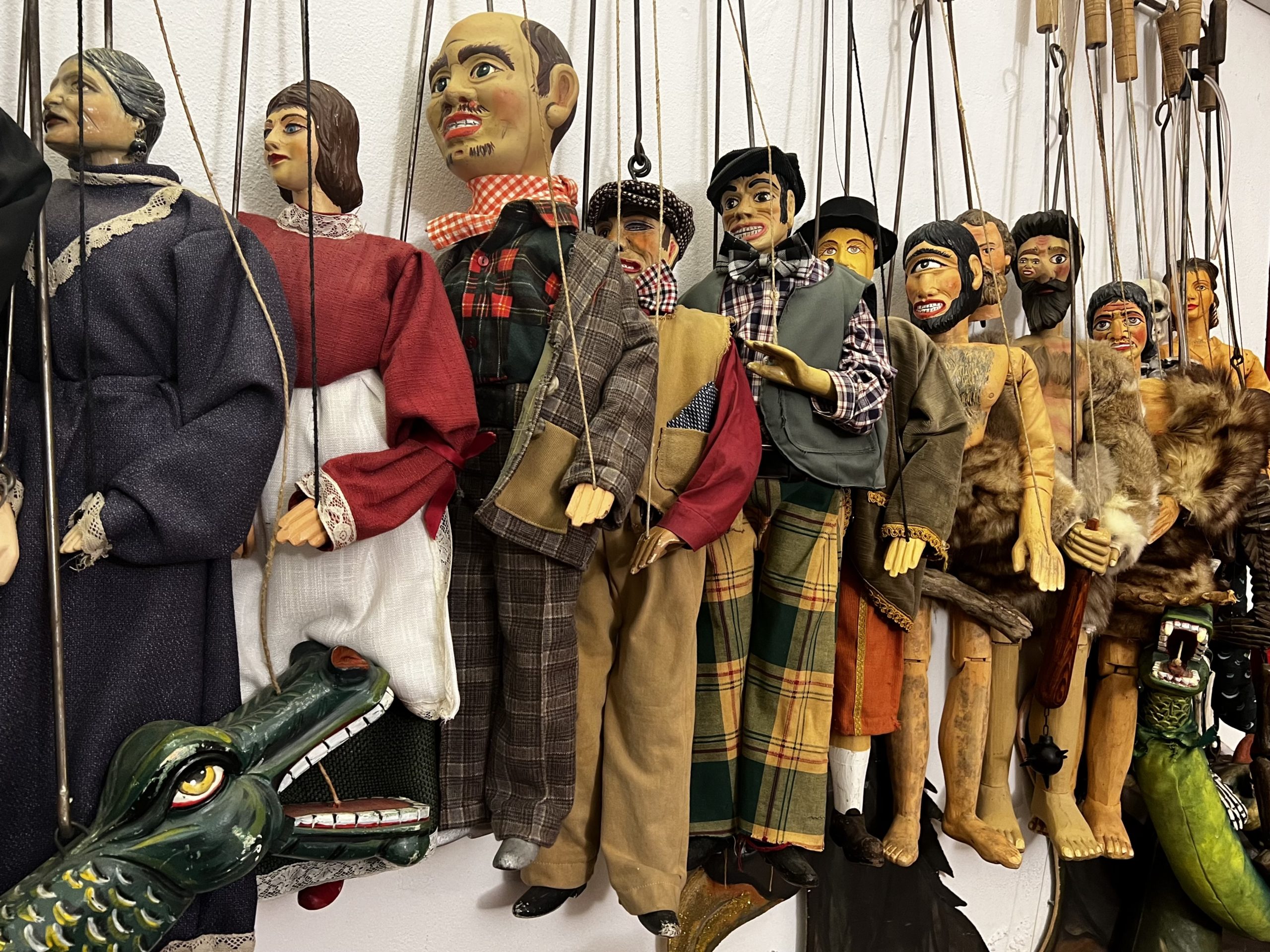
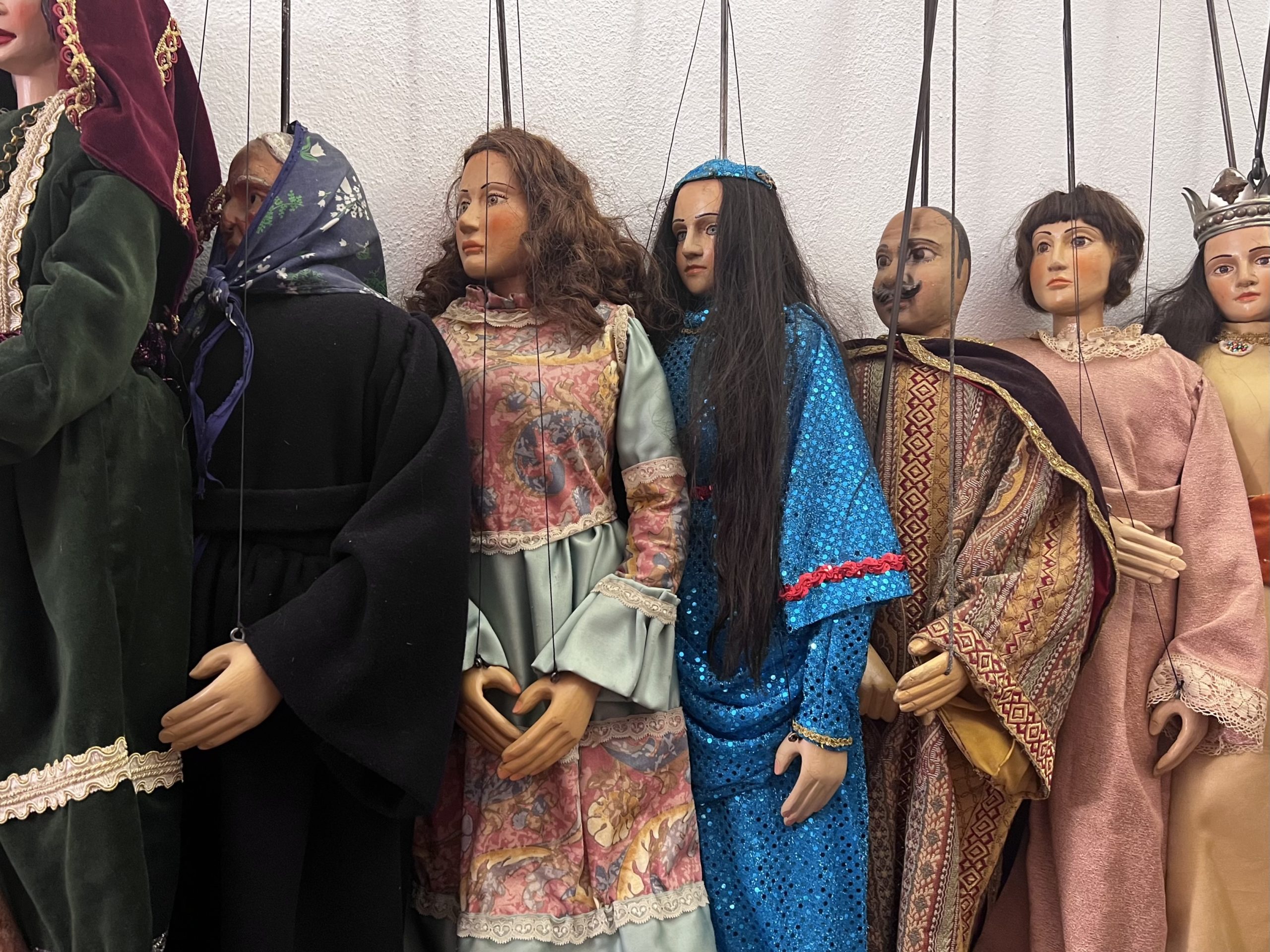
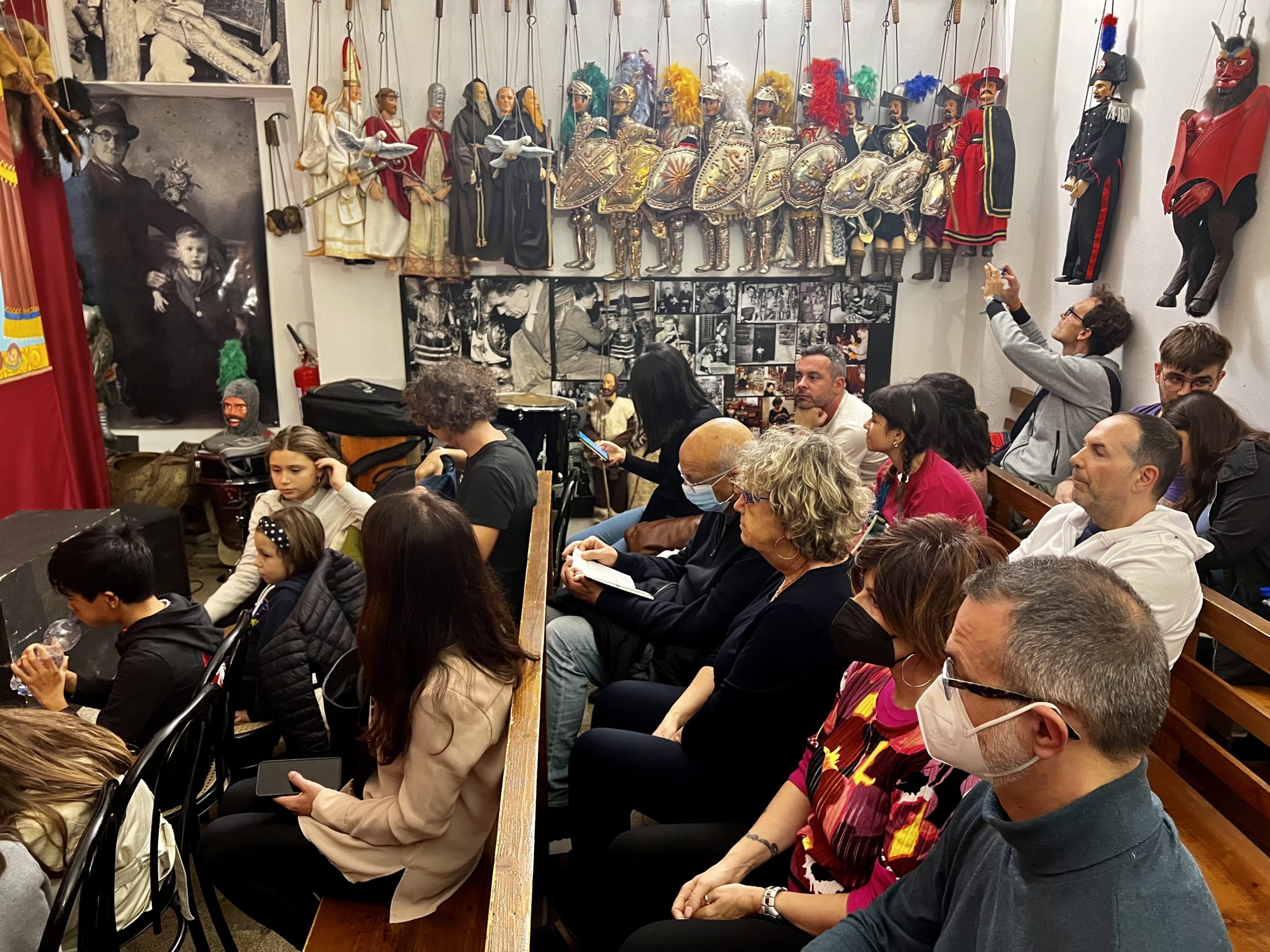
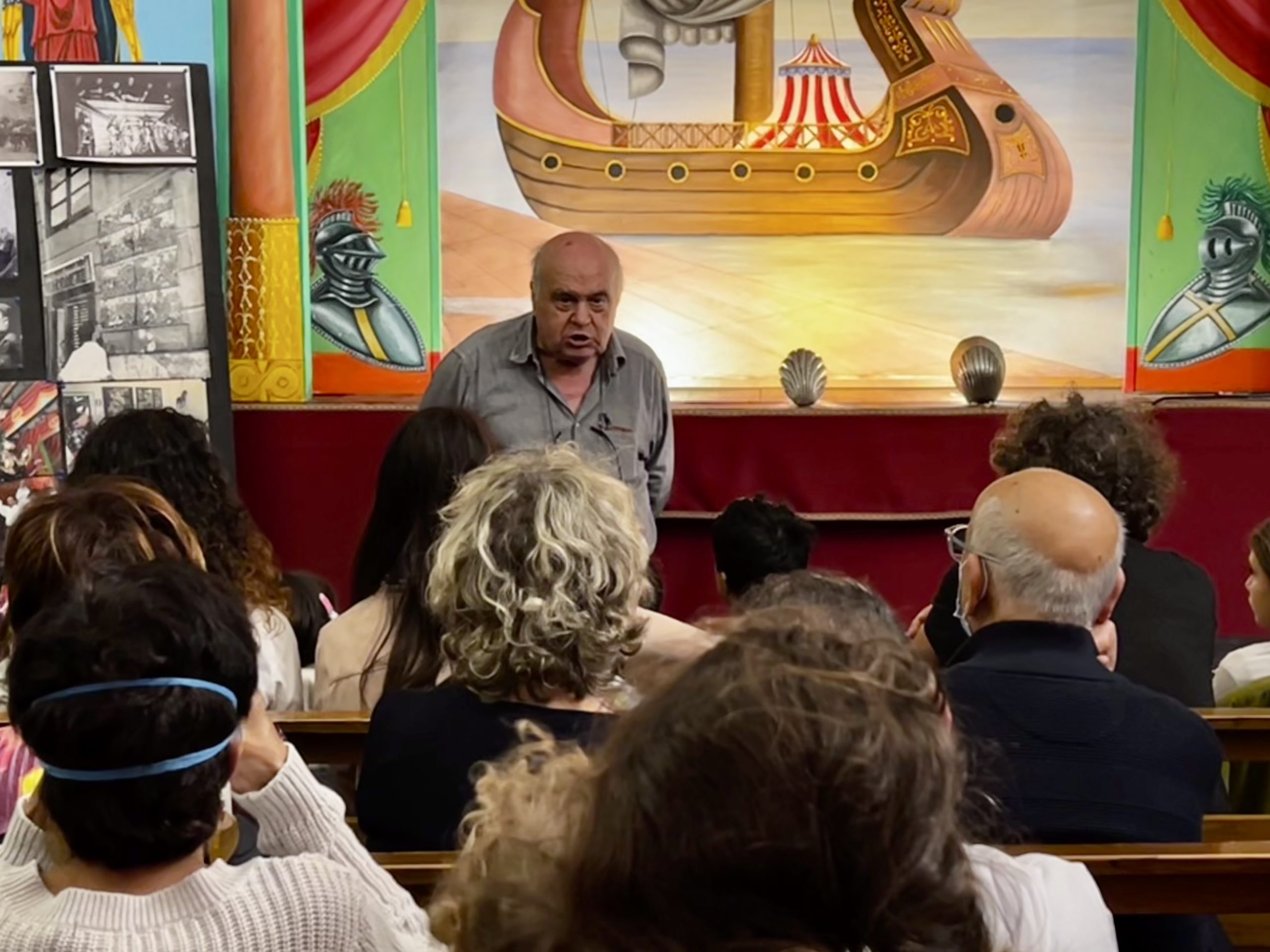
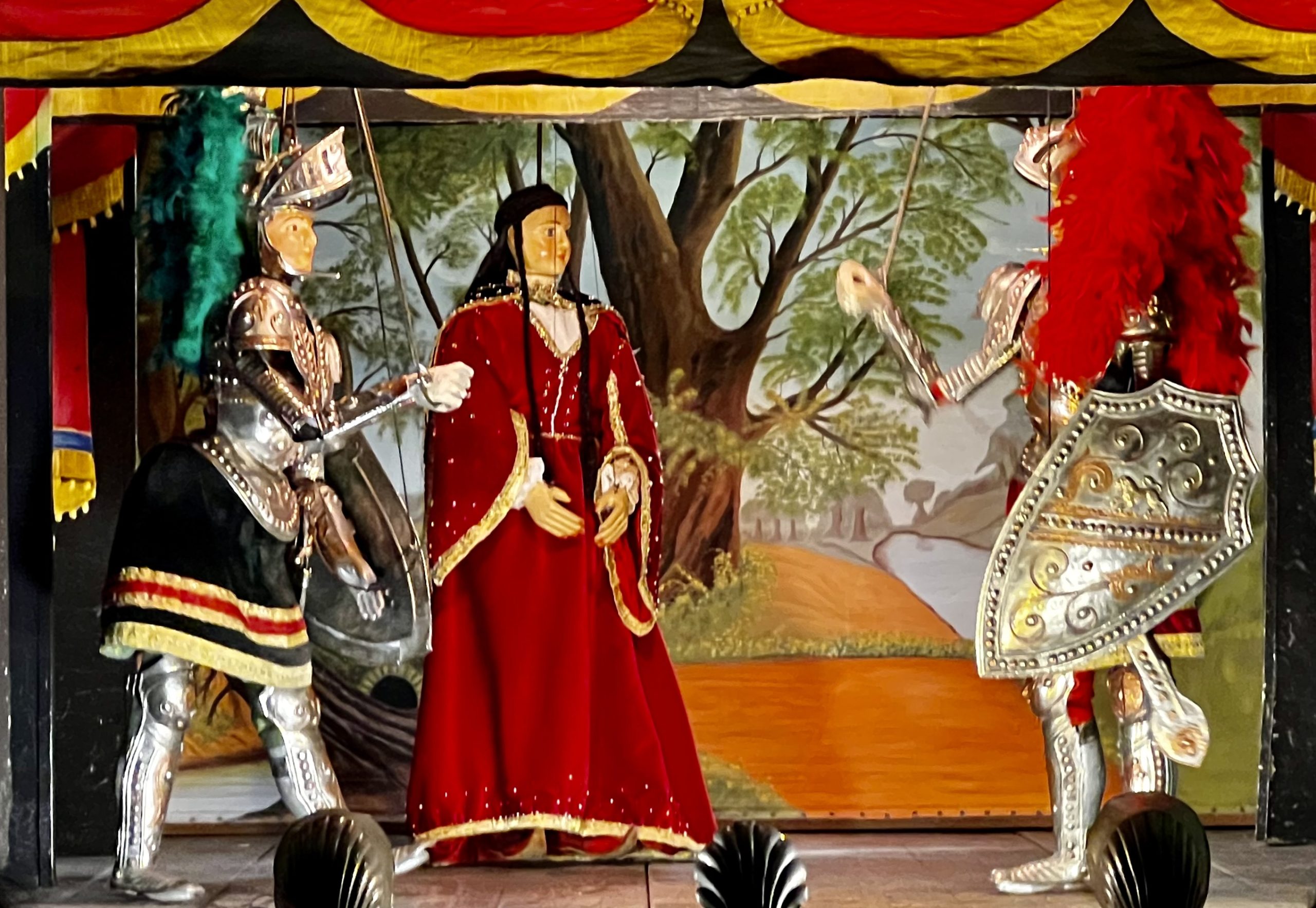




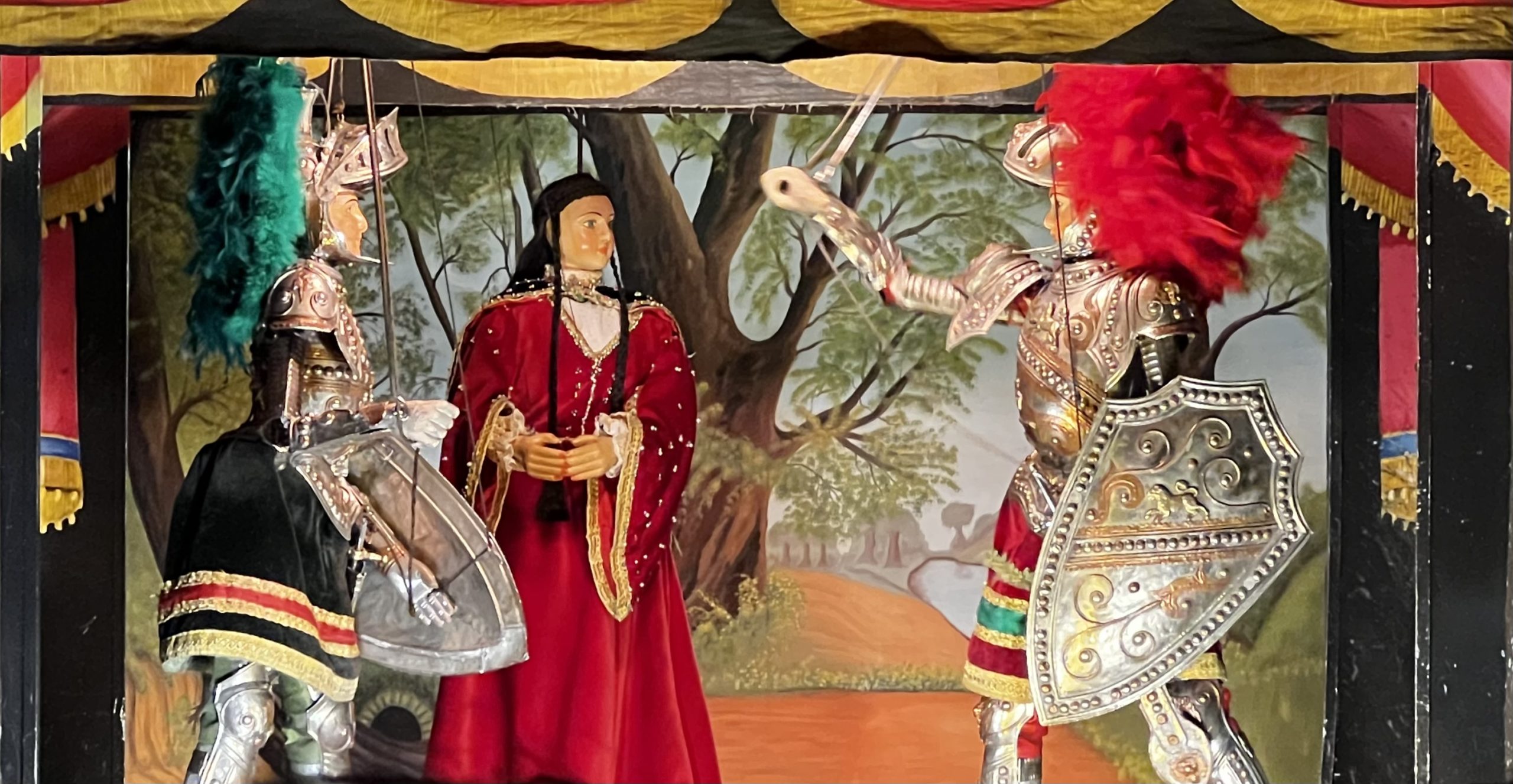


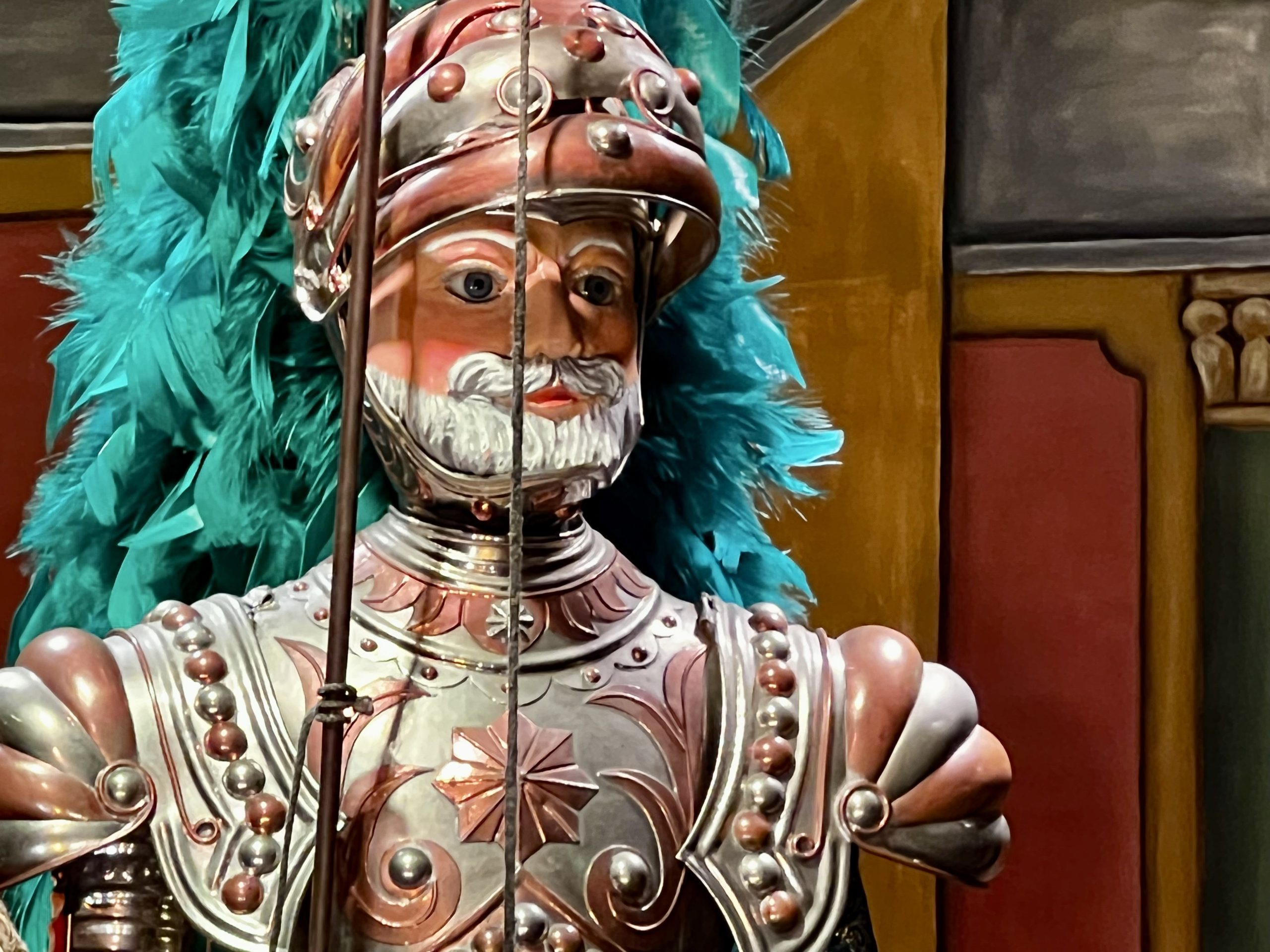
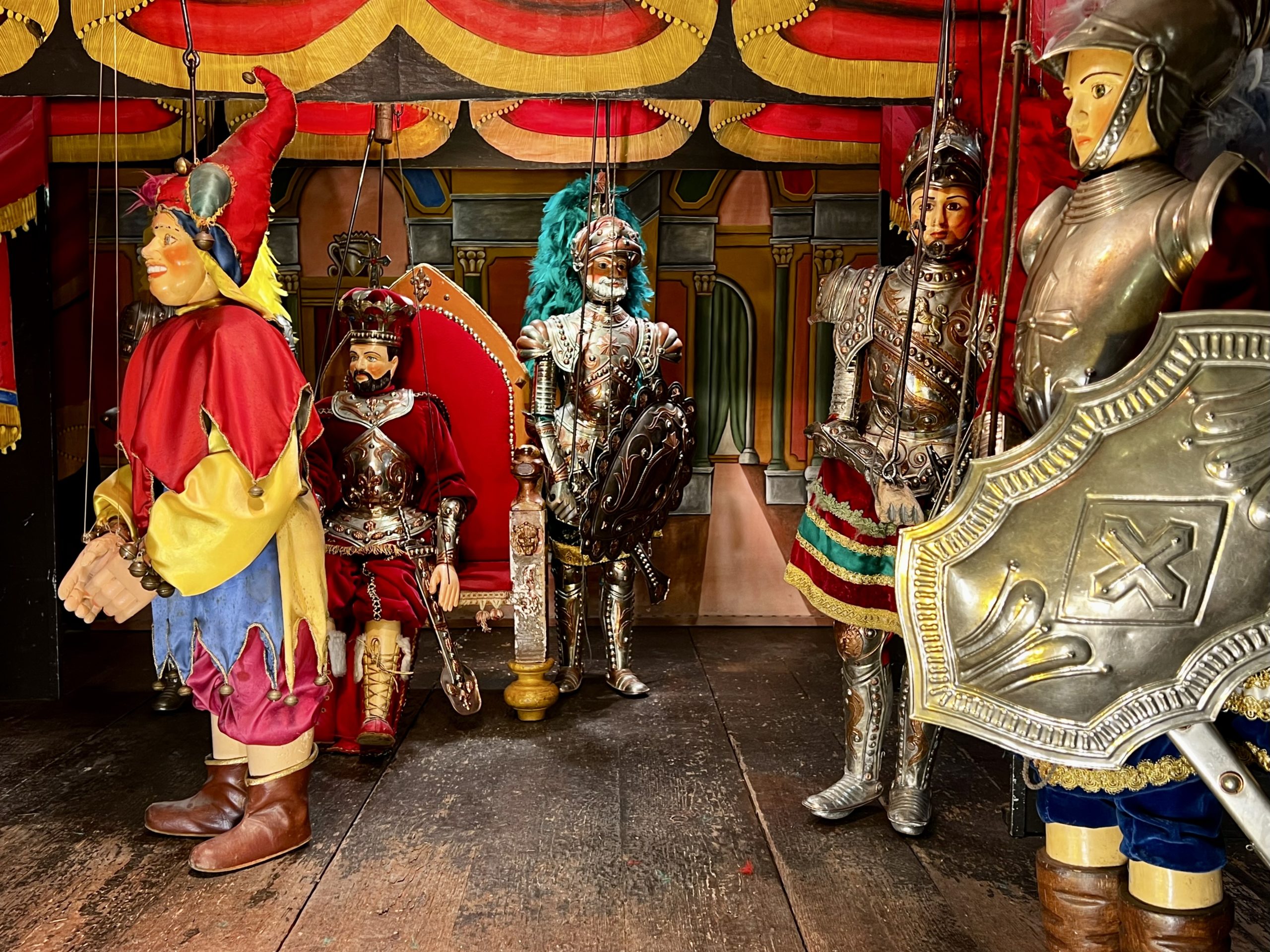
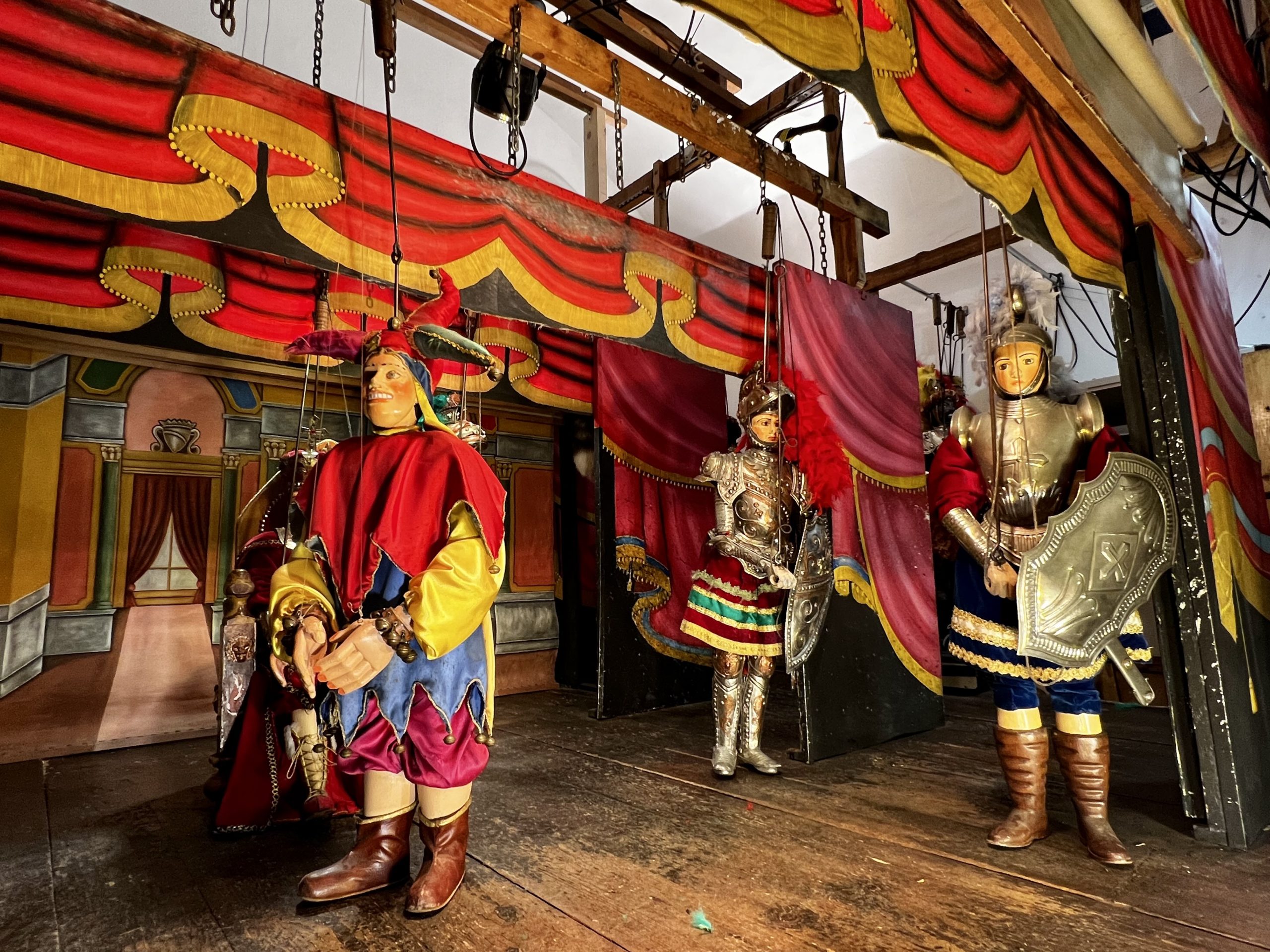
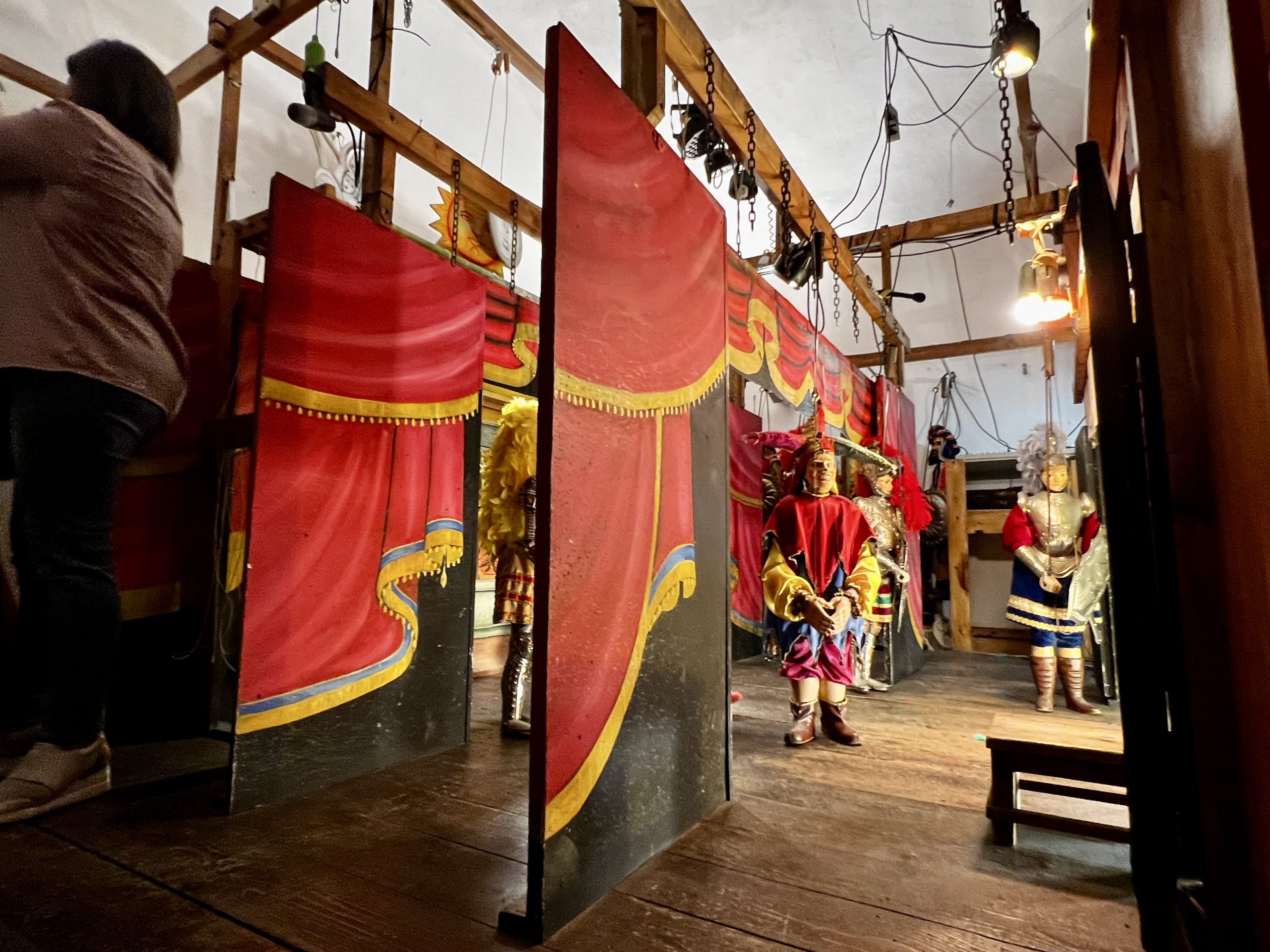

Teatro Massimo
Bonnie loves the Teatro Massimo. The largest opera house in Italy by square meters of space. Although it seats only 1,300, which is less than other opera houses in Italy. It was built beginning in 1875 on the site of a monastery and two churches. It went unused in recent decades when a Mafia mayor was in power, and thus fell out of the European opera circuit. We went to a belle canto recital here in 2019, and Bonnie is delighted to see that this year they have substantially increased their schedule of opera performances, as well as ballet and music. The building is dramatic in grandeur and detail in ornamentation. The style is vaguely Art Nouveau, or Liberty as it is called in Italy. The ceiling panels in the main house open for air circulation and are still used today. They have a lot of work to do in restoration. Francis Ford Coppola used the interior and exterior in The Godfather III—Sophia died on the front steps. And they have a lovely cafe, which we found is an elegant and popular place to stop for a drink after a long day of walking.
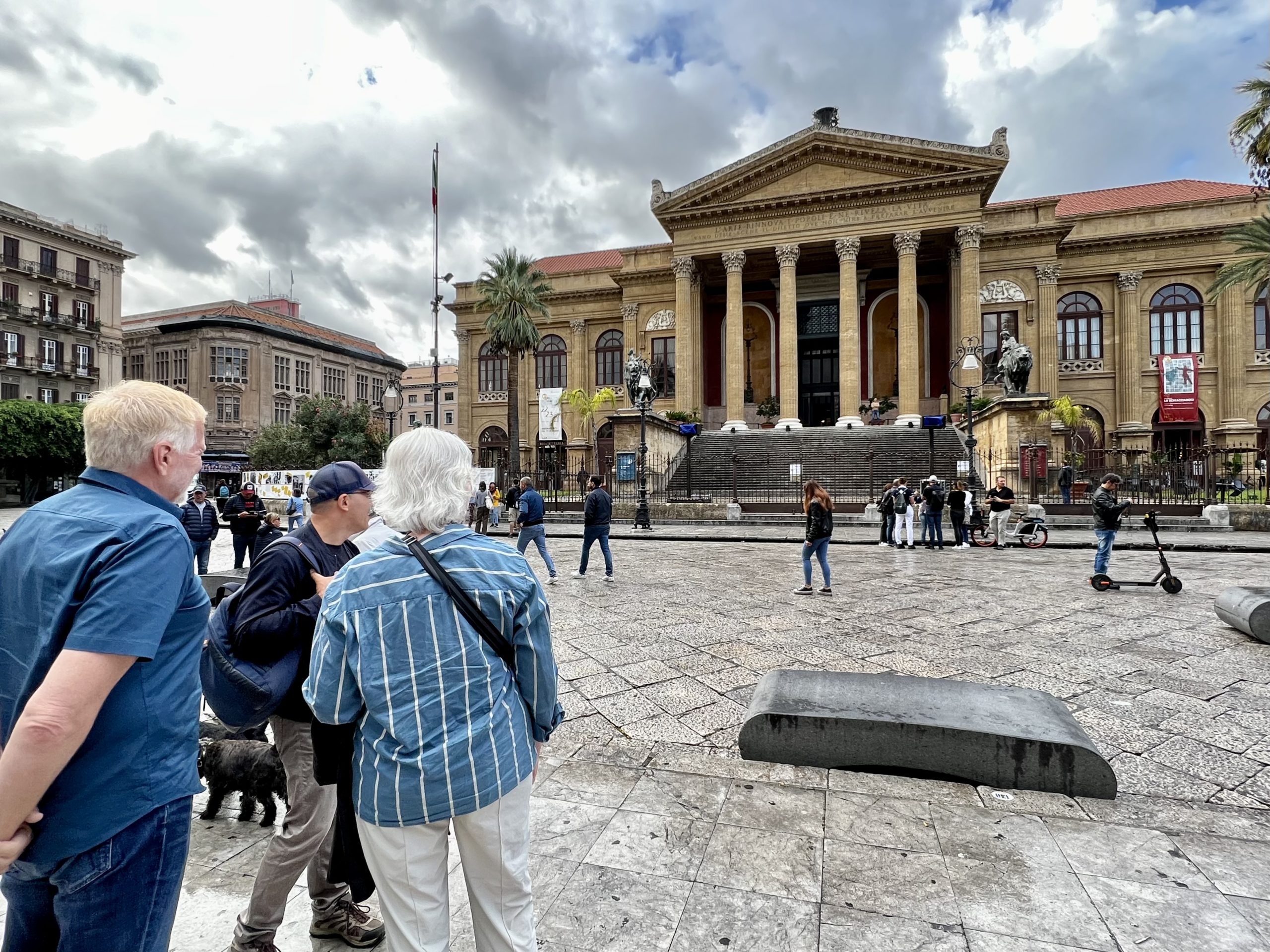
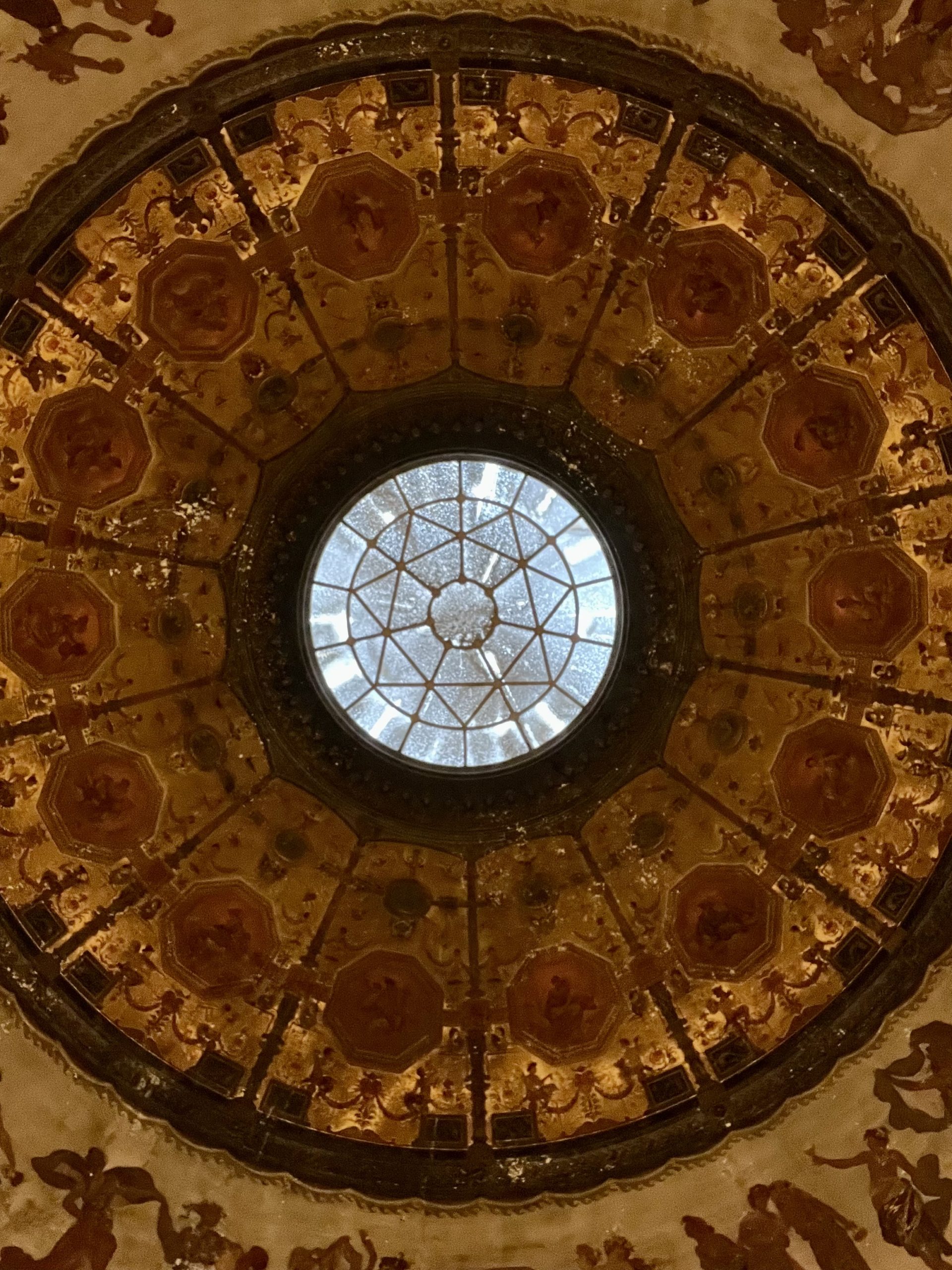
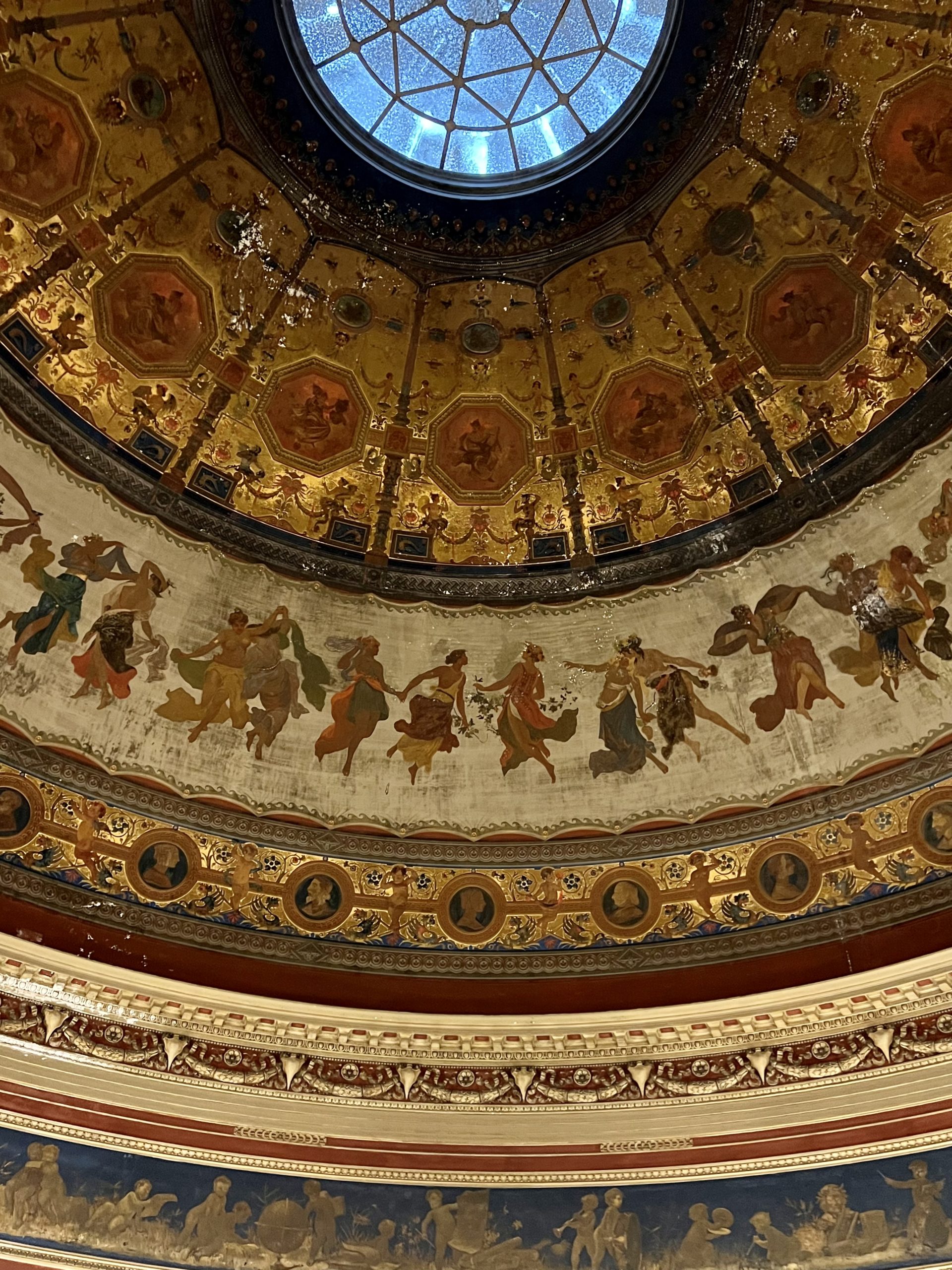
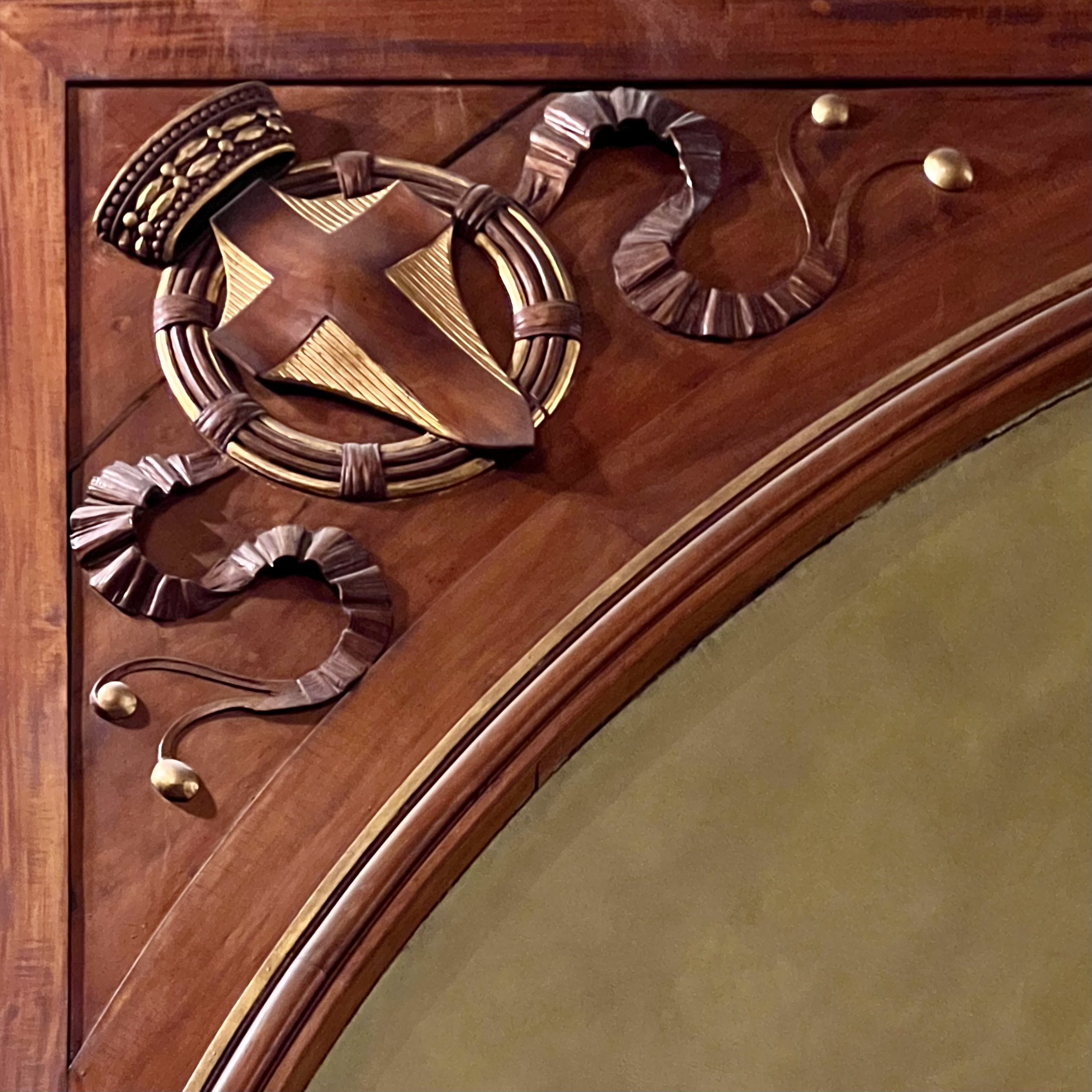
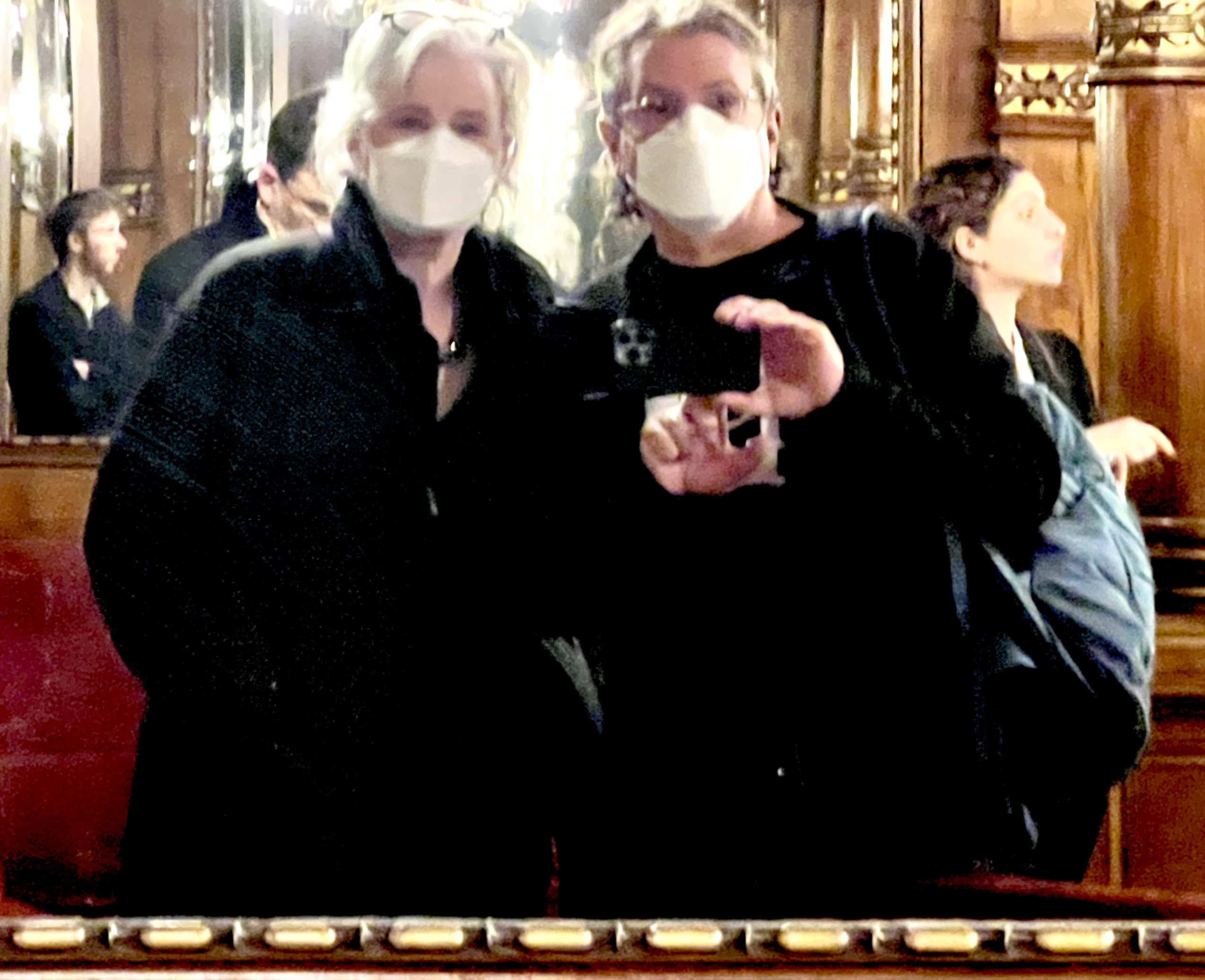
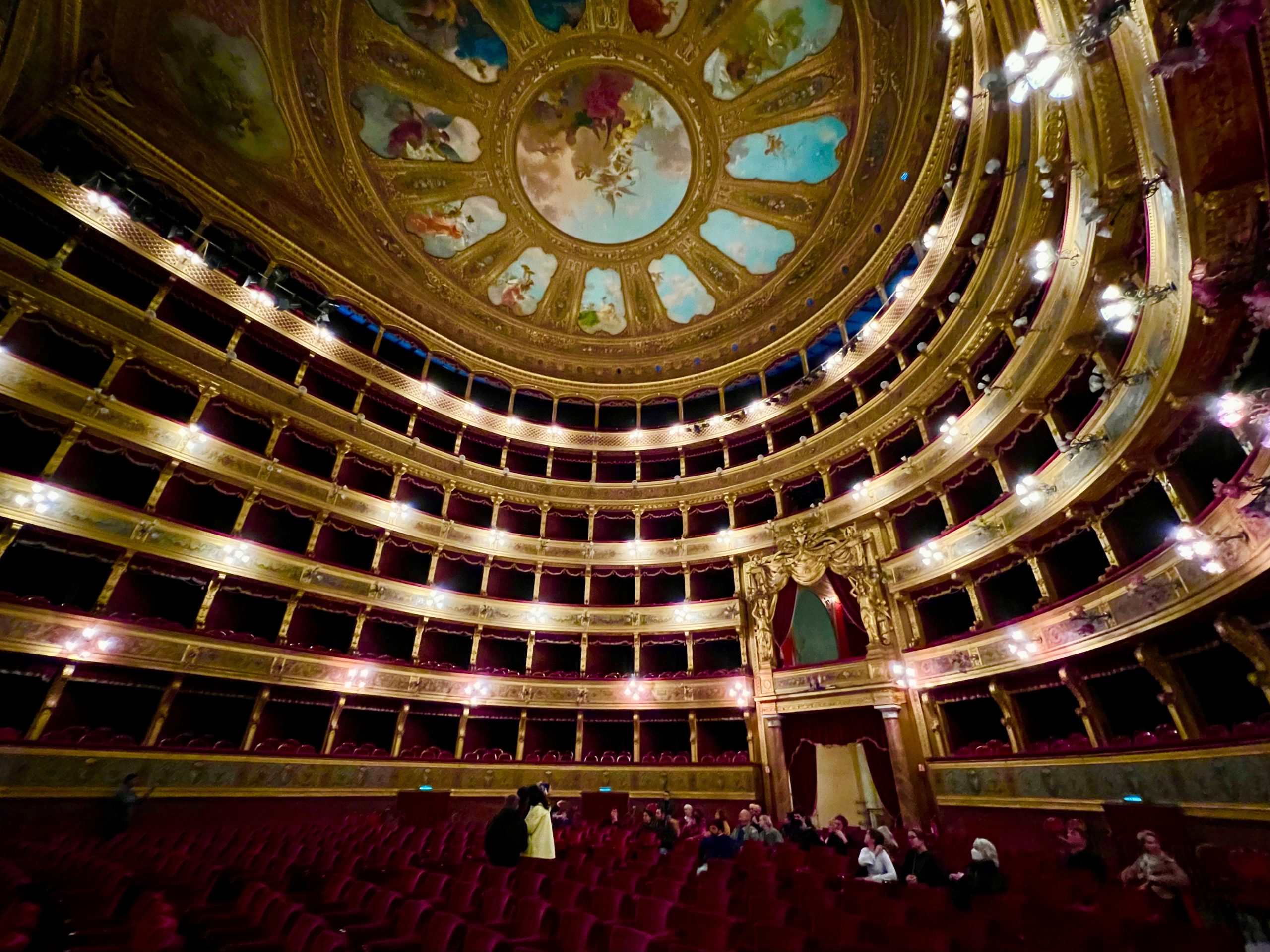
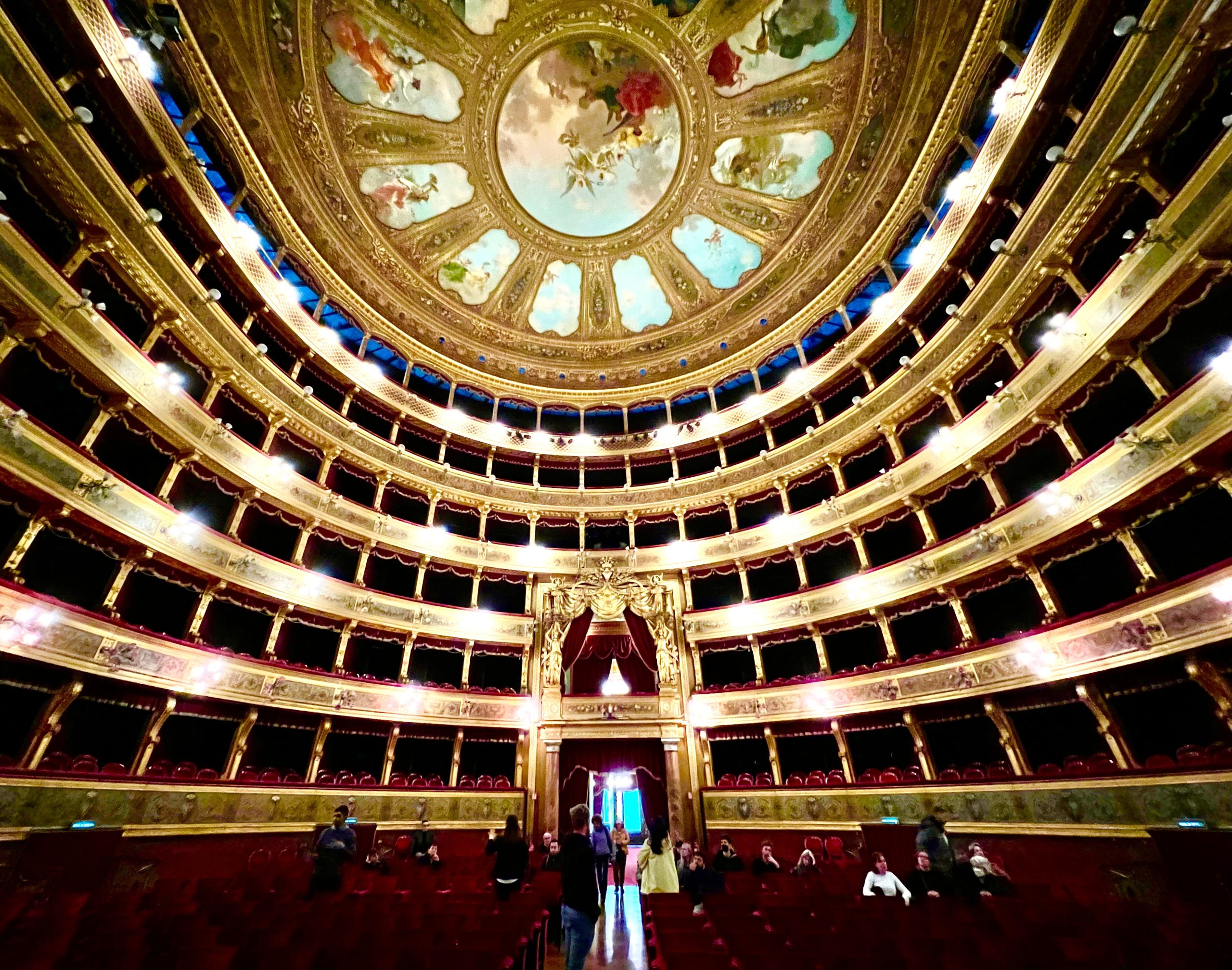
Marsala
Decided to take a day trip to Marsala, about an hour and a half from Palermo. It is well known for two reasons. The first is that the British decided to make marsala wine there, because the fortified wine kept well on long voyages. The second is that Garabaldi landed here in 1860 with 1,000+ troops to begin the campaign for the unification of Italy. Risky venture, as he had to defeat the Bourbons who outnumbered him in both troops and military equipment. With British naval support, he won. We enjoyed strolling in the compact historic district and seeing the ornate architecture. Different from what we saw elsewhere in Sicily. We also managed a quick trip to the wholesale distributor nearby for some amaro and tonno.
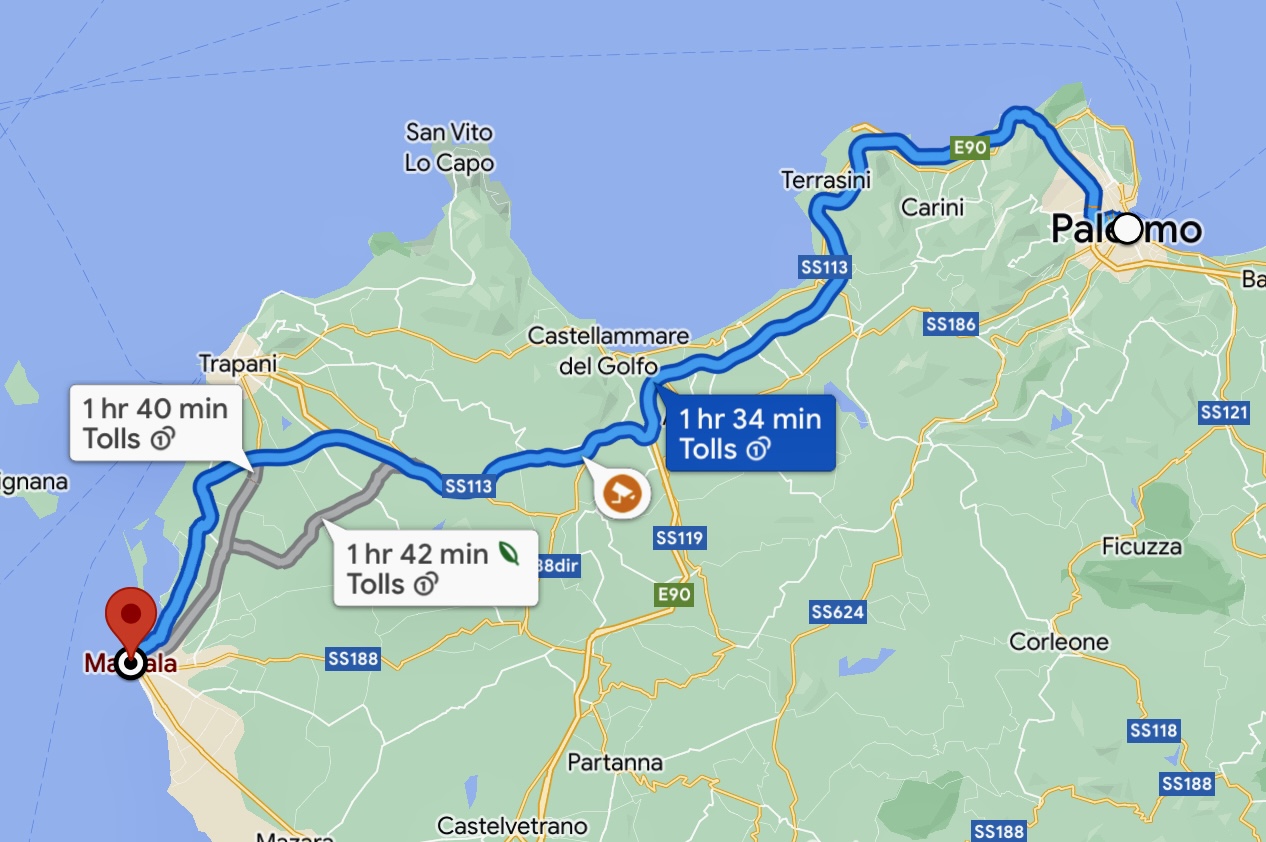
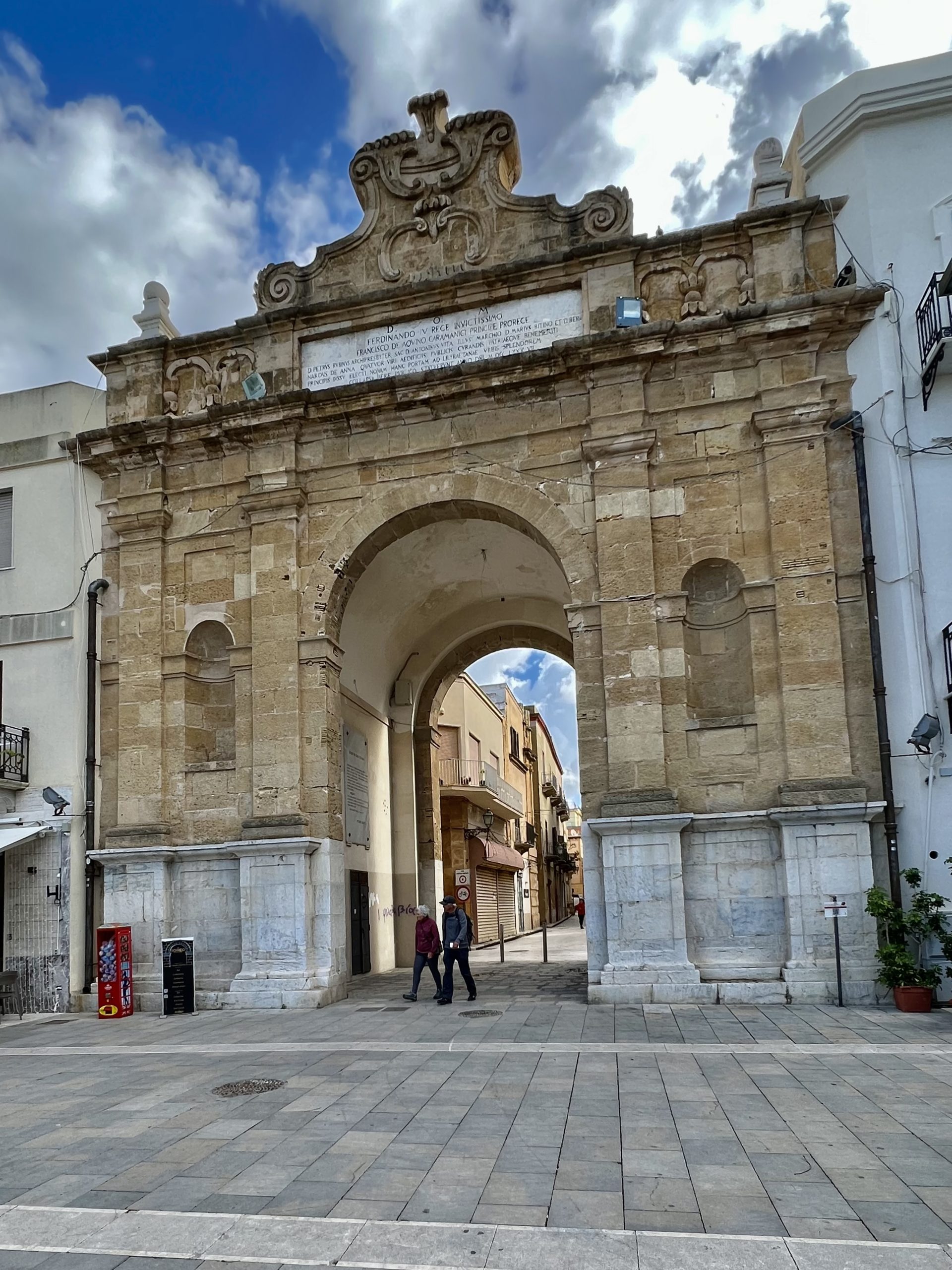
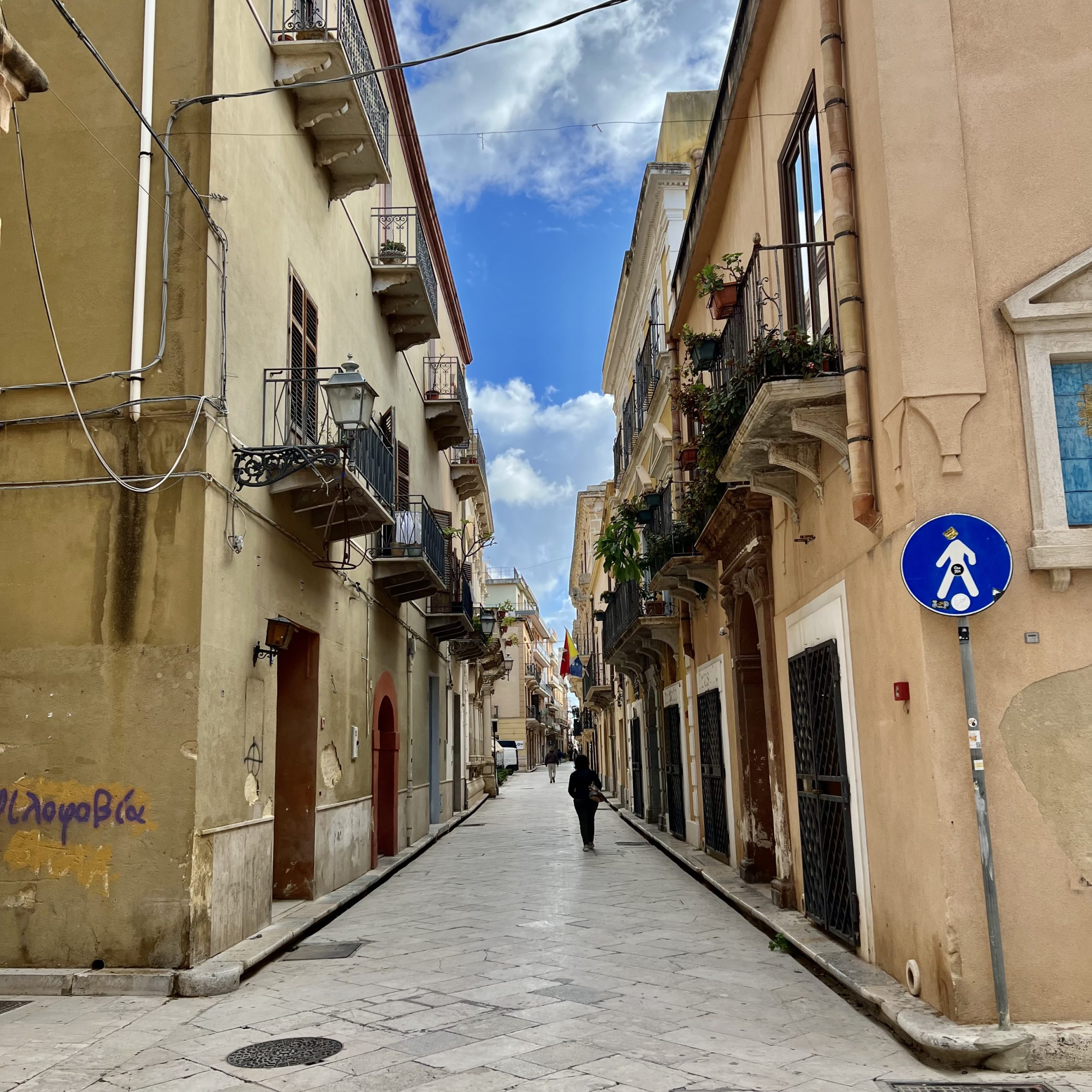
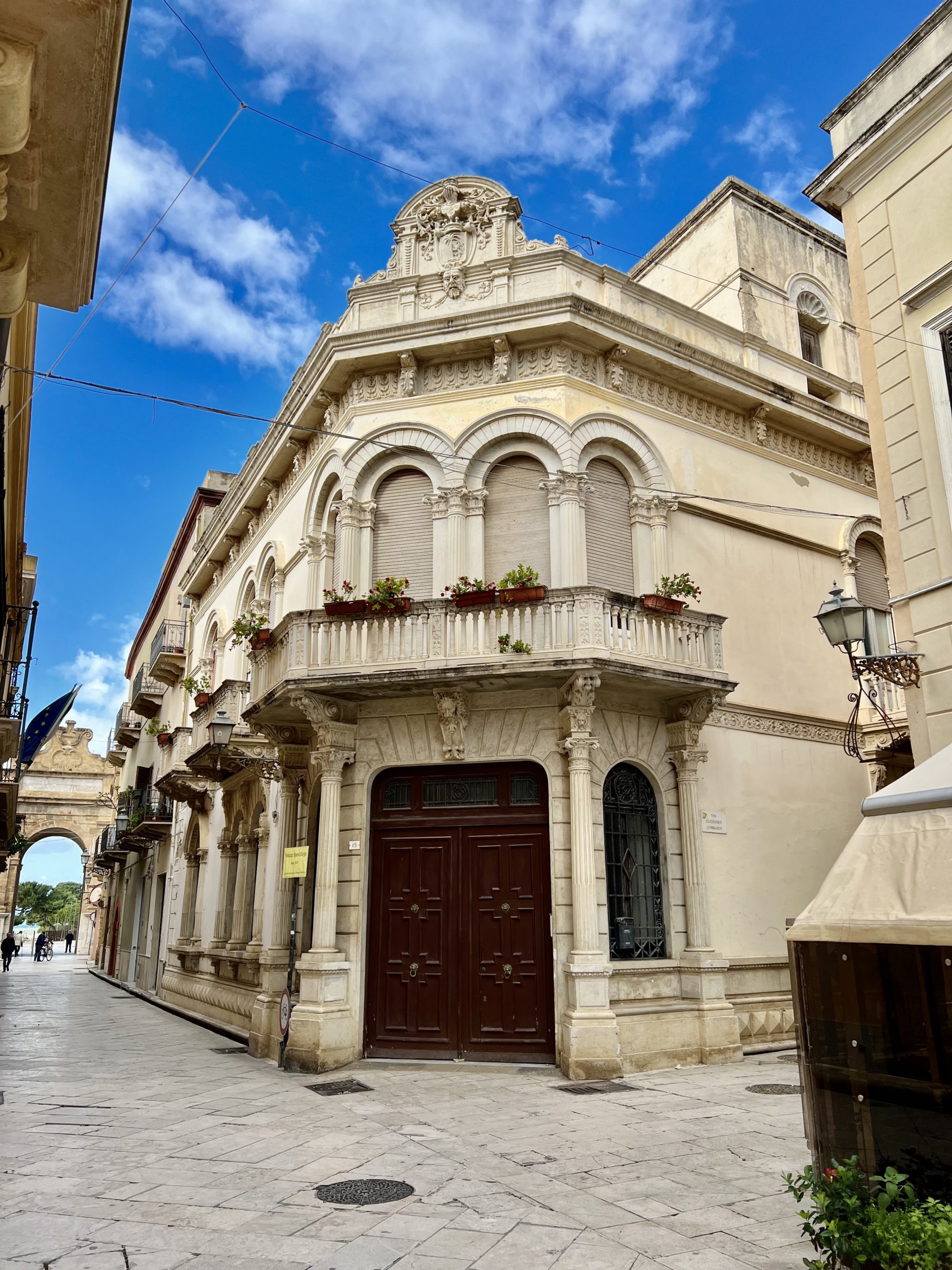
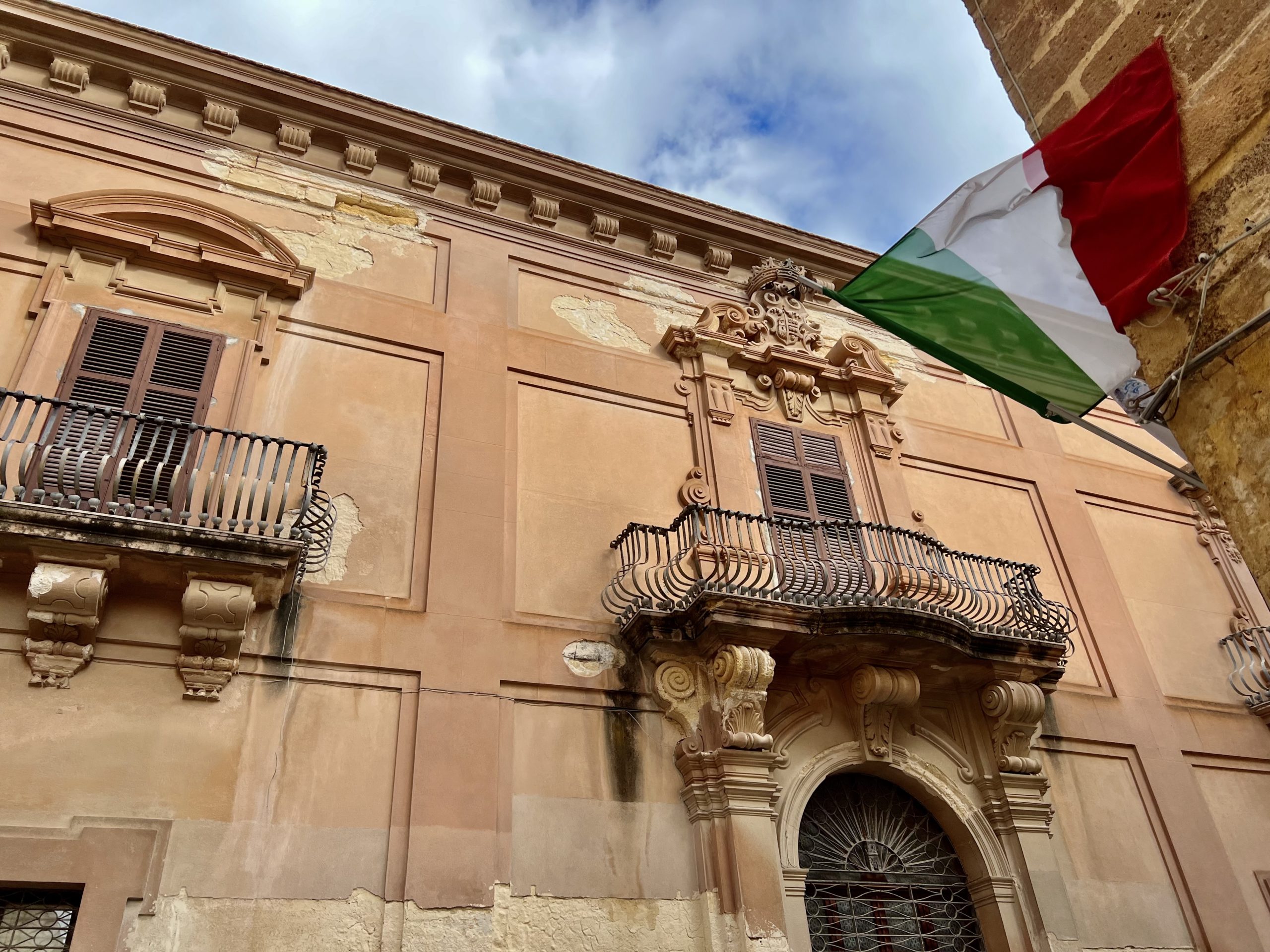
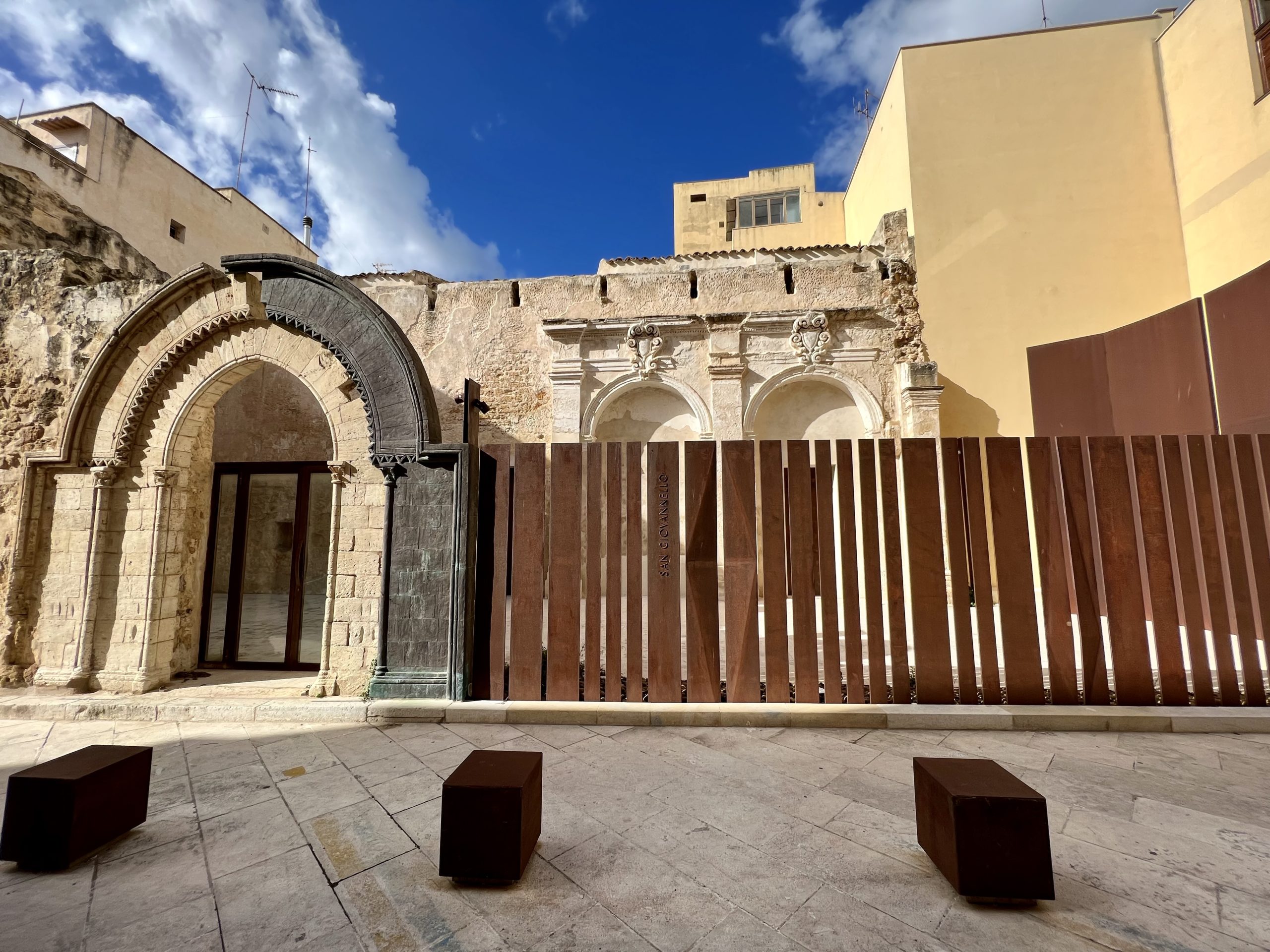
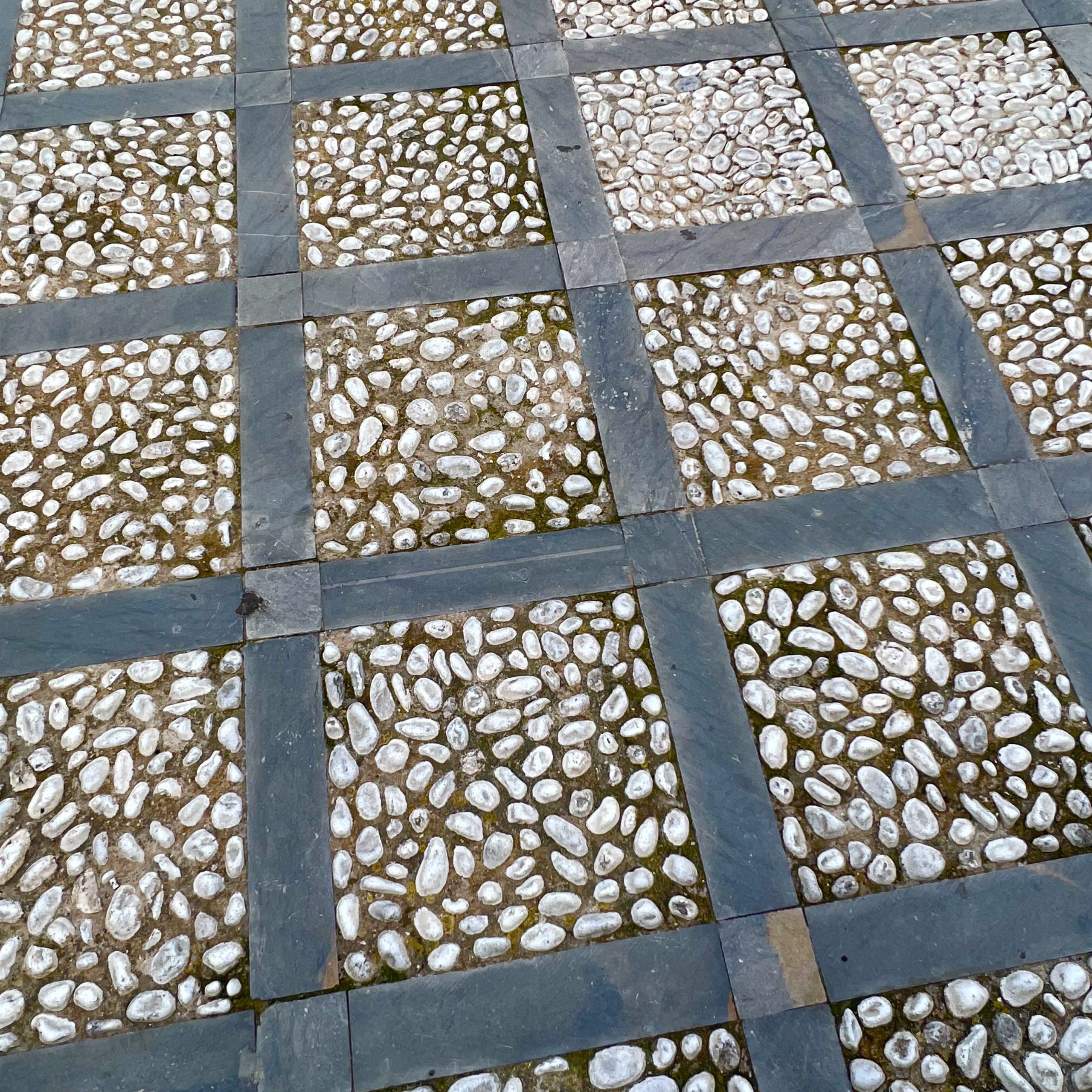
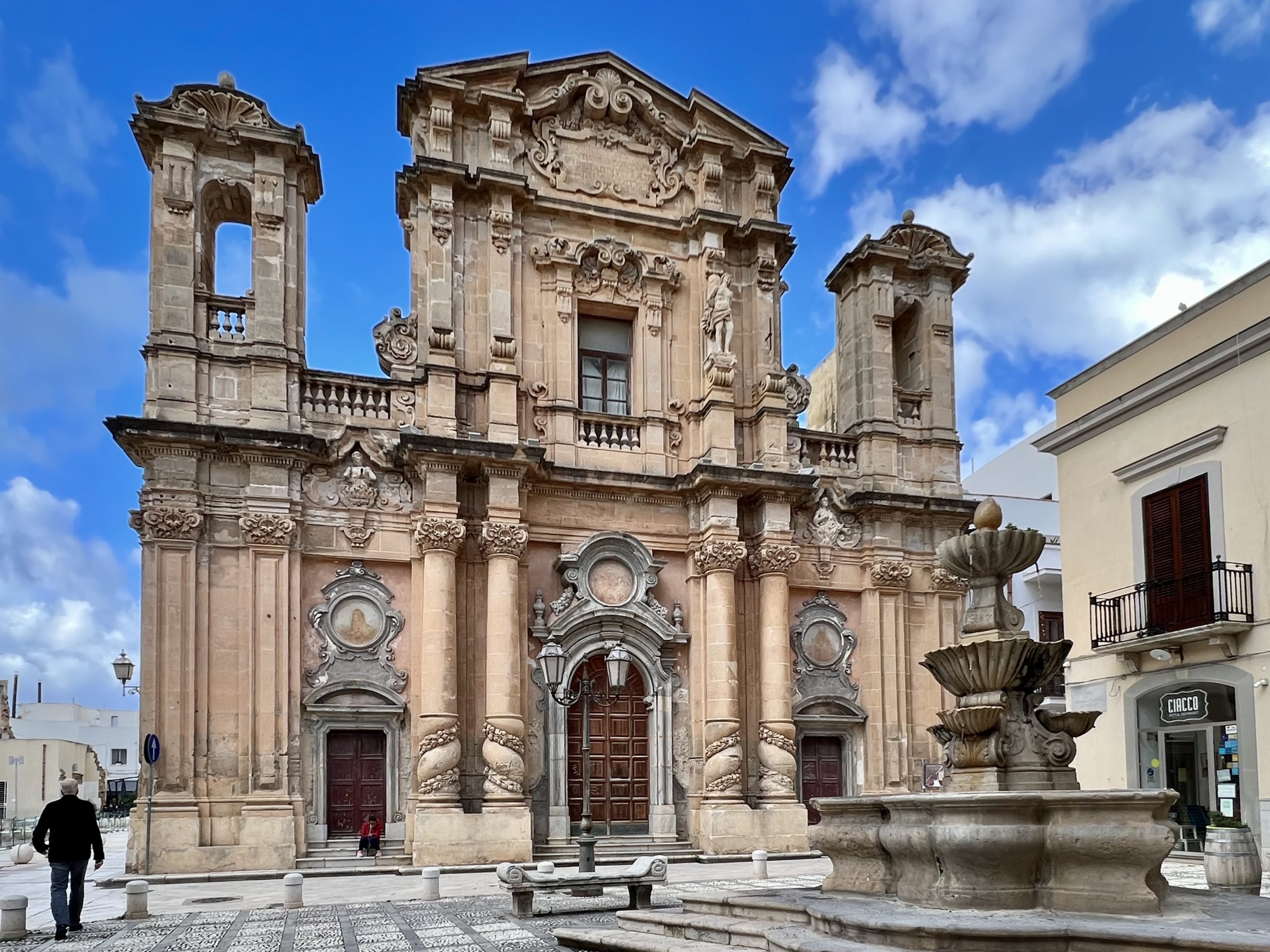

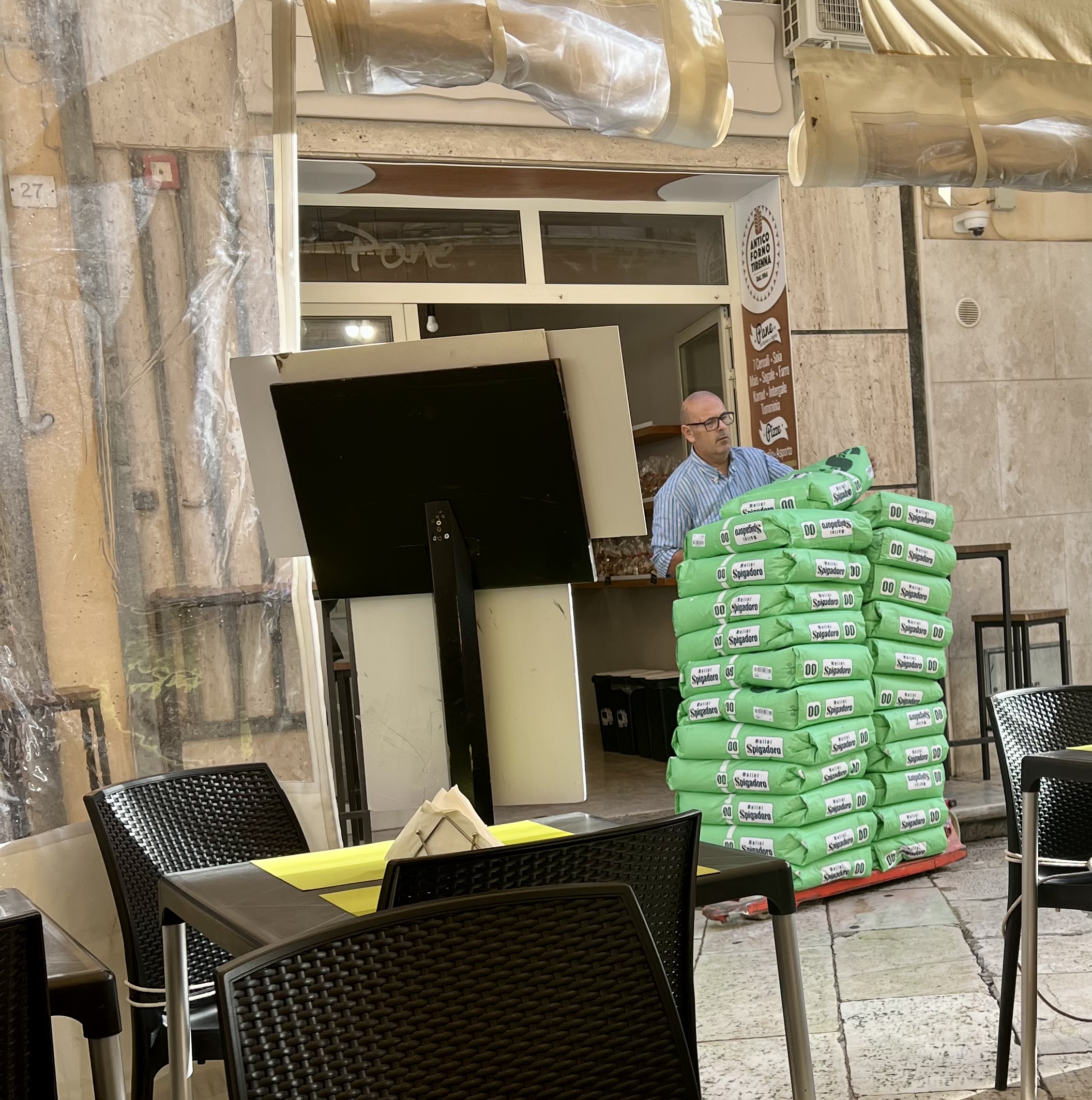
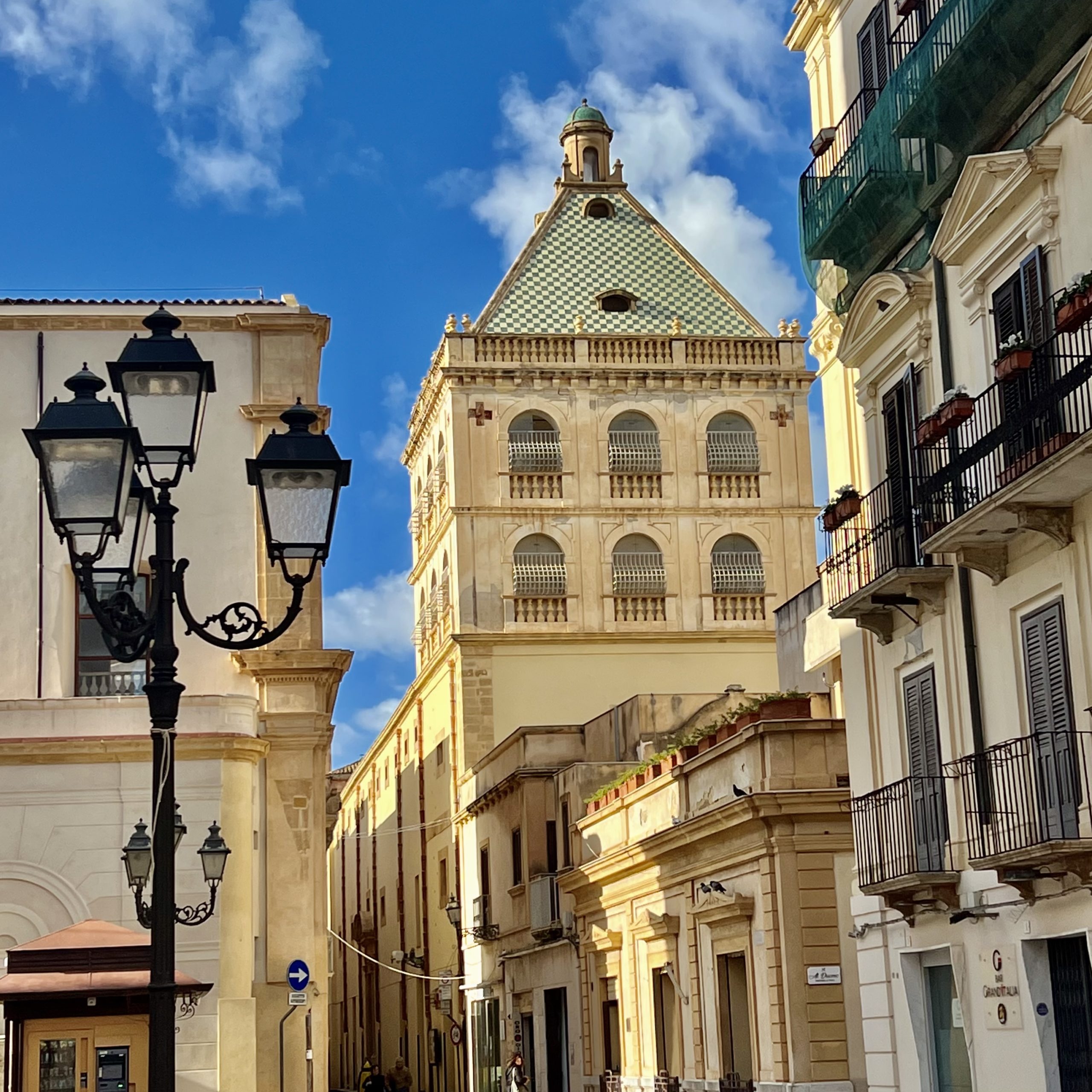

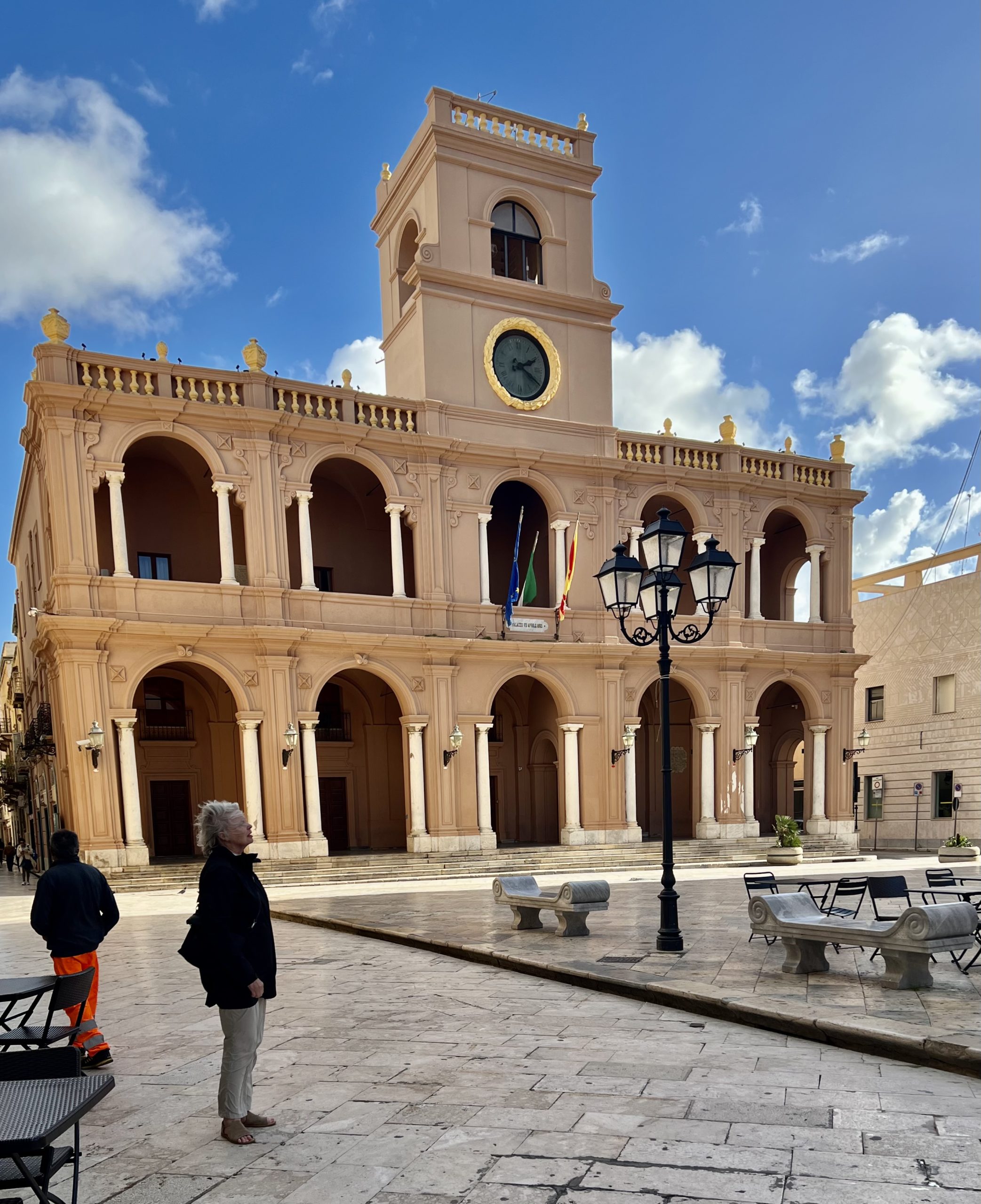
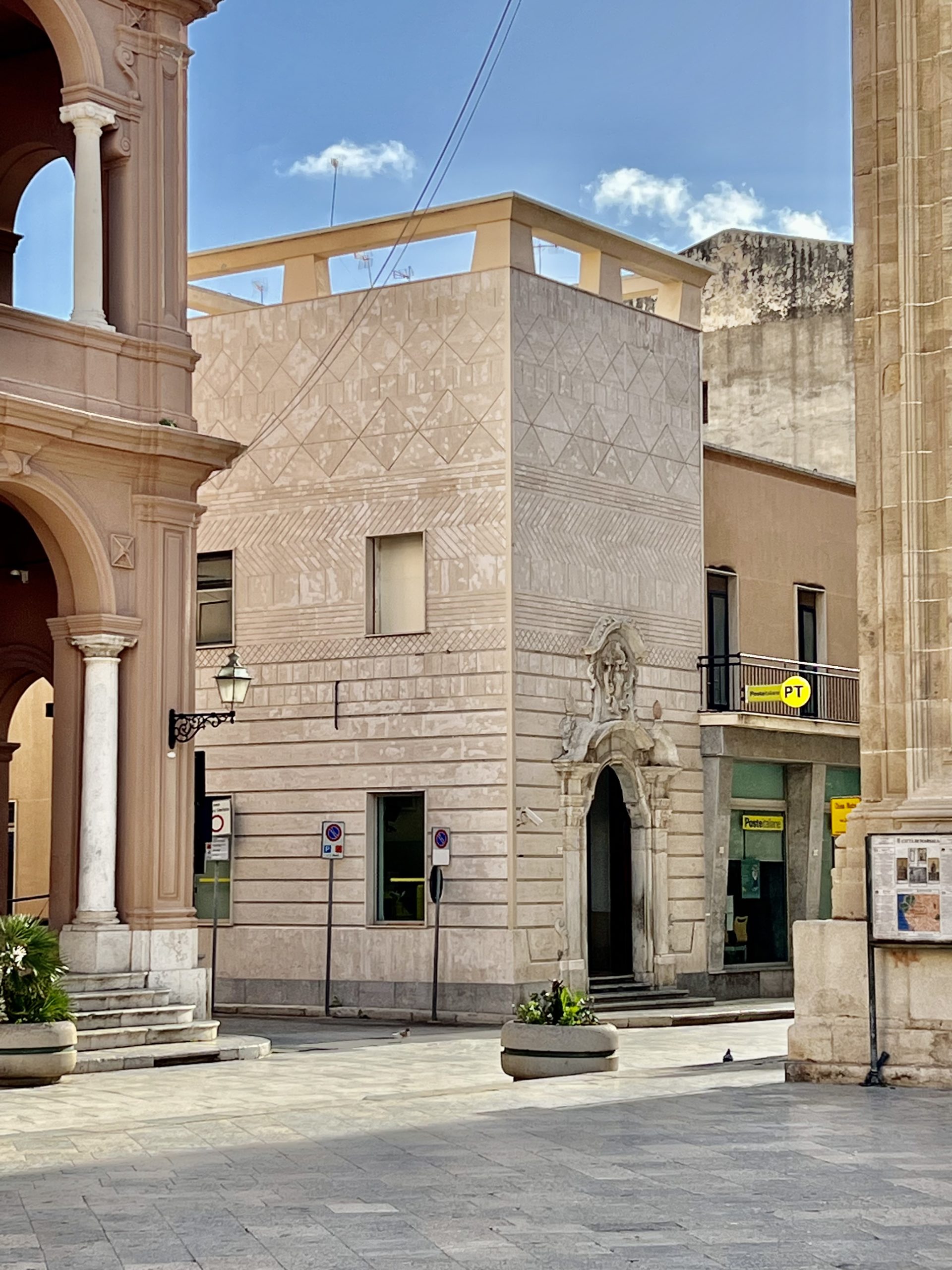
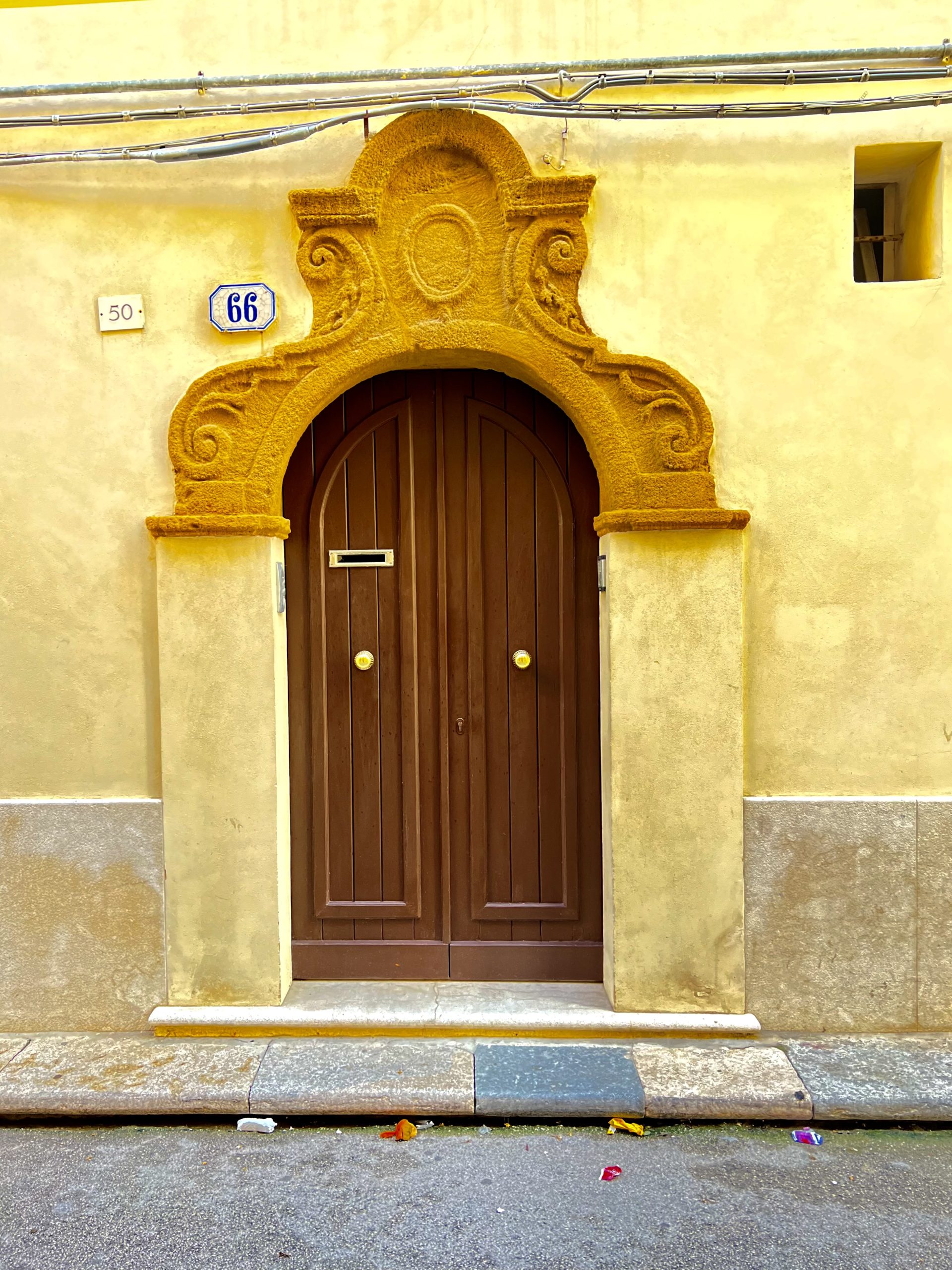
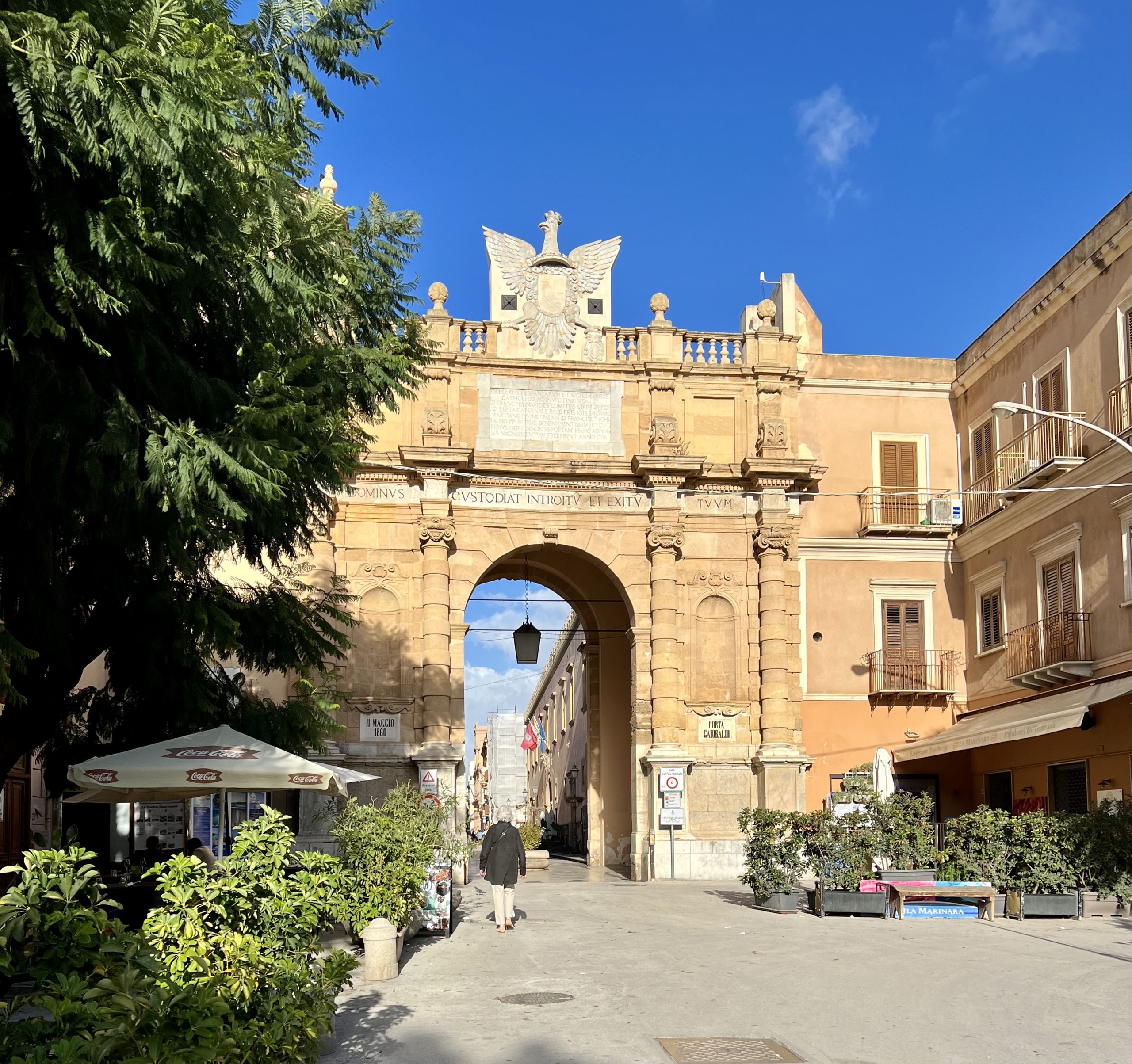
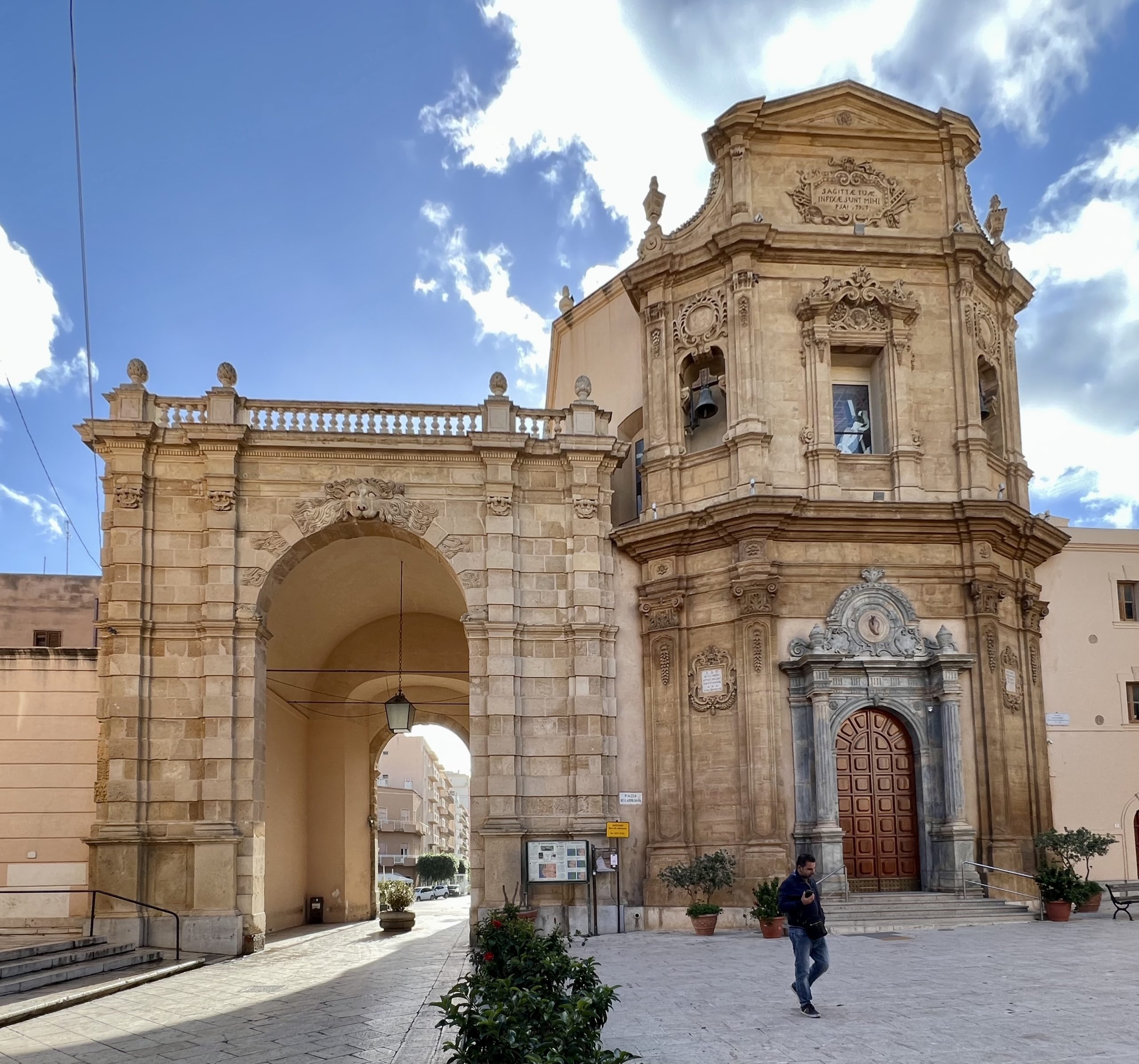
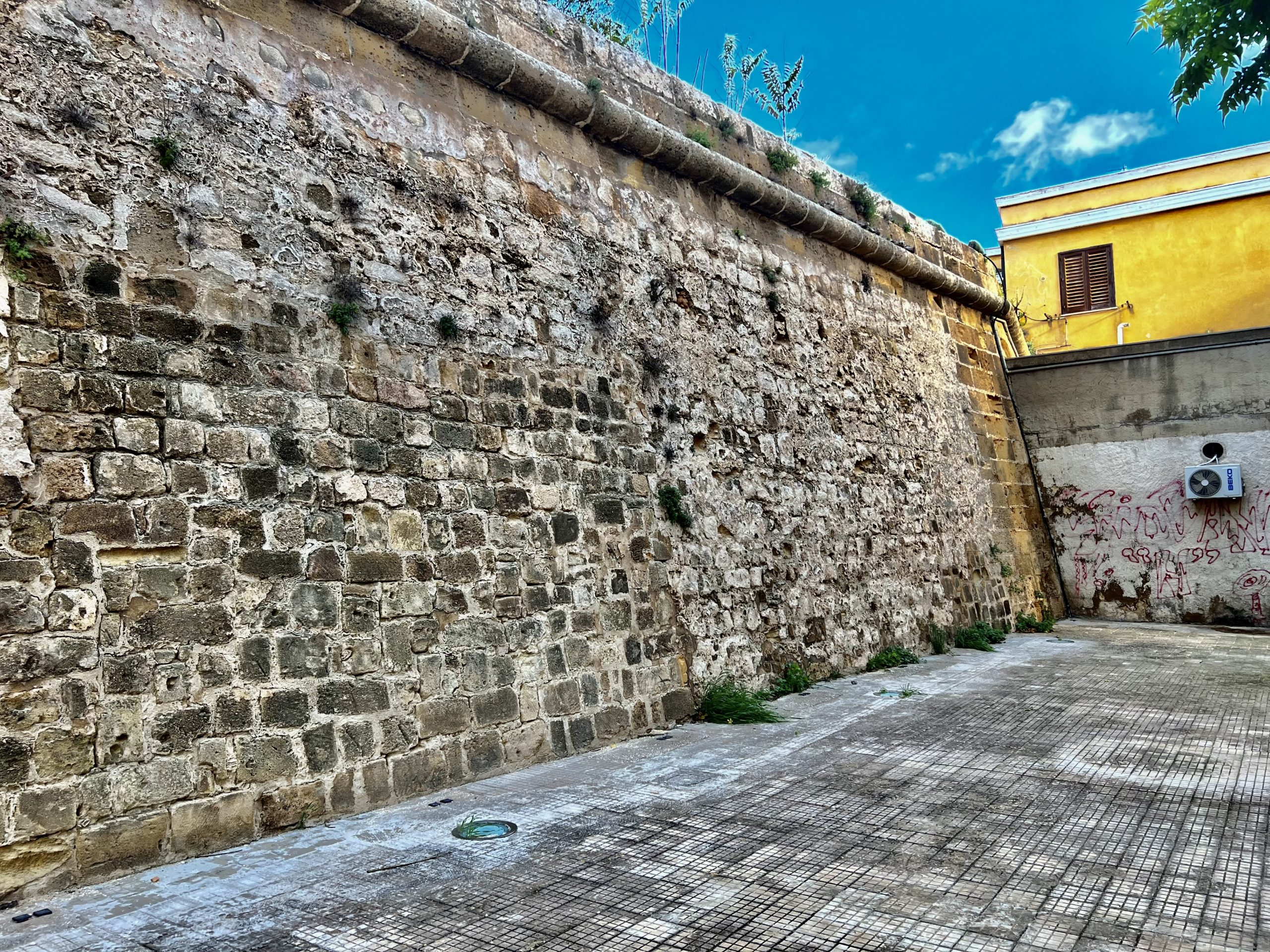
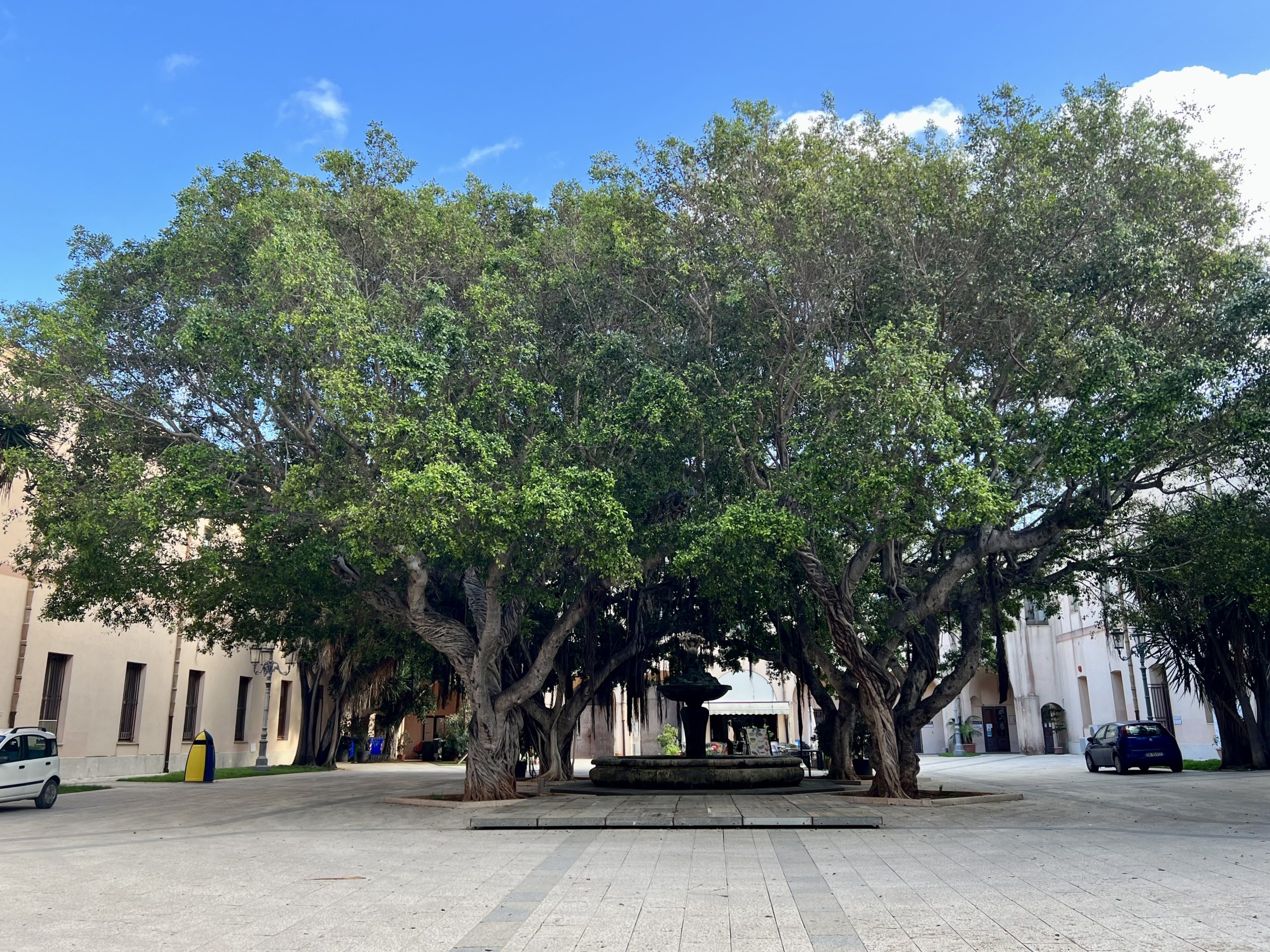
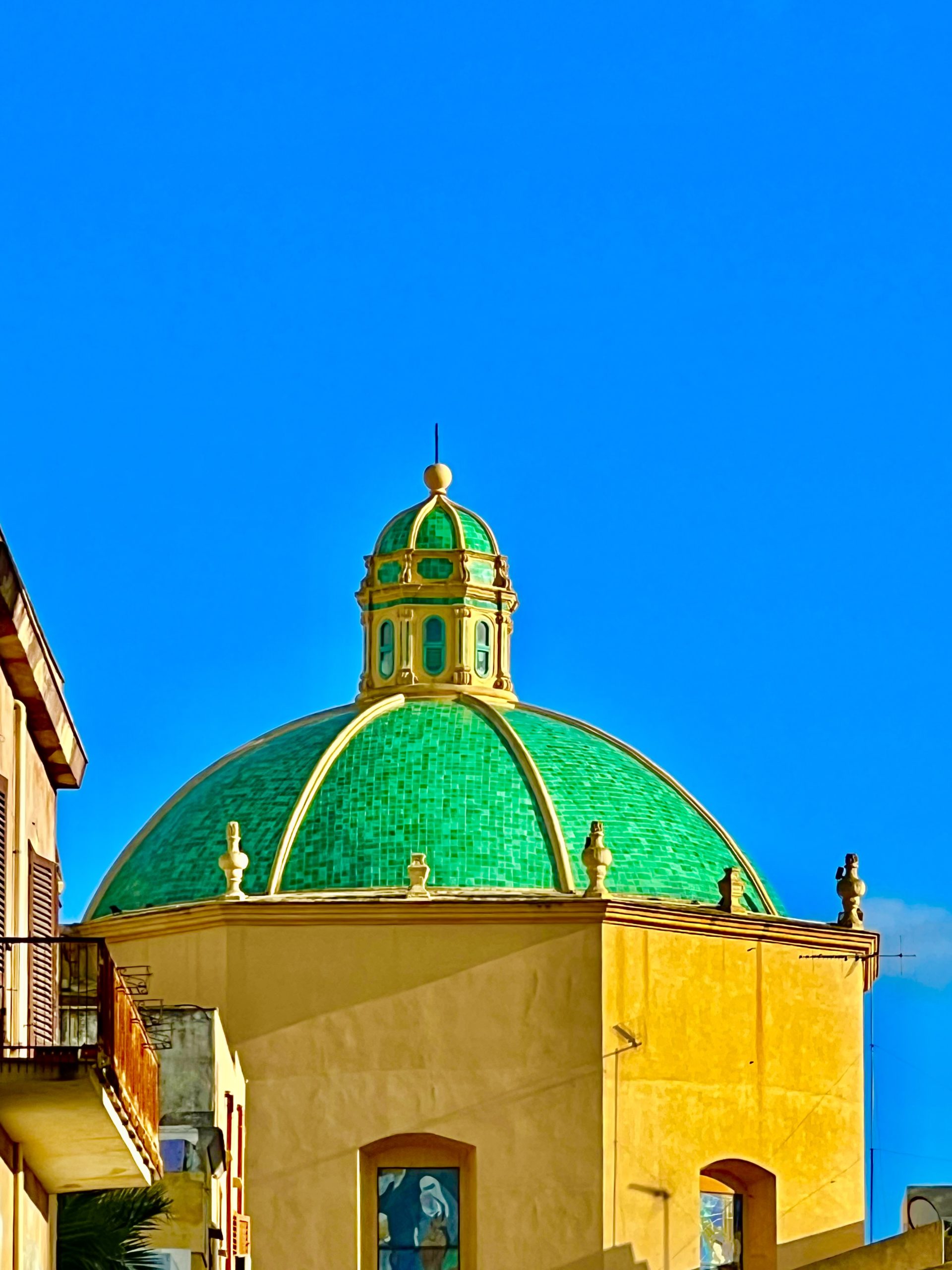
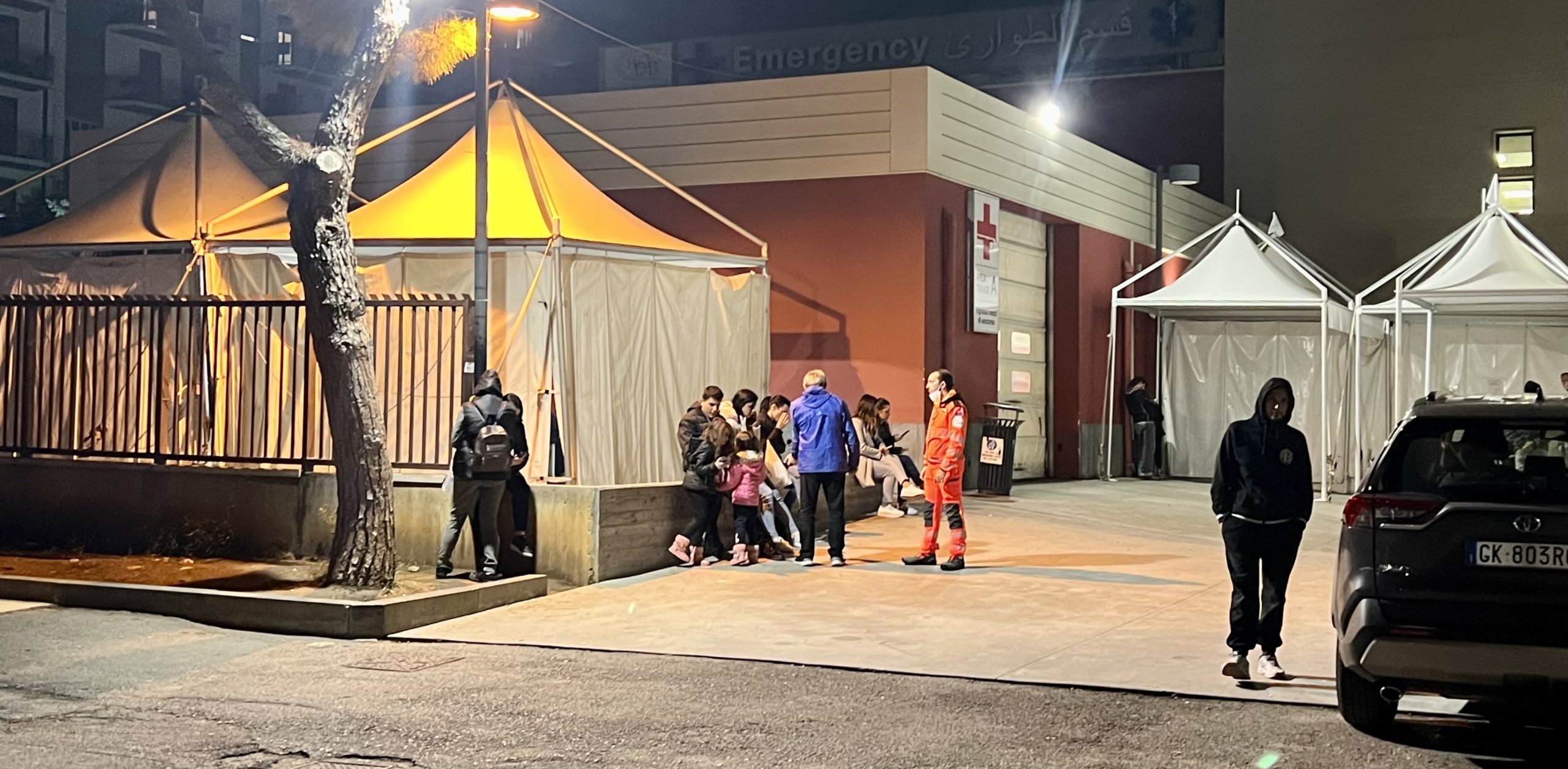
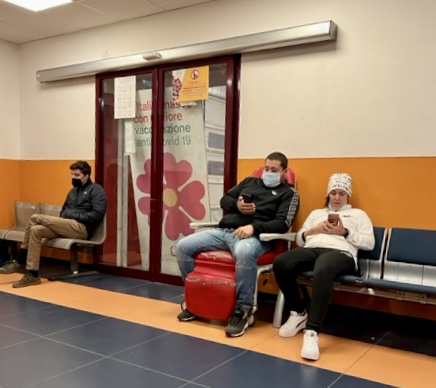
U Manciari e u Viviri
Con Domenico e la famiglia
Domenico and Laura chose this pizzeria for a family lunch for two reasons: 1 – good food, 2 – they have a glass-enclosed play area for kids with a staff baby sitter. Worked well. The shrieking of excited kids was quite muted. We were joined by both of Domenico’s parents.
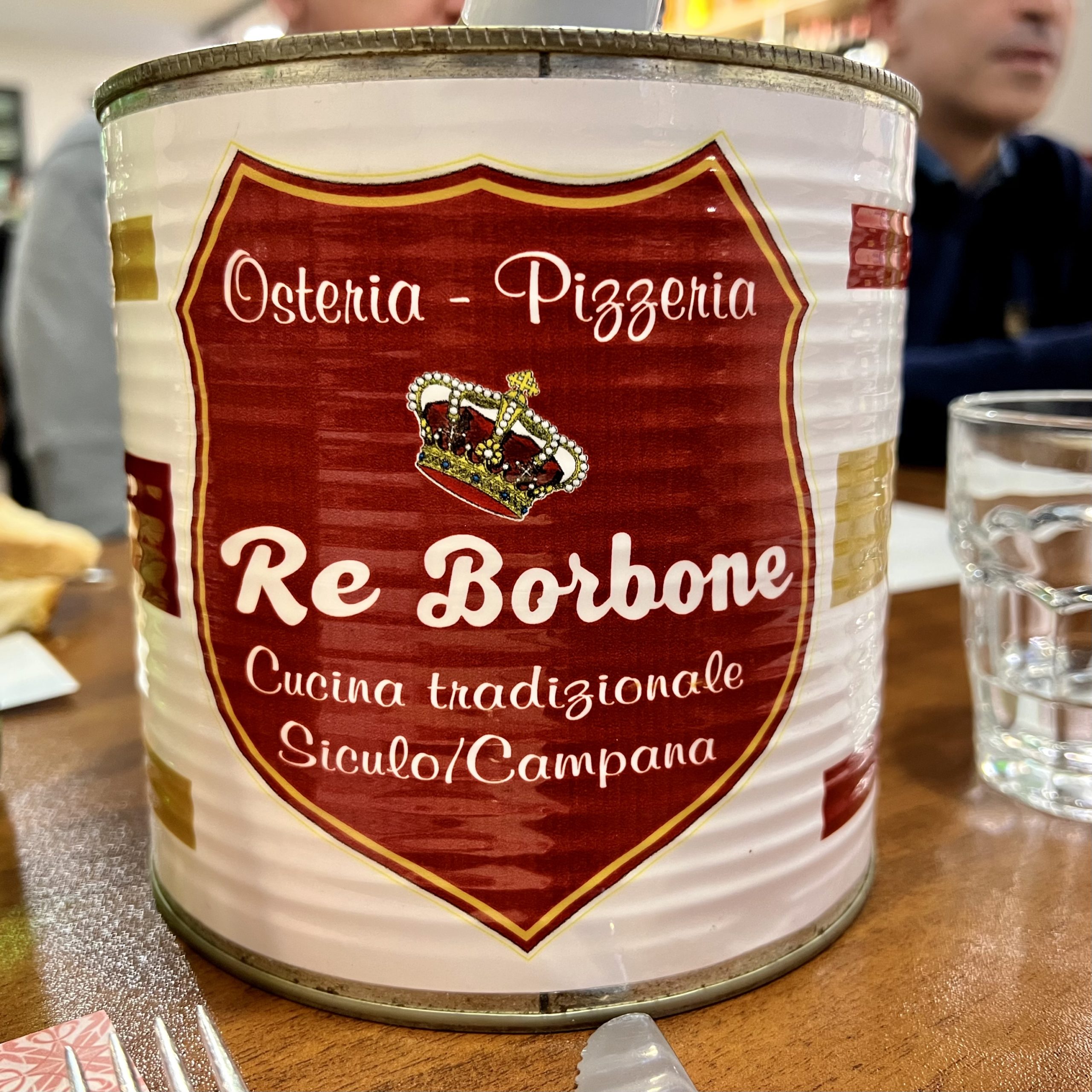
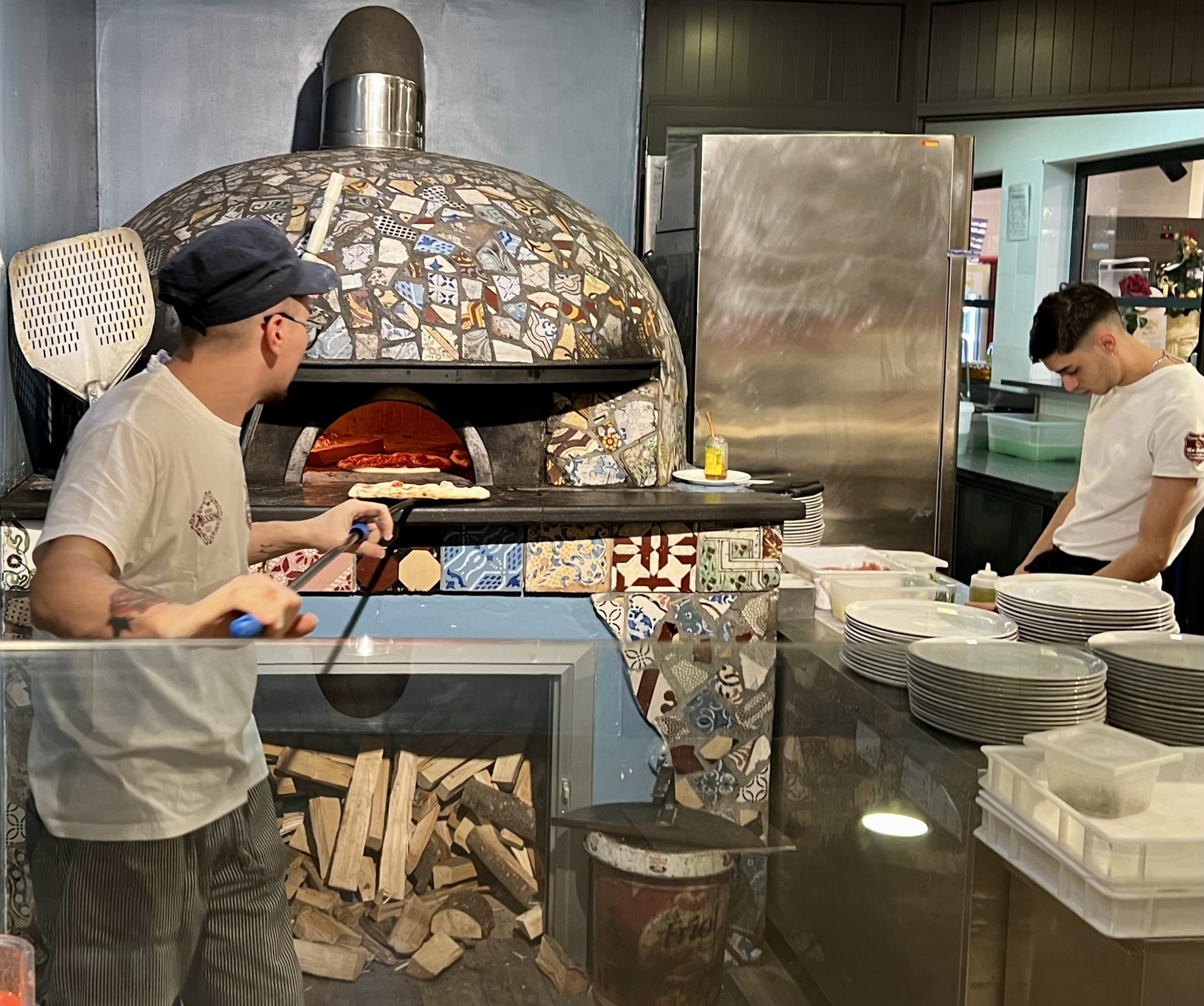
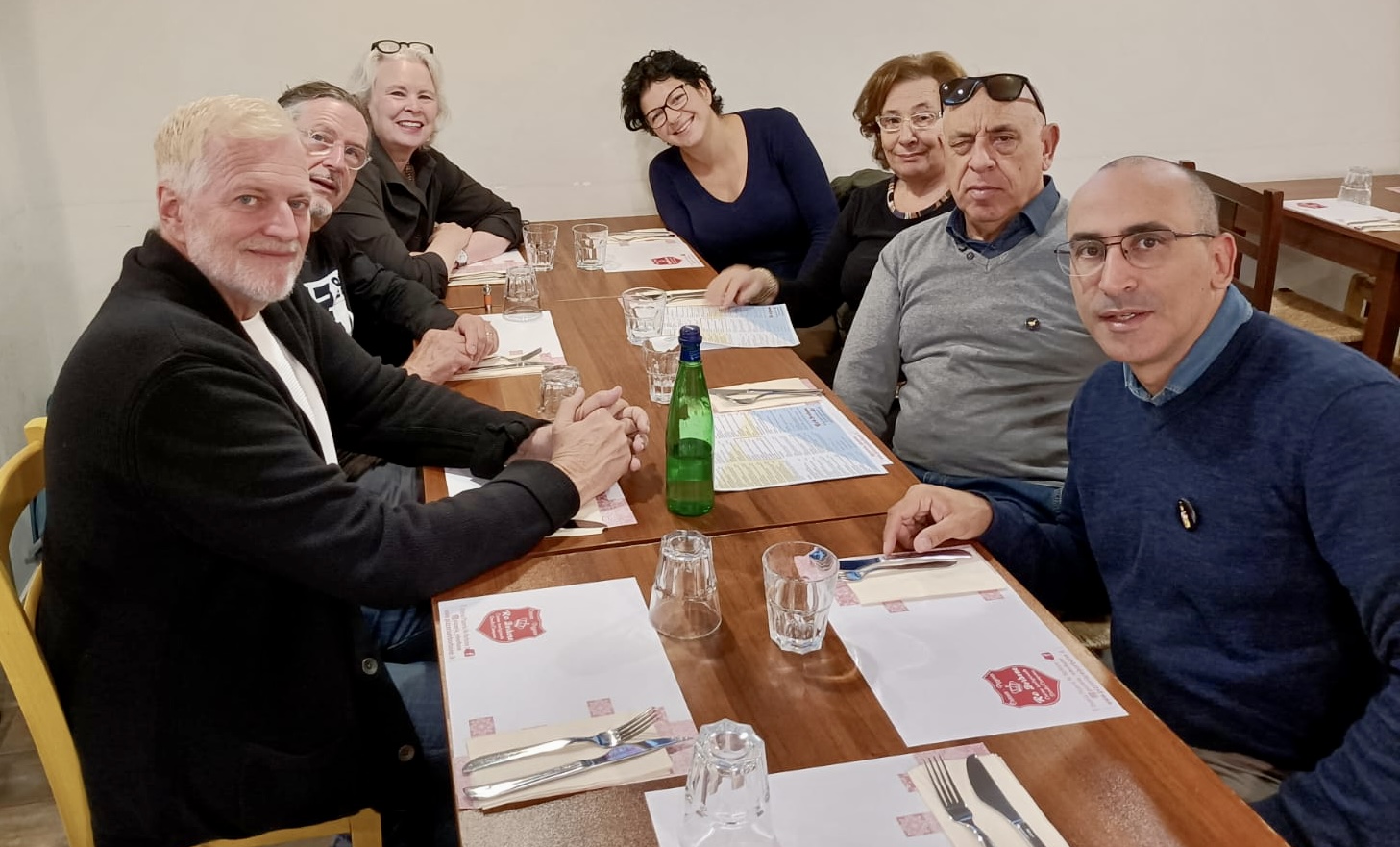

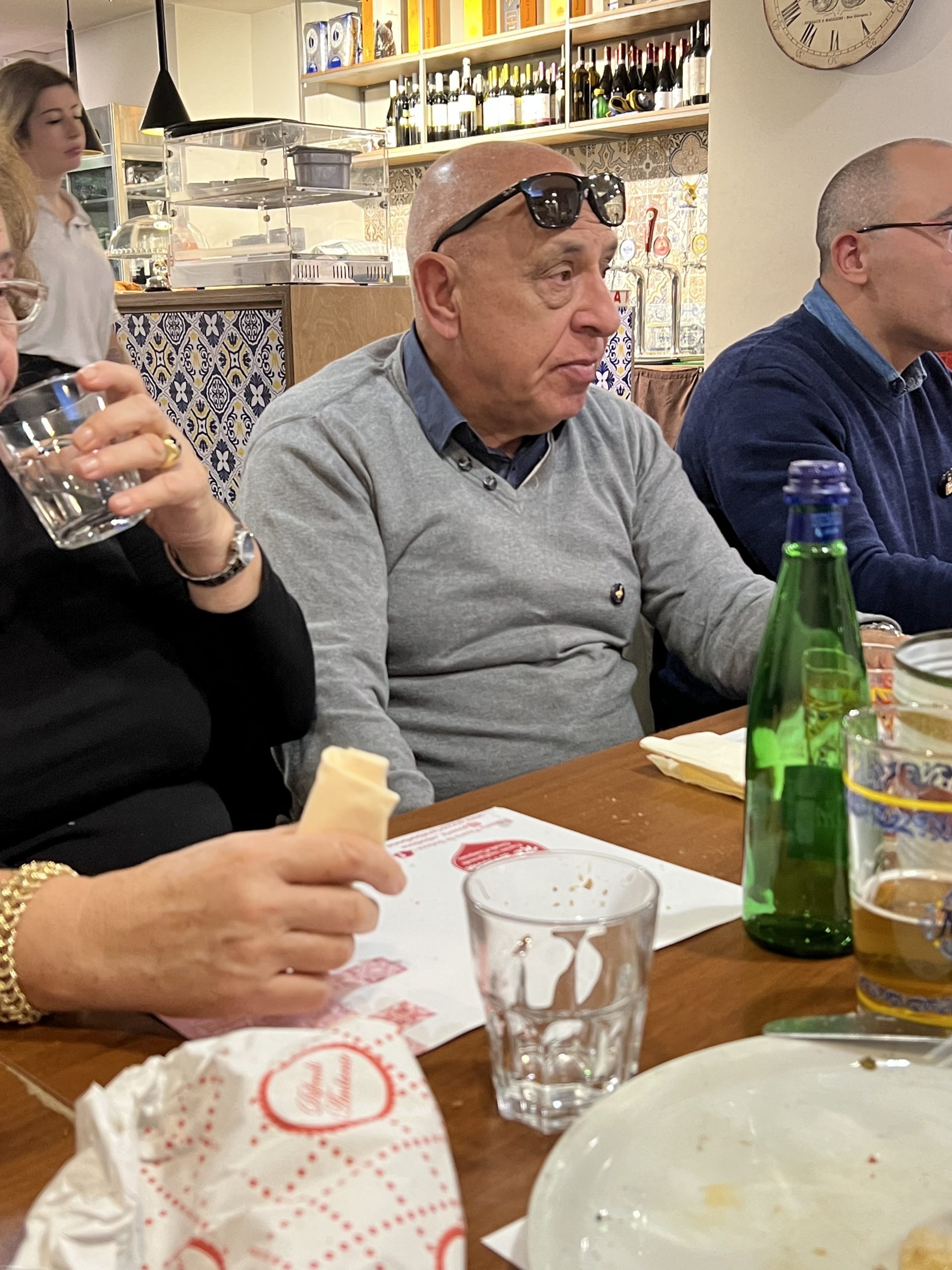
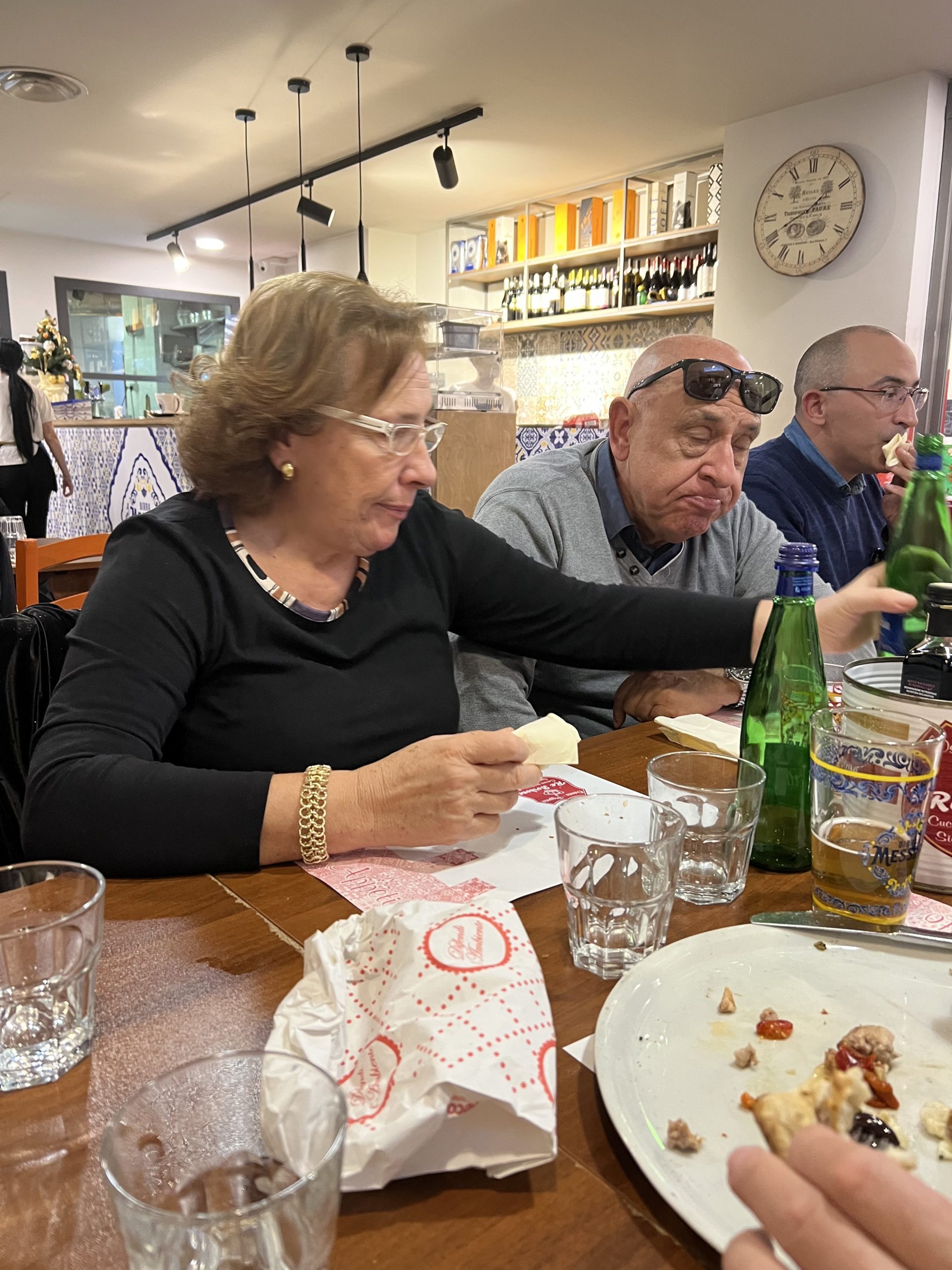
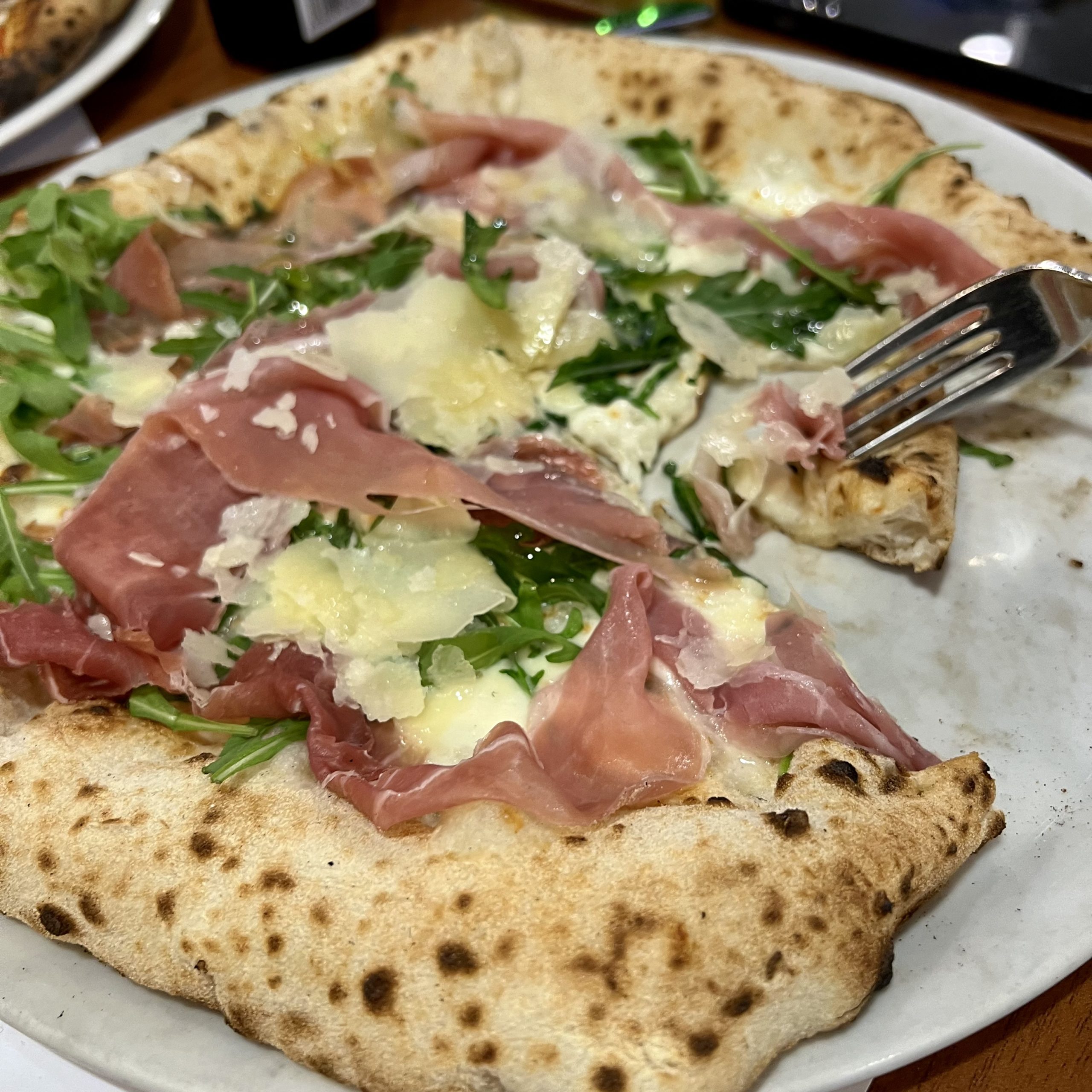
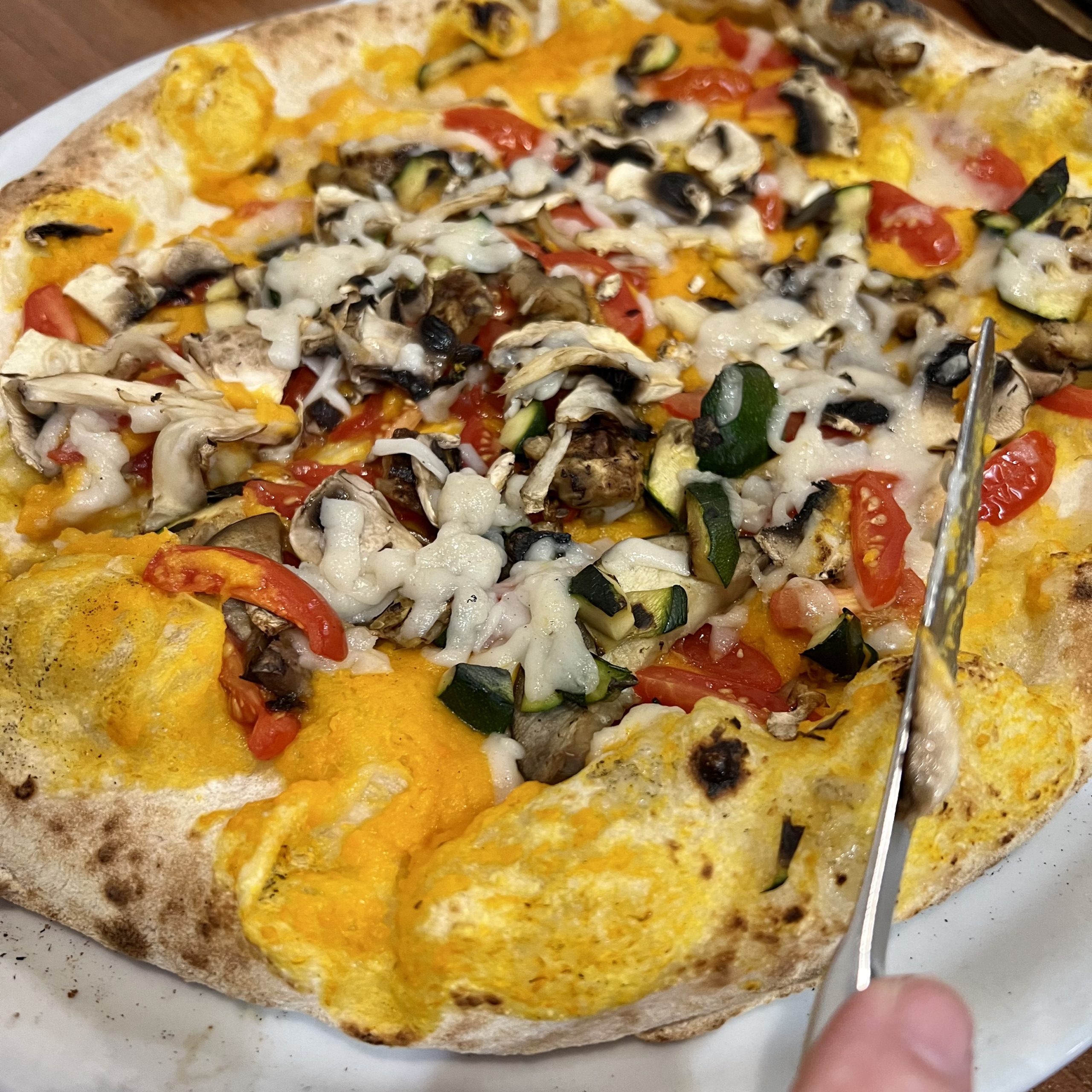
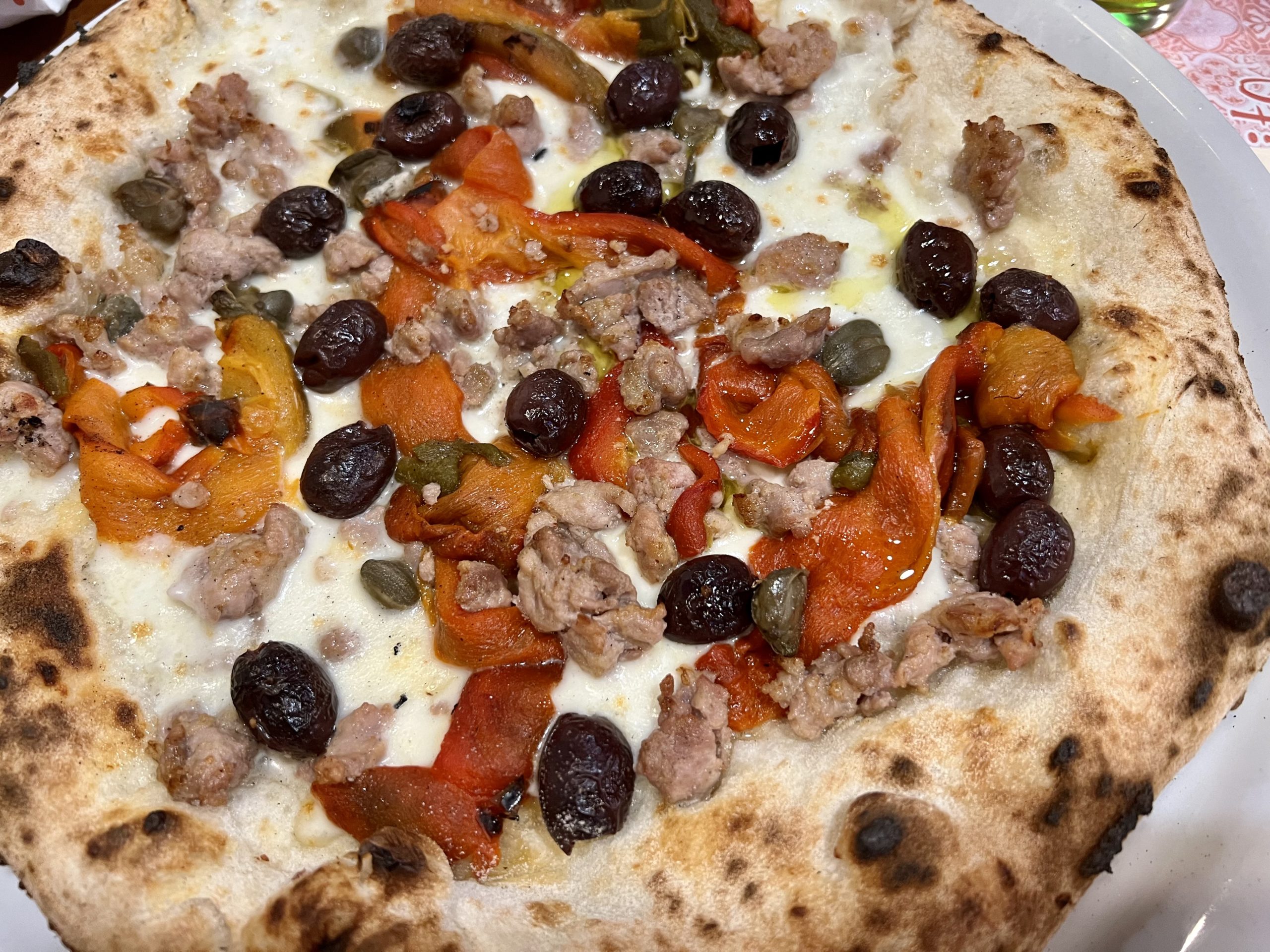
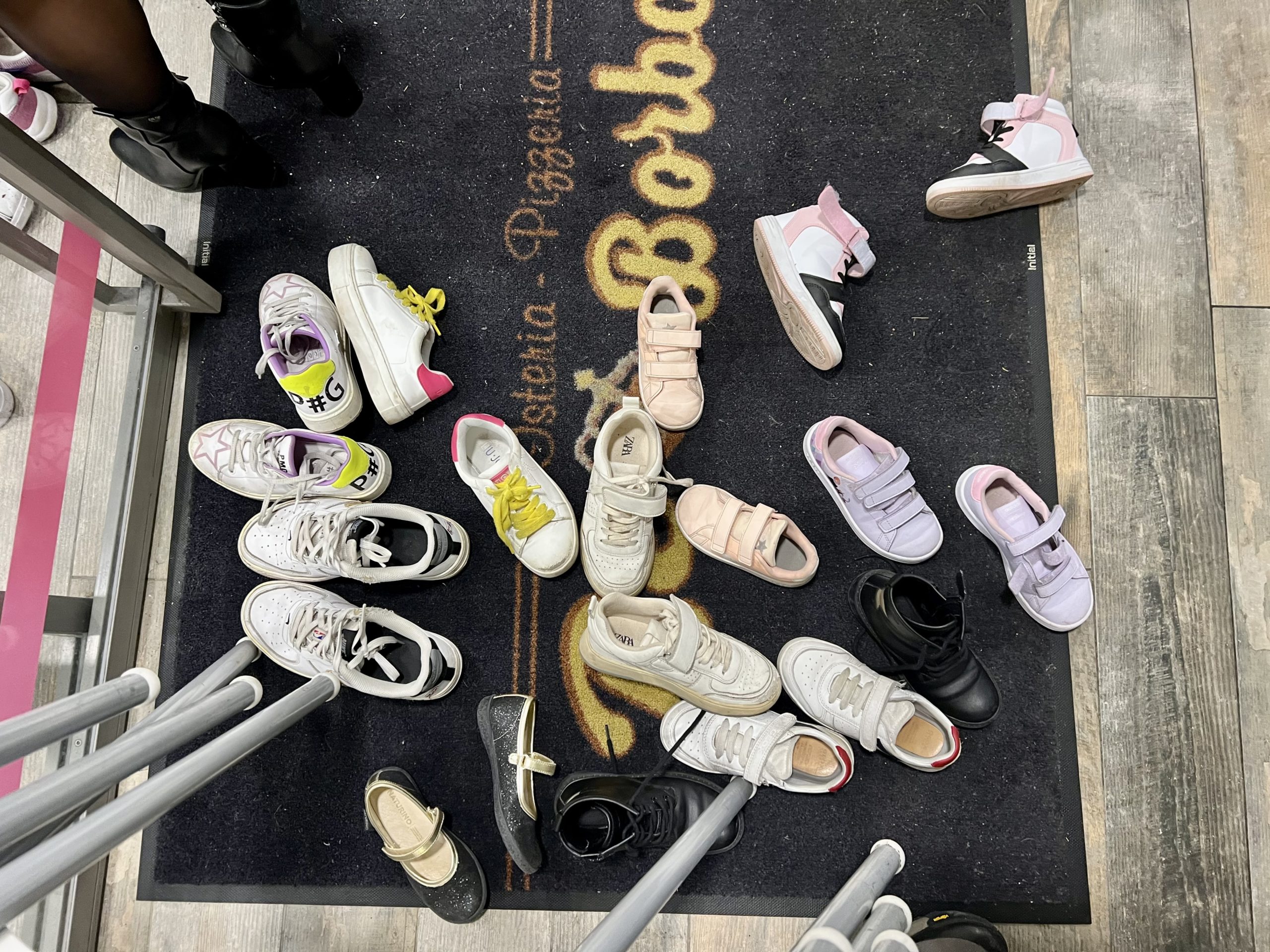




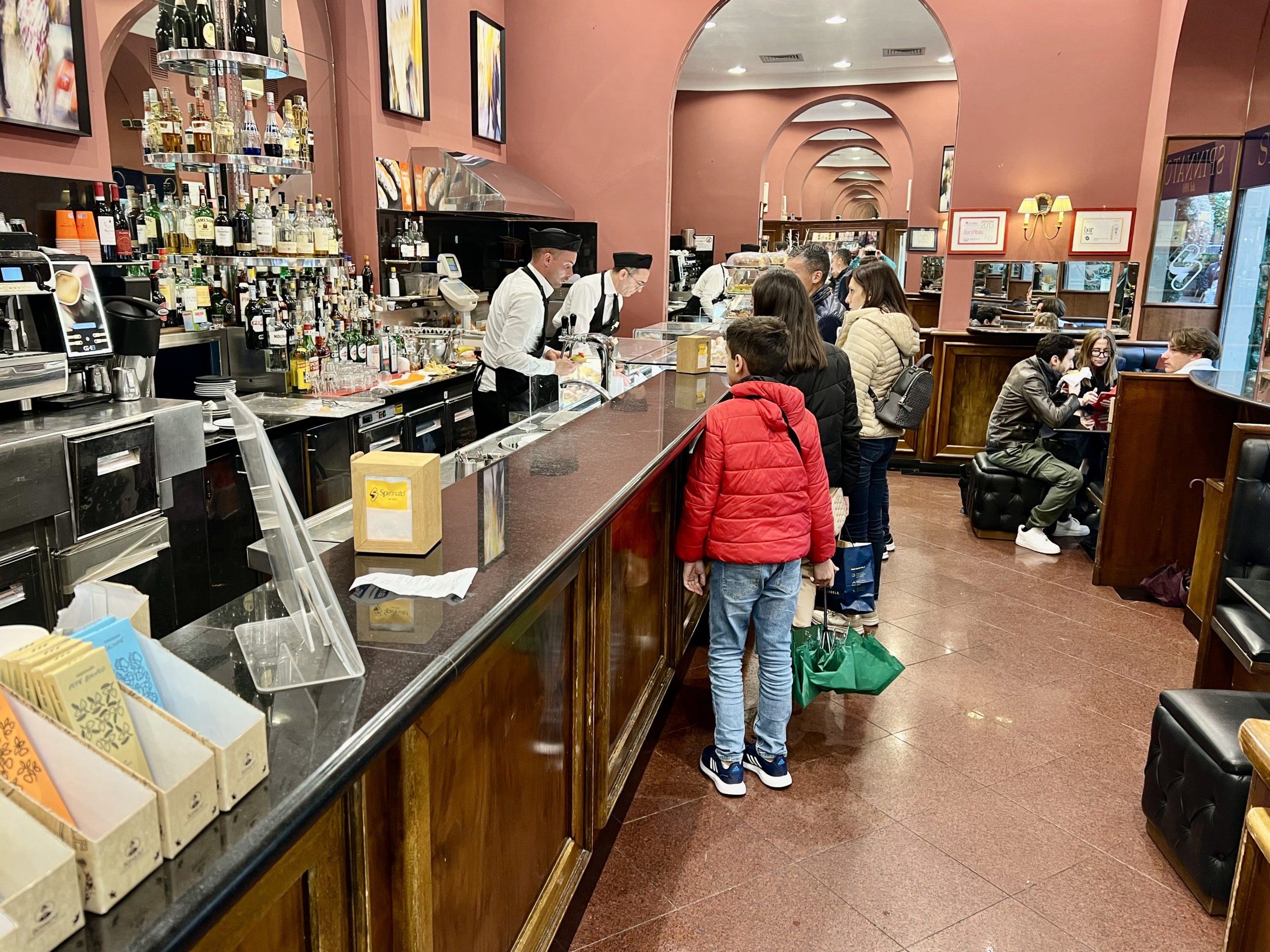
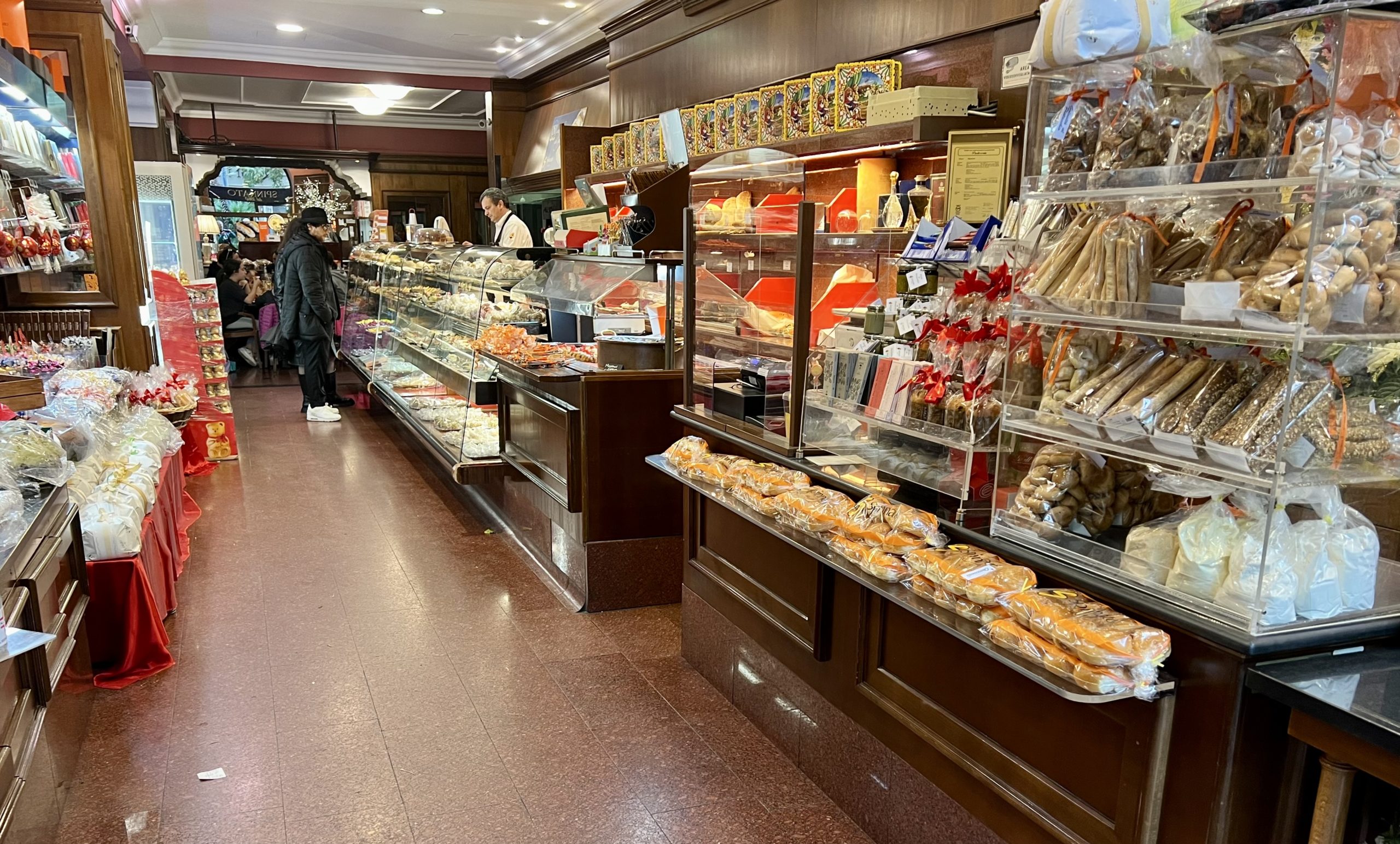
Palermo

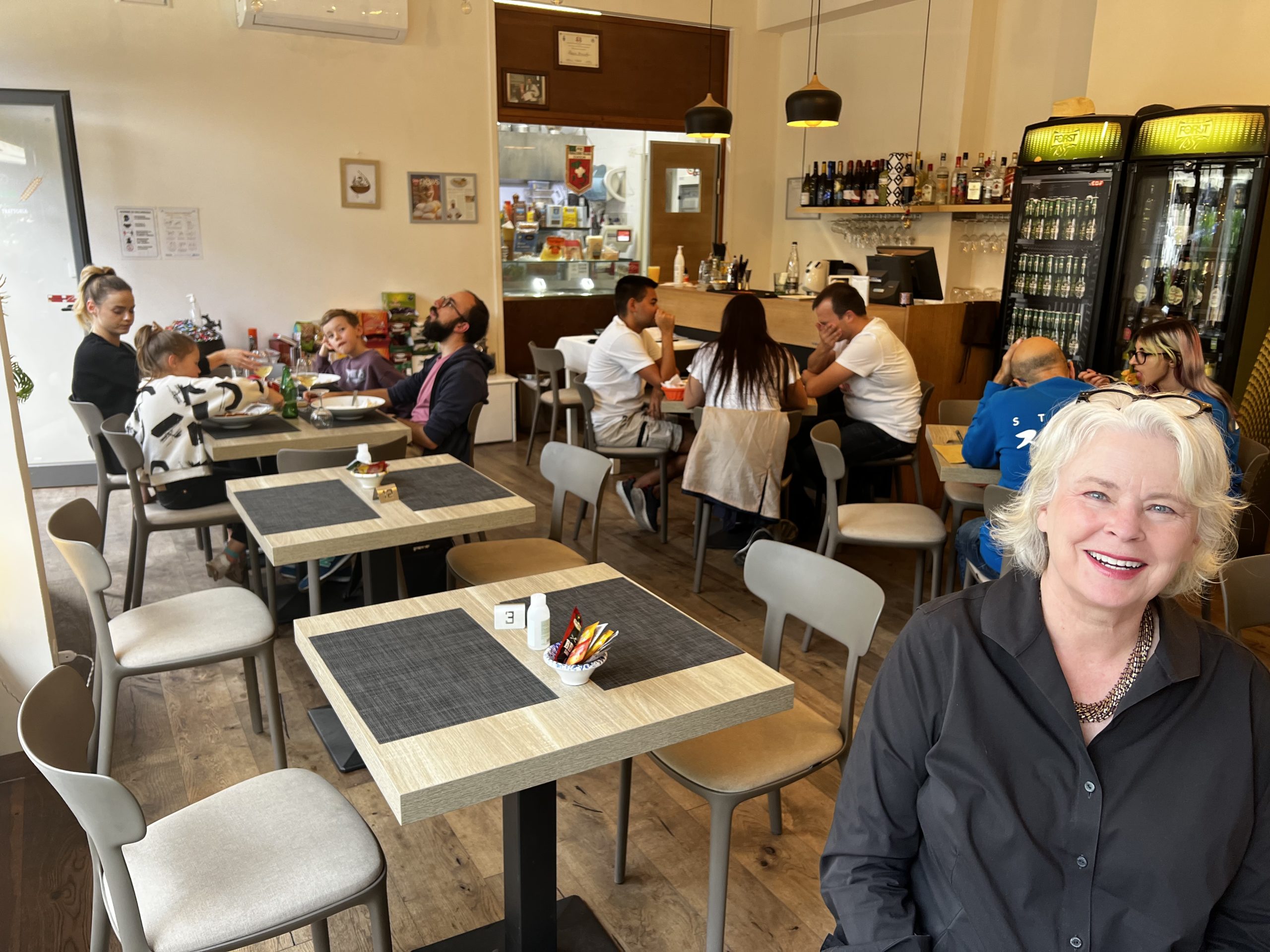





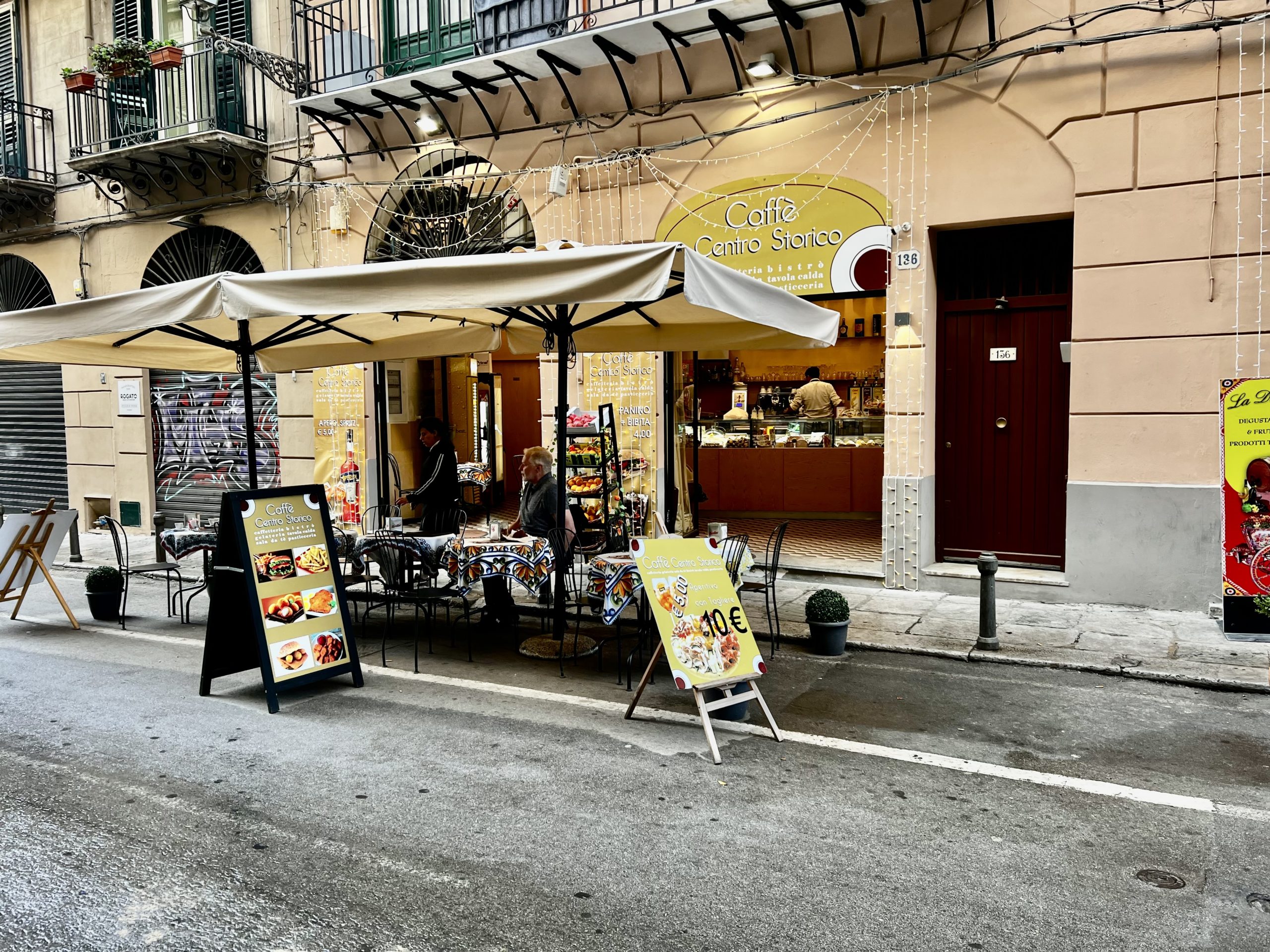
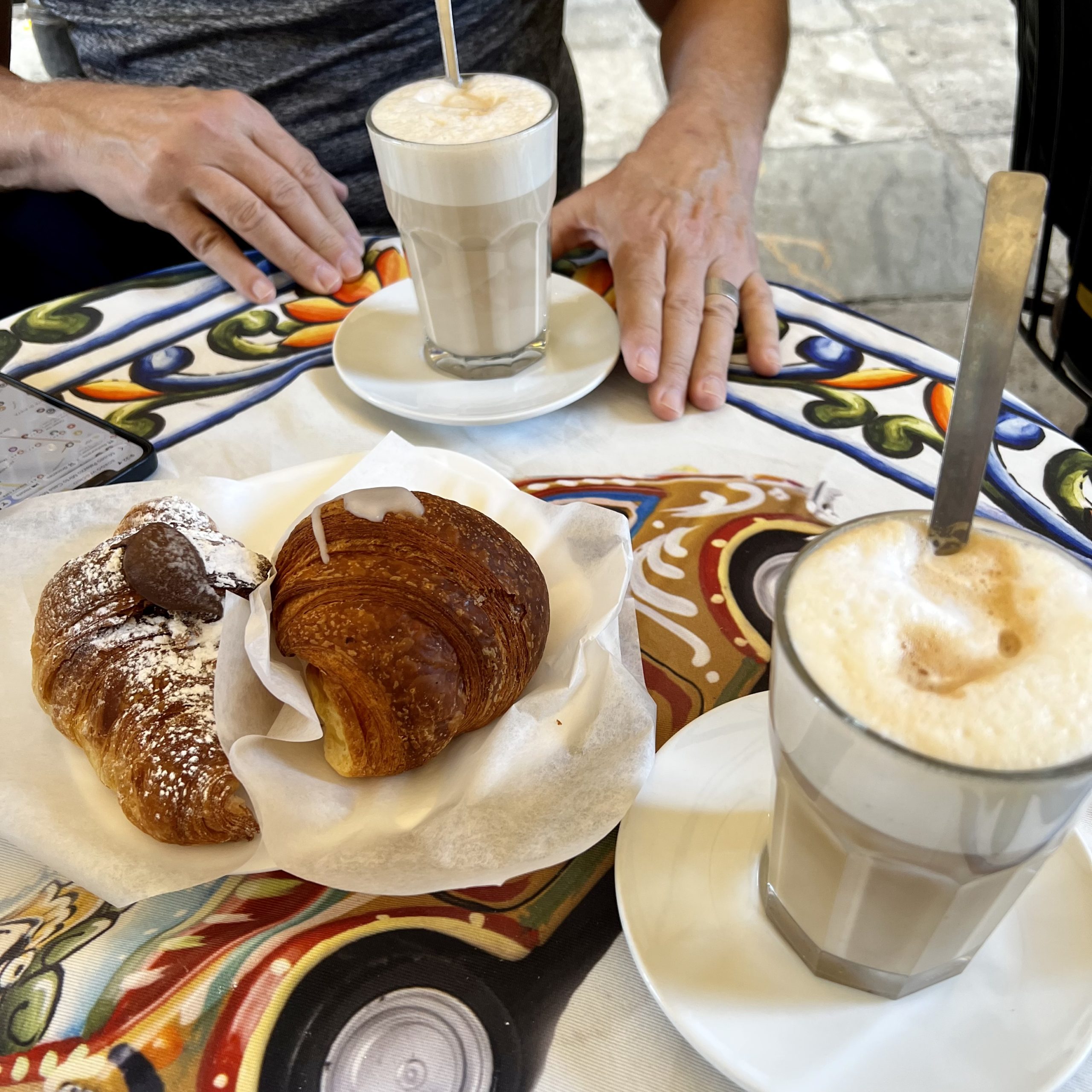

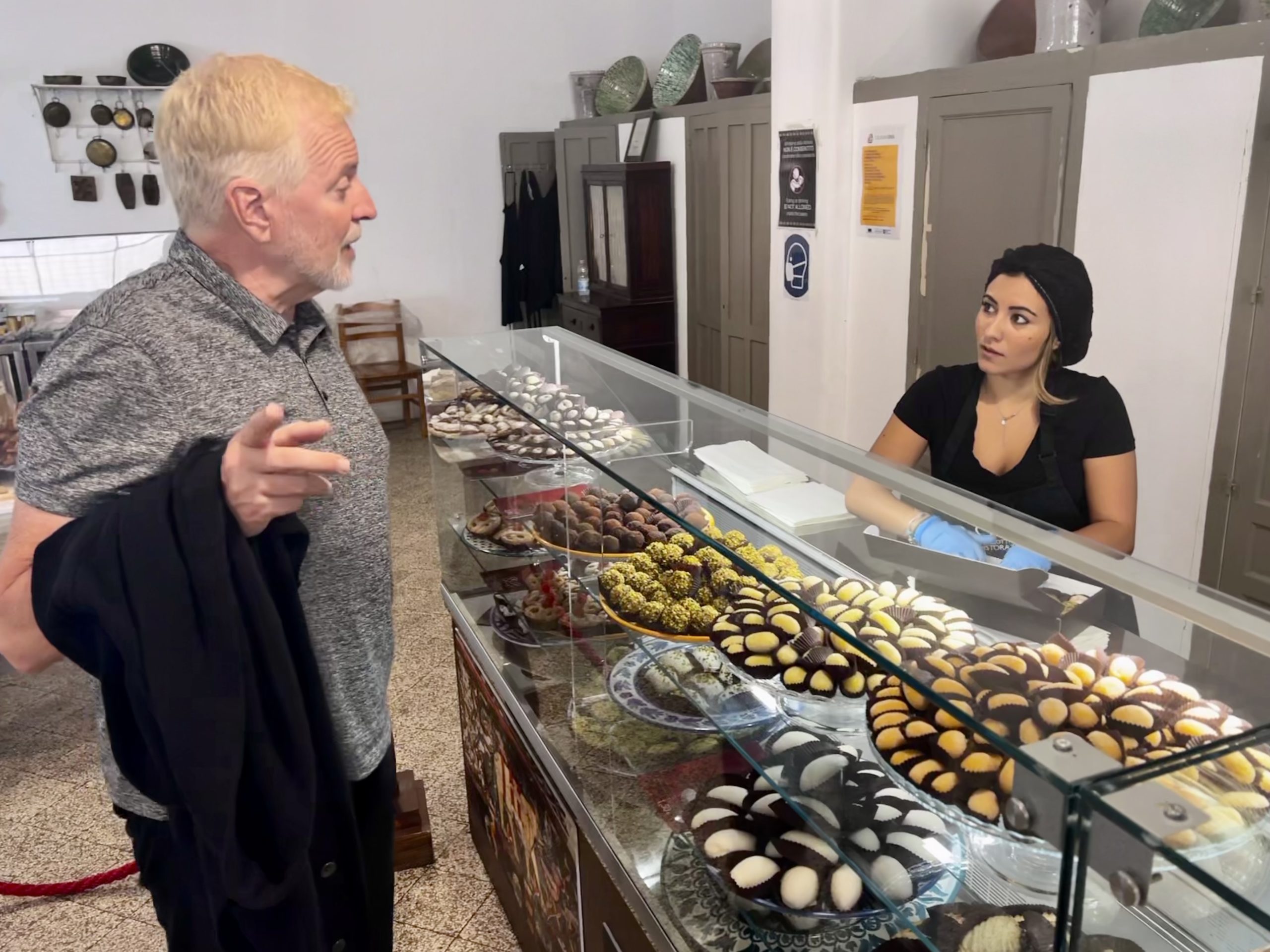
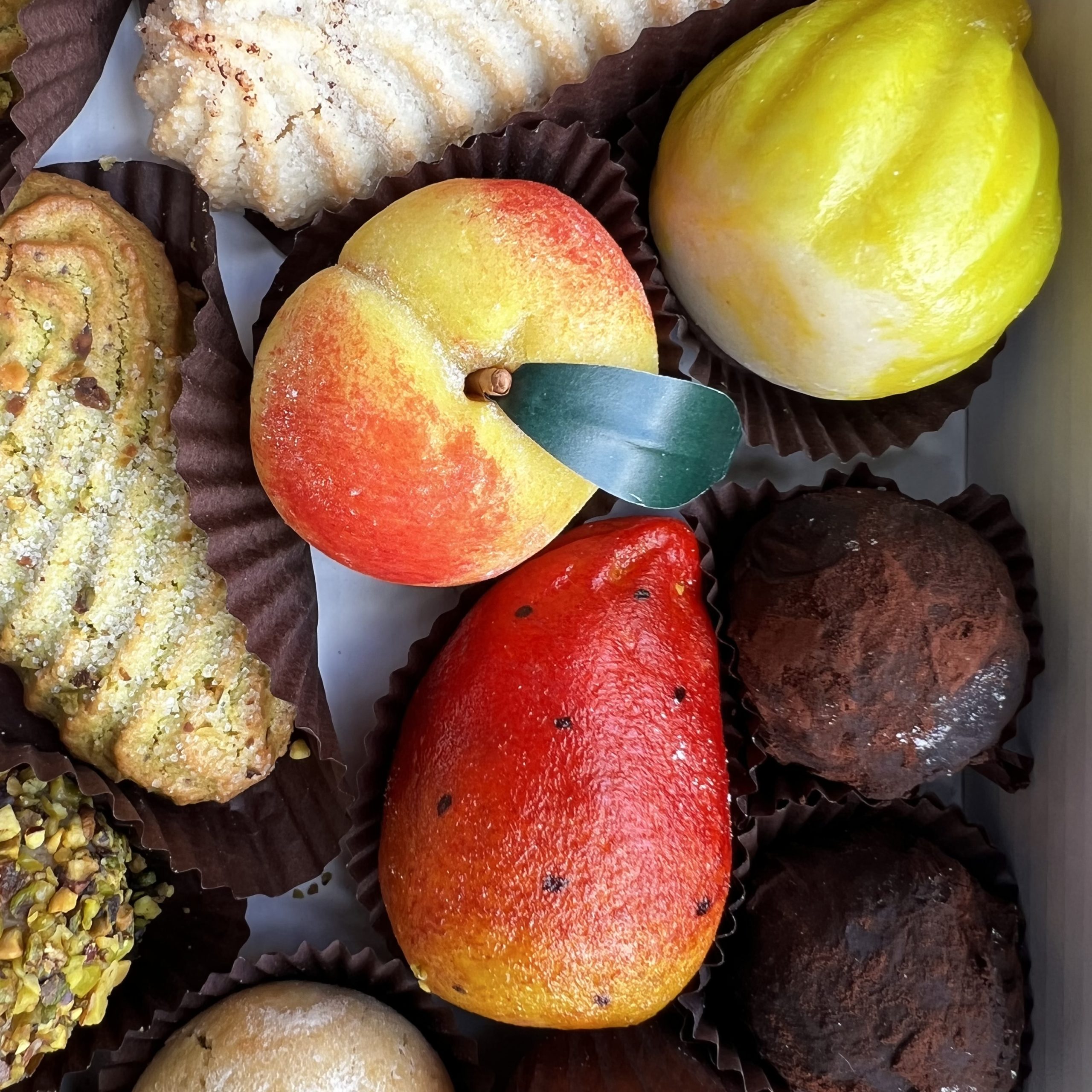
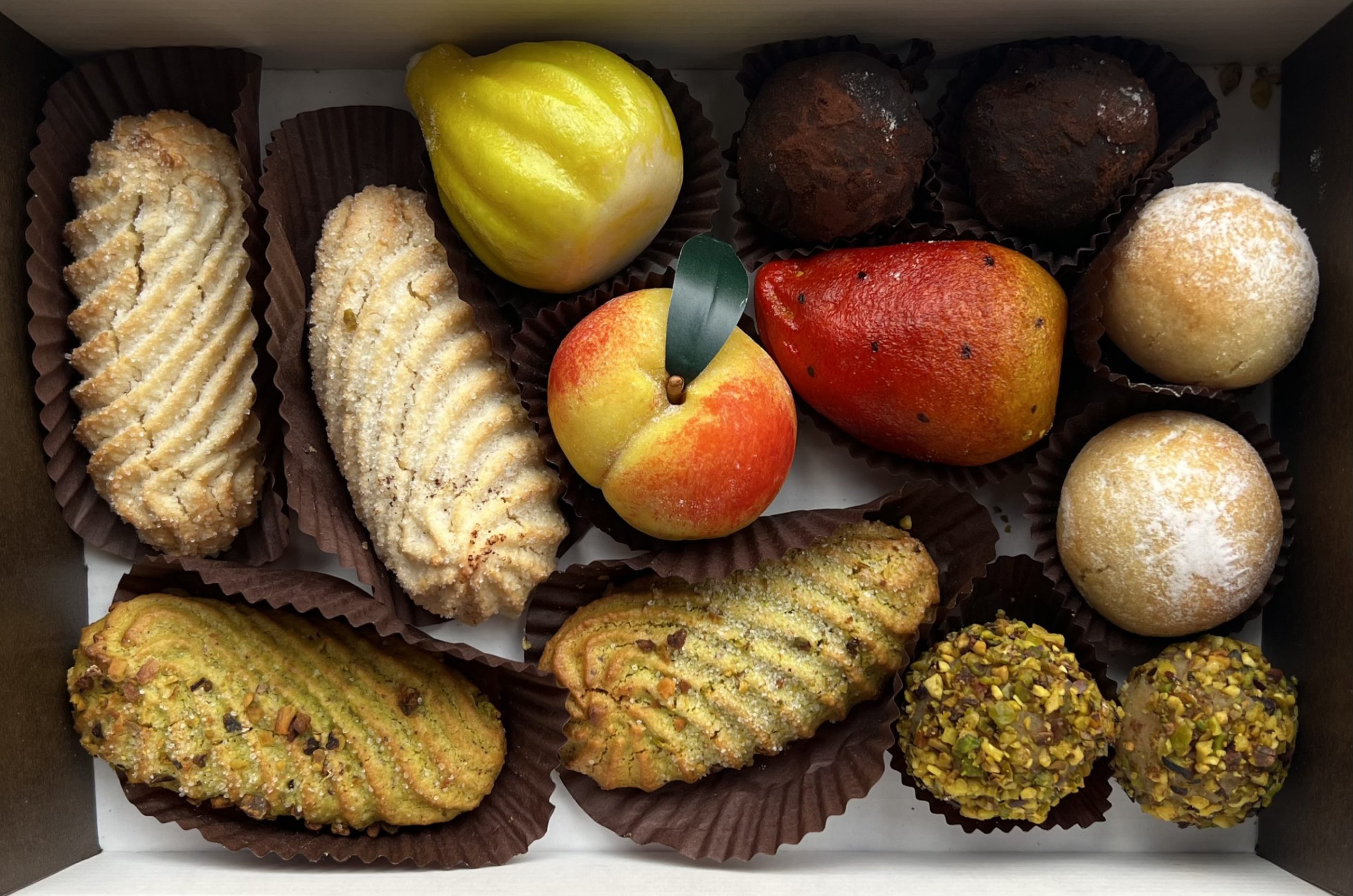




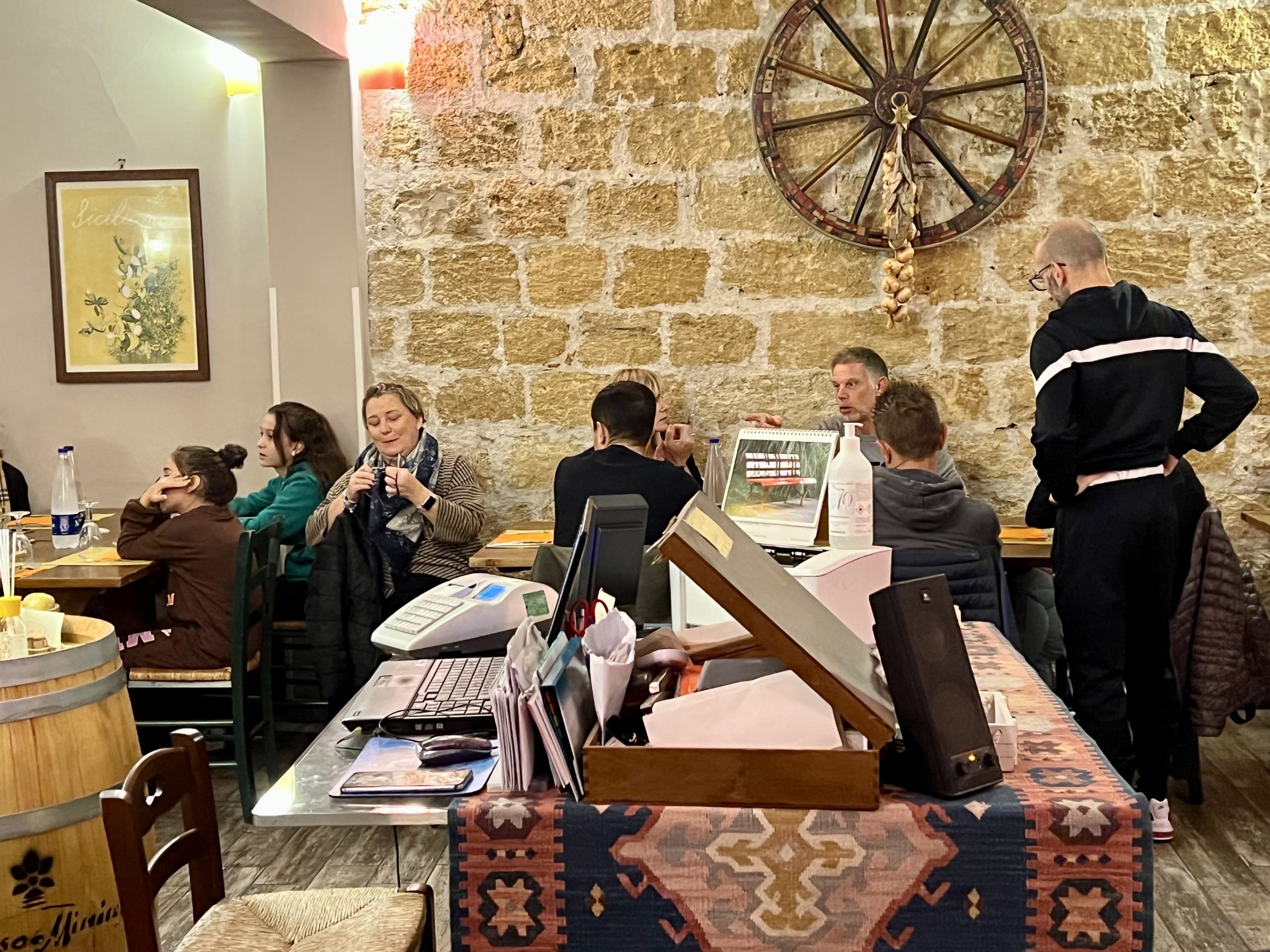
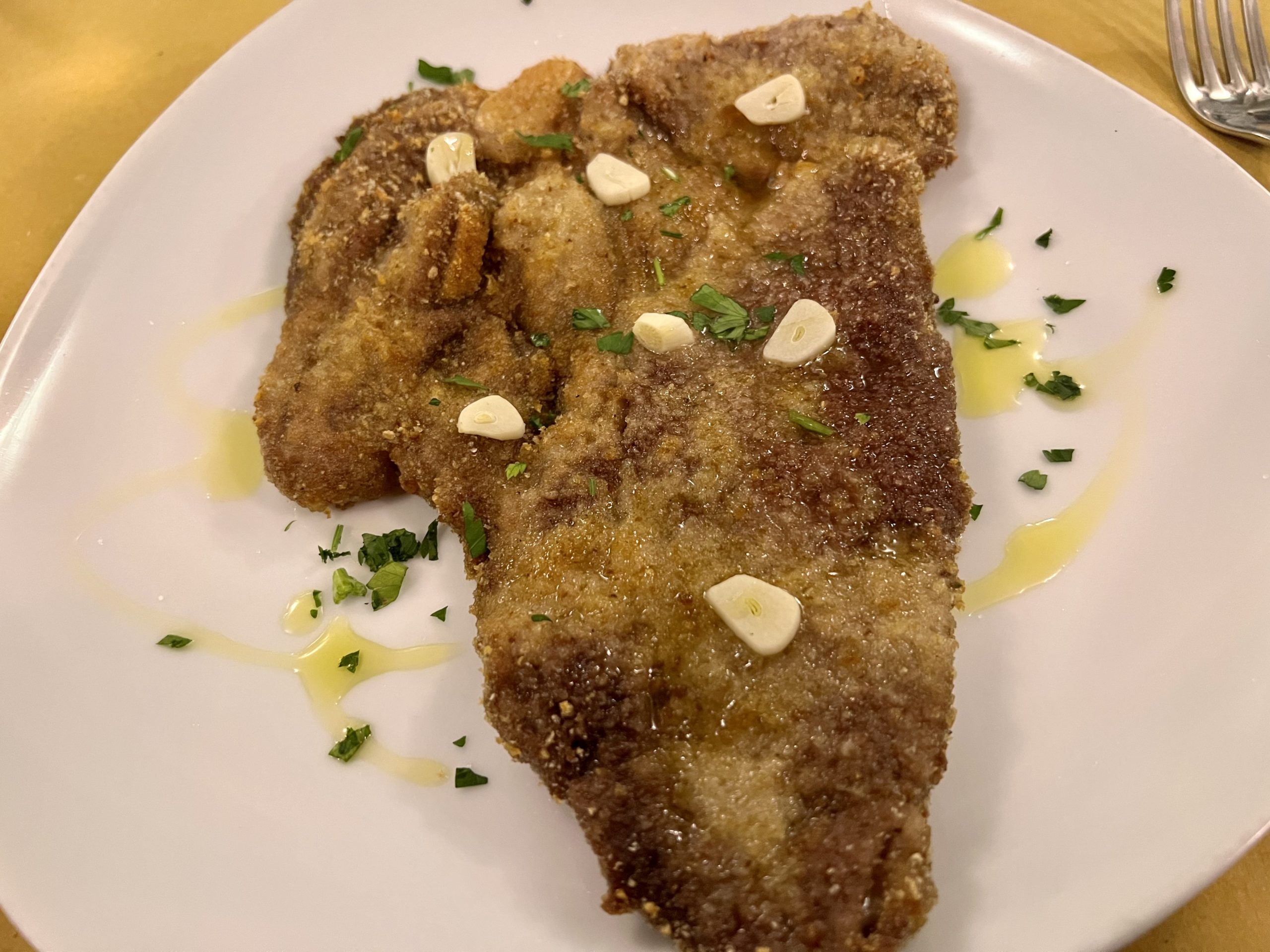
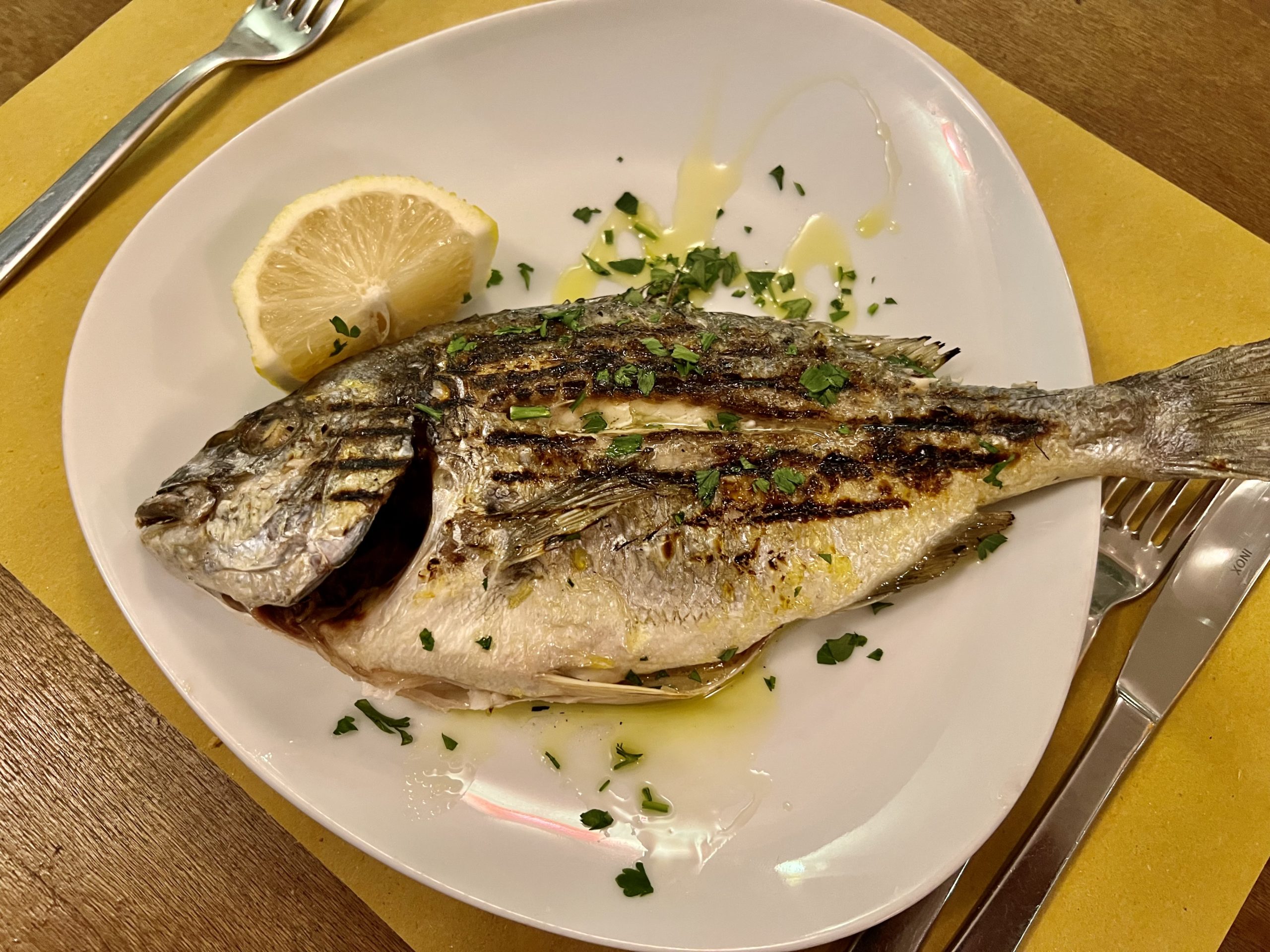
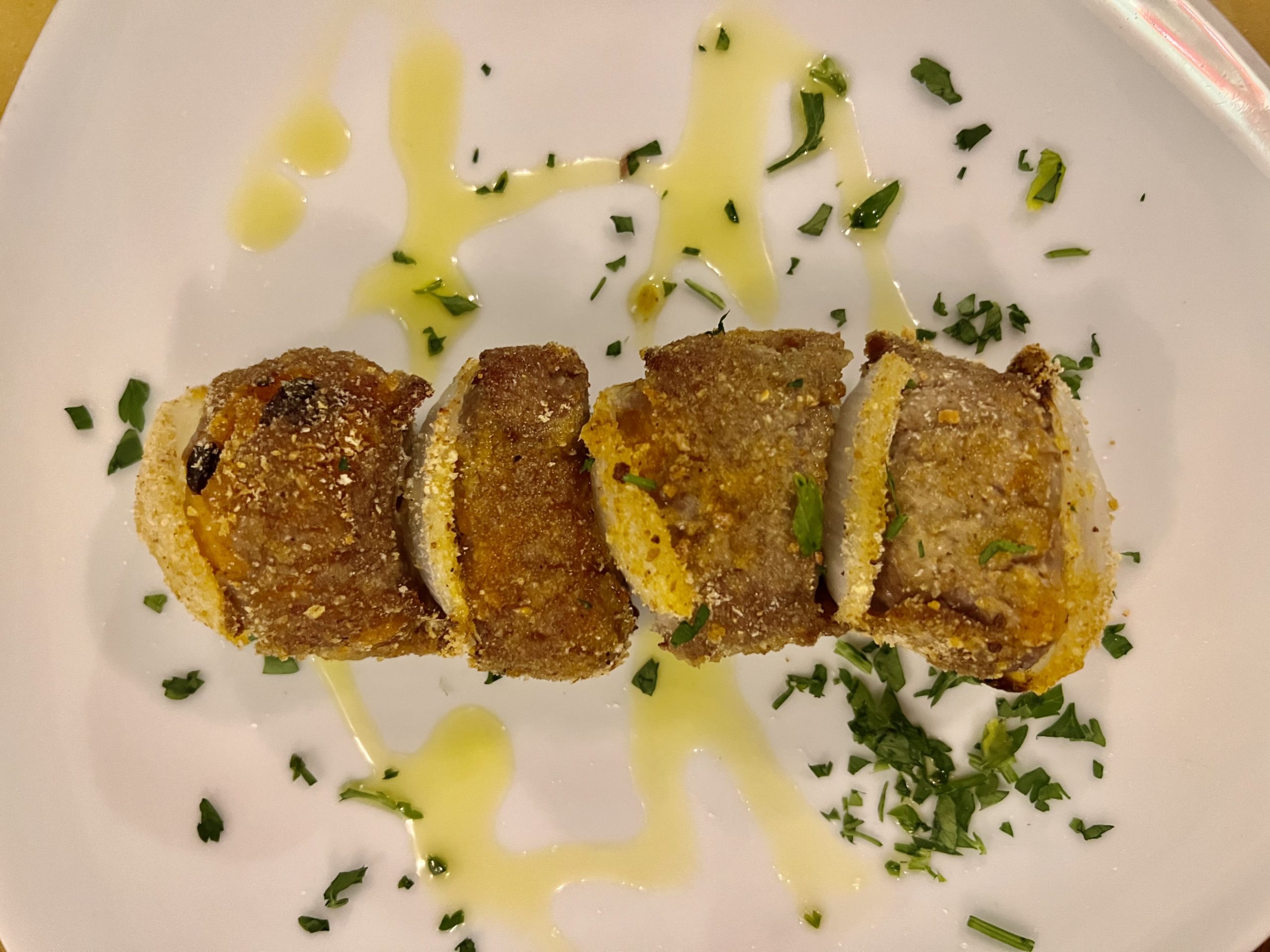

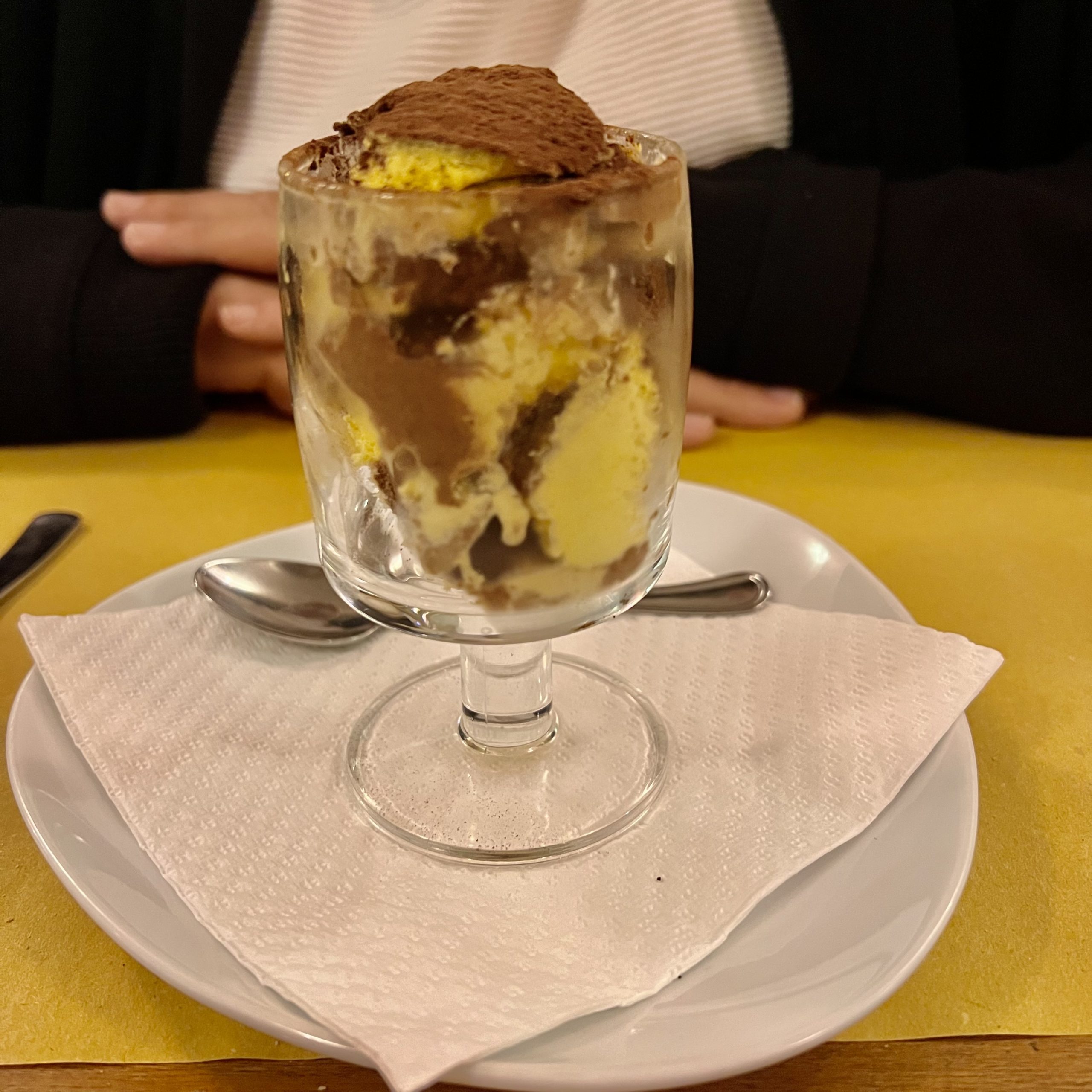
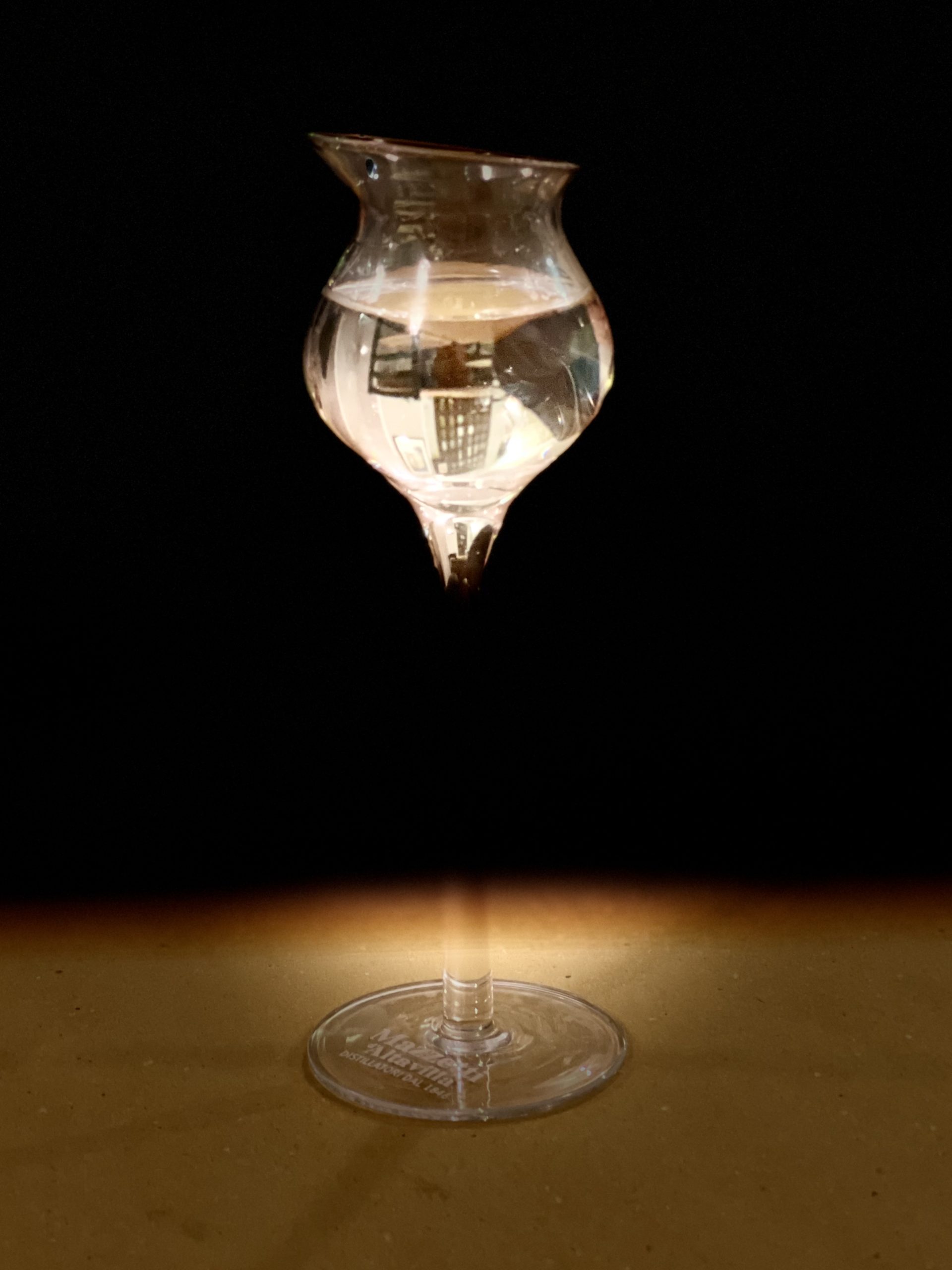
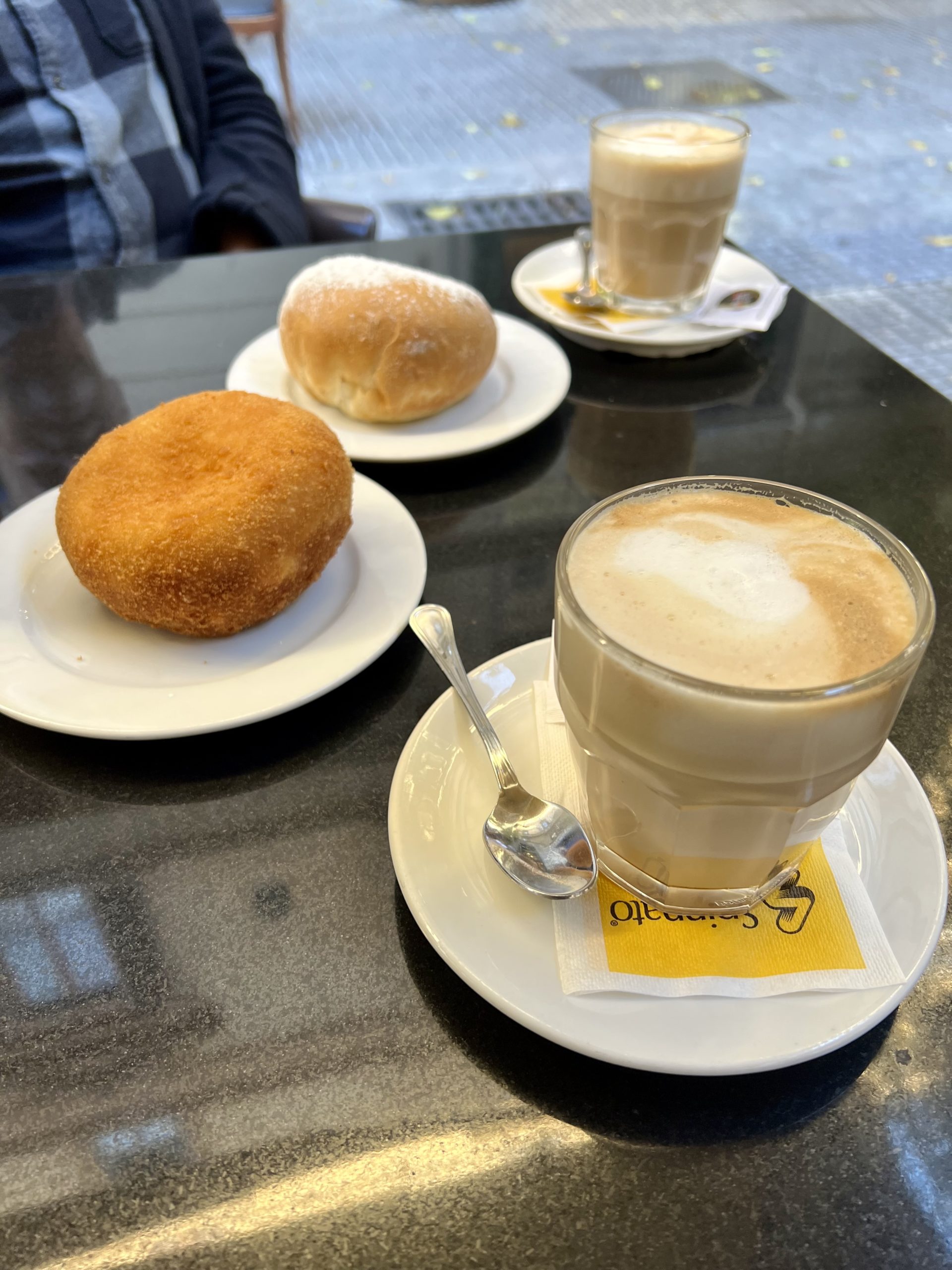

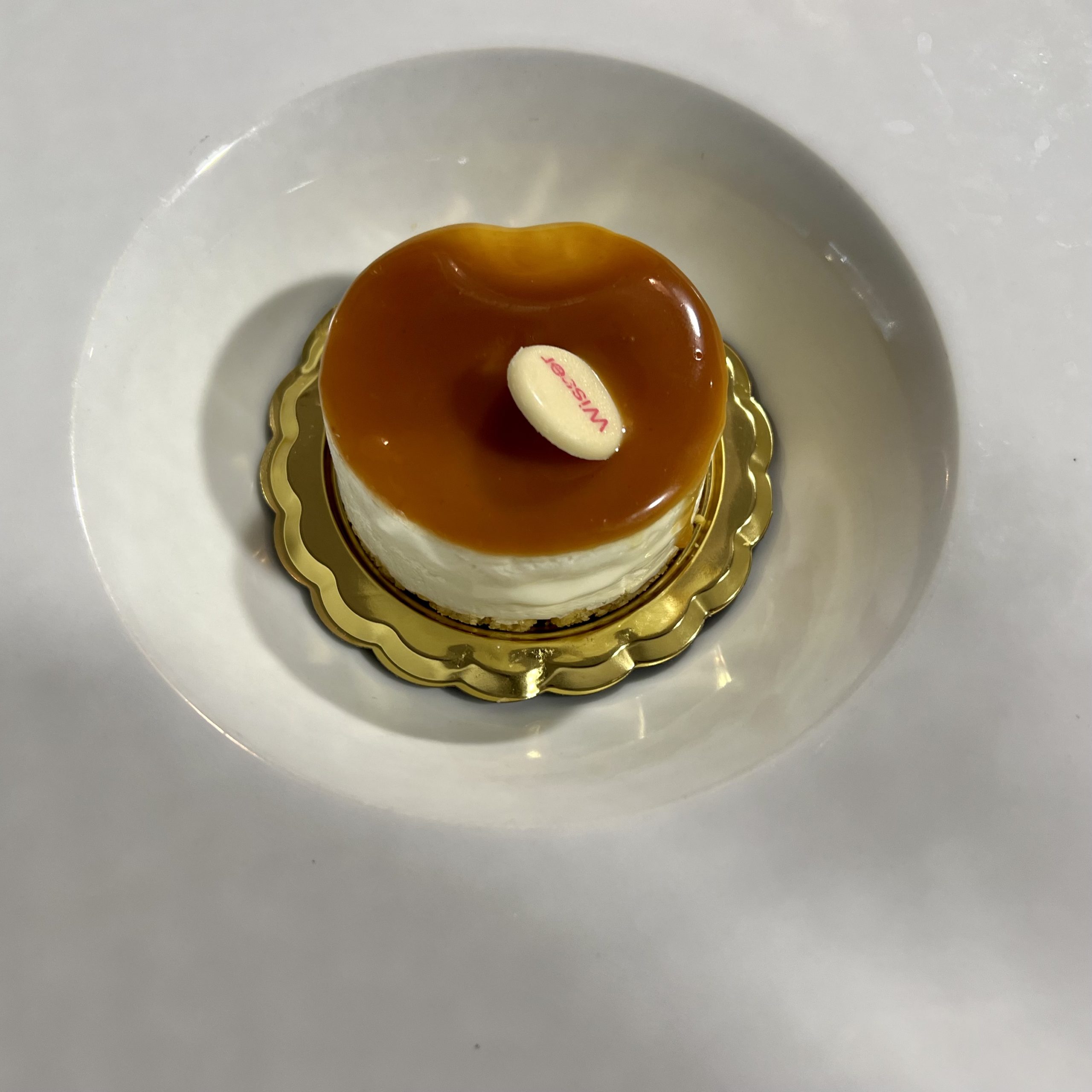

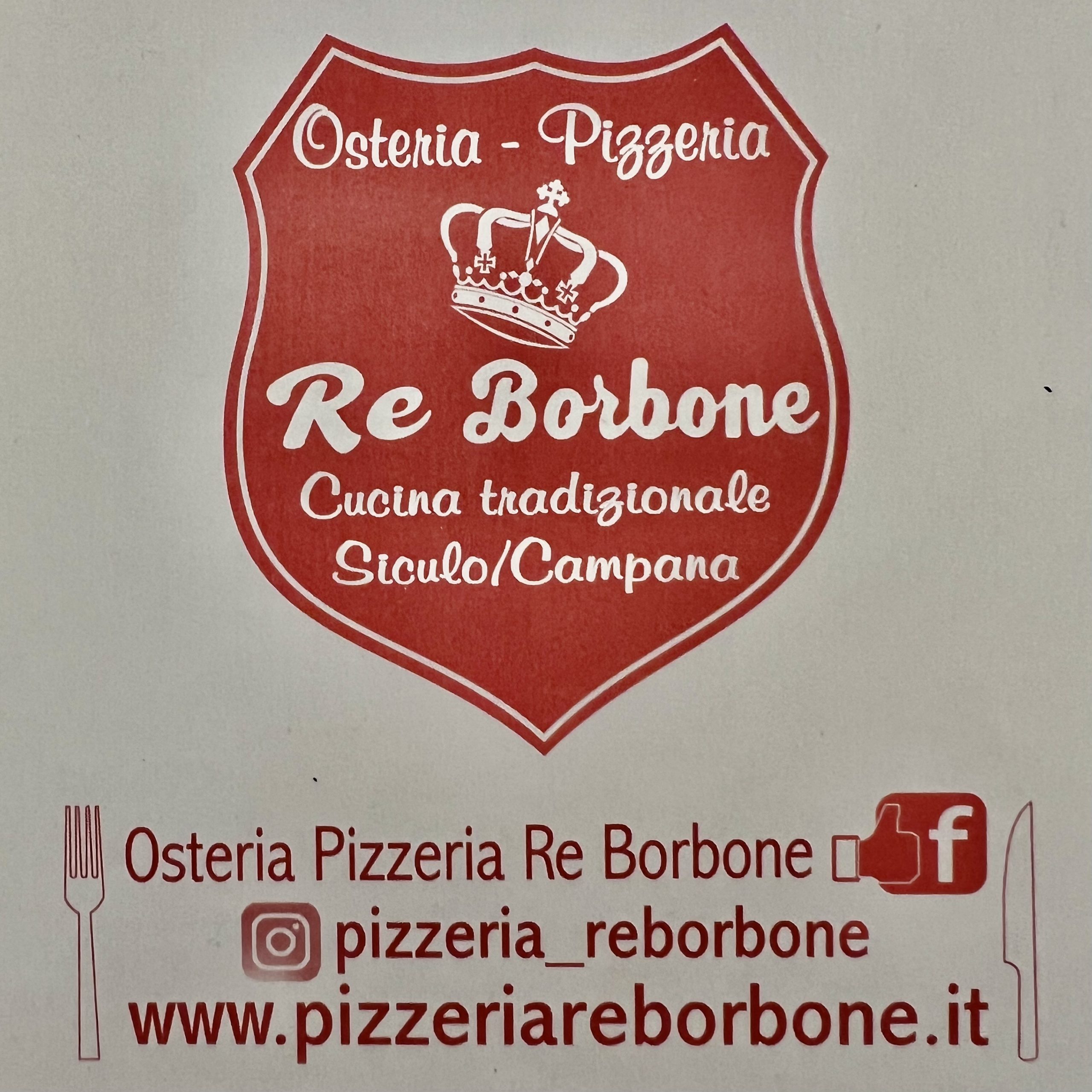
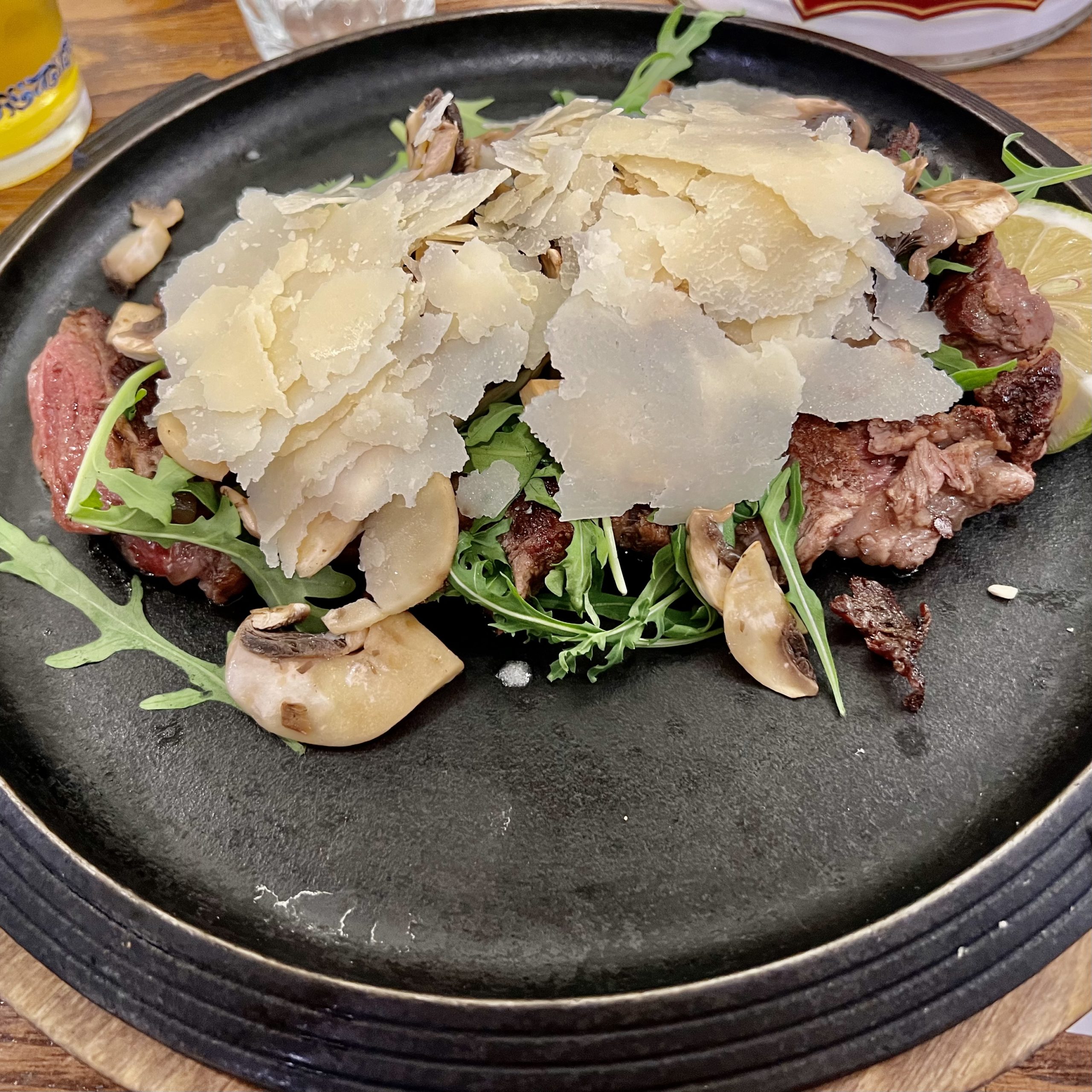
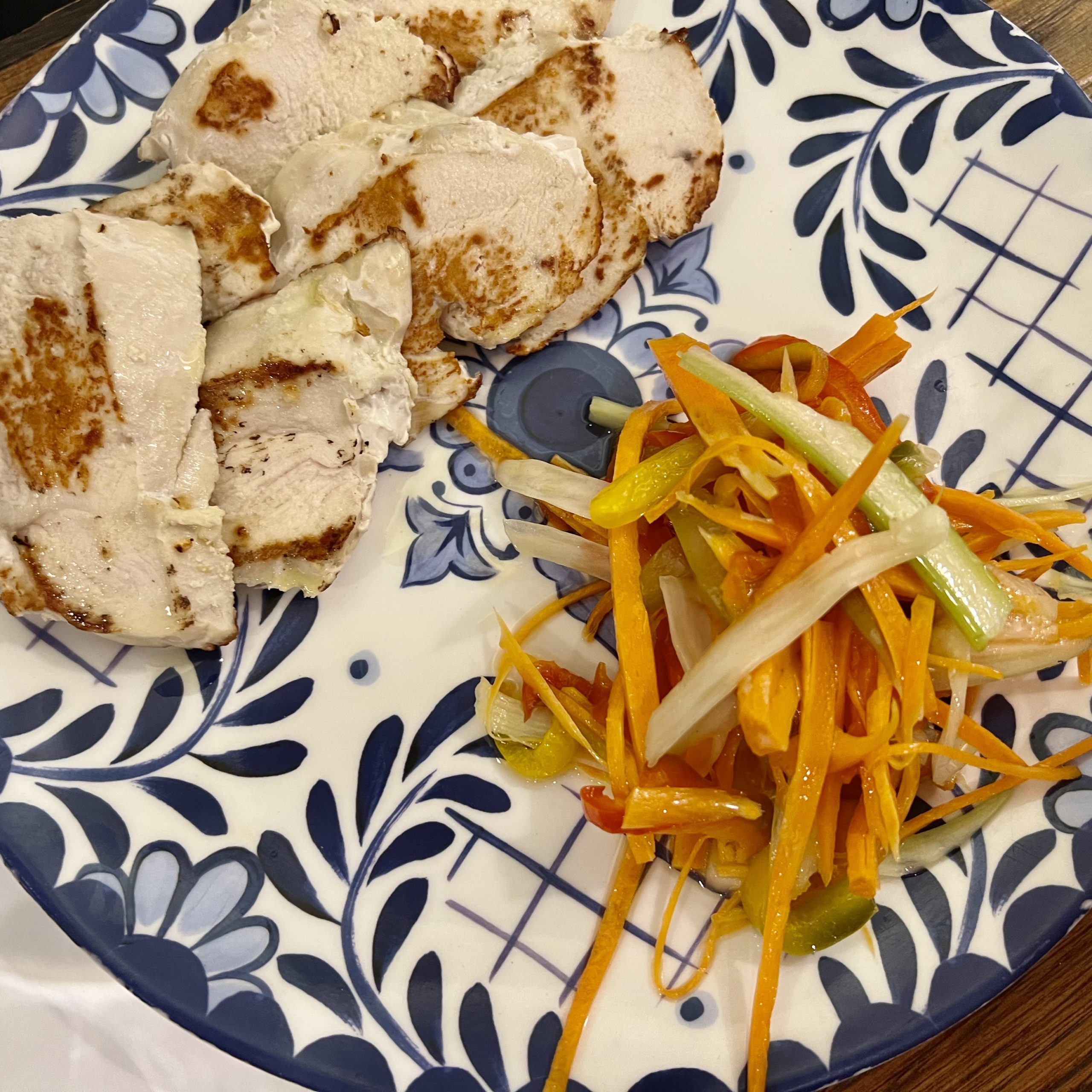




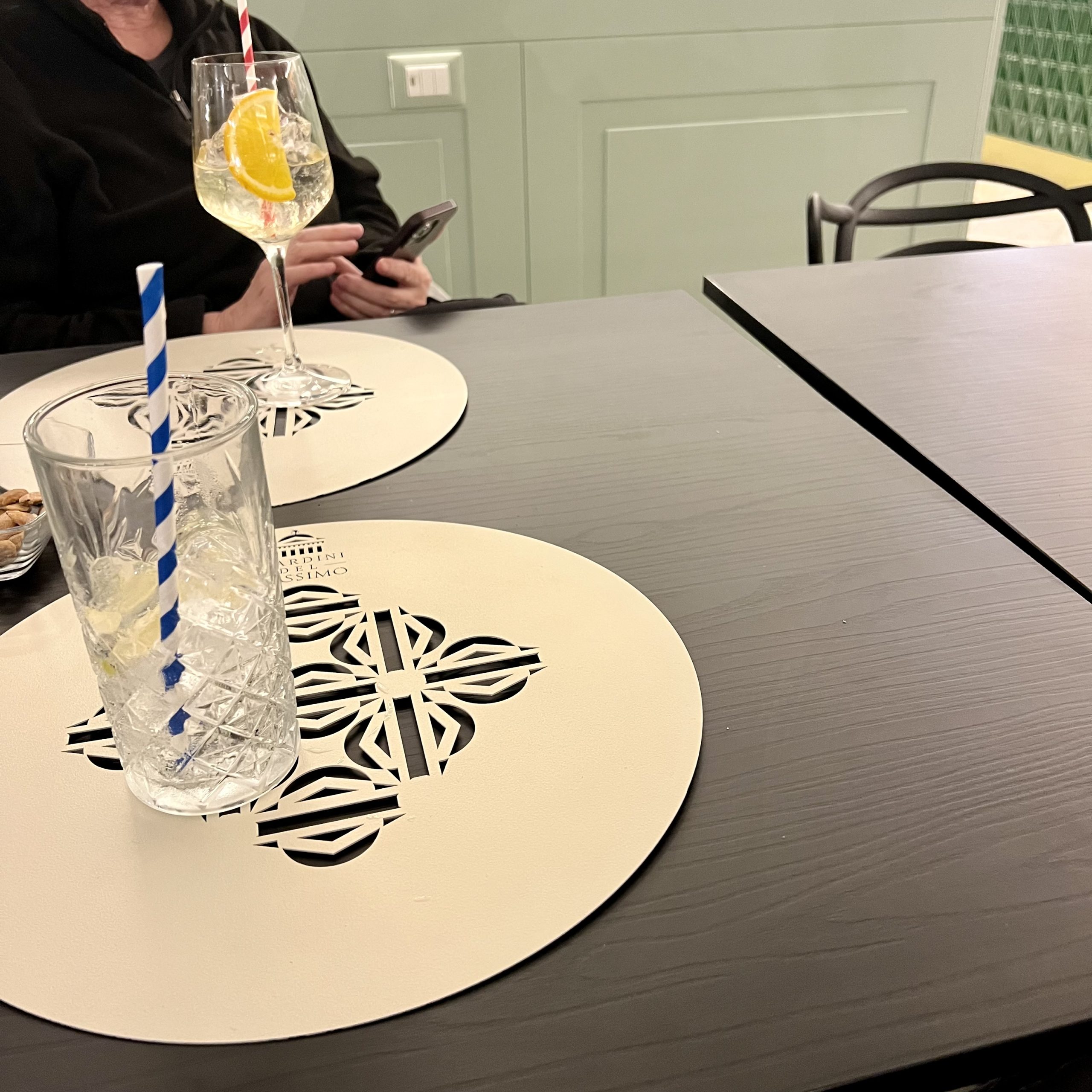


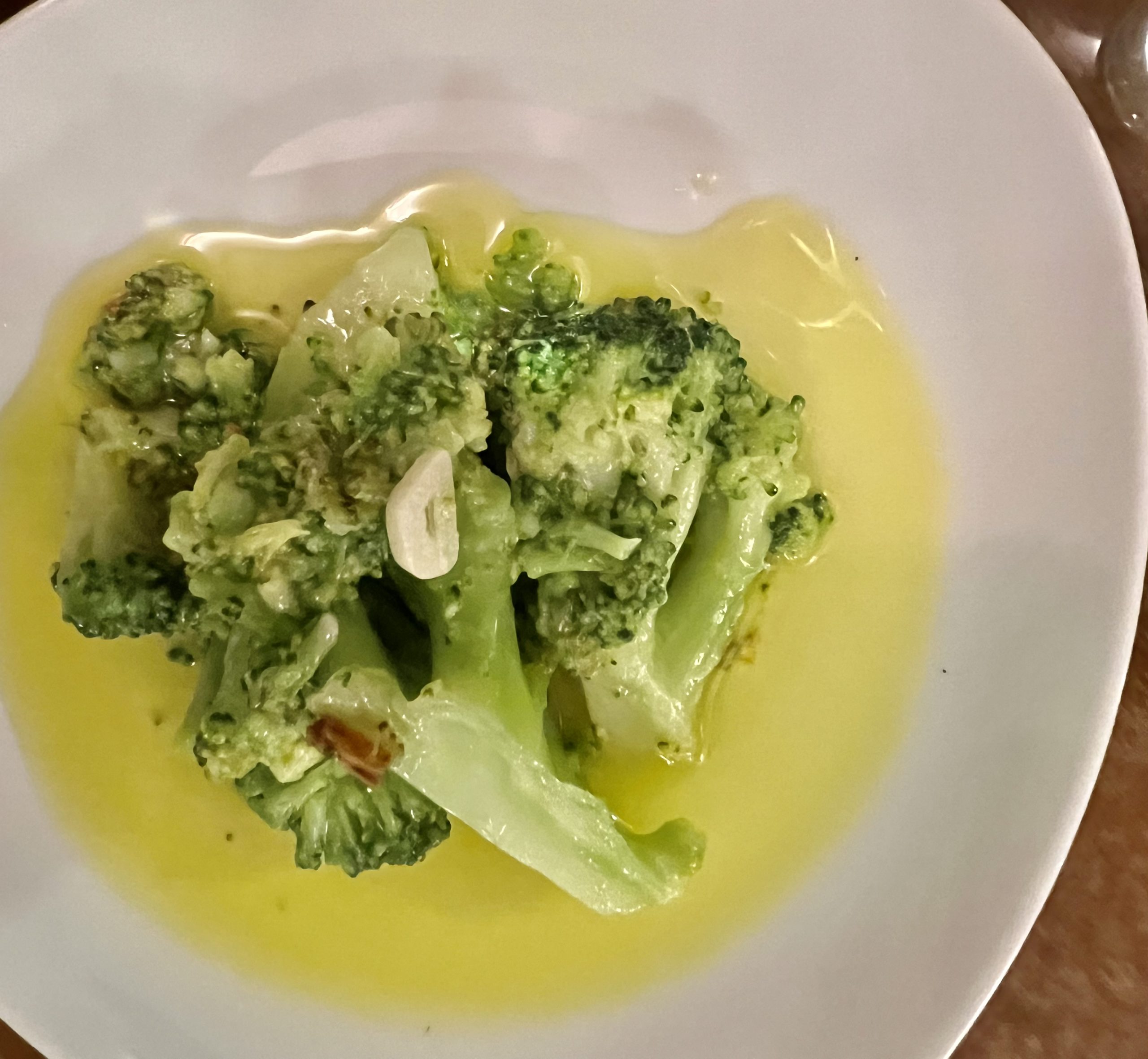

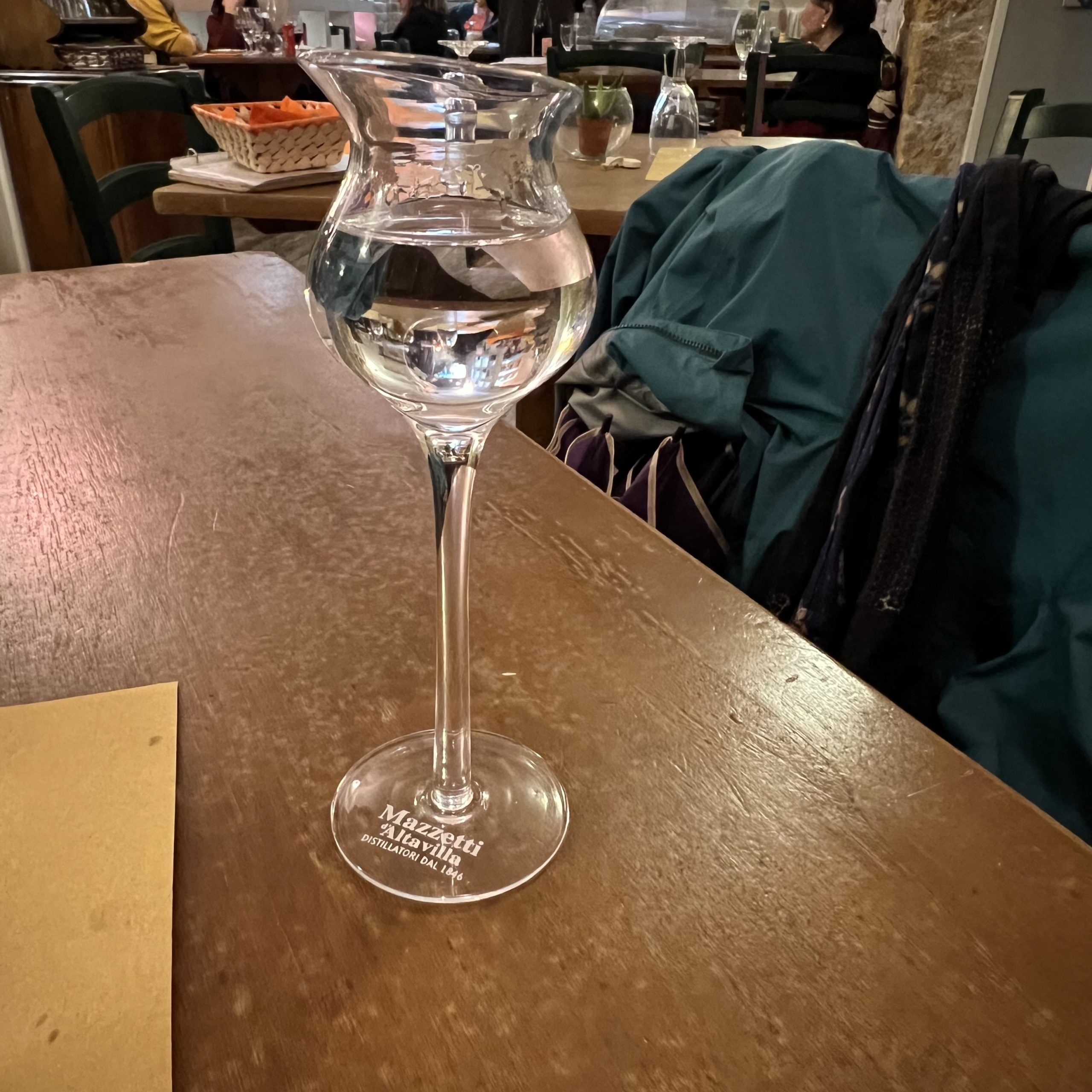
Marsala
Laura suggested that we order couscous with fish in Marsala. The North African influence here. We did.
